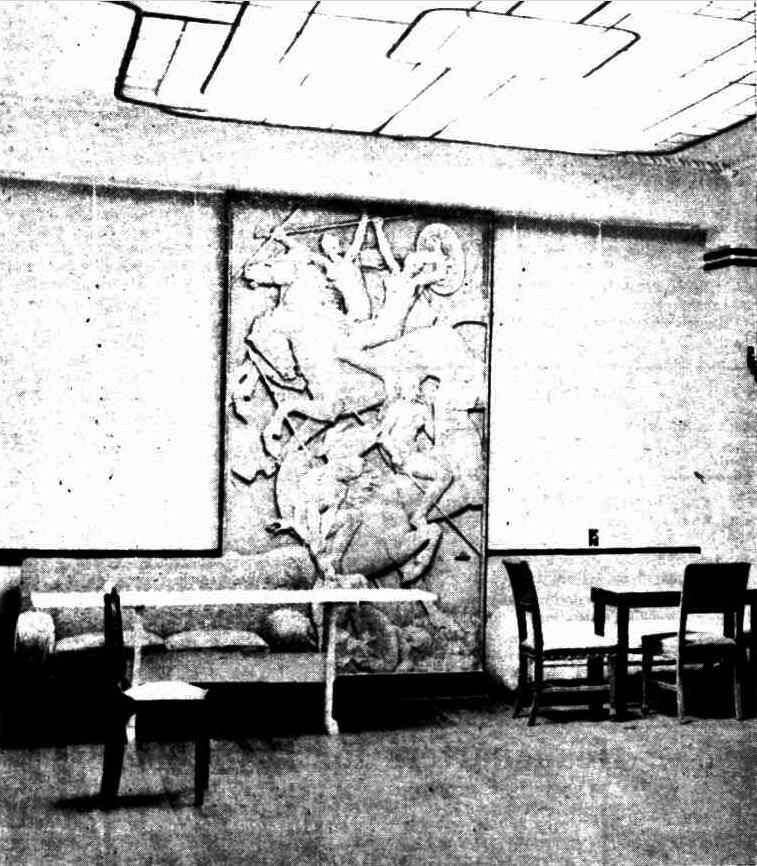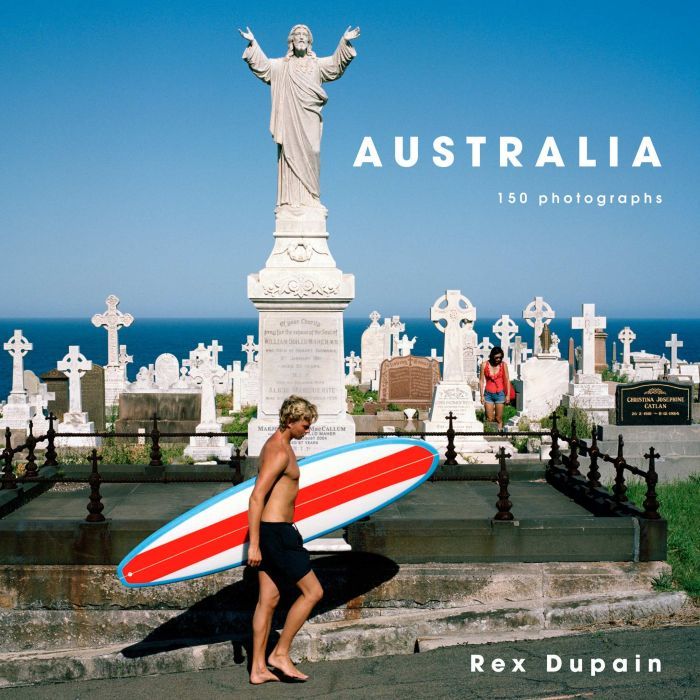Mona Vale became a very popular area following the Halloran sales at Warriewood, so much so that a public school was opened to meet the demand of people settling here. George Brock was losing his wonderful Brock's Mansions at this time, with grounds filled with statuary and a rather grand fountain, which French couple Henri and Hedwig Rainaud later renamed 'La Corniche' to signal to their avid connoisseurs they had moved from Drumtochty, (Figtree Flat) Bayview to the Mona Vale beachfront.
The sleepy little village was becoming a 'go to' place for weekend visitors and those who settled brought their love of Art with them:
ROYAL ART SOCIETY'S EXHIBITION
In addition to the pictures purchased by the National Art Gallery, further important sales have been effected. The committee of the Millions Club have purchased, as a nucleus to a collection they intend to instal in their rooms, the following works: "Sand Dunes, Mona Vale," by W. Lister Lister, and "Summer Idyll," by John Banks. ROYAL ART SOCIETY'S EXHIBITION (
1922, August 8).
The Sydney Morning Herald (NSW : 1842 - 1954), p. 10. Retrieved from
http://nla.gov.au/nla.news-article16017822
Members of the Royal Art Society and other artists are busy designing the black and white and coloured screens which will be a feature of the Black and White Artists' Ball, to be held in the Paddington Town Hall on July 29. To augment the proceeds of the ball, which will be given to the Picton Lakes T.B. Settlement, a motor treasure hunt will be held on Sunday, when cars will leave the Art Gallery at 10.30 am. for Mona Vale. Mr.Grant Hanlon is In charge of arrangements.
The appeal fund of the T.B. Sailors and Soldiers' Association will hold one of its final activities before the fund is closed, a combined motor picnic and treasure hunt at La Corniche, Mona Vale, on September 1. The party will start from the Art Gallery, Sydney, at 10.30a.m., where clues will be given out. For those who do not wish to take part in the hunt a special programme of amusements will be provided at Mona Vale.
In 1936 the Hawkins’s family moved to Waterview Street, Mona Vale living there for the next 23 years. This area was affectionately named ‘The Mad Half Mile’ for the great number of artist and writers living there, including at one period, Arthur Murch and Raymond Glass. Here that he established his working routine and began painting on masonite which he thought was better suited to the Australian climate than canvas and it was cheaper.
Family life and the environs of Mona Vale became important motifs of Hawkins’ work. Then Mona Vale was an area of natural bush, tropical vegetation, market gardens and semi rural suburbs. The peaceful and verdant rendition of the area in A view of Newport, 1943 does not give insight into the harshness of the Australian climate or into the war time austerities that Hawkins was living under at the time. His fixed British war pension did not take into consideration the high war time inflation and the family had to rely on their garden to provide them with fruit and vegetables and chickens!
Weaver wrote to his brother in 1943 that his wife ‘Rene sticks to her gardening courageously, but it was a heart breaking job this year with almost continual drought. The earth is everywhere crying for rain, rain, and more rain’[3]. . As a practitioner of different artistic styles, this work contrasts sharply with his bleak, moralistic modernist works, sometimes mural size, concerned with war fare and over population.
His love of his new home is shown through his works and working - including being among those who would protect the natural bush in Mona Vale as an honourary ranger:
The Contemporary Art Society was an important part of his life, exhibiting his work from 1944 -1970, and for which he was Vice President and President. He also lectured and reviewed exhibitions promoting contemporary art.
Weaver Hawkins, Citrus above Pittwater, 1943
oil on masonite 61.00 x 71.00 signed l.r. Exhibited: Modern Australian Painting 2010 (2010)
Weaver Hawkins, 1950 Wynne Finalist for - In Mona Vale
APPOINTMENT OF HONORARY RANGERS.
WILD Flowers and Native Plants Protection Act, 1927:— The undermentioned persons have been appointed as honorary rangers for the purposes of this Act:—
Brammer, John Kyneton, Bassett-street, Mona Vale; Collins, Edmund Henry, Ocean Grove, Collaroy; Gould, Charles Sidebottom, Daintree, Salvation-street, Mona Vale; Gould, (Mrs.) Margaret Irene, Daintree, Salvation-street, Mona Vale; Hawkins, Harold Frederick Weaver, Waterview-street, Mona Vale; Hawkins, (Mrs.) Irene Eleanor, Waterview-street, Mona Vale; Kentwell, Graham Harold, Elimatta-street, Mona Vale; Kentwell, (Mrs.) Eunice, Elimatta-street, Mona Vale; Myers, (Mrs.) Enid, 29 Lueretia-avenue, Longueville; Savage, (Miss) Ethnee, Bayview-road, Mona Vale; Savage, (Mrs.) Fanny Stephney, Bayview-road, Mona Vale; Toovey, (Miss) Roslyn Phyllis, Hillcrest-avenue, Mona Vale; Young, (Miss), Annie Lawson, The Tropics, Crescent-road, Mona Vale.
J. J. CAHILL, Minister for Local Government.
Charles Sidebotham (Strom) Gould was born August 1910. He was also known as Charles Sidebotham Gould, Strom Gould. He was an Artist (Painter), Teacher and Cartoonist / Illustrator. Gould came to Australia from England in 1937. Employed as the Sydney Morning Herald's first art director, Gould also drew its first comic strip in 1944. Cartoons signed 'Gould’ appeared in Australia: National Journal and in Australia Week-end Book 1 (1942), e.g. “What be a’goin’ on around 'ere?” (German parachutist about to land on head of farmer while rest of farm people and animals flee), and others in vol.2 (1943). Gould drew the SMH 's first comic strip, an untitled gag sequence first published in December 1944. (It was followed by an English strip called 'Mr and Mrs’ and the US 'Penny’ by Haenigsen in January 1945.) Gould returned to England in 1946-51 and was succeeded as art director on the SMH by William (Nick) Nicholas (1946-50), et al (listed Souter, 630).
John Coburn’s lithograph Garden was printed by Strom Gould at Sydney c.1960 (NGA) when both were teaching at East Sydney Technical College. His abstract painting, Sundrenched Bush 1966 (Manly AG), is reproduced in Therese Kenyon (ed.), The Studio Tradition: National Art School 1883-2001(Manly AG catalogue, 2001, 32). He died at Port Douglas, Queensland, on 31 July 1992.
Roslyn Toovey is a sister of Dora Toovey – wife of James R Jackson Jackson, 1924 to 1947.
James R Jackson, Summer day, Mona Vale (1937). Bequest of Roslyn Phyllis Toovey 1991 – to Art Gallery of NSW
A CLEVER LANDSCAPE AND FIGURE PAINTER
JAMES. R. JACKSON.
FOR some years past the paintings of Mr. James R. Jackson have been a notable feature of the Royal Art Society's exhibitions. This year his panel (he has no fewer than 12 pictures on view) is the principal one in the show. His bright and pleasing colours attract the general public; the sterling technical qualities of the works secure the admiration of artists and critics. Mr. Jackson is now regarded as one of the few Australian painters who really count.
There are some Sydney art-lovers who saw in the first work exhibited at the Art Society's exhibition of 1910 by Mr. Jackson the factors which make for success. His colour sense was unusually good from the outset, and it has since been trained and improved. Rejoicing in the brilliant display of colour harmonies which Nature makes in Australia, Mr. Jackson set himself to reproduce them. His early impressionist landscapes and his bold treatment of the figure in the open air gave a note of gaiety to his exhibits which contrasted agreeably with the graver and often stodgier pictures near by. Colour is, after all, the most important element of a painting. The selective sense is shown in the theme and fundamental training in the daughtsmanship, but neither good drawing nor interesting subject will compensate for lack of beauty in colour. One might grade artists by their ability to render colour in its true tonal values and in its less obvious and vulgar appearances. And one might almost say that if a person is endowed with a fine colour sense all other requirements of artistry will l:e added unto him. Mr. Jackson's progress as an artist is indicated by the increasing subtlety of his handling of paint and his treatment of more difficult aspects of the figure. Figure painting is more exacting than landscape, and less saleable; so that fewer artists attempt it seriously as compared with those who 'go in for' landscape.
JAMES R. JACKSON virtually began his artistic career with drawings and paintings of the figure. At the age of 8 he came to Sydney from New Zealand, where, in the town of Palmerston North, he was born on the 3rd July, 1886. While a youngster he amused himself considerably with a few coloured chalks. His father saw some of these drawings, and then showed the boy a small painting made by one of his employees. James said that he didn't think much of it. The father, amused at his assurance, said: 'The day you can do anything as good as that you will be somebody.' James replied that if he had a box of colours he could do as well as that very quickly.
'ALONE.' This striking work attracted a good deal of attention when it was exhibited at one of the Royal Art Society's shows.
A box of paints was given to him, and he set to work with them enthusiastically. After leaving school he obtained employment with a firm of decorators in Sydney, and made use of any spare time in painting for his own enjoyment. One day his employer found a clashing sort of painting on the wall, and said: 'What does this mean? Who did this?' James proudly confessed that alone be did it. 'Well, you've used up a lot of valuable paints. If you want to take up this sort of thing, I'll introduce you to an artist I know, and he'll teach you.' Shortly afterwards young Jackson was introduced to Frank Mahony, who was then instructor at the classes of the Art Society of N.S.W. He studied with Mahony for some seven or eight months, and when the latter went to England his last words to his pupil were: 'Stick to it, Jackson; I think you’ll get on all right.
JACKSON did stick to it, and studied at the Art Society's classes for about, seven years altogether. Like most of the students, he wanted to go to London, and fixed a date ahead by which time he thought he would have enough money for the trip. At first the date was 1909, but afterwards he altered it to 1907. However, he left Sydney in 1906 for Melbourne with the intention of studying for a while under Mr. Bernard Hall at the National Gallery there. He was notable to join Mr. Hall's class, but received a good deal of encouragement from the late Mr. Fred McCubbin, and after three weeks in Melbourne decided to go on to London. He secured a passage for a moderate sum via Cape Horn, and arrived in London early in 1907. Two days after his arrival in the great city, and without waiting to see the sights, Mr. Jackson applied for admission to Messrs. Brangwyn and Swan's New Art School. Applicants generally have to wait some time for admission, as the number of pupils is limited; but luck was with Jackson, as there happened to be a vacancy that day, and he began work in the school next morning. Both Brangwyn and Swan were much liked by their pupils for their geniality and practical advice. They used to call Swan 'Old Tones,' because he was always telling them that tone values were the; things that mattered — 'tones, my boy, tones.'
When Brangwyn first saw Jackson's painting he said: 'Too hot — too hot!' and passed on. Next time he looked at Jackson's work for a few minutes, took his brush, and started to paint in some grey tones to reduce the warmth. He asked Jackson where he came from. The pupil replied: 'Australia, where we have a very good thing of yours, sir, in the Sydney Gallery— 'The Scoffers.' ' Brangwyn said: 'Oh, yes; and you have a very good thing of Madox Brown's the — 'Chaucer Reading his Poems Before John of Gaunt.' ' He also said that he had for some time wished to go to Australia, but was afraid he could not get away from his work. He now had opportunities for painting the things he liked, and unless there was pleasure in one's work it could not be much good. SIX happy months were spent at the New Art School, and then Jackson went on to Paris, where he joined the Academy Colarossi. For twelve months he worked there, with Renard and Gorgia as the principal teachers. At the end of the year they told him that he had made such good progress that he should try for the Salon in the following year. However, he could not finance a longer stay, and had to return to Sydney.
While at the Colarossi one of the students, an American, came to Jackson and some others and said: 'Look here, you fellows, my Dad is coming over from home, and I have to put up an exhibition of marine paintings in a devil of a hurry. He is a shipowner, you know, and all he thinks of is ships. I am supposed to be here to learn how to paint ships, and I've none to show him. For goodness' sake help me to knock some up in time.' They all agreed, an. I set to work, so that by the time Dart arrived his son had quite a creditable collection of marine paintings to show him. Dad was pleased, and allowed his son to continue his studies, which he did — but studies in the nude, not of ships. Mr. Jackson used whatever spare time he had in Paris in studying the masterpieces in the galleries or in walking expeditions into the country, and once in Belgium. He was much impressed by the paintings of the Impressionists, especially Manet and Degas, and his handling of light shows their influence. Some Algerian scenes by Morot — horses on dusty roads under strong sunlight and similar subjects reminiscent of Australia — also appealed to him.
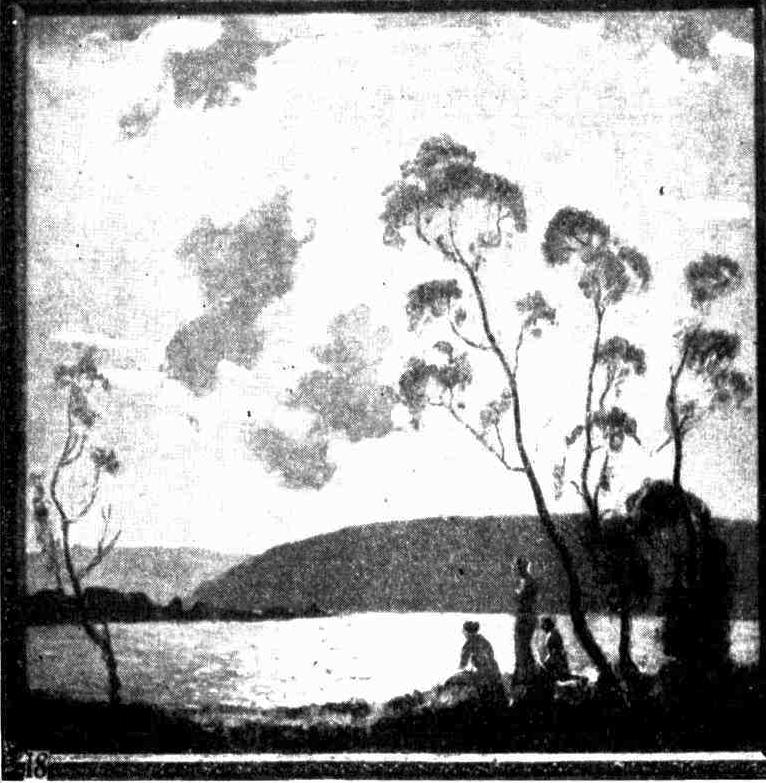
NARRABEEN LAKE,' One of Mr. Jackson's pictures at the Royal Art Society's Exhibition now in progress.
In Paris he saw a good deal of the work of Phillips Fox, who had been for some years in Australia, and whose fine treatment of human figures out of doors had already strongly appealed to him.
FOR the most part Mr. Jackson paints in the open air on the coast near Sydney. He has spent some time painting inland at such places as Sofala and Hill End, but he can find all the landscape subjects he wants near at hand in Sydney. Already he has covered a fairly wide range of subjects. The opinion of many of his friends is that he has been most successful in painting the figure in the subdued light of an interior. Such a canvas as 'Morning in the Studio,' which many of our readers will remember, in which a simply dressed and attractive girl is posed against the studio wall and beside a small mirror which reflects her face, is somewhat of a triumph over technical difficulties. His open-air studies are, however, more generally popular. The picture purchased last year by the N.S.W. National Gallery is a seascape of particular fine quality. Mr. Jackson is never content In rest at any stage of accomplishment he has reached, but endeavours to go higher and further.
'DREAMING.' This fine example of Mr. Jackson's work was purchased some time ago by the trustees of the National Art Gallery of New South Wales. A CLEVER LANDSCAPE AND FIGURE PAINTER (
1921, August 10).
Sydney Mail (NSW : 1912 - 1938), p. 16. Retrieved from
http://nla.gov.au/nla.news-article162034626
James R Jackson, Beach Scene at Narrabeen
Oil on wood panel Signed and dated '26 lower right
Dora Toovey
TWO ARTISTS—at home and at large.
If you call on the James R. Jackson couple — he is the well-known landscape painter and she is known for her painting as Dora Toovey — you will find their delightful home perched on a cliff above The Spit, and you will sit on a sun-drenched terrace and let your city. Weary eyes enjoy an unsurpassed view of harbour and headland — or roam into the two comfortable, spacious studios the house contains and sigh with satisfaction that artists can have such a glorious place to work in. This, you feel, is the place for masterpieces!
Right: On the Fish River. — Mr. James R. Jackson takes his ease at the camp luncheon table with a camp guest while Mrs. Jackson works the camera.
BUT then you discover that the bulk of their work is done in much less comfortable — though not less happy — circumstances. For the Jacksons roam far afield for their subjects and leave the house on the cliffs for weeks on end, pioneering per car and camp through thinly settled districts for Australian beauty that is not to be captured on canvas in a comfortable studio. Art isn't as easy as all that. 'It is sometimes difficult to find individual and truly Australian scenes,' says Dora Toovey. 'The easily accessible places are so quickly painted out, and then there are districts that have been so splendidly treated by certain artists that they seem peculiarly these artists' country. And so we have formed the habit of pioneering the country, looking for fresh material. We have to consider the contours of the land, the light and colour, and there is no golden rule to work by. You can tell nothing from maps, and even a distance of a mere twenty miles can deceive. I remember on one camping trip we were making for a certain district, and at a distance of twenty miles my husband decided the location just couldn't offer anything, and we turned away from it. Two years later we passed through the part we had scorned, only to find it offered scope for weeks of work.'
The Jacksons set out in a car with a camping body, which they have dubbed 'The Pack-hard' because by the time everything is on, including the baby's bath, the bedding, and the meat-safe perched precariously on top, it seems the best name for the conveyance. Their camping trips over the last few years have led them into some odd adventures and experiences, and they have come very close to being flooded out once or twice. On one occasion they pitched camp late at night, and woke to find themselves camped in the bed of a river, the river being the kind that runs in two courses, one dry at the moment. A rise higher up might have prevented, them telling the story! incidentally, they have devised a fine flood-warning. They place a kerosene tin on the water with a cup tied to a string hanging into it, so arranged that if the water rises during the night the contraption will set up a din and wake them in time to shift camp if flood threatens. In one camp on the Fish River they had quite a scamper, with the car sliding in and out of the water, as the bank was giving, in spite of their haste. Camping on the Gloucester River, the tree-lizards made off with the frying-pan, probably for the sake of a little fat left in it, and, seeing what a vital thing is a frying-pan in a camp, that was no small disaster.
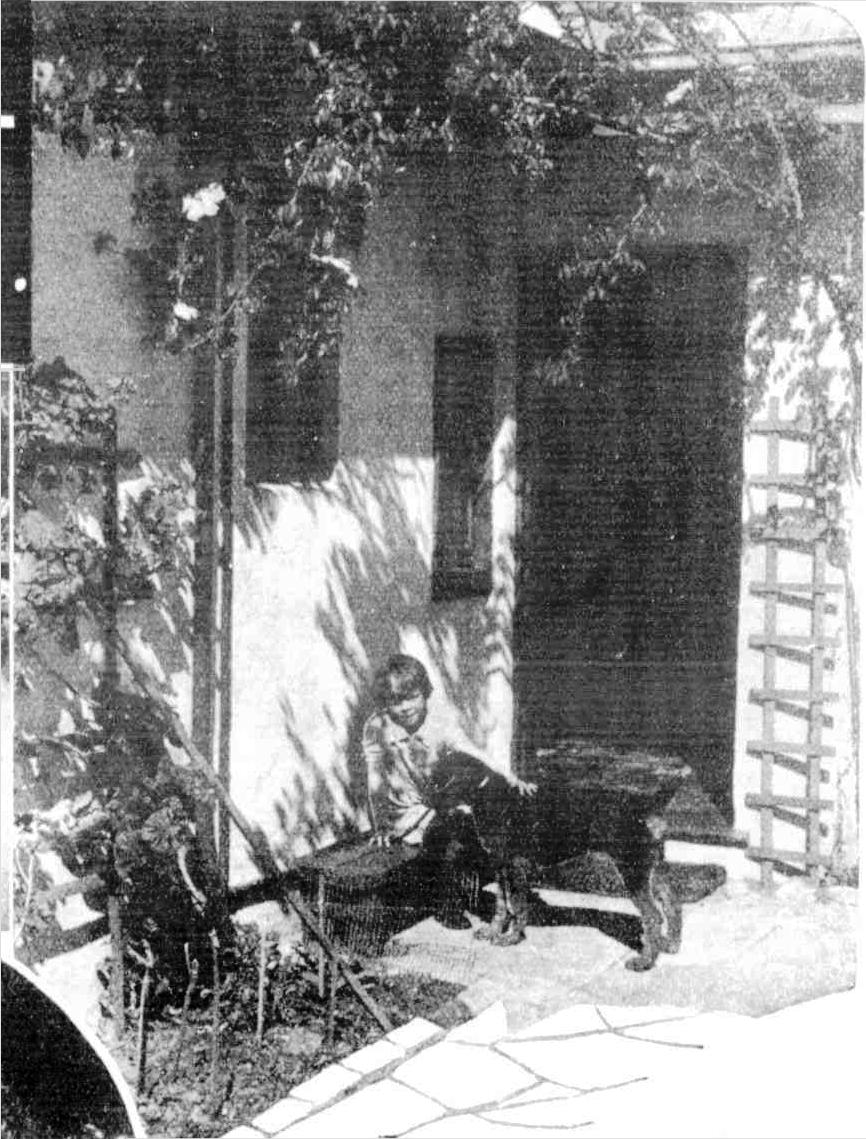
Jacqueline Jackson with Dusty at the rose-hung doorway of the lovely home of Mr. and Mrs. James R. Jackson, on a Seaforth cliff above The Spit.
Left: Magpies outside the Jackson camp on the Murrumbidgee, in the Federal Capital Territory. They were tamed with gifts of food, and soon became regular callers.
Mrs. James R. Jackson (Dora Toovey) at work in her sunny studio.
Banana-palms grow in this little porch on to which Mr. Jackson's studio opens. (A Cazneaux picture.)
SOFALA proved interesting. During the depression the district was full of mining camps of both amateurs and old hands. One day they were taken by an old miner to see his mine. He called down to his mate in the depths of the earth, 'I've brought a couple of people to see the mine, and one's a lady.' 'Gee! Then you'd better shy down me pants,' came back the homely rejoinder. By night at Sofala the old miners would collect round the Jackson campfire, and many a tale of old mining days was told. These were in poignant contrast with some of the amateurs. One day, walking miles from nowhere, the artists were amazed to meet a woman dressed in Sunday calling clothes, complete with gloves, and when they later visited her camp they saw such un-camplike refinements as sheets being dried in the weekly wash. Yet, making an unexpected call another day, they found this same woman hauling up buckets of earth from the digging being done by her husband. They took a hand in a matrimonial alliance on the Paterson River. Asked to paint a portrait, they offered to take a photograph instead, and Mrs. Jackson remarked flippantly to the subject that 'she might turn him down.' 'She comes from the city, but she is guaranteed used to country life,' was the surprising rejoinder, and it transpired that the picture was for a matrimonial agency. The gratitude of the prospective bridegroom was expressed in gifts of cabbages and pumpkins and evening visits to the camp-fire, and two years later when they were in the same district they heard the sequel. The bride-to-be came up from Sydney, but as she turned out to be a widow with two children she was returned unclaimed. And for a final example of the Jackson camping propensities take their occasional jaunts on Narrabeen Lakes. They take a boat, and when night falls they fill it with gum-leaves to sleep on, hoist a tarpaulin on an oar — and there you are. But here Mrs. Jackson registers a complaint. Her husband will fish at night, and when he caught an eel which got loose in her bed of gum-leaves and just couldn't be caught she thought that was going a little too far. What would most of us give to exchange our daily grooves for a share of the joyous adventuring of these artists to and from their cliff-side home at Seaforth? But then we can't paint!
James R Jackson, Narrabeen Lakes
Oil on board, Dimensions: 29 by 39 cm, courtesy Sotheby's/Invaluable (The world's premier auctions and galeries).
Mr. Jackson's Exhibition.
MR. JAMES R. JACKSON has painted so many of the more easily accessible beauty spots near Sydney that the pleasure of those who attended his exhibition yesterday was considerably enhanced by the familiarity of many of the subjects. The artist's home Is at The Spit, so naturally this locality figures in the show. Yesterday afternoon, Mrs. Jack-son was present with her husband, and received many congratulations on his work.
(Left to right.) ]MR. JAMES R. JACKSON, MRS. WILL ASHTON, and MRS. JACKSON discuss a picture at Mr. Jackson's exhibition which was opened by Mr, J. B. Waterhouse yesterday afternoon at David Jones's George-street store.
She is also an artist, painting under the name of Dora Toovey, and formerly accompanied her husband on caravan tours, on which they took their small daughter, Jacqueline, now aged eight. A little son, now eighteen months old, has prevented further caravanning for Mrs Jackson, as she finds the young man's energies dynamic. "He succeeded in driving two nails into a power point, the other day," Mrs Jackson said, "and then managed to turn on the current without getting electrocuted.'' Among those present at the exhibition, which was officially declared open by Mr J B Waterhouse, were Dr and Mrs Sinclair Gillies, Mr and Mrs Will Ashton, Mrs H Metcalfe, Mrs Norman Burdekin, Mrs J Sheils, Mrs G Murray, Mr and Mrs M T Cowan, Miss Jeanne Cowan, Dr and Mrs Huff Johnson, Miss Ruth Pearce Jones, Miss Lute Drummond, and Mr. Alfred Stephen. From Day to Day in Sydney. (1937, June 10). The Sydney Morning Herald (NSW : 1842 - 1954), p. 20. Retrieved from
http://nla.gov.au/nla.news-article17374501
Dora continued to visit Pittwater as well, teaching students. From Joshua Smith Artist (1905-1995), published and written by Yve Close 1998, p. 144-145:
"One of the painters Josh and I met with each Wednesday to paint landscape was Dora Toovey. She knew the northern peninsula from South Head to Palm Beach in intimate detail, the best beach to paint on a dull day or when the sun shone, where we could find shelter from the blast of fierce winds, whether or not convenient toilets were available or a shop for hot food - a fount of useful information.
People, living in houses clutching the cliffs of our coastline, knew her well. Sometimes they trundled heavy trays of afternoon tea up steep drives or stairs to refresh we three.
They provided semi-nude studies as they bared their breast to the elements. She neither flinched nor deviated from her course of action if she caused embarrassment to her unwitting subjects. Dora just worked on.
One day, after we had spent the morning painting boats at anchor on Pittwater, a body of water cradled by Sydney's northern peninsula, we moved into the nearby beer garden of the Newport Hotel, intending to carry on with more work. People sat drinking at small tables in the dappled afternoon light; interesting subjects, according to Dora. Josh and I, too embarrassed to work openly, made small figure drawings in sketch books concealed beneath the table top. Not Dora! She nonchalantly set up her easel and gear, in full view of everyone, then commenced painting bare-chested young men and their companions. Before long they realised what she was doing, and gathered behind her to see the work. Totally unruffled, she ordered them back to their positions, saying 'otherwise you won't be in the painting'. They returned to the table like lambs, allowing Dora to finalise an appealing canvas.
After working all day in the open, we retraced our steps to Dora's home high above Chinaman's Beach, where Josh and Dora often provided a musical interlude. Dora played the piano, while Josh sat beside her singing, both still wearing their hats."
Dora Toovey, Old Wharf, Newport, Pittwater,1975
Dora Toovey, Old Wharf, Newport, Pittwater,1976 (?)
Oil on canvas, 60 x 75 cm
Another lady artists associated with Mona Vale:
TO HOLD HER FIRST ART EXHIBITION.
ESME FARMER, of Mona Vale, who studied in Sydney with Fred Leist, and at various art schools and galleries abroad, will hold her first exhibition of pictures at the Macquarie Galleries. The exhibition will be opened by Miss Jeanie Ranken next Wednesday. Mrs. Farmer is the wife of F. Rhodes Farmer, who published his first novel, "Thirsty Earth," a few years ago; they have a three-year-old son, Bill. TO HOLD HER FIRST ART EXHIBITION. (
1940, January 4).
The Sydney Morning Herald (NSW : 1842 - 1954), p. 17. Retrieved from
http://nla.gov.au/nla.news-article17651053
Finalist in Wynne Prize 1941 - Esme Farmer: Title Old Bakehouse, Mona Vale
MONA VALE SCENES.
Mrs. Farmer's Exhibition.
Among all the centres of population along the coastal road to Palm Beach, Mona Vale has been least spoiled by tourists. Half a mile from the beach are rows of tiny, picturesque farms, inhabited by simple rural people.
In her exhibition at the Macquarie Galleries, Esme Farmer has depicted the Mona Vale district with singular directness. Her style is as fresh and unsophisticated as the scenery. She joys in the growth of trees and vines and bushes, and she communicates that enthusiasm to the beholder.
Yet, although Mrs. Farmer places her colours and forms on canvas with such youthful liveliness, she has a solid record of academic study behind her. She won the figure painting competition at the Technical College, and, having gone to London, continued her researches at the Royal College, South Kensington, and at the St. John's Wood Art, School. The exhibition will be opened this afternoon by Miss Jeanie Ranken.
THIS ART EXHIBITION REJECTS NOTHING
EVERY contribution, good, bad or indifferent, was accepted for the first exhibition of arts and crafts arranged by the Mona Vale Community League.
Secretary of the League, Mr. Graham Kentwell, Sydney commercial artist, believes the exhibition to be unique, in that it is not intended as an ordinary art show. "We believe that any artistic effort justifies itself," he said yesterday.
"No attempt will be made to criticise the work, or to draw comparisons. The exhibition is merely to provide a meeting place for people whose aims are similar. "Standards will automatically rise as time goes on,".
The exhibition, which is housed in the recreation hall of the La Corniche building at Mona Vale, includes hundreds of works contributed by 60 members of the League. THIS ART EXHIBITION REJECTS NOTHING (
1945, March 18). The Sun (Sydney, NSW : 1910 - 1954), p. 5. Retrieved from
http://nla.gov.au/nla.news-article231710108
MUCH travelled Londoners, Mr. and Mrs. H. Weaver Hawkins, who have made their home in the bushland at Mona Vale, between Pittwater and the sea, are on the executive committee of the Mona Vale Community League, which will hold its second annual arts and crafts exhibition at "La Corniche" from March 16.
Well-known professional artists living in the district, as well as amateurs, will exhibit. Mr. Hawkins, who paints under the name of "Raokin," the Italian interpretation of his surname, given him when living there, is planning an exhibition of his own water colors, drawings and oils at the Macquarie Galleries on February 27. His canvases bear the imprint of his sojourn in many lands. He has painted in southern France, Italy, Spain, Malta, Tahiti, Wellington, NZ, and, lastly, in Australia, where the Hawkins' have made their longest stay— 11 years.
Mrs. Hawkins, who says she paints only for her own amusement, has decorated the inside doors of her home, the beams, and the kitchen furniture with peasant designs. The eldest of Mr. and Mrs. Hawkins' three children, Roleena, is in her fourth year of medicine at the Sydney University, Nigel sat for the recent Leaving exam., and hopes to do Medicine, and the younger boy Laric is still at high school. Community art and craft show (
1946, February 3). The Sun (Sydney, NSW : 1910 - 1954), p. 12. Retrieved from
http://nla.gov.au/nla.news-article228799054
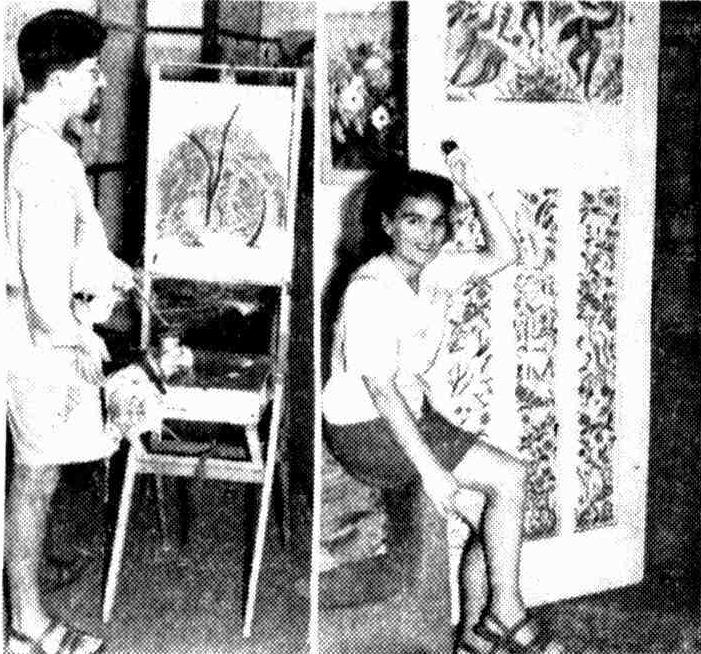
Artist H. Weaver Hawkins, in his studio at Mona Vale, examining a landscape painted by him at Burragorang. Right: His wife, Irene, with the fascinating murals painted by her in the dining room of their home. THE SUNDAY SUN Pages for women (
1946, February 3).
The Sun (Sydney, NSW : 1910 - 1954), p. 12. Retrieved from
http://nla.gov.au/nla.news-article228799055
VERY much an artists' gathering is the opening of exhibition of the late Frank Medworth's paintings by sculptor Lyndon Dadswell at Macquarie Galleries. Chatting with Mrs. Medworth and daughter Diana are Joshua Smith, Roland Wakelin, and Sali Herman. The Weaver Hawkins come up from Mona Vale, the Oscar Edwards, sculptor Paul Beadle, Italian artist Bissietta, and Justin O'Brien form interesting group. Also see director of Edge-cliff Design School, Mrs. Harold Sweetapple, and wife of American Consul, Mrs. Harold Hall, who manages to find some time for painting between official engagements. Intimate Jottings (
1950, September 16).
The Australian Women's Weekly (1933 - 1982), p. 19. Retrieved from
http://nla.gov.au/nla.news-article51600647
AN exhibition of paintings by Mr. Maximilian Feuerring will be opened by Mr. H. Weaver Hawkins, at David Jones' Art Gallery on Monday.Social News, Gossip (
1954, March 11).
The Sydney Morning Herald (NSW : 1842 - 1954), p. 6 (Women's Section). Retrieved from
http://nla.gov.au/nla.news-article18414022
The engagement is announced of Miss Pamela Walker, only daughter of the late Mr. Gordon Walker, of Surrey, England, and of Mrs. John Toller, of Elizabeth Bay, to Flight-Lieutenant Terrence Friend, R.A.A.F., youngest son, of Mr. Leslie Friend, of Carrington, Jerry's Plains, and of Mrs. G. Leslie Friend, of Mona Vale. Miss Walker is training as a nurse at Manly Hospital. Her fiance, who has recently returned after 3½ years in England, is spending a 60-day leave on Glendon station, Warialda, of which he is part owner with his two brothers and sister.
As a bomber pilot Flight-Lieut. Friend, who is a brother of Donald Friend, the artist, has taken part in many raids over Germany. Returning from a raid he crashed over England after flying right through the balloon barrage unharmed. Since then he has been attached to the Air Transport Auxiliary in England, flying all types of planes to operational aerodromes. Social News and Events (
1945, March 14).
The Sydney Morning Herald(NSW : 1842 - 1954), p. 6. Retrieved from
http://nla.gov.au/nla.news-article27929818
Please note, Ria Murch states in her book, R. Murch, Arthur Murch: An Artist's Life 1902-1989 (1997- Ruskin Rowe Press), that 'The Mad Half Mile' was in fact in Waterview Street, Mona Vale and a name given to that area by Sydney Ure Smith in his Australia, National Journal as part of an article run in 1945.
BRIGHTEST spot of colour in town this week is the strange jumper worn by Sydney painter and sculptor, Arthur Murch. An exhibition of his paintings is at present showing at the Moreton Galleries, and he is staying with the director of the galleries, John Cooper. Reason f
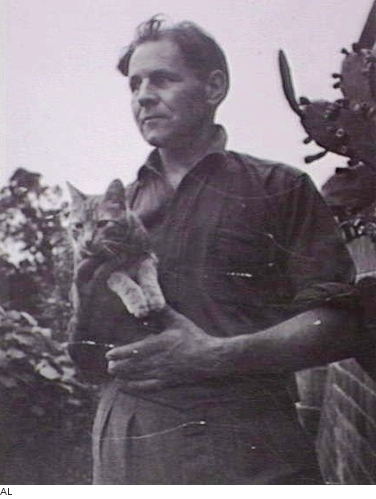
or his visit to Brisbane? He is painting a portrait of one of our loveliest younger set members.
On Thursday Murch will return to his Avalon home in what is known as the 'Mad Half Mile.' In and Out of Brisbane with Annette (1949, May 19). The Courier-Mail (Brisbane, Qld. : 1933 - 1954), , p. 8. Retrieved from http://nla.gov.au/nla.news-article49672833
"AUSTRALIA, NATIONAL JOURNAL" - Variety is the keynote of "Australia, National Journal." edited by Sydney Ure Smith and Gwen Morton Spencer. The May issue, just to hand, provides entertainment and interest on every page. The witty drawings by Wiz, Wall, Missingham, Molnar and others are evidence of the high standard of Australian humorous artists. Missingham sketches a gentleman "spook" carrying his head (blushing) under his arm who encounters a naked lady ghost. The caption reads, "Boy, was my face RED!"
Right: Michaelis, Margaret - circa 1945 - SYDNEY, C 1945. WWII OFFICIAL WAR ARTIST ARTHUR MURCH WITH HIS CAT. Image No.: P00933.005, courtesy Australian War Memorial.
A few insights into what else was going on at Mona Vale and surrounds that year:
MANLY AMBULANCE DILEMMA
GOVT. WITHHOLDS BUILDING PERMIT
MANLY and Warringah District Ambulance which patrols, with six waggons, 150 square miles of country, including 80 miles of surfing beaches, has been refused permission by the Commonwealth Directorate of Housing to build a sub-station, costing £3700, at Mona Vale.
RAISED by subscriptions from an appreciative public the ambulance already has the money to proceed with the building and would not require a Government subsidy.
Charles Le-Gallion
Last year the six ambulance waggons travelled 87,865 miles to treat 8009 cases, as against a mileage of 40,007 by four waggons in 1941-42 to treat 4317 cases. The establishing of a substation at Mona Vale would provide a quick service from Collaroy to Palm Beach and inland to French's Forest and St. Ives. Control of building operations passed from the Commonwealth to the State on October 31, and the situation is now up to the State Department of Labor and Industry. Last week 14-years-old Charles LeGallion lay on the roadway for an hour and a half at Palm Beach in agony and with ants crawling over his wounds. Trouble was experienced in contacting the local telephone exchange, but after the ambulance was notified a waggon covered the 21 miles from Manly to Palm Beach in less than 30 minutes. MANLY AMBULANCE DILEMMA (
1945, November 4).
Truth (Sydney, NSW : 1894 - 1954), p. 24. Retrieved from
http://nla.gov.au/nla.news-article169361356
DEATH OF MR. ROBERT LESLIE
The death occurred at his residence, Darley-street, Mona Vale on Sunday night of Mr. Robert Leslie, a partner in the once well-known Lithgow building firm of Short and Leslie. Mr. Leslie was 85 years of age and on retiring from the building trade some 20 years ago, he moved to Mona Vale. His wife predeceased him nine years, ago. Mr. Leslie was a staunch Labor man and always endeavored to return to Lithgow each year for the Six Hour celebrations, but failing health prevented him from doing so for the past few years. He leaves a family of four sons and three daughters — Richard Leslie and Mrs. J. Hammonds being residents of Lithgow, Jack (Wollongong), William (Enfield), Hector (Mona Vale), Mrs. F. Walton (Oatley) and Mrs. J. Gunn (Mona Vale). DEATH OF MR. ROBERT LESLIE (
1945, December 20).
Lithgow Mercury (NSW : 1898 - 1954), p. 2 (TOWN EDITION). Retrieved from
http://nla.gov.au/nla.news-article219732319
Naval Men As Waiters
When 15 members of the CENEF paid a visit to the CENEF All Services' Canteen at King's Cross yesterday, the "waiters" at afternoon tea were a number of British Naval servicemen, visiting the canteen. The men had previously visited the canteen last Christmas, and decided to do it as a mark of gratitude for the splendid time they had had there during the festive season The Mona Vale branch, of which Mrs. A G. Batten is president, has contributed regularly to the upkeep of the canteen since it opened three years ago, and the visit was In the form of an Inspection "to see where their money was going." NEWS for WOMEN (
1945, June 7). The Sun (Sydney, NSW : 1910 - 1954), p. 8 (LATE FINAL EXTRA). Retrieved from
http://nla.gov.au/nla.news-article230445716
Arthur Murch - later to move to Avalon and become a core member of Art there - teaching in Avalon Public school, as well as ensuring the school was funded through helping his wife Ria with exhibitions at the newly fledged school for youngsters - had a lady who frequented Lovett Bay and gave Australia one of its most famous poems, is stepping up to speak a few more words of praise - about him!
ART EXHIBITION.
MR. ARTHUR MURCH
The art of Arthur Murch has lately undergone several curious transformations. After he had visited Central Australia, Mr. Murch began to paint with a full, rich palette of colour, in which red was an important element. Then, at the Archibald Prize show a few months ago, he exhibited two portraits of almost funereal darkness. One went yesterday with some interest, therefore, to see what his latest series of pictures at the Macquarie Galleries would offer.
The actual Impression created by this exhibition is a mixed one. There are undoubtedly some fine pieces of painting. Especially In delineating the nude human figure. Mr. Murch achieves modelling of a rarely delicate and individual sort. But, as a rule, the pictures seem fragmentary-a series of sketches for more important works, rather than self-contained compositions. Again and again, the visitor finds .himself wishing that the artist had carried his subjects further, Instead of leaving them so vague. The reason why this feeling of discontent is so strong is difficult to analyse. The lack of contrast in colour contributes to it. But. another factor is Mr. Murch's occasional failure to seize the essentials of form. The weakness is best exemplified in a drawing of a recumbent figure. Only on looking closely at the faint patches of light and shadow does the spectator realise the nature of the subject.
Yet, as already Indicated. Mr. Murch has in him the power to do really beautiful work, in a series of aboriginal heads, he sets forth with conscientious and meticulous skill, the character of the sitters. Then there are various still-life studies, headed by the gracious "Still Life in Sunlight," and ft large and rather gloomy portrait. All these pictures are in oils. "Hermannsburg Mountain" is a clear, fine example of work In watercolour.
The exhibition will be opened this afternoon by Miss Dorothea Mackellar.
ARTHUR MURCH
Painting By Theory
Among the younger artists of Sydney, Mr. Arthur Murch impresses one with a sense of earnestness and individuality. His exhibitions are always Interesting, and his present one, held at the Macquarie Galleries, Bligh-street, Is worth a visit. With this painter theory takes the place of Instinct, and, up to a certain point; his theory is successful. ...
—a thing which the modern painter Is far too willing to forget. Mr. Murch while his outlook is sincere and his technical ability much to be admired, certainly escapes from any charge of over-sentimentality, but at the expense of lyric sense of delight which is not the least of the artist's gifts to the world.ARTHUR MURCH (
1936, May 21).
The Sun (Sydney, NSW : 1910 - 1954), p. 8 (LATE FINAL EXTRA). Retrieved from
http://nla.gov.au/nla.news-article231316760
ARTHUR MURCH
Arthur Murch's exhibition of paintings at the Macquarie Galleries betrays a decided and interesting paradox.
Each aim in turn seems to result in the exact opposite. A simple conception is over-elaborated, heavy forms and a laborious technique seek to give lightness; a mildly, sun-drenched quality barely disguises a cold temperament.
He loves atmosphere, but his flavescent paintings are airless: he is a careful builder, yet seems to like the frivolous and cheerfully vulgar, which in turn appears studio-made.
The roguish look of his chalk head "Study" has the charm of a rococo cherub floating on a pink cloud, yet the drawing in his paintings is over-worked and occasionally badly pro-portioned. This work gives the impression that the artist puts his faith in his great technical accomplishments, and that he believes rather in the dictates of his head than those of his heart.
A purely logical mind in art is always dangerous.
In his "Squirrel," a painting of a voluptuous reclining nude with madame holding the animal, the luminosity of the girl's firm body invades every part of the picture to dissemble the shapes and blend the colour-tones. Each shape in turn Generates lights of its own, and all becomes over-laden and Indistinct with several bright colour patches adding to the confusion.
The passage of the bent head and swelling breasts of a young woman busily engaged in search is absolutely Boucher. This painting. "The Flea." is in some ways the best work.
However, the sugar-daddy plus chorus girl in "The Connoisseur." is pure Hollywood.
Among' other paintings of interest are: "Josses Mountain," "Capri,'' "The Bath," and "Rock Pool." ARTHUR MURCH (
1944, June 15).
The Sydney Morning Herald (NSW : 1842 - 1954), p. 6. Retrieved from
http://nla.gov.au/nla.news-article27939002
George Lambert and Arthur Murch at work on the sculpture "Recumbent warrior" - photo by Harold Cazneaux, 1920, courtesy National Library of Australia
http://nla.gov.au/nla.obj-140194071
PERSONAL
Mr Arthur Murch, the Sydney artist, who has been staying with Mr and Mrs John Cooper at Clayfield, left by plane this morning to return to his home at Newport Beach. Mr Murch will return to Brisbane early in the New Year to carry out three portrait commissions. PERSONAL (
1945, November 13).
The Telegraph (Brisbane, Qld. : 1872 - 1947), p. 3 (CITY FINAL LAST MINUTE NEWS). Retrieved from
http://nla.gov.au/nla.news-article188759807
The Murch family lived there from 1940 on in a house called 'Dellwood' and returned in 1945, noting that it had become a 'mecca for artists'. Mrs. Murch states in Chapter 8, 'The Mad Half Mile, Avalon and Other Places' that a photograph taken by Margaret Michaelis for the magazine article from which the phrase comes shows all of them at this property.
Another, circa 1945, from the Australian War Memorial archives (above) was also taken by the same lady with a description of 'SYDNEY, C 1945. WWII OFFICIAL WAR ARTIST ARTHUR MURCH WITH HIS CAT', so that is 1945 Mona Vale in the background!
Ria states in the opening phrases of this chapter that although these houses had been largely empty in 1940, by 1945 artist Weaver Hawkins and family lived near by as did American Indian artist Raymond Glass, and writers such as poet John Thompson and his wife Pat whose adopted son is well known Jack Thompson, the actor.
Monolith Wins George V Memorial Prize
Plans for a 30ft monolith finished in Australian red granite and with engravings representing aboriginal life have won first prize in the competition for a design for the King George V Memorial. The memorial, is to be erected in the Botanical Gardens, at the cost of about £6,000, which has been sub-scribed by the public and the State Government in equal parts.
The winning designs selected yesterday at the Town Hall by the King George V Memorial Executive Committee of New South Wales are:
First prize of £200, and the com-mission to execute the work: Dr. H. Epstein, of Australia House, Carrington Street, City; and L. R. Dadswell, 21 Trelawney Street, Woollahra.
Second prize of £100: Arthur James Murch, Waterview Street, Mona Vale, and Frank H. Molony, 186 Queen Street, Woollahra.
Third prize of £75: A. H. Mack and A. D. Leary, architects, and Arthur Boqthroyd, artist, city.
DESIGN DESCRIBED
The official description given of the winning design is that it is a monolith, which grows from the soil as part of the landscape. It bears an engraved design representing aborigine life, lt will have a cement core, and a highly polished veneer of Australian' red granite and a concrete foundation. The designers estimate its cost at £5,989.
The second prize design is described as a wall decoration symbolising events and phases in history associated with the reign of King George V. The main feature is "a wall enclosing one end of an elliptical arrangement of path and garden.
The third prize design provided for a swelling facade, carrying a frieze of bas-relief in bronze depicting historic scenes in his Majesty's life. A plaque of his Majesty would occupy the centre of the frieze.
Announcing the awards, the Town Clerk, Mr. Roy Hendy, said the com-mission to execute the work by the winners involved a provision that if it were not. gone on with within two years .the winner would be entitled, to three per cent, of the estimated cost, not exceeding £6,000. The second and third prizes would involve no further obligations.
The judges were Mr. Cobden Parkes, Mr. Hal Missingham, the Lord Mayor, Alderman Bartley, and Mr. John D. Moore.
When the report of the adjudicators was received yesterday nine of 29 executive members were present.
They were: Alderman Marks (representing the Lord Mayor), Mr. K; F. Coles (president of the Retail Traders' 'Association), Mr. Langker (president of thc Royal Art Society), Mr. Turner (president of the N.S.W. Chapter of the Institute of Architects), Mr. H. A. McClure Smith (Editor of "The Sydney Morning Herald"), Mr. E. Kennedy (Associated Newspapers), and Messrs. Hendy and J. W. Ferguson, Premier's Department, who were joint secretaries of the committee. Monolith Wins George V Memorial Prize (
1946, November 20).
The Sydney Morning Herald (NSW : 1842 - 1954), p. 3. Retrieved from
http://nla.gov.au/nla.news-article27909499
Arthur Murch Wins Archibald Prize
SYDNEY,- Friday. — Sydney artist, Mr. Arthur Murch, was this afternoon awarded the Archibald Prize for his portrait painting. The portrait was of fellow artist, Mr. Bonar Dunlop and the prize is worth £500.
The Wynne Prize for, landscapes or sculpture, worth about £40, was awarded to Mr. George Lawrence for an Industrial scene entitled 'Two Rivers.' The Sir John Sulman Prize for mural decoration, worth £90, was won by Mr. J. Carington Smith for his cartoon and sketch of the proposed mural for a new State building in Tasmania. It was entitled 'Bush Pastoral.' Arthur Murch Wins Archibald Prize (
1950, January 21). Illawarra Daily Mercury (Wollongong, NSW : 1950 - 1954), p. 1. Retrieved from
http://nla.gov.au/nla.news-article136542181
Another Sculptor/Painter associated with Mona Vale is Lucien (also spelt Lucian)Bruno Michalski:
WAR MAKES SCULPTOR A LABOURER
While in a Displaced Persons camp in Europe sculptor Lucian Michalski scrounged stone, gypsum and bronze, scraped together painting materials.
Thus he started patching up the canvas of his life as an artist, ripped by the war in 1939 after he had spent four years studying at a Polish academy of arts. Now Michalski is in Graylands migrant camp, waiting to be assigned the labouring job at which he will serve his 'apprenticeship' in Australia. Hard work is nothing new to him. In 1944 he was taken, from Poland to Germany in a forced labour gang, worked on airfields, roads and other construction jobs. Now 30, Michalski wants to continue his art studies here when he gets the chance. He would like to set up his own studio. WAR MAKES SCULPTOR A LABOURER (
1948, October 23).
The Daily News (Perth, WA : 1882 - 1950), p. 16 (FIRST). Retrieved from
http://nla.gov.au/nla.news-article80804398
Contemporary Art Society
This year's exhibition of the Contemporary Art Society is being held at Parmer's Blaxland Galleries. One searches in vain for vitality in many of these pictures. The spirit of exploration is to be seen best in Maximilian Feuerring (The Golden Sheaf, In the Bathroom), L. Michalski (Self Portrait). and Edward J. Sackey {The Petrified Forest). At Sydney Galleries (
1951, June 1).
Le Courrier Australien (Sydney, NSW : 1892 - 2011), p. 6. Retrieved from
http://nla.gov.au/nla.news-article166976654
Contemporary Art
There is enough material of high quality at this year's Contemporary Art Society show at the Education Department Gallery, Loftus Street, to hold one's interest through a very large number of exhibits.
Individual talent is emphasized in a Society that does not impose any tradition on its members—some of the members of the Contemporary Art Society have created their own traditions over the years and we see them exhibiting just the paintings we have come to expect from them. But within the frame of their own achievement, they have many interesting things to tell us. First of all, to mention a few of the paintings: Charles Salisbury's Moon Above, Bruce Armstrong's Trees in France and Tree, London, Maximilian Feuerring's The Steak, Carl Plate's Inside a Rose, and Edward Sackey's Low Tide attract attention. Armstrong's, pictures have plenty of vigour and clear colour; M. Feuerring's The Steak is spirited In colour and construction. Others are Ronald Steuart's Dying Rose, F. A. Booth'.-- The Academy Piece and Michael Kniit's Chess Players.
In the sculpture section, the work of Anita Aarons, Robert Klippel and L. Michalski deserve mention. Pure abstract painting is especially represented by Josef Albers' "Basic Design forms", one of which is reproduced on the cover of the Catalogue to the Exhibition.
There is a fine group of architectural studies, where the designs and photographs of the work of Harry Seidler are outstanding. His "House at Northbridge" and "House at Turramurra" appear to be practical, completely modern and admirably combine comfort with art.
The exhibition closes on November 19th.
Drawings and Lithographs
Margaret Olley has caught the spirit of France neatly and with more than superficiality in her drawings now at the Macquarie Galleries. I would suggest that the best is the Back of Notre Dame, just a little sombre, but that is in the nature perhaps of the season and location. It captures the built and dignity of the building without clumsiness.
At the same-Galleries is a selection of English lithographs. In general, these are the assured compositions of confident artists, conveyed with deft strokes and exquisite colouring. There are John Piper's Stone Wall, Anglesea; Edwin La Dell's All Night Cafe, Ceri Richards' Woman at Piano, Vanessa Bi-il's Woman with Book and Frances Hodgkins' Arrangement of Jugs.
The exhibition closes November 19th.
Sculpture in the Open Air
It is very pleasant to walk around an exhibition like the one organized by the Society of Sculptors and Associates in the Sydney Botanic Gardens. There has been a feeling that the exhibits are too widely spaced but I think it aids the appreciation of the exhibition in seeing each piece so completely on its own, and so considering it without being disturbed by other objects close by. One can thoroughly enjoy the exhibits in an encouraging atmosphere.
The simplest of forms in an interesting material like a curiously grained sandstone or granite fit in well with the gardens and gain rather than loge sculptural value. Even the more experimental forms are at an advantage here. From the 34 pieces exhibited, I would select at the moment Nancy Draffin's Seated Figures, Bim Hilder's Flexible Farm, Alison Duff's Balancing Boulder. F. Lewer's Birdbath and Tom Bass's Tea Drinkers.
Archibald Prize 1961
Finalist 1961
Lucien Michalski
Self Portrait
NOTICE of intended distribution of estate.—Any person having any claim upon the estate of the late LUCIEN BRUNO MICHALSKI (otherwise known as Lucian Bruno Michalski), late of 98 Elimatta Road, Mona Vale, sculptor, who died on 6th January, 1986, must send particulars to the executor, Perpetual Trustee Company Limited, at 39 Hunter Street, Sydney, N.S.W. 2000, within two (2) calendar months from publication of this notice. After that time the executor may distribute the assets of the estate, having regard only to the claims of which at the time of distribution it has notice. Probate was granted in New South Wales on 29th August, 1986.—Dated this 12th day of September, 1986. O'BRIEN, CONNORS & KENNET, Solicitors, 685 Pittwater Road, Dee Why, Proctors for Perpetual Trustee Company Limited. (2310) NOTICE of intended distribution of estate.—Any person having any claim upon the estate of the late LUCIEN BRUNO (
1986, September 12).
Government Gazette of the State of New South Wales(Sydney, NSW : 1901 - 2001), p. 4561. Retrieved from
http://nla.gov.au/nla.news-article231526062
NAVAL ARTIST
CANBERRA, Monday-Mr. Frank Norton, of Mona Vale, NSW, has been appointed official naval war artist in the Korean area, the Minister for the Navy, Mr. W McMahon, announced today.
He said Mr Norton would hold the rank of Lieutenant-Commander (special branch) in the R A N V R for temporary ser vice and would leave for Korea by air soon.
Mr Norton was a war artist in the 1939-45 war and the Australian War Memorial had reproduced several of his pictures of naval incidents in its series of naval books. NAVAL ARTIST (
1952, May 20).
The Sydney Morning Herald (NSW : 1842 - 1954), p. 2. Retrieved from
http://nla.gov.au/nla.news-article18265319
ARTIST'S DUSK TO DAWN PARTY
Gay farewell before trip
ARTIST Raymond Glass and his wife photographed in their studio home at Mona Vale.
ARTIST'S wife Mrs. Raymond Glass looks for her husband's approval in hanging a painting over the fireplace.
A PARTY which began at 5 pm yesterday and lasted until 5 am this morning was given at Mona Vale by artist Raymond Glass and his wife.
More than 200 guests attended the party and previewed the artist's paintings which will be exhibited in Melbourne before the Glasses leave for Mexico in March.
Some of the guests, most of whom stayed to the end of the party bought paintings. Guests included Consul and First Secretary for the Israeli Legation Mr. Ayre Lapid and Mrs. Lapid, Mr. and Mrs. John Wiltshire, Mr. and Mrs. Bernard Hammerman, Mr. and Mrs. Sali Herman, Mr. and Mrs. Frank Clune, Mr. and Mrs. Frank Hinder, Mr. and Mrs. Weaver Hawkins and Mr. and Mrs. Douglas Annand. The garden was lit with fairy lights and supper was served on tables outside.
Film with puppets
Mrs. Glass said, "The easiest thing to do when people are coming all night is to prepare food like smorgasbord, mock hams, pickled fish, salads and pufferies." Mr. and Mrs. Glass are returning to the Mexican village of San Miguel where they lived for a year after the war. They will take their two children, Raymond, 7, and Terry Bligh, 3. "When we were in San Miguel last, my husband painted and I wove rugs," Mrs. Glass said. "Ray wants to return there because conditions are ideal for film-making and painting. "He wants to experiment in making films with three-dimensional puppets "Now he is making a film with hardboard puppets called The Wild Colonial Boy.
Met during war
"We will probably go to New York first, and then work on the film in New Mexico or Arizona before we leave for Mexico." Mrs. Glass met her American husband while he was stationed here during the war. They were married in Brisbane in 1944 and two years later went to live on Bedarra Island in the Pacific Ocean Friendly Group for a year. "From there we went to the US," Mrs. Glass said, "and then on to Mexico. "We lived in the little village of San Miguel de Allende, 250 miles north of Mexico City. "It's hot and quiet and life is so unhurried." They're off to Mexico (
1952, September 7).
The Sun (Sydney, NSW : 1910 - 1954), p. 45. Retrieved from
http://nla.gov.au/nla.news-article231008312
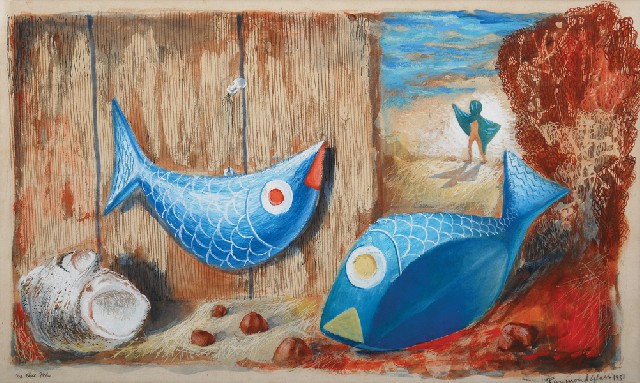
Raymond Glass, The Blue fish, 1951
Art master found shot
Well-known artist and Shore art master, John Ward Lipscomb (32), whose 'sudden death' was announced this week, was killed by a rifle bullet last Sunday.
His body was found in bush country at Mona Vale, with a service rifle near it. A note was discovered on the floor of a nearby station waggon. The City Coroner will hold an inquest early next month. J Extraordinary precautions were taken to prevent details of Lipscomb's death from becoming known this week. The official police report of the discovery of his body was marked 'Not for Press.' Several of Lipscomb's friends, who attended the funeral on Wednesday, said they had understood he was the victim of a car accident. Lipscomb was a competent artist, ex-president of the Contemporary Art Society, and a lecturer to W.E.A. and Sydney University tutorial classes. A student at Sydney Church of England Grammar School (Shore), North Sydney, from 1934 to 1939, he served in the A.I.F., and was arts master at Shore from 1951 Shore headmaster (Mr. L. C. Robson) said yesterday: 'Mr. Lipscomb was held in the greatest respect and affection, as a man of high character and complete integrity. 'As a teacher he had quite unusual gifts. He will be remembered by everyone here as a man with a most stimulating personality.' Art master found shot (
1954, August 15).
Truth (Sydney, NSW : 1894 - 1954), p. 7. Retrieved from
http://nla.gov.au/nla.news-article168411393
Any reference to Mona Vale must of course include such Sculpture Artisans as Harold 'Tristram' Squire, whose work still features at Bayview Golf Course: OBITUARY.
MR. H. TRISTRAM SQUIRE.
Mr. H. Tristram Squire, of Mona Vale, died this week, aged 69 years. Mr. Squire was a native of Victoria, and as a youth studied art with Sir John Longstaff and Sir Arthur Streeton. He developed especially as a portrait painter and sculptor, and in recent years devoted much time to modelling of life-sized figures and groups of animals in the garden of his home at Mona Vale are several groups of aborigines one of which depicts black-fellows spearing fish in a natural pool. Mr Squire was a lover of animals. His garden is the home of opossums, wallabies kookaburras and aviary birds many of which would perch fearlessly upon him. He is survived by Mrs Squire, who is also an artist. OBITUARY. MR. H. TRISTRAM SQUIRE. (1938, May 28). The Sydney Morning Herald (NSW : 1842 - 1954), p. 16. Retrieved from http://nla.gov.au/nla.news-article17469079
Newport
As can be read below, Newport, alike every other place in Pittwater, attracted its share of permanent resident Artists - many of them the best in Australia during their era who all, despite successful sales, still needed to live somewhere that supported their craft, both as a peaceful place filled with views and an atmosphere conducent to creating and as a place that was affordable.
A place accessible from earliest dates, due to steamers dropping off 'excursionists', Newport has inspired poets, writers, photographers, painters, workers in sculpture and ceramics - in fact every kind of Artistic Creation there is.
ON BUSHRANGER'S HILL
by THE SPECTRERest, and be thankful. On the verge
Of the tall cliff, rugged and grey,
At whose granite base the breakers surge,
And shiver their frothy spray,
Outstretched, I gaze on the eddying wreath
That gathers and flits away,
With the surf beneath, and between my teeth
The stem of the "ancient clay."
" Here you are," said our guide, " here's where the bushrangers used to come and hide in the old days."
The bushrangers showed good taste, truly, in their selection of a retreat, though it is hardly likely that artistic considerations influenced them in their choice. The knowing old hands - the men who had run the old gamut of villainy and were now being hounded down again by the law - only chose the resort because of the commanding view of the country all about. Lying perdu here they could keep their eye on the whole coast from Port Jackson to Broken Bay ; the track to Newport ran almost under their nose, and, given a proper watch, a surprise was impossible. So the bush- rangers' hill became famous in the convict days, and from all parts of the country the men who had taken to the bush drew toward the lonely eyrie. Then, when the place began to get unwholesomely crowded, the troopers would make a rush; but long ere they could reach the hill its occupants would be gone, and nothing but a smouldering camp fire left to mark the spot. Some old hand, doubtless, standing where the trigonometrical cairn now makes a black mark against the sky, had seen the heliograph-like flash of the troopers' swords hours before; had watched the little band as it forded the Narrabeen Lagoon, and long before it could even reach the track which leads up to the foot of the hill, had given the alarm signal which had once more scattered his mates all over the bush.
The process must have been repeated many times, and so, years after, when a scanty fringe of settlement began to creep up and around Pittwater, and to dot its indented shores with little flower-covered homesteads, the place kept its name. And then in later days a man, armed with a theodolite and a compass, and various other mathematical instruments, struggled up the top of the mass of rock. He also found the commanding position of the hill of value, though he acted from motives far different from those which guided the old bushrangers. He simply wanted a prominent point to form the apex of one of his primary triangles, a point which could be looked up to and its angle measured for miles around. So, to make sure of the point, and to prevent any blundering surveyor measuring the angle subtended by the wrong piece of rock, he planted a stout pole, having a pyramidical cairn of stones by way of foundation. Then he put a couple of discs, like railway following signals, on top of the pole, and went away quite contented with his work.
No one goes to the place much now ; a few city visitors sometimes find their way up the hill, and after saying "how pretty, " remark that it must be time for lunch, and so find their way down again. Even the little black-and-tan hotel dog has got tired of the hill. He wagged his tail joyfully when he saw that we were going for a walk, and even condescended, in his patronising way, to accompany us along tho dusty road. But when we commenced the ascent of the hill he protested. "Can't see what you stupid people want to climb the hill for on a hot day like this. There's nothing at the top except some ugly rocks, not even a 'possum or a wallaby to chase. Besides I've been there before." So he wagged his little tail and set out on his own account. When we came back to the hotel a few hours later he was quietly resting in the shade of the doorway. "I told you so," he said as he gave us greeting. " Hope you'll take my advice next time."
The absence of the dog, however, did not prevent us toiling steadily up through the tangled masses of fern and flannel flower, till we reached the cairn at the top. It is a pleasant place to sit and think whilst the dull boom of the breakers makes muffled music right under your feet, and the kingfishers flash brightly to and fro in the branches all round. There is a grandeur about the shore line as seen from this bird's-eye point of view.
From Barranjoey to the Heads the coast stretches, not straight, but in a series of noble curves fringed with a shining line of yellow sand, and a glistening white circle of breakers. Here and there the reefs jut (with long finger-like points) provokingly out into the blue waters, and the sea lashes at them impotently, sending up clouds of white mist over and around those immovable rocks. It is an old story, as old as the world. For ages the sea, lazily sending in its breakers one after the other, has been striving against those rocks, and for ages the rocks, secure in their position, have declined to move out of the way. The sea is in a quiet mood today. The long blue Pacific rollers are gentle, almost languid in their movements, and they break on the rocks with a deprecating could'nt-help-it kind of an air. They are no longer angry with the rocks, a truce has been patched up, a truce which may last for a day or two at the most, until Mr. Russell sends along another storm, and all is again commotion. The water inside the narrow sand line which forms the lagoon has undoubtedly the best time of it. Nothing makes much difference in this sheltered quarter. Whether it be storm or calm outside, the lagoon remains smooth and peaceful. At intervals, indeed, the sea forces a passage through the sandy barrier, but beyond agitating the water inside a little, no great harm is done. It is curious, indeed, the habit which this Narrabeen Lagoon has of opening and closing its own entrance, sometimes shutting itself off entirely from the sea, as if it aspired to become an inland lake, and at other times admit- ting the great waters freely until it becomes little else but an arm of the sea. Further on still, one can just see the great white college at Manly clearly outlined against the black background of the North Head, and beyond this again the houses of Vaucluse shine out on the southern side of Sydney Harbour. All is clear and bright and distinct as it ought to be on such a day, when the southerly gale of the last week has consented to leave off blowing for a while, and all nature is taking a well-earned rest.
But to leave the ocean and turn round. There is water on this side as well. Not the rough blue heave of the ocean, but the quiet calm of an inland lake. It is Pittwater, that highly-favoured arm of the sea, sheltered in such a way as to be a lake in all but the name. The narrow peninsula slopes sharply down to the water's edge, and the little blue lake extends before us for miles, until at last it seems to turn the corner and disappear, going far away north to meet the ocean again in the stormy Broken Bay. There are tiny ships on this lake -small coasting schooners, which come round here at intervals and load firewood for Sydney. You can see piles of this wood stacked along the bank, waiting until it can be taken off in a primitive fashion to the vessels which are anchored a short way from the shore. The houses are few and far between, and for the most part have a comfortable old settled look, hidden away as they are beneath the masses of almost tropical vegetation. And behind, the orchards slope chequer-board fashion up the green hillsides. At the far end of the bay, where one sees two or three cottages grouped rather closely together, an attempt is being made at settlement on a new plan. The owner, by subdividing his property and selling it in allotments, is trying to gather round him a little artistic colony. Here he hopes the men who wield the brush and the pen will make for themselves homes and create a new art centre. The idea is a happy one, and nature, as if in accord with it, has done her best to make the place of settlement beautiful. She has provided picturesque gullies, full of ferns and palms, and has even laid on a waterfall a couple of hundred feet high. All that is wanted now are a few red-roofed chalets, peeping out from among the foliage, and these, I suppose, will come in time. One artist, indeed, has already built himself an ingeniously designed dwelling - something between a Norwegian hut and a Swiss chalet. Others will doubtless follow, when the public learns the value of local art and extends it a full measure of patronage. For this sort of elegant rusticity, though very pretty and pleasant to look upon, requires a good deal of money, the very thing which artists, as a rule, are lacking in. So the settlement - for the present at any rate - progresses but slowly, and artists, when they want a spell in the country, have to be content with the old- fashioned log hut, leaving tiled roofs and gable ends to the capitalist who can afford to indulge in such luxuries.
There are plenty of other things to be seen from the top of the hill, and though the view at present lacks animation, one can easily pardon this fault for the sake of the peace and quietude all around. Some day, perhaps - one can only look forward with dread to the time - Pittwater, now such a happy smiling inlet, will be the centre of a rushing, bustling, commercial activity. The banks will be covered with wharfs, and the smoke of factories will pollute the pure air of the bush. At present one little steamer weekly suffices to take away all the produce grown in the neighbourhood, and to bring up all the supplies needed by the few fruit-growers who have settled around the shore. But as time goes on this must alter. There is abundance of rich land available, there are miles of deep- water frontage, and there is a harbour practically unlimited in size, and unrivalled for safety. So that, as far as one can see, there is nothing to prevent Pittwater from going ahead, and the hill which the bushrangers loved to frequent may one day overlook a busy city. ON BUSHRANGERS' HILL. (1891, November 28). The Sydney Morning Herald (NSW : 1842 - 1954), p. 5. Retrieved from http://nla.gov.au/nla.news-article13868244
Bushranger’s Hill, Pittwater c1923. by John Barclay Godson (British/Australian, 1882-1957).
Etching, editioned 14/50, titled, signed and annotated “ARCA Lond.” in pencil in lower margin, 24.4 x 18.9cm.
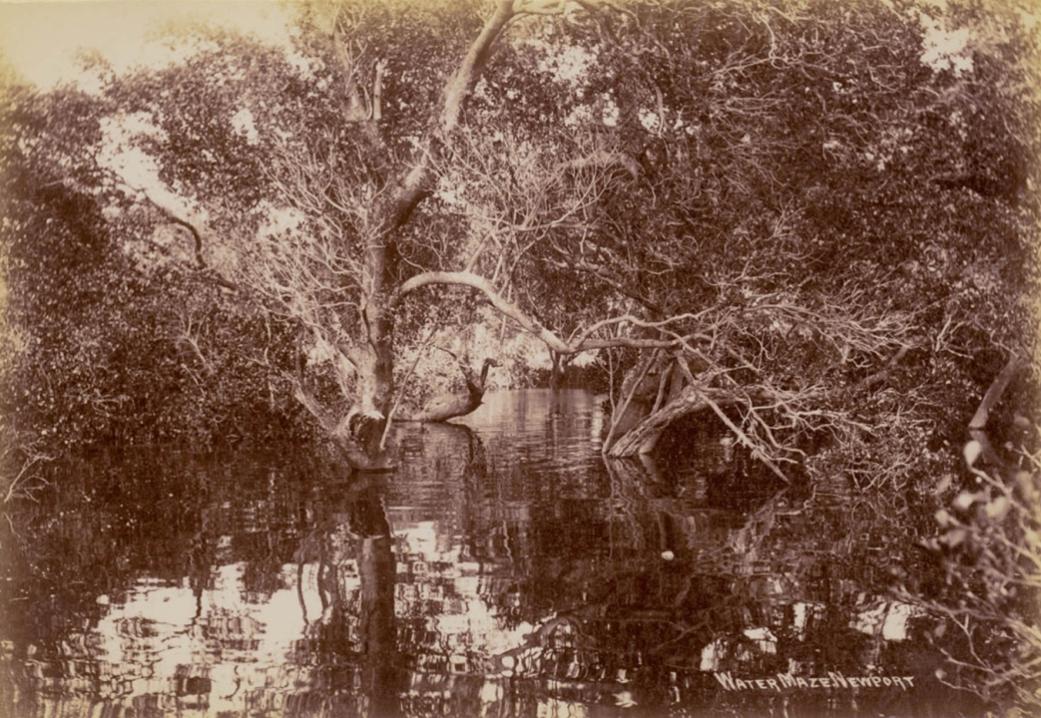
Water maze, Newport , ca. 1900-1910, Images No.: a116496 and a116495, ca. 1900-1910 by Star Photo Co. (possibly by William Livermore) - Unmounted views of New South Wales, [chiefly 1900-1910] courtesy State Library of NSW
This little story by Manly resident Agnes Littlejohn required some artistic sketching by Mick Paul. A quaint short story, a romance, this perhaps indicates the beauty of place attracting those who would interpret such beauty - as well as some of the time reflections of societal mores. We're not sure the item that follows this, regarding Mr. Paul, stems from the Newport sketch- although he does seem to have some accuracies to his profile of the south Newport headland, and, being a resident of Dee Why at one time, possibly did his black and white sketch 'plien air' style on the spot.
The article is yet another prime example of the newspaper 'Truth's selling papers by publishing other's misfortunes, especially when they can have a go at another publication as part of the 'bargain' :
AN ARTISTIC IDYLL,
BY AGNES LITTLEJOHN.
IT was a sunny day, and, the Manly coach had just arrived at Newport, where the passengers alighted. One of them was a girl with light and portable luggage and a paraphernalia of sketching articles. She was soon standing on the front, verandah of a homely-looking old boarding-house which faced beautiful Pittwater, the garden extending to its very banks. Miss Maggie Scott met her expected lodger, and took her to the room prepared for her reception. . After a light lunch the new arrival invited some children to accompany her to the sea. Their path lay across a large enclosure of rough scrub at the back of the house, where they had to avoid the inquisitive advances of an interested bull, and climb a fence or two. Arriving in sight of a fine view of richly-coloured cliff, with a wide beach on which the sea waves foamed and tossed, Maggie found a suitable position near a charming clump of trees growing on the high sloping bank, and soon she was busily sketching.
The children watched her for a time delightedly, but, tiring of it, raced down to play together on the sands. On returning home that evening Maggie met a man, who was just pausing at the garden gate. He raised his felt hat courteously, and stood aside for her to enter first. He appeared at the tea-table that evening, but left the room soon afterwards, and did not show himself again that night. When the girl approached the clump of trees next morning she saw with dismay that the newcomer had annexed her chosen nook, where he was already painting busily in oils. She uttered a suppressed exclamation of surprise, and he looked hastily around. He glanced at her sketching things, and sprang to his feet.
'Ah! You're an artist, too, I see. I'm afraid I've appropriated your sketching-ground. Well, you've first claim, I'm sure.' His- voice was a pleasant, friendly one; his face was young and frank. 'Nature, of course, is free to all,' she answered shyly, colouring. 'Well, why should we not join forces?' he asked, smiling, as the girl stood hesitating. 'Then I needn't be evicted from your territory?' And, taking Maggie's silence for consent, he unstrapped and placed her easel for her near his own.
'By-the-way, I don't know your name. May I ask the favour of it, as we're fellow-workers, and are likely to meet often? Mine is Stewart Thompson. I've come here for a clear three weeks.' 'My name is Margaret Cleeve,' said Maggie, frankly, displaying perfect teeth and a charming little dimple as she smiled, 'and I've come here for a fortnight.' Then he criticised her picture with good-natured interest and candid tolerance. They were soon on the best terms with one another, talking pleasantly, with occasional long lapses into silence when absorbed in some engrossing bit of their own work. 'There's nothing like the Australian winter,' Stewart said enthusiastically in reply to a remark about English scenery, 'for misty effects and the haze. Our scenery, then, is equal to that of the English summer, to my mind. It is the haze that does it: On the brighter days we'vi still in winter here the summer colouring and sunshine plentifully; and we can paint comfortably out of doors all the year round.'
They returned to the house chatting merrily together like old friends. Luncheon parties arrived at the house sometimes, when they were out; and stray visitors occasionally stayed here for the night, but did not interfere with them. On sunny days Maggie painted on the river-side, whilst Stewart absented himself mysteriously on private sketching expeditions. On grey, days they often went together to the sea. On wet days they remained in the cosy sitting-room, where they had many, a pleasant chat. Stewart was busy with some drawings in black and white, and once he sketched Maggie's portrait as she sat reflecting, half-forgetful of his presence and her own surroundings. ,'Jean 'Jean see the difference between my work and yours,' she said one day, after gazing earnestly at Stewart's picture and then back at her own. 'I 'hang fire' in all I undertake, though I love my work. I can't convey my .own impression.' j,;, 'You're attempting to take the citadel of art by storm, -I,. see.' He smiled good-naturedly. 'There's always a .'but' for everyone; there always will be one,' he added 'soberly. * ? .'?May I ask for your opinion of my work?' . 'Your work has originality, a charm and grace, about it of its own— but it is not strong work: You don’t mind my candour?' he added slowly, after a slight pause, glancing keenly at the girl's attentive, downcast face. ‘I know my limitations,' she said frankly, 'and sincerity is the one thing in life that binds true friends together.'
'Then we are friends?' he asked. . with . a quick look. 'Thank you for saying that,' he added softly, with an appreciative glance at her bright, speaking eyes. This time he was quite certain that her delicately heightened colour was not merely due to the fresh breeze that swept by them across the sands. . 'You see, I have to depend upon my own exertions,!' Maggie said. 'I am at last an exhibiting member of the Sydney Art Society, and I take pupils in .my little studio.' 'Well, I, too. have had to struggle. It has been like this with me: ' 'To grasp the skirts of happy chance, and breast the blows of circumstance, And grapple with my evil star.' 'I simply got an opportunity, and took it; and, thank God, I am successful now!' The next day there seemed to Maggie to be a difference in him. He was very silent with her now, she thought. Silence sometimes seemed to Maggie to mean remoteness — separation from him. But sometimes she felt it stood for a secure and strong road leading to a better friendship — a better knowledge of him. One day they had. been working hard and. silently for a long time, when a change came in the weather. A little rain began to fall, and they looked round at the blurred landscape. .'We've had fine days enough,' said Stewart, as it began to drizzle steadily. 'Now there'll be a decided -change. We must hurry home, or you'll get wet.' , They moved beneath the trees for shelter whilst they packed. The rain was pattering fast now, on the leaves. .
'You'll be leaving here the day after to-morrow,' Stewart -said. 'I have another week to stay. Afterwards may, I look, you up at your own home?'
'Yes; certainly!' she answered eagerly, a glad note in her voice. 'My mother will be very pleased to see you.' 'And you?' he asked in a low voice.
There was no answer for a moment but the music of the rain as it pattered on the leaves. 'I will be glad, too,' she . answered, colouring, after one swift, shy glance up at his earnest face. 'Thank you; I'll rely on that,' he said softly, as he took, her hand in his, and held it very gently for a moment.
A gusty wind had risen, and was blowing across the sands. 'The wind is rising now. We'd better hurry home; the weather can't improve, and it may get worse, I see the children have already gone.' A soft wave of her hair was blown gently against his cheek. At the touch he turned suddenly to her. He looked at her wind-tossed hair and sparkling eyes. ''You are wet through,' he said. He felt her coat with a caressing , gesture. His voice was a caress'. She gave a musical little laugh of pure happiness. 'I am warmly clad.' At his gesture of possession she had looked shyly up at him, with a soft, new happiness on her bright face.
The gusty wind died down across the sands. Stewart looked now at the girl's transformed, fresh, delicately coloured face with a new expression in his own. 'I'll speak to-night,' he murmured softly to himself as they turned homeward, unconscious that she heard. She laughed again out of pure happiness. When they reached the house she found that the ' day's mail had brought a letter for her from her mother. As she read it over hastily she turned pale. 'What has happened to you? No ill-news, I hope?' remarked Stewart.' She hesitated. 'I will tell you by-and-bye, if you'll please wait.' He said no more, and she went quietly to her room to think. The creeper waved gently at her window-pane as she stood, and her eyes travelled thoughtfully over the wet garden outlook.
That evening she told him.' 'An uncle whom I never knew has left' us all his money. We shall not be poor any more. Aren't you pleased?' for Stewart had turned from her in silence. She looked after him perplexed arid hurt. : He moved over to the fireplace, arid stood by the mantel-shelf, his elbow resting on it, holding one hand over his eyes. She fancied she heard something like a sigh, so faint that she could not be sure she heard it. As he removed his hand at last the girl looked wistfully at him. 'Are you not glad that we're no longer poor? I thought you would be pleased.' Tears rose suddenly unbidden to her eyes. She forced them back. A sudden wintry look went over her fresh face, and she looked pitifully at him, for his face was strangely hard and stern. There was a sudden crashing sound without, and Maggie hastily put down her book, and went to the window.
'There! Look at that!' A small, tree had been blown down. The verandah blossoms from the creepers came all a-flutter to the ground, and the wet wind went sighing through the gum tree tops beyond the garden to the sobbing accompaniment of rain. Stewart had not moved, and Maggie returned to her seat with an unhappy and impatient gesture. 'You seem so different,' she said. 'Can we not be friends?' . 'How can we be?' he demanded passionately in return, as he suddenly raised his head. 'How is it possible? If I had only done it yesterday before the letter came it might have seemed alright to me to-day.' . 'Done what?' she asked him, flushing. 'Asked you to be my wife! But it is different now.' -She looked at him wonderingly: 'Why should it be different?' she asked indignantly.
'When I believed you to be poor, and struggling at your art, you seemed within my reach. Yesterday,' he said, not heeding or not noticing her indignant gesture, as Maggie flushed and started, 'you and I were equal— I a poor, although not unsuccessful, artist-you an earnest and hard-working student with your way to make. Today I remain the poor artist still, and you — -' , . 'I,' she answered him, indignant tears starting to her eyes, yet with that proud uplifting of her charming head, 'have had a fortune left me. I suppose that's what you mean? ' Oh, you're too proud! But is it fair to me?' 'Don't be unjust to me!'
She looked hesitatingly at the young man as she marked the firm line of his lips. After one quick, comprehensive look at him she pleaded softly: 'Oh, you're too proud to own it, but I know that's what you mean. You let the money weigh against my happiness. I was far happier when I was poor. What good, can this money do for me if I may not pass it on to you? It was chiefly that which made me glad to have it. We've been very happy working here together. I can't see what difference it makes. And I'd rather lose the money than, lose you.'
'Maggie!'
Suddenly, with an impulsive movement he came quickly to her, dropping on one knee beside her.; 'Do you mean it, dear? You care more for me, my love, than comfort and affluence?. You would prefer even poverty with me to wealth without me?' As his lips touched her fresh check in full surrender her arm stole gently round his neck. ...
'Why should we not join forces?' she asked softly.
'He criticised her picture with good-natured interest.'
Paul's Penchant.
BLACK AND WHITE ARTIST'S BAD BEHAVIOUR. HIS EMILY DIVORCES HIM.
A well known Sydney "black and white" artist, named Mick Paul, had his matrimonial conduct under review at the Sydney Divorce Court recently, when his young wife, Emily Annette Paul, formerly Patrick, sought a divorce because of his adultery with an unknown woman. Mr.' Fraser appeared for -petitioner, and the black and white 'un was non est. Petitioner, who was married by Rev. A. Rivett at the Whitfield Congregational Church, Pitt-street, on 6th. Septemper, 1908, said that her Mick was a freelance artist, and used to work for "Fairplay," the "Bulletin," and other journals. He was a son of Lieut. Colonel Paul, who died recently, and at the time of his marriage his mother was travelling on the Continent. Hubby told her that he was born in Paris, and would some day return there to live, but meanwhile they put up with life at Deewhy, Maroubra, and other romantic spots, until October, 1915, when something caused her to leave him. In December of last year, while along with her mother in George-street she saw hubby in the company of a woman, and this woman very much resembled the delineations of a dame appearing in some "Bulletin" sketches. His Honor said this .particular evidence was useless. Mrs. Paul, continuing her brief recital, said she one night later followed hubby to a house in Elizabeth-street, and saw him enter it with the same woman about 7.30. Outside she maintained a vigil for two hours, but no Mick or flaxen-haired Flossie emerged whilst she waited. It was evidently no while-you-wait shop. The succeeding Friday, with her another and a private detective, she again spotted hubby arm-in-arm with the same tart, and entering the same house about 11.30.
Ernest Vane, private detective, told how, toeing put on the scent, he met Mrs. Paul and her mother in Elizabeth-street, and afterwards tracked the respondent, Paul) to 4he "Worker" office. Prom there he followed him to T H Tate's Chambers, where shortly Paul came forth with a woman and went to W the French cafe for an hour, and then T to a house in Elizabeth-street, near the railway. He waited till 11.30, but neither Paul nor his donah came out. At 7 a.m.. next day he -watched again, and about 9 o'clock saw Paul's chivvy at a window on the first floor. He shortly left for a shave, said returned to the house, where a woman could be seen dressing at the same window. Later Paul and this fairy came out together, and after visiting a cafe for breakfast they entered an hotel. Sad to say, the woman later came out sprawling in the street, and Paul magnanimously took her away in a taxi, which returned in half an hour. The spotter said that while he waited outside the house in Elizabeth-street into which Paul and the woman had disappeared, he saw no fewer than four couples enter, and noticed one woman picking up men in the street and lugging them into the house, which in his opinion was not of sanctimonious reputation. Later still, on passing the house, he beheld the very dame who was Paul's companion, standing in the doorway, as though she lived there. Petitioner's mother added her evidence. The suit was stood over for a certificate, and this being forthcoming later - the usual decree nisi was granted, with costs against the black and white 'un. Paul’s Penchant. (
1917, April 21).
Truth (Perth, WA : 1903 - 1931), p. 8. Retrieved from
http://nla.gov.au/nla.news-article210481767
The coach was replaced by buses, and, for those who could afford them - motor vehicles:
AT NEWPORT ON BOXING DAY.
It is a very pleasant run from Sydney to Newport, and will be much more enjoyable when the Spit, bridge is a reality and the wearisome wait for the punt is a thing of the past. Motoring (
1924, January 2).
Sydney Mail (NSW : 1912 - 1938), p. 37. Retrieved from
http://nla.gov.au/nla.news-article166151463
Will Ashton, Near Newport, 1930
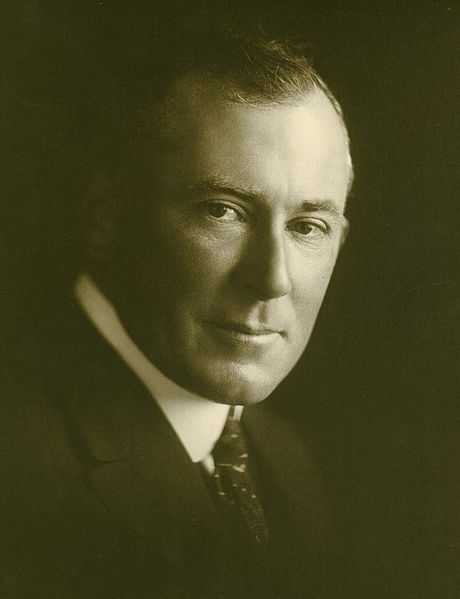 Sir John William "Will" Ashton OBE, ROI
Sir John William "Will" Ashton OBE, ROI (20 September 1881 – 1 September 1963) was an English-Australian artist and Director of the National Art Gallery of New South Wales from 1937 to 1945. B
orn on 20 September 1881 in Clifton, York, England, the son of James Ashton, an artist. The Ashtons migrated to Adelaide, South Australia and was educated at Prince Alfred College from 1889-1897. Upon graduating Ashton entered the life of an artist. In 1900 he left for England to work and spent several years from 1902-1903 at the Académie Julian in Paris.
Ashton had some of his works accepted by the Royal Academy of Arts, London, and the Salon de la Société des Artistes Français and returned to Adelaide in 1905. The sale of his work, "Boulevard Montparnasse, Paris", to the National Gallery of South Australia enabled him to marry May Millman, on 31 January 1906 at Christ Church, North Adelaide. After holding exhibitions in Sydney, Melbourne, Perth and Adelaide, in 1908 he won the Wynne Prize for landscape.
In 1912-14 he painted in Britain, Europe and Egypt. He was back in Australia for a year, but returned to London with his family in 1915 to 1917. Others of his subsequent frequent overseas trips were in the company of Lionel Lindsay or Charles Bryant. The impressionist oil paintings he made on these trips always sold well on his return to Australia. He advised the National Gallery of South Australia and private collectors, and supported his family by examining for the Royal Drawing Society of which he was a member. He won the Godfrey Rivers Bequest prize in 1933 and 1938. Ashton also won the Wynne Prize for a second and third time in 1930 and in 1939.
In 1937 he became Director of the National Art Gallery of New South Wales, and almost immediately had to organize the sesquicentennial exhibition of Australian art. During his tenure he improved the gallery lighting, but other plans were postponed because of World War II. From 1944-1947 he was also Director of David Jones Art Gallery. A member of the Commonwealth Art Advisory Board from 1918, Ashton was chairman in 1953-1962. He was a member of the Royal Institute of Oil Painters, a Vice-President of the Australian Painter-Etchers' Society, and a member of the Society of Artists in Sydney, being awarded its medal in 1944.
He was appointed an Officer of the Order of the British Empire on 1 January 1941 and was made a Knight Bachelor on 11 June 1960 for his service as Chairman of the Commonwealth Art Advisory Board.
Ashton at his home at Mosman on 1 September 1963 after a battle with cancer. He was survived by three sons and by his second wife Winfreda Isabel Hoggard, whom he had married on 6 February 1961. On 9 May 1989, Lady Ashton was murdered in the Sydney North Shore suburb of Mosman by serial murderer, John Wayne Glover.
Portrait in text of Will Ashton. Dated 1921. Courtesy State Library of South Australia.
National Art Gallery of New South Wales.
31st January, 1944.
Director and Secretary. Salary, £850 per annum (subject to deductions under the Superannuation Act). The appointee will be required to carry out usual secretarial and administrative duties. Applicants must have had art training and possess general knowledge of works of modern artists (British Commonwealth, American and Continental) and preferably have travelled abroad. PUBLIC SERVICE BOARD NOTICES. (1944, January 21).Government Gazette of the State of New South Wales (Sydney, NSW : 1901 - 2001), p. 99. Retrieved from http://nla.gov.au/nla.news-article225093175
SYDNEY WOMAN ARTIST'S SUCCESS.
The Adelaide Art Gallery has acquired two lino-cuts by Miss Ethleen Palmer, of Sydney, The two chosen were "Farrell's Shed at Newport,"and "Finches and Gumblossom." Miss Palmer is fond of animal subjects, so that the Zoo is the home of many of her models, and her love of birds is also expressed in her work.
ACTUALLY, she took up lino-cut work as an experiment. She first came to Sydney from South Africa as a schoolgirl, and attended Sydney Girls' High School. Winning an art scholarship at the East Sydney Technical College meant three years of intensive study, in addition to evening work at the Ultimo Technical School. Next came a commercial art post, as well as the evening studies, and after two years Miss Palmer suffered a breakdown in health. It took four years for her to regain her strength, but this time was not wasted, for, as she explained: "It gave me time to think and digest all that I had been taught so thoroughly. Then, one day, I read a book on 'Lino-Cuts,' and thought that I should like to experiment in that medium." After that she abandoned commercial art and turned all her attention to lino-cut fine art.
ORIGIN OF THE LINO-CUT.
LINO-CUT work has been christened "the grand-child of the wood-engraver," for it was evolved from wood-engraving as used by the Chinese and later adopted and improved by the Japanese. Linoleum was substituted for wood, and proved a highly successful medium. At first linocut work was carried out in black and white only, and to an Austrian, Professor Cziek, of Vienna, goes the distinction of introducing colour, in the European manner, to linocut work. Another Viennese, Bressler Rothe, has achieved fame for her mastery of the medium.
Miss Palmer has worked out her method according to the "trial and error" theory. She believes that although it may not be so economical, her practice of completing one print straight through gives individuality and freshness to her work.
Lino-cut work is a branch of art in which, perhaps more than in any other, complete accuracy is required. When the subject is chosen, it is first sketched in charcoal or pencil, and then a very clear tracing is made. Close study reveals how many blocks will be needed, since a separate block is required for each different colour. Six, and often eight, blocks will be used. Each part to be coloured black is numbered one, and everything black is worked out on one block, and so on, each block having its own numeral. The artistry is in the balance and rhythm between colour and form the whole making a harmonious pattern.
Being her own handy-man, Miss Palmer saws a plank of wood into blocks, and then linoleum is cut to match and "fixed" to the blocks with glue.
MISS ETHLEEN PALMER at work in her studio.
This must be arranged with the greatest accuracy to fit a special frame which Miss Palmer has in-vented. As one colour is superimposed upon another, a millionth part of an inch out of "plumb" would spoil the whole effect. When the linoleum is mounted and in its frame, the tracing of the subject is transferred to It, and then all is ready for cutting it out. This is the most difficult and delicate of all the operations, as the slightest mistake would ruin the whole block.
Art is not Miss Palmer's only interest, for she is an excellent cook, loves gardening, and collects books. She is also fond of adopting sick and injured birds or animals, and her "hospital" includes a beautiful large cat, which was once a kitten with a broken back, and her dog, "Winky," is minus an ear.SYDNEY WOMAN ARTIST'S SUCCESS. (
1936, July 28).
The Sydney Morning Herald (NSW : 1842 - 1954), p. 4 (Women's Supplement). Retrieved from
http://nla.gov.au/nla.news-article17255589
"Farrell's Shed at Newport," 1935 - 19 x 29 cm - 20 from an edition of 20, courtesy Mutual Art, Artists, Auctions, Exhibitions and Analysis. Compare colour difference with National Gallery of Australias copy - Impression: 5/20 Dimensions: printed image 19.0 h x 29.3 w cm sheet 26.8 h x 36.6 w cm Acknowledgement: Purchased 1976
Ethleen Palmer, The Homestead, 1937- linocut 17 X 21.5 cm, 6 from an edition of 50,
Max Dupain
One of Newport's regular residents, who has given us images of this place we wouldn't have without him, is photographer Max Dupain. In this gentleman we move from the wonderful images of Pittwater wrought by Kerry et al to photography becoming an artform that captures the human spirit and its characteristics of a more modern Australia.
Max Dupain (1911-1992) was one of Australia’s great modernist photographers, credited with changing Australian photography from Pictorialism to Modernism. He took up photography as a teenager and studied at the East Sydney Technical College and Julian Ashton School. From 1930-34 he assisted Cecil Bostock, before establishing his own photographic studio in Sydney. Throughout the 1930's and 40's Dupain was best known for his fashion illustrations, advertising and social portraits which were regularly published in ‘The Home’ magazine (Sydney Ure Smith) until it ceased publication in 1942.
During World War II, Dupain served in the Royal Australian Air Force and worked as a photographer in the Department of Information, Canberra. After the War, he aligned himself with the documentary movement in photography. His later work subjects capture architectural and industrial work.
Max Dupain, 'Nine Mile Store', Newport, circa 1930
Reconstructed Eleven Mile Store (
Porters Store) - courtesy Guy Jenning's
The Newport Story 1788 - 1988
Why did Max have such an insight into the human form, and its communion with Nature - these few articles regarding his father may lend insight:
Polynesien, French mail steamer, 7120 tons, Captain L. Boulard, Lieut, do V., from Marseilles May 3, Port Said May 8, Suez May 0, Aden May 18, MahG (Seychelles) May 17, Albany May 28, Adelaide 1st instant, and Melbourne 3rd instant. Passengers— From Marseilles for Sydney: M. Dupain,SHIPPING. (
1891, June 13).
The Sydney Mail and New South Wales Advertiser (NSW : 1871 - 1912), p. 1308. Retrieved from
http://nla.gov.au/nla.news-article163657248
BRAIN AND PHYSIQUE
Illustrated Booklet, now in press, descriptive of Psycho-Physical Culture by Principals Dupain-Cox Institute. Advertising (
1907, November 11). T
he Sydney Morning Herald (NSW : 1842 - 1954), p. 2. Retrieved from
http://nla.gov.au/nla.news-article14879699
DUPAIN—FARNSWORTH.—April 30, at St. John' s Church, Ashfield, by the Rev. A. Yarnold, George Zephirin, eldest son of George Zephirin Dupain, of Charenton, Ashfield, to Ena, only daughter of Susan and the late Henry Farnsworth, Rothsay, Ashfield. Family Notices (1910, May 28). The Sydney Morning Herald (NSW : 1842 - 1954), p. 12. Retrieved from http://nla.gov.au/nla.news-article28142722
DUPAIN.-April 22, 1911, at Symington, Parramatta-road, Ashfield, the wife of George Z. Dupain, jun.- a son. Family Notices (
1911, April 29).
The Sydney Morning Herald (NSW : 1842 - 1954), p. 12. Retrieved from
http://nla.gov.au/nla.news-article15228010
PHYSICAL CULTURE.
GEORGE Z DUPIAN
Here is a circular from a 'Physical Culture Expert' which appeals to me very much. It shows what can be done with the human frame, when an expert takes it In hand. City life leads to decadence and deterioration, and men are learning that something has got to he done to stop the spread of the deadly blight which affects the city-bred physique. Here is a man who is showing how it can be done, and what can be done, and It is quite wonderful. His place is at Royal Chambers, Castlereagh street, and it's worth going to see. PHYSICAL CULTURE. (
1909, October 8).
The Sydney Stock and Station Journal (NSW : 1896 - 1924), p. 4. Retrieved from
http://nla.gov.au/nla.news-article125758566
Physical culture magazine.
THE "DUPAIN QUARTERLY."
The "Dupain Quarterly"— "a magazine for those seeking better health, greater strength" — has been Issued. The editor is George S5. Dupain, of the Dupain Institute of Physical Education, and the co-editor is Miss Muriel Cadogan. There are articles on chest development, the carriage of the head and improvement of the contour or the neck, physical culture for women, mountaineering as an ideal sport, and the art of boxing. Many excellent photographs are reproduced. Including several of art statuary. The artistic cover design is by Harry J. Weston, and there are also a number of drawings by the same artist. Messrs. Arthur Smyth and Sons, advertising experts, of Jamieson-street, city, are responsible for this highly creditable production. PHYSICAL CULTURE MAGAZINE. (
1912, September 24).
The Sun (Sydney, NSW : 1910 - 1954), p. 5 (FINAL EXTRA). Retrieved from
http://nla.gov.au/nla.news-article228814090
PHYSICAL EDUCATION.
REMEDIAL AND DEVELOPMENTAL.
HOMES VISITED. C. MAX COTTON, B.Sc.,
LATE ASSISTANT DUPAIN lNSTITUTE.
Is this one of Max's first published pictures?:
FAIRY PENGUIN.
FOUND ON NEWPORT BEACH.
Mr. George Z. Dupain, of Newport, has forwarded to the Editor a photograph of a young penguin, which was washed up on the southern end of Newport Beach. The bird was about 15 inches long. Mr. Dupain asks to be informed where the bird came from.
Mr. J. R. Kinghorn, zoologist at the Australian Museum, Sydney, stated yesterday that the bird was a fairy penguin, which bred at this time of the year on parts of the eastern coast. These penguins do not usually travel north of Port Stephens, there being only one instance on record of the fairy penguin being found north of that part of the coast. In the winter time the birds migrate to the islands of Bass Straits. The king penguin, a much larger bird than the fairy penguin, does not come out of the Antarctic regions. FAIRY PENGUIN. (
1928, January 21).
The Sydney Morning Herald (NSW : 1842 - 1954), p. 16. Retrieved from
http://nla.gov.au/nla.news-article16435515
Of course, many Pittwaterians know that fairy penguins frequent our beaches - there's a colony, of another sort - no pun intended, on Lion Island that has resided there for generations - currently protected and monitored by the NPWS:
Lion Island reservation
A suggestion to have Lion Island, at the mouth of the Hawkesbury River, declared a bird sanctuary was supported .by last meeting of the Gosford Fauna and Flora Protection Society.
In asking tor this support, the Royal Australian Ornithological Society said that colonies of two species of shearwater gulls had been found on the island representing one of the only two known nesting places of the breed. There were also some fairy penguins. In view of what happened at Terrigal and Avoca, Lion Island Sanctuary could have distinct value. "I am not certain that the Terrigal incidents are due to human misbehaviour," Mr. R. Wallace commented. Lion Island reservation (
1954, November 23).
The Gosford Times and Wyong District Advocate (NSW : 1906 - 1954), p. 4. Retrieved from
http://nla.gov.au/nla.news-article162872258
ILLUSTRATED HEALTH TALK
Using motion pictures and slides to illustrate his theme, Mr. George Z. Dupain, (director of the Dupain Institute of Physical Education), will give a health lecture in the sports department at Anthony Hordern and Sons, to-morrow, from 7 p.m. to 8 p.m. ILLUSTRATED HEALTH TALK (
1931, October 15).
The Sun (Sydney, NSW : 1910 - 1954), p. 13 (FINAL EXTRA). Retrieved from
http://nla.gov.au/nla.news-article223665899
Max Dupain with his parents at Newport, 1940's. Image No.: nla.obj-146283059-1, courtesy National Library of Australia
THE SCIENCE OF PT
Exercise and Physical Fitness,
by George Dupain. Shakespeare Head Press, 20/.
THE bone - shaking, muscle-pulling jolts which often pass for physical culture, the practice of hard long-distance running for schoolboys, the advent of women into the strenuous exercise field are rated most unfavourably by George Dupain, Sydney physical educationist.
And by way of good measure, he disparages the crack-of-dawn exercise habit, and the fetish of the massive muscle bound man. "There is no further need for highly developed muscles," he says. "These belong to the primitive past."
He states a perfectly clear case in rather technical terminology for a more selective approach to physical exercise, basing his premise on a carefully worked out analysis of the human respiratory system, cardio-vascular system, and the muscular and skeletonic structure.
His aim is to have physical education classified as a science and treated as a university subject, a reasonable ambition in the light of the evidence he submits on the general haphazardly of PT in Australia.
Not that he visualises a nation of club-swingers giving mass health and beauty displays. He is firmly in favour of "free impulsive natural exercise.". THE SCIENCE OF PT (
1949, January 15).The Argus (Melbourne, Vic. : 1848 - 1957), p. 9. Retrieved from
http://nla.gov.au/nla.news-article22696564
Value Of Wholemeal
Sir,- In reply to Miss Geach's defence of wholemeal ("Herald," August 23): Cereal chemistry has revealed that grains can only function as a supplementary food in any scheme of dietetics which aims at optimum nutrition for the individual.
Nutrition studies in India showed the meat-eating peoples to be stronger and better developed than the grain-eating ones.
The Danish Cereals Commission proved that during 1946 amongst Copenhagen workers there was a 30 per cent. daily loss of calcium due to the war bread then used. The evidence is endless against the seed diet.
Australian Posture
Sir,-Your article of Jan 18, "Australians are not an Up-standing Race," was highly commendable Mr. Maegraith (' Herald " January 21) has completely misunderstood the data it contains
It was a dissertation on posture, not physical development. The two need not be synonymous. Many a man has a well developed physique but an atrocious posture, and this is quite a common phenomenon amongst any modern population.
Our occupations to day from factory work to indoor clerical pursuits make us continually bend forward. Our bodies are always more or less flexed Unless this is corrected by adequate physical education, in time various "stoops" develop
GEORGE Z. DUPAIN.
Newport Beach.
DUPAIN (nee Illingworth)-November 22 at Crown Street Hospital to Diana and Max-a daughter. Family Notices (
1950, November 24).
The Sydney Morning Herald (NSW : 1842 - 1954), p. 22. Retrieved from
http://nla.gov.au/nla.news-article18188131
The Dr. Cotton, working with Max's father, was a relative of the gentleman whose daughter Olive later married Max. Why is the Cotton family likely to have been an influence on Max's appreciation of the human body in his photography?:
Their father, Frank Cotton, who lived in a Von Hagen built house at 45 William Street, Hornsby. Frank Cotton, journalist, who wrote under the nom-de-plume ‘Porkibidni’ was father to Leo, Frank and Max Cotton.
Death of Frank Cotton
Labor lost one of its pioneer stalwarts by the death of Mr. Frank Cotton, which occurred in Sydney recently at the age of 85 years. He was probably the oldest Labor journalist in Australia. Born in Adelaide, he travelled much over this continent, following such occupations as droving and grazing, before entering into journalism, which was truly his metier. The greater part of his serviceable life was spent in New South Wales.
During the maritime strike of 1890, Mr. Cotton edited a newspaper which was run in the interests of the seafaring workers against the shipowners.
He was one of the first batch of Labor candidates who were elected to the N.S.W. Legislative Assembly in 1891. He sat in several of the then colonial Parliaments, but was engaged in journalism for the last three or four decades.
As a writer Mr. Cotton was sincere, convincing, and logical. He performed great work for the anti-conscription cause in the two campaigns that were waged during the 1914-18 war.
Mr. Cotton is survived by three sons and three daughters. The eldest son is Dr. Leo Cotton, Professor of Geology and Dean of the Faculty of Science at the Sydney University. Another son, Dr. Frank S. Cotton, is Professor of Physiological Research in the Medical School at the same University. Death of Frank Cotton (
1943, January 1).Westralian Worker (Perth, WA : 1900 - 1951), p. 1. Retrieved from
http://nla.gov.au/nla.news-article148421028
Yes, that Dr. Frank Cotton - widely considered to be the 'Father of Sport Science' in Australia. The Marriage between these childhood freinds did not last unfortunately:
The Lady Behind the Lens
Young Sydney Artist Discusses A Hobby for Women.
SIX women are represented at the Sydney Photographic Society's International Exhibition which opened in Sydney on Wednesday.
Among them is Miss Olive Cotton, a local amateur photographer, who has twice exhibited at the London Salon. The pictures on this page are examples of Miss Cotton's work.
In an interview yesterday, in which she discussed photography for women, Miss Cotton said that the woman's viewpoint can be captured by the woman behind the camera. She believes that women are doing photographic work comparable with that of men.
"How many women," she said, "say at one time or another that they are bored? Yet they could find endless enjoyment with a camera assisted by eyes that are not inartistic".
"I consider that here is a field where women could do good work – work which has its reward in the production of a good picture."
MISS COTTON Is an attractive young woman with a penchant for art in several forms and a firm belief in women expressing themselves through an art medium. She was precipitated into photography at thirteen years of age when she found that an inclination towards graphic art was in her case handicapped by an apparent lack of talent with brush and pencil. Her first camera was of a box type, but she now uses a more involved reflex camera; her first enlarging apparatus was made from a biscuit tin operated from an electric iron contact; and the laundry draped with rugs was her first dark room. Now she has at her disposal one of the best-equipped photographic dark rooms in Sydney.
The Right Spirit.
Women who potter about with a box camera photographing any landscape that appeals to them have the right spirit because they are expressing themselves rather than merely making tourist bureau records of beauty spots, Miss Cotton said. Those who want to express themselves and have no talent for painting or drawing will find as I did that photography is an excellent medium. It is a universal art form comprehensible to every-body within the reach of all.
The names of women are appearing more and more in the photographic annuals of the world and some of the important Continental exhibitions have included the work of as many as a dozen amateur women photographers. I believe that photography will soon be used as a medium for design. It will provide a field for women who have mastered the technique of modern photography.
Some Advice.
"ONE thing that women who wish to become good photographers should remember", Miss Cotton continued, "is that the camera can do more than merely record an unchanging picture of a subject. A landscape, for instance, is there for everyone to photograph - an apparently change-less combination of earth, and trees, and grass; but it can be photographed in a hundred different ways".
"The lighting, the relation of the various objects to the shape of the picture, and many other factors can be changed by the individual, and this is where discernment and personality come into the picture, as it were".
"I noticed at the exhibition of English pictures in Sydney a few weeks ago that a series of landscapes by a well-known woman photographer was obviously the work of a woman. One, in particular, was a picture of snow with a pattern of shadows. The approach was essentially feminine.
A man could never have seen that landscape as she did".
In the Dark Room.
"EVEN the casual hobbyist", Miss Cotton declared, should develop and print her own pictures. Otherwise, it would be an expensive hobby and in any case, the treatment during these processes can always make or mar a picture.
To become efficient at developing, printing and enlarging, experience over a number of years and constant practice are needed to make the most of one's opportunities.
"One of the commonest and most serious mistakes made by the inexperienced photographer is the tendency to take a dozen pictures of an object in the hope that one will be good. I find it much more satisfactory and less expensive to take one carefully considered and planned picture".
A study of MISS COTTON by Max Dupain.
Miss Colton believes that more women should employ the camera as a hobby.
The Tea Cup Ballet
At the left is a study by Miss Cotton of the Budapest String Quartet. The other pictures on this page are examples of this talented young woman's work.
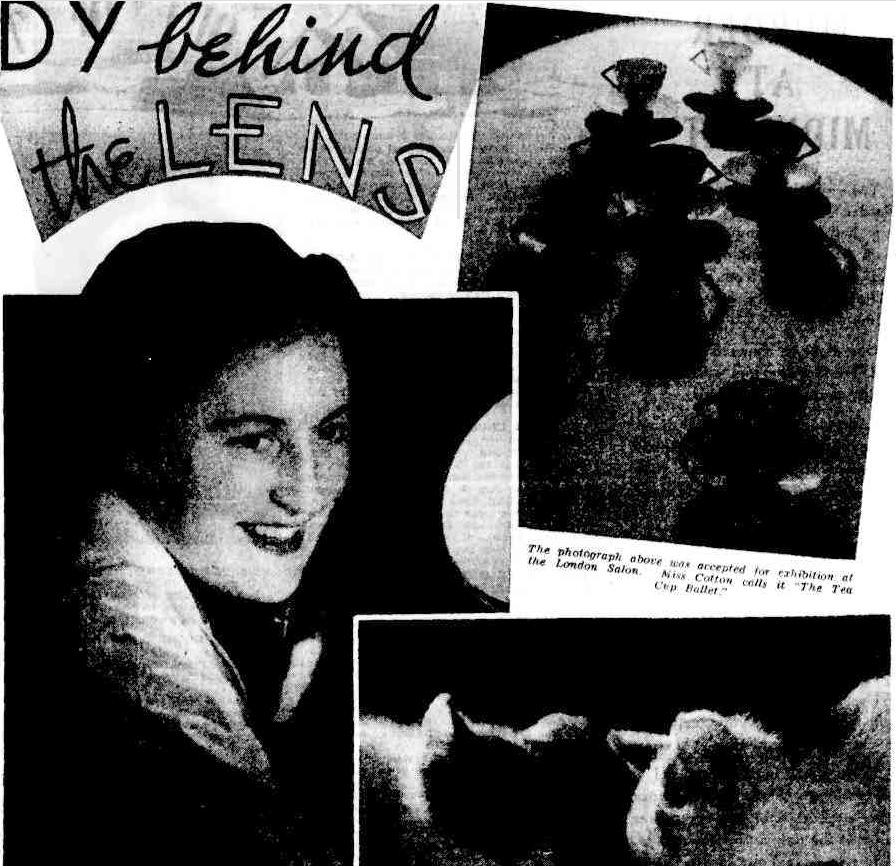
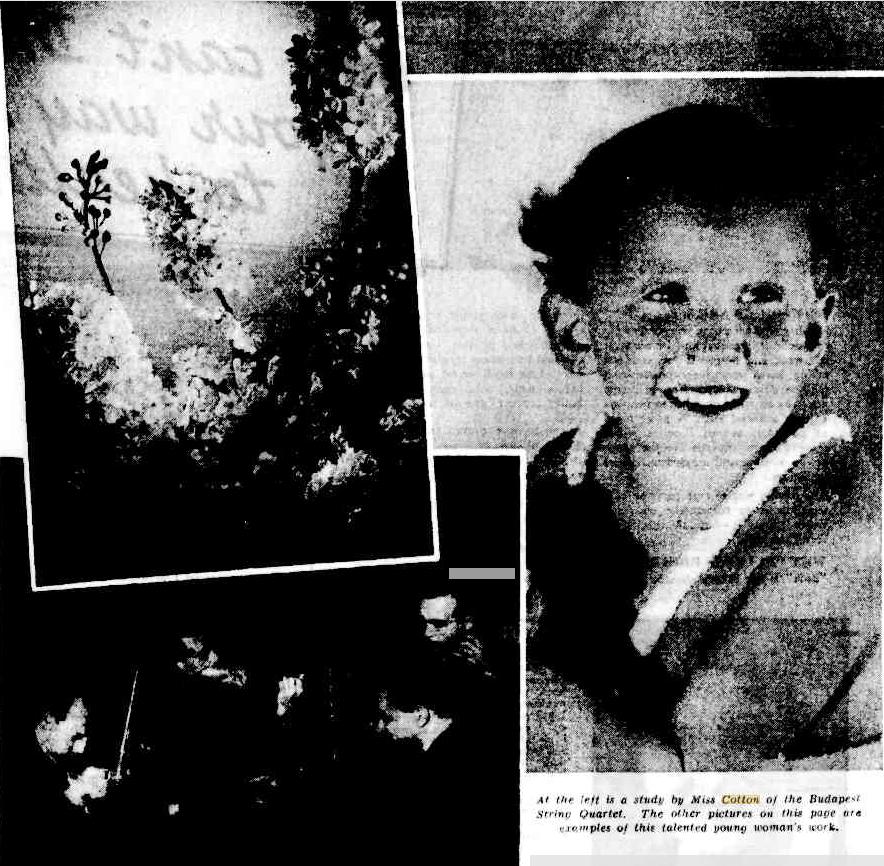
Olive Edith Cotton, born on 11 July 1911, was the eldest child in an artistic, intellectual family. Her parents, Leo and Florence (née Channon) provided a musical background along with political and social awareness. Her mother was a painter and pianist while Leo was a geologist, who took photographs on Sir Ernest Shackleton’s expedition to the Antarctic in 1907. The Cotton family and their five children lived in the then bushland suburb of Hornsby in Sydney's north. Despite the reference above, many biographies on the lady state she was given a camera at age 11.
Cotton joined The Sydney Camera Circle and the Photographic Society of New South Wales, gaining instruction and encouragement from important photographers such as Harold Cazneaux. She exhibited her first photograph, "Dusk", at the New South Wales Photographic Society’s Interstate Exhibition of 1932. She exhibited quite frequently, her photography was personal in feeling with an appreciation of certain qualities of light in the surroundings. After university she pursued photography by joining Dupain at his new studio, 24 Bond Street, Sydney. Her contemporaries included Damien Parer, Geoff Powell, the model Jean Lorraine and photographer Olga Sharpe, who frequented the studio.
Olive Cotton - Tea cup ballet, 1935 - held by the Art Gallery of New South Wales
Her most famous image is Tea cup ballet (1935), photographed in the studio after Cotton had bought some inexpensive china from Woolworth's to replace the old chipped studio crockery, shows her use of a technique of backlighting to cast bold shadows towards the viewer to express a dance theme between the shapes of the tea cups, their saucers and their shadows. It was exhibited locally at the time and in the London Salon of Photography in 1935. Called Cotton's signature image, the Modernist image was acknowledged on a stamp commemorating 150 years of photography in Australia in 1991.
Olive Cotton, The patterned road, 1937
Gelatine silver photograph 24.6 h x 28.8 w cm. inscribed in pencil l.l.: The Patterned Road '37
National Gallery of Australia, Canberra. Purchased 1983
Max Dupain [picture] by Olive Cotton, 1938 - Image No.: nla.obj-136348086-1, courtesy National Library of Australia.
The marriage was quietly celebrated on Saturday morning of Miss Olive Cotton, elder daughter of Professor L. A. Cotton, of Hornsby, and of the late Mrs. Cotton and Mr. Max Dupain, son of Mr. and Mrs. George Z. Dupain of Ashfield. The ceremony took place at the bride's home.
Sydney Morning Herald (NSW : 1842 - 1954), Monday 1 May 1939, page 5 SOCIAL AN PERSONAL. (
1939, May 1).
The Sydney Morning Herald(NSW : 1842 - 1954), p. 5. Retrieved from
http://nla.gov.au/nla.news-article17588638
The Australian Dictionary of Biography (
Damien Peter Parer by Neil McDonald -2000) states 'His employers included Max Dupain, who was then married to another photographer Olive Cotton; the couple became his friends and collaborators.'
Business As Usual
But Not On Home Front!
A STRANGE state of affairs in the matrimonial lives of Maxwell Spencer Dupain (32), well-known Sydney photographer, of 49 Clarence Street, and his pretty wife, Olive Edith Dupain (30), was revealed in the Divorce Court last week, when Dupain sought a decree for restitution of conjugal rights. Dupain, who is at present engaged in defence work, told Mr. Justice Edwards that although Mrs. Du-pain has left him and refuses to return, she is managing his studio and, in addition to a fixed salary, is receiving a share of profits. "I don't love you any more," his wife said to him when she walked out on him in August, 1941, Dupain declared. Mrs. Dupain, daughter of Sydney University Geology Professor L. A. Cotton, was married to Dupain at the home of her father at Hornsby in April, 1939.
Job In Country
Dupain said that before he married her Mrs. Dupain was employed at his studio. After 12 months of married life she returned to her old job at the studio, but six months later she told him she wanted to live an independent life and get a job in the country. Despite his protests she took a position as mathematics mistress at a country school. For some time she came home at weekends, but in August, 1941, she told him she did not propose to come home for any more weekends.
"Please don't do that," he appealed to her.
"I am afraid I must do it. I don't love you any more." she replied. Telling of repeated but unsuccessful efforts to induce his wife to return, Dupain said that in May, 1942, he wrote to her in this strain:
"It was good to see you again the other day after so many months. You fairly shone with your new blue frock and buff coat. The difference this strange separation has made to me is so apparent that life has never been the same since you left me — it has lost its fullness completely. I do want you to come back. Dick and Rosie were over last week and they missed your funny little ways." Dupain explained that Dick and Rosie were mutual friends. He received no reply to the letter, but one day he met her by appointment and took her to lunch. She was very friendly towards him, but rejected all his entreaties to return home. Mr. Justice Edwards ordered Mrs. Dupain to return to her husband within 21 days. Mr. E. Little for Dupain.
Max Dupain
Max remarried in 1944 (some sources state 1946 and 1947), this time with happier results, including children - a daughter and a son, Danina and
Rex, who also became a photographer.
NSW Records of Births, Deaths and Marriages records the as having married in 1944:
22138/1944 DUPAIN MAXWELL SPENCER ILLINGWORTH DIANA PALMER registered at CHATSWOOD
His second wife, Diana, was an artist too who took up social work after their marriage. Friend
Damien Parer replies to Max in February 1942, while on a voyage back to Australia from New Guinea:
From Kokoda Front Line, by Neil McDonald. Published by Hachette Australia, 2012. (Footage shot by Damien Parer in Papua New Guinea was subsequently edited to make the Academy Award winning documentary film 'Kokoda Front Line!')
Cover of AUSTRALIA: 150 PHOTOGRAPHS
In 1949 the couple commissioned architect Arthur Baldwinson to design their home in The Scarp, Castlecrag. They moved into their new home in 1953 and Dupain remained there for the rest of his life.:
DUPAIN (nee Illingworth)-November 22 at Crown Street Hospital to Diana and Max-a daughter. Family Notices (
1950, November 24).
The Sydney Morning Herald (NSW : 1842 - 1954), p. 22. Retrieved from
http://nla.gov.au/nla.news-article18188131
His perspective on photography is best told by him of course:
You are Photogenic, really...
June Dally-Watkins, one of the outstanding models in Sydney for photographic illustration. Max Dupain says that she possesses the characteristic features required—facial symmetry, fine skin, eyes clear and wide spaced, good teeth—and a naturalness of expression.
DO you believe it is the mysterious "something" in other girls' faces, lacking in your own, that ensures their photographs always do them more than justice?
Is it this "something" that helps them, while your own photographs do not reproduce even the humble but passable beauty your mirror reflects to anxious scrutiny?
You think, most probably, that it is a matter of the balance of features—eyes large and widely-spaced, nose not too prominent, mouth symmetric-cal and neither too large nor too small. You have heard that a gauntness of feature, high-cheekboned and hollowed beneath, so that there are marked highlights and shadows, is important, and that an oval-shaped face interests the photographer more than one which is round.
Your ideas are not altogether right. It is true, enough that the term "photogenic" means, loosely, that which has the quality of photographing well, but Sydney photographer Max Dupain will tell you that any face can "photograph well."
'"It is not a matter of high cheekbones or physical characteristics," says Dupain. "If the photographer understands his medium any person is photogenic. There is a tendency to confuse the term with the word glamour, which is a thing of fashion, subject to change, and which may, of course, be related to physical characteristics. That is not photogenic.
"Character," says Dupain, "is what I am interested in. I like to think of the camera as a machine to render a thing clearly.
"Motion picture photographers endeavour to fit all types in with their own idea of beauty. Their purpose is not simply to clarify, and quite wrongly the term photogenic becomes tangled up in the popular understanding with questions of make-up and facial characteristics."
AND Dupain goes further. "Corrugated iron is photogenic!" he says. "In fact the term has a much closer application to the qualities to be found in architecture, say, than it has to glamour girls.
"In complete definition the word photogenic means 'eminently suitable for being photographed; especially from an aesthetic point of view,' and the camera, itself a machine, is best suited to the portrayal of those other things mechanical thrown up around it by the machine age."
Dupain will hurry on to quote from G. H. Saxon Mills to illustrate his point: "Photography is as essentially 'modern' in its character as it is modern in its time . . . Its forms are mechanistic rather than naturalistic . . . But its beauty is only for those who themselves belong consciously and proudly to this age, and have not their eyes for-ever fixed wistfully on the past."
THAT," says Dupain, "points clearest to where the photogenic can be found.
"If you must get back to the photogenic qualities of women—balance of features, fine skin texture, high cheekbones: Yes, perhaps.
"But what is more important is the naturalness, but what is this subtle quality people call ''photogenic" ... ? the animation of the model—the extent to which she can co-operate with the photographer; her sophistication perhaps.
Any face can photograph well—but so can a piece of corrugated iron.
The photogenic illustrated in the abstract shapes found in functional machinery, and in the variety of texture in the metallic surface.
"Some girls look stiff and awkward. They merely stare at the camera without expression, or their eyes have a tendency to close when they smile.
"They photograph poorly — not because they are not photogenic, but because they are self-conscious and they react against the camera."
All photographs by Max Dupain
The exciting and dramatic aliveness of glass-ware in its reflected light, subtlety of tone, and mechanical symmetry. You are Photogenic, really... (1
949, March 20).
The Sunday Herald (Sydney, NSW : 1949 - 1953), p. 3 (Magazine Section). Retrieved from
http://nla.gov.au/nla.news-article18465378
It is his images capturing the human form in the outdoor world, communicating much through little, as only a great photograph can, that we remember Mr. Dupain for - and for all who think he is outdated - we beg to differ - his 1937 the '
Sunbaker' remains the most widely recognised of all Australian photographs. A copy of
Sunbaker from the Dupain family's own collection sold for AUD105,000 in June 2016. Explore his prolific and wonderful works by visiting:
http://www.maxdupain.com.au/
Mr. Dupain's iconic captures of our lives, that's why everyone knows them and people still want a copy for their own walls. His repertoire included landscapes, beaches, nudes, still life and architecture. He was regarded as the pre-eminent photographer of Australian architecture for more than 50 years, but Dupain remains best known for his photographs of Australians, particularly our beach culture:
A show of outdated images
By HELEN ENNIS
Images of Work and Leisure. Parliament House, Canberra, daily till April 17.
ONE OF the central artists in the mixed-media exhibition Images of Work and Leisure is photographer Max Dupain. His At Newport is featured on the exhibition poster and brochure.
Dupain's love of Australia was constantly reiterated in his professional and personal lives. But his images of Australia now seem more stereotypical than real, an impression reinforced by this exhibition.
Images of Work and Leisure presents a predominantly Anglo Celtic, male view of Australian culture - one that might have had currency in Dupain's lifetime but does no longer. Leisure, for example, is oriented towards the beach and what have been the predominantly male sports of cricket, golf and horse racing. The concern is with public rather than private forms of leisure.
Dupain's photograph of the start of the Surfrace at Manly, 1945, is charged with excitement. Dupain was standing in the water as the eager participants rushed in. The physicality of the lifesavers attracted him; they were fit, healthy men who were at home in the great Australian outdoors .
This veneration of lifesavers belongs to another era. There is no irony in Dupain's depiction: the image of the lifesaver was yet to become a cliche. ....
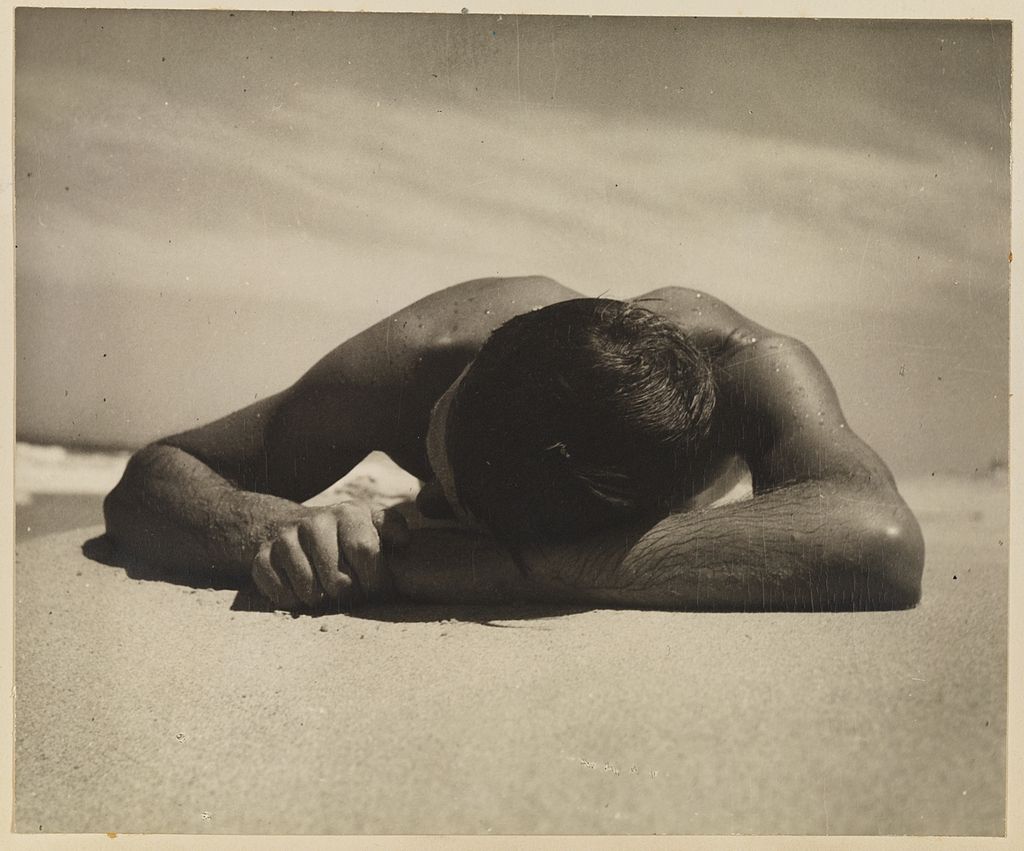
Sunbaker, (first version with clenched fist) by Max Dupain, 1937-1948 silver gelatin print, from 1937 negative, album:'Camping trips on Culburra Beach, N.S.W., 1937 / Max Dupain and Olive Cotton' courtesy Mitchell Library, State Library of New South Wales. Image No.: a9668019h
At Newport 1952; printed (c. 1975) Max Dupain
39.8 × 44.7 cm (image), inscribed in ballpoint pen on support reverse u.l.: At Newport / - Max Dupain '52
Courtesy National Gallery of Victoria, Melbourne. Purchased with the assistance of the Visual Arts Board, 1976
In mid-1947 Olive Cotton went to live in the bush 35 km from Cowra, New South Wales, with her new husband Ross McInerney, brother of one of the Dupain studio models, Jean. They lived in a tent for the first three years, then moving to a small farm where their two children grew up. She taught Mathematics at Cowra High School for five years until 1964 when she opened a small photographic studio in the town, taking many portraits, wedding photographs, etc., for people in the surrounding district, where her work became well-known and much appreciated.
It would come as no surprise that place so beautiful would attract visiting Artists and Artists as residents.
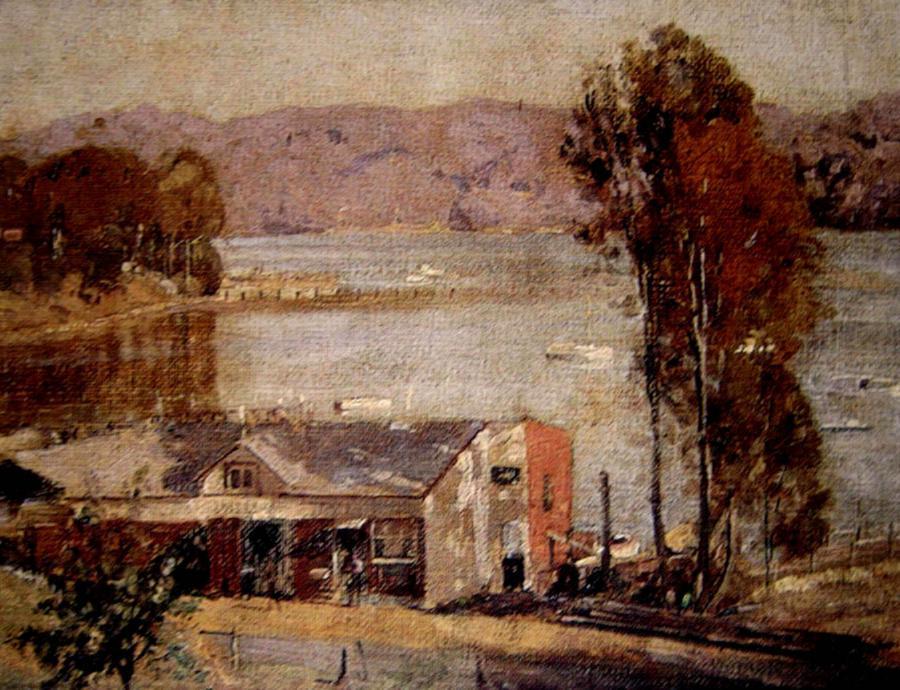
ART EXHIBITION.
MR. PERCY LINDSAY'S PICTURES.
Mr. Percy Lindsay reveals his breadth of style with telling effect in his exhibition of oil paintings at the Australian Fine Art Gallery of Mr. W. R. Bennett. There is remark-able variety in these pictures, all of con-spicuous attainment in colour and atmosphere. Mr. Lindsay has studied nature in varying moods, and has caught her spirit with manifest fidelity. His treatment of sunshine in "St. Augustine's, Balmain," "Morning Light, Berry's Bay," and "Winter Afternoon, Bay-view," is singularly graphic. In the first of these he skilfully shows the morning sun sweeping over the green slope of the fore-ground, and catching the points of the scene in the middle distance as it struggles with the early mists, which still obscure the back-ground and throws into deep shadows the lofty tower of the building. The second subject exhibits similarly deft handling of light and shadow beneath the advancing sun, and in "Winter Afternoon, Bayview," the foliage of the slopes, with the light streaming through, is admirable.
Mr Lindsay has imparted full life and movement to "The Bridge Builders," one of the features of the exhibition. This subject, painted from a height immediately above the works now proceeding at Dawes Point, gives a vivid impression of the magnitude of the harbour bridge enterprise in the big spaces he has managed to include in his canvas, for the spectator gazes from above at lofty structures of masonry and steel, with the earth at a vast distance below, and in the distance the opposite shore of the harbour. All is spacious, massive, and full of movement. The suggestion of busy life and industry is unmistakable. This is, indeed, one of the best pictures yet shown of the bridge works. The artist who has painted this could hardly have shown his versatility more effectively than in painting also the peaceful and charming "Morning from Ball's Head," a beautiful parorama of harbour and shore seen in the luminous grey tones, against the sun, with the jutting point in the middle dis-tance thrown into shadow. This is another feature of the exhibition. But there are several examples of this variety of moods. In contrast, for example, to "Morning at Ball's Head" there is the severe brilliancy of "Ship Yards, Berry's Bay," formal, and almost cold in its realism; and then, to furnish another phase of Mr. Lindsay's artistic study of earth and sky, there are the three rural scenes, companion pictures, "Watering Tomatoes," "The Market Garden," and "Planting Cabbages," all genuine composi-tions, happy in design and colour. Such studies as "Riddle's Boatshed," "The Grey Cottage," and "The Hayshed" fitly exemplify in further degree the artist's diverse style, and sound technique. "The Mountain Road," a bit of landscape cast into deep tones be-neath a storm-laden sky, through which the sun is fitfully breaking, is another excellent piece of work. ART EXHIBITION. (1927, July 5). The Sydney Morning Herald (NSW : 1842 - 1954), p. 14. Retrieved from http://nla.gov.au/nla.news-article16370289
Not the only work Percy Lindsay did of Andrew Riddle's boatshed it seems:
"Morning, Riddle's Jetty" is distinguished for its bright, sunny treatment, and for the skill with which the artist has man-aged the water reflecting the brilliancy of the sun. The effect would have been better, however, without the clothing hanging out to dry on the boat at the pier, as this falls directly into the line of sunlight. There is moreover, some smudginess in the vessel's rigging. ART EXHIBITION. (1929, March 20). The Sydney Morning Herald (NSW : 1842 - 1954), p. 13. Retrieved from http://nla.gov.au/nla.news-article16539540
Visit The Riddles Of The Spit And Church Point: Sailors, Rowers, Builders
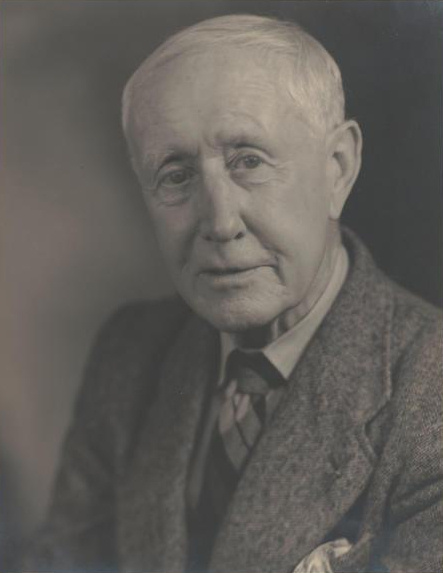 Percival (Percy) Charles Lindsay
Percival (Percy) Charles Lindsay (17 September 1870 – 21 September 1952) was an Australian landscape painter, illustrator and cartoonist, born in Creswick, Victoria. Percy was the first child born to Jane Lindsay (née Williams) and Dr Robert Charles Lindsay.
His siblings included the well-known artists: Sir Lionel Lindsay, Norman Lindsay, Ruby Lindsay and Sir Daryl Lindsay.
Percy first began painting while at school and further developed his skills during the late 1880s. Tuition from Fred Sheldon and Walter Withers saw him develop his painting skills to a professional level.
Lindsay moved to Melbourne in the 1890s and worked as an illustrator and cartoonist. During his time in Melbourne. he was at the centre of the city's bohemian art community. In 1918 he moved with his wife and child to Sydney, where he continued to paint landscapes while working as a cartoonist on The Bulletin magazine.
Percy is the least known of the five Lindsay artists and is best remembered for his fine landscape paintings and his happy carefree personality. The artist had a retrospective exhibition of his work at the Ballarat Fine Art Gallery (BFAG) in 1975.
Edward William Searle - Potrait of Percy Lindsay at the National Library of Australia - Percy Lindsay. (2017, April 23). In Wikipedia, The Free Encyclopedia. Retrieved from https://en.wikipedia.org/w/index.php?title=Percy_Lindsay&oldid=776775670
Death Of Percy Lindsay
The death occurred in Sydney yesterday of Mr. Percy Lindsay, the distinguished landscape painter. Percy Lindsay was the eldest of a remarkable family of artists, three of whom-Sir Lionel, Norman, and Daryl-survive him.
His only son, Peter, is also a well-known Sydney artist.
He showed considerable talent with a pencil in his early teens. His father encouraged him and he was taught to paint by Frederick Sheldon, an English painter who had a studio at Ballarat. Sheldon saw that Percy was sent to Melbourne for advanced tuition. By the beginning of this century, Percy Lindsay was earning a somewhat precarious -but wholly enjoyable living as an artist in Melbourne.
TWO PROBLEMS
He came to Sydney in 1918 with his wife, who died six years later. He had since lived a bachelor's life at his North Sydney home.
Lindsay's outstanding characteristic was his extrovert warm heartedness. No one could ever make an enemy of him. He was one of Australia's best listeners and always surrounded by people ready to talk.
He was an outstanding black and white artist, while his landscapes, recording the quiet day to day beauty of the surroundings in which he placed himself, have a felicity and tranquillity unrivalled in Australian art His favourite problems were two: painting in to the light in the manner of Grüner, and catching the delicacy of light tones at the edges of trees.
Mr Lindsay will be cremated at the Northern Suburbs Crematorium this afternoon. Death Of Percy Lindsay (
1952, September 22).
The Sydney Morning Herald (NSW : 1842 - 1954), p. 2. Retrieved from
http://nla.gov.au/nla.news-article18282937
ARTIST WAS INSPIRED BY AN ANCIENT TEMPLE
By BARBARA MARTYN
RUINS of Angkor Wat, the great temple built in the 12th century by the then flourishing Cambodian Empire. The walls have reliefs depicting gods, people, and battles. The temple was built of sand-stone without the aid of cement.
KNOWN internationally for her paintings interpreting Aboriginal mythology, Australian artist Helen Lempriere has returned after 16 years on the road and produces a new collection with a new inspiration - Cambodia's Angkor Wat.
Happily settled in her new home at Bayview, N.S.W., which commands a magnificent view of Pittwater, Helen Lempriere (Mrs. Keith Wood) has sat for hours in her secluded studio reflecting on her visit to Angkor Wat and producing soft, dreamy visions of the 12th century temple in paint.
The 47 paintings are being exhibited at David Jones' Art Gallery from July 14 to August 2-the second time Australians have had the opportunity to see her work in the past 16 years.
Helen Lempriere is a dedicated artist, absorbed with her work since early childhood.
A farm
"I have always drawn, all my life," she said. "I still have some drawings I did when I was five. I can never remember a time when I did not paint."
She was born in Melbourne and her father had a farm at Yea. At school, she "never learnt a thing, just sat and sketched."
Then came her real education. She studied art at the British Academy, in Rome, in Paris with Fernand Leger, and with Dutch artist Fred Klein, who taught her about color.
Gradually, she realised what she was aiming for: To express the relation of man to his environment. This led to her interpretation of Aboriginal mythology.
"Any mythology would have done, as mythology is an expression of man's attempts to understand his environment. I chose the Aboriginal because it was from my country," she said.
The international Press approved her choice. A London reviewer wrote:
"The paintings of the Australian Helen Lempriere weave delicate spells around one, like a beguiling incantation echoing in the memory."
A German critic wrote: "Helen Lempriere's style has originality; the colors reflect the earth and the dust with individual objects vaguely arising out of them. The mood of the country is conveyed with great artistry."
Miss Lempriere has held one-man exhibitions in London, Paris, New York, Amsterdam, and her work is represented in many museums throughout the world.
She has lived abroad for the past 16 years, first in Paris, where her husband worked for UNESCO, and in the South of France, then in London. Before returning to Australia, they made the trip to Cambodia.
ARTIST Helen Lempriere with paintings inspired by her visit to the ancient temple Angkor Wat.
"I had read about Cambodia years ago, when I was quite young," Miss Lempriere
said. "It left an extra-ordinary effect on me, and I always hoped to go there."
Angkor Wat, the ancient galleried temple adorned with scenes in relief of religious and military epics, made a tremendous impression on the artist.
Overwhelming
"From the outside it doesn't seem so big, but once inside there is an impression of enormous distances," she said.
"It is an overwhelming place, with a wonderful antique feeling and at the same time a feeling of life you can feel that the people depicted in the carvings are still living there.
"The detail in the carvings is fascinating, and as you wander through you find each temple has a different mood."
Artistically, Miss Lempriere felt these moods in terms of greens and blues, and her paintings of Angkor Wat are mainly in these tonings.
"Outside, the stones are old and blackened, but also change in mood. In the morning they are yellow, in the evening scarlet."
Miss Lempriere spent two weeks absorbing the atmosphere of the famous ruins.
"I would dodge the tourists and go into the surrounding bush, sit on the stones, and just listen-twigs crackled, monkeys fought, birds called. It was an exhilarating place."
One day, when she was sitting a little way from the ruins, she suddenly heard "the most marvellous noise" - it was a little Cambodian boy playing a reed flute. It was all that was needed to perfect the experience. She bought the flute from the boy as a memento of that moment and keeps it in her studio.
While it was a very lovely and mysterious place, Miss Lempriere admitted it was also a little scary.
"There are panthers in the area, and one of the tricycle boys would always come with me when I wanted to wander through the bush," she said.
Miss Lempriere sketched and also took color slides of Angkor.
"In the old days, an artist would travel by horse and carriage and stay in one place for a couple of months, painting. These days, every-thing moves so much faster. We could stay only two weeks, because fighting broke out nearby."
Not that Miss Lempriere uses the slides for painting.
"I just have a slide evening, to recall it all, then put them away and think about everything for a couple of weeks, until I have worked out my own interpretation of what I have seen.
"This is the important thing, to express your own feelings, to say what some-thing has meant to you. If other people like what you have said, that is all right, if not . . ." she shrugged it off as unimportant.
Miss Lempriere has striven for years to perfect her technique and now paints in what she describes as "mixed media."
She makes her own paints and her own paper.
A secret
"It took me three years to make a paper which would withstand tropical climates. Now I have it, and I am keeping the formula secret," she said.
Her own paints give a special quality to her work.
"I have told people what I use, and they have tried it, but it never looks the same."
Miss Lempriere has worked on her Cambodian paintings at Bayview for two years.
"We are settled in Australia now, apart from making more trips," she said. "I love travelling, and I hope to go back to Cambodia again.
"Keith and I love living in Australia, though, especially here. Keith designed this house while we were still in London, then we had to find a block of land to fit it on."
The site they chose is one of the loveliest I have seen. High on a Pittwater hill-side, it seems to have captured a tiny comer of Paradise. A very fitting setting for an artist. The house embraces the view in a three-sided hug, with the studio forming one arm of it The large, central patio is the natural entertaining area for the Woods. The garden climbs up and down around the house, and it is there Helen Lempriere likes to relax from her painting.
"Apart from painting, my other two loves are gardening and travelling."
She has been fortunate enough to indulge all three, and the fulfilment shows in the serene happiness of her face, the warm satisfaction of her voice.ARTIST WAS INSPIRED BY AN ANCIENT TEMPLE (
1969, July 16).
The Australian Women's Weekly (1933 - 1982), p. 7. Retrieved from
http://nla.gov.au/nla.news-article43738280
Geoffrey Myers. Church Point [Boatshed, Pittwater, NSW] 1945. Watercolour, titled, dated “10.11.45” and signed lower left to right, 26.7 x 36.7cm. Slight tears to right edge. Item #CL183-125 Price (AUD): $880.00 From:
Our Offshore Idylls
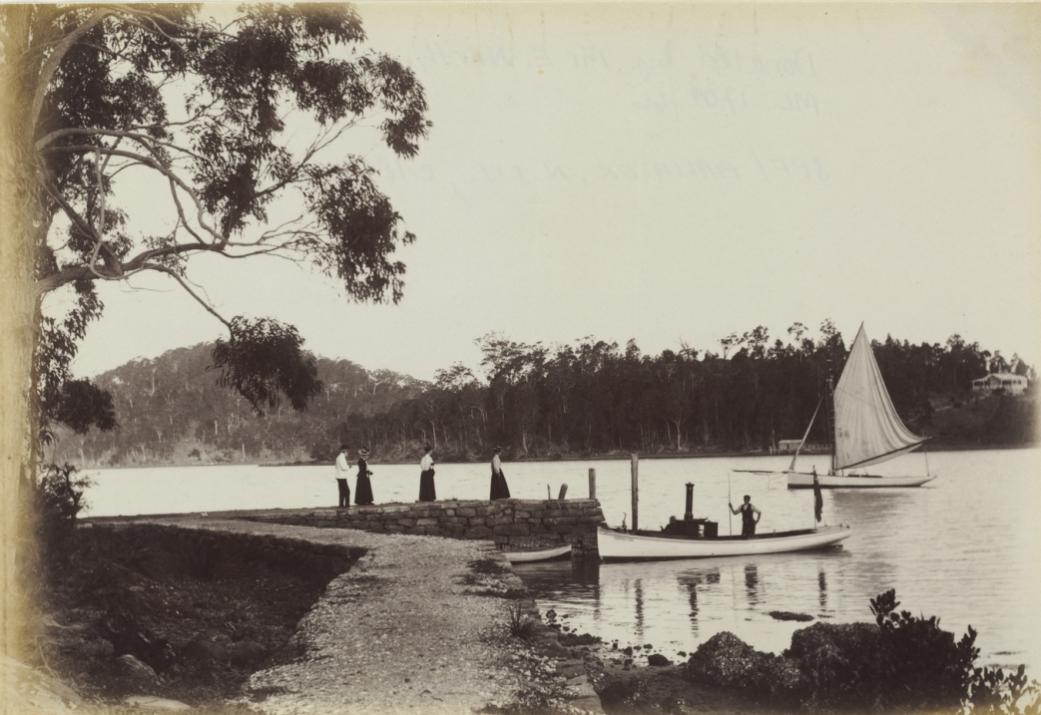
Pittwater, N.S.W., ca. 1887-1890 / photographer unknown Photograph No.: a4367001h of Towler's Wharf published in: Maybanke Anderson's story of Pittwater : 1770 to 1920 / Maybanke Anderson ; edited by Jan Roberts ; Avalon Beach, N.S.W. : Ruskin Rowe Press, 1996. The little oil launch here is was used by to ferry people to and from the entrance to the park via the Pittwater shores:
Embarking on an oil launch, which forms part of the limited property of the trust, the party proceeded down Cowan Creek for about a mile and a half to a point on the western shore, where Mr. Thomas and his officers inspected a landing site. After returning to lunch on the trustees' houseboat, Kuring-gai, in Kuriug-gai Bay, the party again took to the launch, and ran down for several miles, when there was excellent opportunity of viewing the beauties of the Chase. IN KURING-GAI CHASE. (1902, September 22). The Sydney Morning Herald (NSW : 1842 - 1954), p. 5. Retrieved from http://nla.gov.au/nla.news-article14506310
Trustees oil launch, Kuring-gai Bay, 1899. Image No.: d1_08775 and d1_08776, courtesy State Library of NSW
...with a subsidy of only £1000 and a small income from a few cottages on the Chase at Pittwater the trustees have to do all maintenance work on the roads and paths, run and keep in order an oil launch at Cowan and another at Pittwater, the houseboat, and a few pulling boats. Out of that, too, come the wages for a launch engineer at Cowan and at Pittwater, with a substitute man at each place who fills in time on the roads and paths, and a man engaged in similar work at Colah. It is urged that such an allowance is already insufficient, and that if the Government carries out a proposal to reduce it nothing will re-main but the closing up of at least one of the central establishments. With a grant of £1000 for Cowan and £500 for Pittwater each place could be well maintained, and with careful management there might be a slight balance with which to keep moving the system of facilitating approach. Various little schemes, such as the construction of dams and the conservation of fresh water, which it carried in pipes to Bobbin Head and other points, have been effected without the aid of skilled labour, and there are many indications that economy is closely observed.
Another work which is being pushed forward is that of forming walking paths which skirt the edge of the different watercourses. Their cost of making is comparatively slight, and they enable the excursionist to wander over miles of otherwise inaccessible virgin tracts, and to enjoy delightful gems of scenery. Already several of these paths have been completed, but many more are needed. It is pointed out that a small expenditure in this direction would connect Coal and Candle Creek on the Cowan side with McCarr's Creek at Pittwater, or Refuge Bay with the Basin, and thus make these points within easy walking distance.
The work of protecting the flora is one of difficulty, and could be much assisted by the judicious construction of a little fencing so as to mark the points of egress from the Chase. In their endeavours to establish a native animal reserve the trustees meet with equal trouble, and point out that by the erection of a line of fencing from Duffy's wharf to the head of Smith's Creek some five or six thousand acres could be made absolutely secure for that purpose. Generally speaking it appears that a small expenditure would place Kuring-gai Chase in a fairway to accomplish all the aims for which it was intended. IN KURING-GAI CHASE. (1902, September 22). The Sydney Morning Herald (NSW : 1842 - 1954), p. 5. Retrieved fromhttp://nla.gov.au/nla.news-article14506310
THE AUDACITY OF THE SWALLOW.
Dr. Richard Arthur, M.L.A., writes to "The Daily Telegraph" (Sydney).—"When visiting Pittwater the other day with the Premier and some other gentlemen, we had the opportunity of seeing a swallow's nest placed in an almost Incredible position. "The trustees of the Kurin-gai Chase have a launch driven by an oil engine, which is enclosed In a small glassed-in cabin. On the top of the lamp in this cabin two swallows have built their nest, which now contains two swallowettes, three days old.
"Mr. Willmott, who is in charge of the launch, informed us that he destroyed the nest twice. The launch was then laid up for a week, but a small port-hole was left open. When he again entered the cabin he found a fully-formed nest, which contained three eggs. The female bird stuck to the nest, and either ignored his presence, though his head, while he was cleaning the engine was within a few inches of her, or would make a pretence of flying at him.
"Now, when the launch goes on a trip, the parent birds perch themselves on the bow. If they leave the boat they will turn up some hours later, even though it has travelled five or six miles in the meantime, and fly straight into the cabin. Mr. Willmott believes that the swallows have chosen this extraordinary position for their nest to escape the iguanas. He is speculating how the parents will teach the young ones to fly." THE AUDACITY OF THE SWALLOW. (1906, December 15).The World's News (Sydney, NSW : 1901 - 1955), p. 4. Retrieved from http://nla.gov.au/nla.news-article128277180
Wood's Point: Arturo Steffani / Arthur Steven
Born Arthur Stevens c1852 in the UK (Hinckley) – “an aristocratic Englishman” – Italinised his name for professional reasons (see article in Freeman’s Journal 3 September 1898). He changed his name for the purpose of tutoring, his professional name became Signor Steffani. He studied art as a student in South Kensington but also took up singing. Studied in Milan and sang in London – “Mr Gye Covent Garden Opera Company” (Illustrated Sydney News 14 November 1889).
He arrived in Victoria (likely) March 1877 aboard the vessel “Assam”. Listed as an “adult” but does not appear to have been accompanied. He was an opera singer with the Sam Lazar Italian Opera Company. He became a singing teacher in Sydney – continued to paint and exhibit with Art Society of NSW and was on Committee for several years. During this period, he lived on Hunter Street Sydney and was affiliated with the Italian Impressionists, Rubbo, Nerli etc. (Sydney Morning Herald 26th December 1909- Memoirs of Phil May).
He also had a place at Rocky Point, Pittwater, where apparently many Artist and Literary friends were entertained, forming a very early 'Artists Community' or Colony, in our offshore areas. It may be many of those who formed an Art Society by Artists were visitors and this could also account for the many 'views' of Pittwater that became part of these very early exhibitions. The home was and remains on the point of Elvina and Lovett bays; and was built in 1891 by the Stefani family. As one member was a pianist it came with elevated music room. It was bought by the Mark Foy family in 1926, who changed its name from the Red House to Trincomalee – meaning 'a view from three points' – after they holidayed in Ceylon. It was sold when the Macorisons paid $135,000 in 1978 to the executors of the estate of the late Neil Smith, the father of Juanita Nielsen.
Delightful House Party. Mrs. J. J. Smith and Mr. Neil Smith are entertaining a large party of friends at 'Trincomalee' Pittwater, these latter weeks. Mrs. Smith will not return to her flat at 'The Wellington,' Woollahra, for another month or so. She is a charming hostess, and is particularly good to the younger set. SOCIAL NEWS AND GOSSIP. (1925, December 31). The Catholic Press (NSW : 1895 - 1942), p. 22. Retrieved from http://nla.gov.au/nla.news-article114740613
The home was then placed on the market again in 2011 and listed as having a self-contained cottage, studio, boatshed, jetty, sandy beach and rock pool, all in a pristine bushland setting and as an 1890s stone and timber house on 4,300 square metres at Lovett Bay, Pittwater.
Trincomalee, 2015
A description of the Pittwater home from an advertisement of 1901:
Several text books documenting this period of Australian impressionism, have indicated that Steffani was Italian. In August 1898 Steffani and his wife left for Europe with the young Queensland singer, Florence Mary Schmidt (later married to the sculptor Derwent Wood) who Steffani had tutored. They spent time and Florence studied in Italy, Paris and London.
Steffani and his wife returned to Australia then returned to London several years later. An Illustration of Steffani is in article he wrote about Australian singers in London – 3 August 1902.
One was found, a photo, in this extensive interview conducted after his return - an extract:
AUSTRALIAN SINGERS.
The Dangers They Encounter and the Triumphs They Achieve
STRAIGHT TALK BY SIGNOR STEFFANI.
(BY 'SIDELIGHT'— FOR THE 'SUNDAY TIMES. ')
'How the prima donna is made' was the i title of an article which appeared in the last issue of the 'Sunday Times.' In the course of an exceptionally interesting interview which I had with Signor Steffani, who has just returned after a lengthened stay abroad, and who has undoubtedly given more Australian singers to the world than any other teacher, reference was made to the terrible price to their womanhood which many song birds have to pay, even after the trials of the student days, if they wish to attain the highest pinnacle of fame. Signor Steffani also tendered some valuable advice to those who seek a musical career, and talked entertainingly of the doings and achievements of Australians abroad.
TO THOSE GOING ABROAD. 'To anyone going Home,' commenced Signor Steffani, 'a certain amount of money is absolutely necessary, as much as will cover three years comfortable living and sufficient to go to the theatres, etc. The first thing for her to do would be to listen to everything, see everything, listen to all that is said amongst students and artists about the art and the profession generally, and not adopt any course of study until she has thoroughly sifted all she has listened to. For the first year there should be nothing in the way of study. In most cases, however, I consider that those who have been well taught here — well enough to please an Australian 'audience — need no tinkering with the voice when they reach Home.
.....
SIGNOR STEFFANI.
An earlier sketch:
Signor Steffani is one of our public men who worship at the shrine of two sister arts. A student at South Kensington, and devoted to the brush, he simultaneously developed a gift of song, and a tempting offer led him to Italy and to stage life. After some experience as an opera singer he came out to Australia, ten years ago, in Lazar's Italian Opera Troupe, but left the stage some three years later and devoted himself permanently to his favourite art. Signor Steffani still trains singing pupils, but his chief time and energy are spent with the brush. He is keenly alive to the pecu-liarities a.nd atmospheric attractions of Australian scenery, and for the last four years he has been an energetic exhibitor on the Art Society's walls.
SIGNOR STEFFANI.
Steffani died in London in March 1931 at the age of 79 (born circa 1852). Arthur Stevens was born 4th Quarter of 1852 at Hinckley and an Arthur Stevens died 1st Quarter 1931 (Age 78) at Hinckley. This is likely Arturo Steffani (1852 – 1931)
SYDNEY MUSICAL UNION.
GUILD HALL, WEDNESDAY, nth September.
Second Performance of Sir Michael Costa's
ELI,
to initiate a Fund for Building a Music Hall.
Principal Singers :
Miss AMY SHERWIN
(the Tasmanian Prima Donna)
Mrs. CORDNER-MILES,
Signoi ARTURO STEFFANI,
who have offered their gratuitous services in view of the object ;
Mr. Ht GODFREY, .
Mr. T. B. JAMIESON, '
Mr. W. HERBERT.
Chorus and Orchestra, 120 performers,
under the conductorship of
Herr J. KRETSCHMANN and Mr. S. MOSS, L.C.M.
Tickets : Front seats, 5s ; balcony, Ss ; back seats, 2s ; to be
bad at the principal music warehouses, and at the doors. -
Tickets for the 5th will admit on the 11th.
BACK TO THE 70's.
An Artist's Reminiscences.
BY WILLIAM MOORE.
The home of Mr. and Mrs. Donald Commons at Narelle-avenue, Pymble, with its courtyard partly covered with trellised wistaria, its white roses, and its noble trees, where magpies still find a sanctuary, was built years ago, when there was nothing but bush all round. The house as well as the street is called Narelle, the aboriginal for "song bird," which was also the name of the last queen of the Wallaga Lake tribe. I found the artist sitting beside an open fireside, smoking an old briar pipe and dreaming perhaps of the days long past, when he and other congenial souls foregathered in a Bohemia of their own. His old friend B. E. Minns is the last of the group to make an occasional call.
It is nearly eighty years since Mr. Commons was born at Auckland, New Zealand. Engaged as a cadet in a large construction work for a few years, he came over here as a young man to join the Board of Works. That was in 1878, so his memories of art In Sydney go back farther than most of our painters. At that time, the Royal Art Society and the National Gallery had not yet been founded, and Julian Ashton had not settled in Sydney. The one institution was the Academy of Art, which had lived up to its name by establish-ing classes for painting and sculpture and by holding exhibitions at which it bestowed medals for meritorious works.
"The International Exhibition at the Garden Palace in 1880," said Mr. Commons, "was a far-seeing conception of Sir Henry Parkes. It gave a small band of artists a rare opportunity of studying the works of various European schools. A number of these were retained for Sydney, "The Sons of Clovls" being acquired for the Gallery. As the years followed, we had the benefit of seeing exhibitions of contemporary works from London; among the many excellent examples being the seascapes by Henry Moore, R.A., and W. L. Wyllie, R.A., and the water colours by John Bromley and many others. Then the idea arose, that protection would prevent the flooding of cheap and inferior stuff, and it certainly saved the local artists from almost extinction. Of course, since then artists have been well supported by the public."
The eighties and the nineties marked a progressive period In Sydney; It saw the rise of the Australian school started by Roberts and Streeton, and Mr. Commons knew all the leading artists of that time. "Julian Ashton, who had studied at Julien's in Paris," he continued, "brought a fresh, uplifting and sturdy vigour upon the scene, inspiring the struggling painters with confidence in them-selves. There were men of decided ability and their work was not fully appreciated; but Ashton, in upholding their alms, did away with a lot of humbug as far as the public was concerned. The relations between fellow painters were very friendly, and other artists like Frank Mahony, A. J. Fisher, Charles Conder, Henry Fullwood, B. E. Minns were fine comrades. At the Sketch Club, connected with the Royal Art Society, we usually exchanged sketches, and if you look round you will see some souvenirs of these pleasant meetings."
ROBERTS AND STREETON
The advent of Tom Roberts and Streeton who came over from Melbourne and settled at Curlew Camp Little Sirius Cove he resumed had a marked influence on the Sydney group. The fact that Roberts was elected the first president of the Society of Artists showed that he was recognised as a leader while Streeton influenced his brother artists in looking for sunlight and painting with a freer brush. It may not be generally known that these two painters started a school in an upper floor of the Commercial Union Assurance Company’s building at the corner of Hunter and Pitt streets. Mr. G V F Mann afterwards Director of the Sydney Gallery being one of the students. Streeton used to stay with us from time to time, he was a rapid painter and wasted no time in selecting a subject.
“I had lunch with Archibald and Phil May the day the latter arrived in Sydney he continued, “There was not much talk as May seemed anxious to get away and start on his new job He was very unassuming and quite modest about his work Yes I knew Conder well he was a wonderful colourist but no one at that time regarded him as a good draughtsman.
Another old friend was Signoi Arturo Steffani the operatic bass and teacher of singing he was an aristocratic English man named Arthur Steven, who Italianised his name I fancy because plain misters in music were not thought of so highly as signors. He had a charming home at Pittwater where he royally entertained his literary and artistic friends.
The reason why the work of Mr Commons is not so widely known as it deserves to be is that he has not exhibited for years His predilection for seascapes may be traced to the fact that his father owned a number of vessels and as a youth he had the opportunity of cruising about aboard them While he cannot be grouped among the moderns there is nothing old fashioned about his work and at nearly 80 he appears to have kept abreast of the times.
Some reference may be made to family connections Mr. Commons is a descendant of the Grants and the Gordons. The father of Mrs. Commons Mr. J T Hobbes who was a food linguist was a devoted friend of John Ruskin with whom he travelled on the Continent and corresponded with him till his death He kept a diary during his association with Ruskin one of the three manuscript volumes being in the possession of Mrs. Commons. While abroad with Ruskin Turner was with them and the diarist used to carry water to the artist as he drew his famous studies depicting the mighty grandeur of the Alpine scenery Eventually Mr. Hobbes came out to Australia and for some years he was police magistrate at Port Macquarie. BACK TO THE 70's. (
1935, November 2).
The Sydney Morning Herald (NSW : 1842 - 1954), p. 11. Retrieved from
http://nla.gov.au/nla.news-article17223440
Arturo Steffani, Coast of New South Wales 1888
44 cm x 79 cm, Oil on canvas
Signed A Steffani lower left corner
Exhibited at the Royal Art Society Exhibition September 1888 Catalogue number 135.
Extracts below from the Evening News and Sydney Morning Herald September 1888:
No. 135, by Arturo Steffani— ' Coast of New South Wales.' One of the most naturally colored exhibits in the gallery. The Art Society of N.S.W. (
1888, September 21).
Evening News (Sydney, NSW : 1869 - 1931), p. 3. Retrieved from
http://nla.gov.au/nla.news-article107323449
ART SOCIETYS EXHIBITION.
SECOND NOTICE.
....
Signor Arturo Steffani has seven pictures bearing his name in the Exhibition this year, and amongst the number are some showing remarkably good work. Most of Signor Steffani's marine studies contain clever touches and the results of close observation, and among the best on the walls this year may be named his " Coast of New South Wales " (No. 135). This rather comprehensive title probably refers to a view near Coogee or Bondi. It is a most careful study from nature, we should say, and is remarkable for the excellent effect of that peculiar emerald-green tint in the curling roller of which the end breaks against a rock in the left foreground, and the pearly tint of the wave after it has crested and broken into foam. The manipulation of the effect of distance is excellent; perhaps the colour in the rooks is a little low intone, and their effect lacking in variety.
In "Milson's Point at Evening" (No. 126) the same artist shows good grasp and composition, and in his " Ben Buckler" (No. 150), "Head of Careening Cove" (No. 145), "Neutral Bay" (No. 87), " Careening Cove " (No. 102), and "Head of Mosman's Bay " (No. 122), there is shown a good deal of the same artist's careful and characteristic work. One of those harbour sketches, showing a hulk lying up on the shore, and the pools of water among the rooks reflecting the blue sky, is remarkable for its very pretty harbour distance showing the ships riding at anchor, and the hazy outline of the distant shore.
...
Mr. Fullwood contributes some good studies besides his more ambitious picture. "Prince Rupert's Glen" (No. 96), is a pleasing view taken on the mountains at Wentworth Falls in this conscientious artist's characteristic style, and his "Sketch near Newport" (No. 30), is a charming bit of watercolour painting. Both Mr. Fullwood and Mr. Frank Mahoney have worked together to produce the picture catalogued as No. 107, called "A Drink by tho Wayside." We recognise Mr. Mahoney's touch in the cattle that stand in natural attitudes drinking at a stream. The fresh tones of colour in the water and in the foliage here are cool and natural, and the picture is one that takes a very prominent place among tho canvases on the walls. It is novel in conception, and vigorous and original in its, manner, and though striking the eye with a certain sense of incompleteness and haste, has all the elements of a very fine picture in its treatment and composition.
APPLICATIONS FOR SPECIAL LEASES. - .
ATTENTION is directed to the notification in the Government Gazette of this date of applications made for Special Leases as hereunder mentioned.
ARTURO Steffani, for Wharf and Boat Sheds, Rock Point. Pittwater. Advertising (
1892, September 13). The Australian Star (Sydney, NSW : 1887 - 1909), p. 1 (SPECIAL EDITION). Retrieved from
http://nla.gov.au/nla.news-article227281722
Manly to Broken Bay.
A PICTURESQUE AND HEALTHY TRIP.
(BY "ST. MAGNUS.")
(See illustrations on this page, and pages 22 and 31.)
Sydney and neighborhood abound in lovely scenery, a harmonious blending of land and water, embellished by art, a mingling of many colors and tints that is always pleasing to the eye and charming to. the senses. So numerous indeed are the beauty spots of the metropolitan districts, and so various in their scenic beauty, that one is sometimes at a loss from, which to choose as the most agreeable to spend a holiday. To the lovers of nature, and to those who love to gaze on everchanging scenes, perhaps Manly, and the road along the beach past the Narrabeen Lakes and on to Newport, Bay View, and Broken Bay affords as agreeable and instructive, an outing as any. At all events the route has the charm of comparative newness, because for some unexplained reason it has only been of recent years that the magnificent harbors of Pittwater and Broken Bay, with their lovely scenery and fertile lands have received even passing attention from the great body of tourists, holiday-makers, and settlers, who are ever on the outlook for something new. The district may be easily reached by land via Manly, or by water via Broken Bay. From Manly two lines of coaches are in active running, and make several trips per day to suit the running of the Manly ferry boats and the Post Office schedule time. The distance from Manly to Bay View Post Office is only about 11 miles, and to Newport Post Office the distance is not much longer. The road is a most picturesque one throughout.
...
For a great part of the distance the road follows the beach, and although at present the whole face of the country is mostly in a state of nature, yet it is easy to see how vastly it could be improved by planting rows of Norfolk Island pines (Araucaria excelsa) and sand-binding grasses as at Manly. Occasionally a lot of green pasture land is passed, and one of the sights of the road is the Salvation Army Home, as it stands on a bold, rocky hill, commanding a fine view of the cultivation patches and a wealth of gay colors. At length the Rock Lily Hotel is reached, and here is refreshment for man and beast. A few yards beyond here the road branches, one to the town of Newport and Barrenjoey Lighthouse, and the other to Bay View Post Office arid Telephone Office and Church Point. At Bay View the expansive waters of Pittwater and Broken Bay in all their glory lie disclosed to view. Our illustration gives a very good idea of the scene. In the foreground is Bay View House, vine-yard, orchard, Post and Telegraph Office, the property of Mr. J. J. Roche. In the near view is Pittwater, extending its broad and deep arms to the right and to the left, and in the distance is Broken Bay, with Lion Island barring the passage way, so named because of its resemblance to a lion couchant. Only half the scene described is represented in the picture, but the varied panorama of headland jutting out beyond headland, with the intervening bays and arms as they sweep inward between the wooded head-lands, gives a good idea of what the other side is like. Broken Bay is, as is well known, one of the most magnificent harbors in Australia, with plenty of deep water and ample scope for the largest ships that sail the ocean. Its vicinity to Port Jackson has, up to the present, destroyed its chances of becoming a commercial centre, but no one can doubt that the day will come when it will be the seat bf a prosperous population with cities and towns within its borders, and railroads and ships bringing goods to its marts. At present it is merely used as a haven of shelter by storm-tossed ships, yachting parties, and an occasional excursion steamer from Sydney. At present its population is mostly com-posed of private gentlemen, who have residences among its beauty spots, the summer residences of business men from the metropolis, a few professional fruitgrowers, with a scattering of business men and fishermen.
From Bayview the road, a very good one, winds around the beach, disclosing as every vantage point is gained new beauties of land and water. Around here are some very good orchards, with trees laden with fruit, and the homesteads peeping out from masses of evergreen foliage, with an extensive vista of land and water. In a charming spot on a sloping hillside, with such a fore-ground and a craggy background Professor Anderson Stuart has a summer residence and orchard. Mr. W. G. Geddis has a neat residence on a pleasant point. Mr. W. Baker has an orchard with some magnificent trees, while on a commanding bluff is Mr. John Poster's residence and orchard. Mr. A. McIntosh's residence is also hard by.
This road ends at Church Point, a lovely spot commanding a view of Pittwater; the town and hotel of Newport at the head of Navigation, Broken Bay, and Barrenjoey directly in front; Scotland Island and Towler's Bay right across the water, with the long and deep arm known as McGarr's Creek on the left. On the Towler's Bay side there are several residents who pull across the water to the wharf at Church Point and meet the steamer from Sydney or the coach from Manly, as the case may be. The dynamite powder hulk is moored in Towler's Bay, with residences on shore for the officers in charge. Mr. Robert Robinson has his residence of Raamah at the same place. Mr. Robinson informs me that he can grow to perfection such tropical fruits as bananas, guavas, ginger, mangoes, pineapples, Brazilian cherries, &c. This fact will demonstrate that there can be little or no frost in this locality.
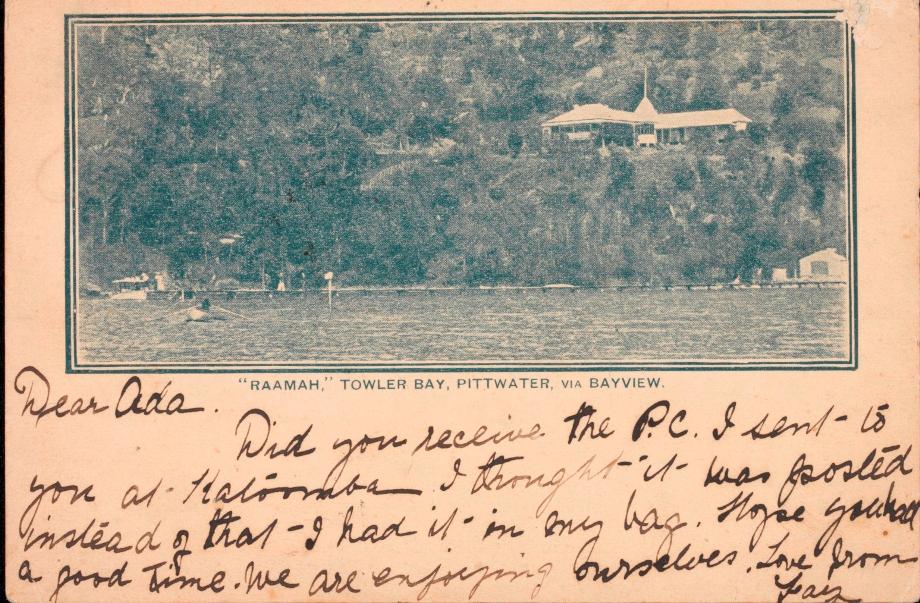
'RAAMAH, ' TOWLER BAY, PITTWATER, VIA BAYVIEW.'. It has a message on the front and the address on the undivided back, which is postmarked 21 Feb 1908. Courtesy National Museum of Australia.
Other residents of this side of the bay are Mr. F. Chave, Woodlands, who has a very nice orchard, mostly summer fruit; Mr. E. C. Johnstone, who has a nice residence and orchard; Mr. A. Steffani is another prominent resident, while the residence of the firm of Flood and Oately occupies a lovely peninsula in the quiet waters of the bay. Mr. Geo. Brown has a residence and an orchard in the neighborhood, and there is also a small church and cemetery at Church Point. THE NARRABEEN LAKES-A PICTURESQUE HEALTH RESORT NEAR MANLY. (See letterpress on page 19.) Manly to Broken Bay. (1893, November 11). Australian Town and Country Journal (Sydney, NSW : 1870 - 1907), p. 19. Retrieved fromhttp://nla.gov.au/nla.news-article71191632
A. Steffani, Palm Beach North & Kilcare
Oil on canvas, 60 x 100 cm, courtesy Australian & International Art, Davidson Auctions, Sydney.
A. Steffani, The Hawkesbury River
Watercolour on card, 33 x 50 cm
Estate of Lewis Morley, Davidson Auctions, Sydney.
A choice collection of tho oil and water-colour paintings of Signor Steffani will be sold by auction at 61 Elizabeth-street, near King-street, this morning. Some of this artist's moat admired works are to be disposed of, notably, amongst the oils, the fine view of "Barrenjoey," with its green headland and wind-swept bay. IN PARLIAMENT. (
1893, May 12).
The Sydney Morning Herald(NSW : 1842 - 1954), p. 4. Retrieved from
http://nla.gov.au/nla.news-article13928448
MR. STEFFANI'S CONCERT
Mr. Steffani, a gentleman well-known in musical' circles as a voice expert, purposes giving at the Town Hull next Thursday evening, a farewell concert. The shortness of the notice is to be accounted for by his not wishing to interfere with his pupil Miss Florence Schmidt's concert' last Saturday. On this occasion Miss Schmidt will appear positively for the last time before an Australian public, as, together with Mr. and Mrs. Steffani, she sails for Europe next Monday. Miss Hetty Holroyd, another of Mr. Steffani's accomplished pupils, will .also appear, and the names of other artists will shortly be announced;' Al. though the gentleman in question has now been twenty-two years in Sydney, during which time he has rendered very great service to' .the vocal' art, this' is. the first occasion on which he has given' a concert on his own' account; Prior to coming to the colonies he occupied a prominent position in the late Mr. Gye's Covent Garden Italian Opera Company. Full particulars will appear in a day or so. MR. STEFFANI'S CONCERT (
1898, August 29).
Evening News (Sydney, NSW : 1869 - 1931), p. 4. Retrieved from
http://nla.gov.au/nla.news-article113251309
Freshwater head of Lovetts (sic.) Bay, Kuring Gai Chase ca. 1900-1910 by Star Photo Co. (possibly by William Livermore)- Unmounted views of New South Wales, [chiefly 1900-1910] Image No.: a116505, courtesy State Library of NSW
The freedom from economic stresses places not so accessible, especially during the 1930's when people came to Pittwater as they could fish and feed families if work and income was not available, and their once cheaper land market value, as much as being a place that inspires people to create, ensured these beautiful waters and great green hills, turning blue in season, or by day and mood, have always and will always attract and then make, in the very nature of those who chose to live beyond the madding crowd, into a community of Artists that in itself becomes an artists Colony. This example illustrates an 'across the ditch' connection carried forward by generations;
COLONY OF NEW ZEALAND WOMEN PAINTERS IN SYDNEY.
MRS. MAUD SHERWIN in her Sydney studio.
Top: MRS.' ADELE YOUNGHUSBAND taking a print from one of her lino-cuts.
MISS HELEN STEWART, painting MISS ROSEMARY MUIR, of New Zealand, who was recently invested with M.B.E. by the Governor-General
(Lord Gowrie.)
MRS. VIOLET BOWRING photographed in her studio.
Top -- MRS. ADELE YOUNGHUSBAND touches up one of her canvases.
VERSATILE ARTISTS IN CITY : STUDIOS.
Caravans and Attics.
(BY MARGARET PEARSON)
There is quite a colony of New Zealand artists in Sydney-in fact, an Australian artist admitted the other day that many of the outstanding Australian artists turned out to be New Zealanders!
NEW ZEALAND, unfortunately, is inclined to recognise talent only after it has been proved in another country, and most of her own artists have to graduate overseas to gain any recognition.
The Australian atmosphere seems to attract the artists particularly. There is something in the colour and breadth of the country that appeals to them, and there arc a number of New Zealand artists in Sydney who are doing a great deal of interesting work.
Children's Portraits.
MRS. VIOLET BOWRING came from Wellington some years ago. She has a charming little home in Double Bay, with a lovely view from the verandah across the boat harbour to Seven Shilling Bay. It is here Mrs. Bowring does a great deal of her painting. Nowadays she specialises in children's portraits, many of which she executes in their
own homes.
"Sometimes it is rather difficult," admitted Mrs. Bowring, "for smaller members of the
family come and make faces at the sitter, and want to play with my paints. I do lots Of portraits of dogs, too," she said, showing me a fine crayon sketch of a borzoi, "but I rather draw the line at family cats," she added. "I'd rather do portraits than anything else. I showed a portrait of Joan Beere, the Wellington dancer, as well as pencil sketches and water colours in an exhibition of work by New Zealand artists In Australia recently."
In Mrs. Bowring's cosy little sitting-room are several other portraits, too, including the well-known pastel of A. B. ("Banjo") Paterson, which she did In 1935, and the Infectiously-smiling portrait of Burlakoff singing to a Russian instrument, while opposite this is a picture of a ballet dancer.
Political Cartooning.
"I HAVE done all kinds of art work," Mrs. Bowring told me, "including political cartooning "or the 'New Zealand Free Lance and book Illustrating, but since my marriage, when I came to live in Sydney, I have concentrated chiefly on portrait painting. I studied first of all under Mrs. Maud Sherwood in Wellington, where I won three scholar-ships and a medal at the Technical College. Then I went to England for further training at the Chelsea Art School and the London School of Art."
Caravan Tour.
MRS MAUD SHERWOOD was busy packing up her pictures before leaving for a caravan tour when I arrived at her studio in Dalley Street. The studio is in a building rich with artistic tradition, for there Sir John Longstaff and Sir Arthur Streeton used to paint. Mrs. Sherwood's studio is gay with cushions, pottery she has collected during
her travels, and her own bright water-colours.
Mrs. Sherwood left New Zealand many years ago, and only recently returned to Sydney after seven years abroad, during which time she was never in an English-speaking country.
"I always meant to go to England, but I never did," she admitted, "though I am a member of the Royal Academy. There always seemed so much to do in the other countries Italy, Spain, North Africa, and France. I spent practically all my time amongst the peasants living in primitive villages."
Recognition as Water Colourist
MRS. SHERWOOD studied in Wellington under James Nairn before leaving for Paris, and since those days she has won recognition as one of the foremost watercolourists of to-day, exhibiting at various salons in Paris, the Royal Academy in Lon-don, and the principal exhibitions in Rome. Since returning to Australia, Mrs. Sherwood has held exhibitions in Sydney and Melbourne, and she has been invited to become one of the founders of the Australian Academy of Art.
Mrs. Sherwood has other interests besides painting, for she has been made a member of the women's auxiliary committee for the 150th birthday celebrations. But at the moment she is concentrating on her caravan
tour, and she Is off for a two or three months' holiday in the Bathurst district.
Miss Helen Stewart has chosen Bligh Street for her airy and cheerful studio. At th6 moment the centre piece is her portrait of Miss Rosemary Muir (formerly matron of the public hospital In Christchurch), who was In-vested with the M.B.E. by the Governor General (Lord Gowrie) recently. Hung round the walls are lovely Javanese sarongs of brown and green and crimson, but Miss Stewart's special treasures are two vases of Chinese porcelain, which she brought back from the East last year.
The Way of Lhote.
MISS STEWART had her first art lessons from Mrs. M. E. R. Tripe, the well-known Wellington portrait painter, but most of her training has been done in London (at the London and Grosvenor Schools of Art) and In Paris (under Andre Lhote and Yaclav Vytlacyl, a Czecho-American).
Mrs. Adele young husband is amongst the New Zealand newcomers to Sydney's artist world, for she has been here only about eight months. But already she has absorbed much of the atmosphere of the country, as was very evident from the picture of New South Welsh scenery at her first one-man show which has just concluded.
Mrs. Younghusband has been lucky enough to find a real "artist's" lodging in Potts Point with an atmosphere as congenial and conducive to creative work as any in London. So "realistic" is it, it might have been designed for a stage set. Everything is there-the steeply slanting ceiling, tile dormer window looking out over trees and house-tops, and
the feeling of its being a real artist's horns and workroom.
Correspondence Lessons.
"I STUDIED first under the late Horace Moore-Jones in Hamilton," she said, "and later on under George E. Woolley at Whangarei, and the Elam School of Art in Auckland, but my greatest encouragement came from W. Page Rowe, an eminent art critic from London, who lived for some time in Auckland. He took a great interest in my work, and for some years he taught me composition and colour by correspondence."
Mrs. Younghusband visit to Australia is her first out of New Zealand, but her own country she knows well, and she has sketched wherever she has been. She showed me three' pencil and chalk sketches for pictures she made during last week-end at Elvina Bay, where she was staying with Miss Alison McDougall, the novelist. COLONY OF NEW ZEALAND WOMEN PAINTERS IN SYDNEY. (
1937, December 2).
The Sydney Morning Herald (NSW : 1842 - 1954), p. 26. Retrieved from
http://nla.gov.au/nla.news-article17436499
The Basin, Little Mackeral, Mackeral, Coasters
Some of the earliest etchings ever published in Australia are depictions of this northerly reach of the western offshore areas of Pittwater, as too, are some of the artworks mentioned, by some of our now famous early Artists, all amateurs!:
NEW SOUTH WALES ACADEMY OF ART. EXHIBITION OF WORKS OF COLONIAL ART.
The Third Annual Exhibition of Works of Colonial Art will be open THIS DAY, at Clark's Assembly Rooms, Elisabeth-street North, from 9.30 a.m. to 5 p.m. Admission to non-members-One Shilling. Members admitted Free on producing their tickets, which will also entitle them to introduce two friends. E. DU FAUR, Hon. Sec. Rialto-terrace, 8th April, 1874.
NEW SOUTH WALES ACADEMY OF ART LAST DAY OF EXHIBITION. The Third Annual EXHIBITION of WORKS OF COLONIAL ART will CLOSE THIS DAY, Wednesday, at 5 p.m. E. DU FAUR, Hon. Sec. Rialto-terrace.
NEW SOUTH WALES ACADEMY OF ART. EXHIBITION. Persons desirous of purchasing any Paintings, at the prices named in the catalogue, are requested to leave a memorandum to that effect, addressed to the Honorary Secretary, with the doorkeeper. E. DU FAUR, Hon. Sec .Rialto-terrace.
NEW SOUTH WALES ACADEMY OF ART THIRD ANNUAL EXHIBITION OF WORKS OF COLONIAL ART. AWARD OF JUDGES.
OIL PAINTINGS.SOCIETY'S SILVER MEDAL (TO ARTIST). No. 5. " Dandenong Ranges," a morning's glimpse from the Upper Yarra track. J. W. Curtis, artist, Victoria.
SOCIETY'S SILVER MEDAL (TO AMATEUR). No. 8. .''Bream Creek, Adventure Bay, Brune Island, Tasmania." W. C. Piguenit, amateur, Tasmania,
SOCIETY'S EXTRA SILVER MEDAL. No. 44. " The Dessert." Mrs. Alfred Williams, artist, Tasmania
SOCIETY'S CERTIFICATE OF MERIT. No. 2. " Stranded." W. Andrews, amateur, N. S. W. N.B.-A silver medal would have been awarded to this exhibit, except for the sameness of the subject with those exhibited in the last two years by this artist. No. 3. " Showers and Steam." Thomas Wright, artist,. Victoria. No. 4. " Myrtle Tree Gully." Isaac Whitehead, artist, Victoria. No. 7. " Track on the Mitta Mitta River." Eugene Von. Guerard, artist, Victoria. No. 11. "Checkmate." Miss Livingstone, artist, Victoria.
WATER-COLOURS. SOCIETY'S SILVER MEDAL (TO ARTIST). No. 58. " Castle Hill, Cragieburn, Canterbury, N. Z. J. C. Hoyte, artist, New Zealand.
SOCIETY'S SILVER MEDAL (TO AMATEUR). No. 59. " On tho Dart," near Blackmore, South Plain, Woods. Charles E. Hern, amateur, N. S. W.
SOCIETY'S CERTIFICATE OF MERIT. No. 61. " View in Middle Harbour." Miss R. Martens, amateur, N. S. W. No. 64. "The Basin'" Refuge Bay, Pittwater G. P. Slade amateur N.S.W. and No. 65. "On the Mulgoa Creek," Fernhill With general commendation of other works by same artist-Nos. 62.72, 82. Nos. 63. " Gully at Narrabeen Lagoon." 83. " Creek on Lane Cove River." 88. "The Oak Tree Avenue," Parramatta. With general commendation of other works by same artists-Nos. 60, 69,73, 92, 93. Nos. 77. "Flowers and Fruit…
GOLD MEDALS
"We do not see any exhibits sufficiently meritorious in High Art to justify the award of Gold Medals." (Signed) JAMES BARNET, J. S. MITCHELL, J. L. MONTEFIORE, } Judges Clark's Assembly Rooms, 7th April, 1874. Advertising. (1874, April 8). The Sydney Morning Herald (NSW : 1842 - 1954), p. 1. Retrieved from http://nla.gov.au/nla.news-article13334459
George Penkivil Slade- G.P. Slade was a student of Conrad Martens and exhibited with him at the New South Wales Academy of Art during the 1870s.
SKETCHES TAKEN DURING A TRIP TO THE HAWKESBURY.
1, Bar Island, and Chapel, at the entrance to Berowra Creek. 2. Barrenjoey, from Blind Cove. 3. Mooney Point, and Ruins of the Old Inn. 4. View on Cowan Creek. 5. Our First Day: taking it quitely. 6. The First Rocks In the Gorge, overshadowed with Weeping Willows. 7, The Great Northern Road. 8. Our First Camp. 9. Wiseman's Ferry, and Ruins of the Old Church. 10. Wiseman's Ferry and the North Shore Ferry. SKETCHES TAKEN DURING A TRIP TO THE HAWKESBURY. (1880, December 25). Australian Town and Country Journal (Sydney, NSW : 1870 - 1907), p. 24. Retrieved fromhttp://nla.gov.au/nla.news-article70950994
BLIND COVE
This beautiful little bay shown in our illustration, formerly private property, has been made a reserve of by Government, and is now practically a cruising ground for the yachting community of Sydney. A more useful and delightful sheet of water could not have been chosen, situated as it is at the entrance to the Hawkesbury River, just opposite Barrenjoey. To the north is the broad expanse of water known as Brisbane "Water, and to its south Pittwater, which is now connected with Sydney, Newport, and Manly by means of a coach running daily. Blind Cove, also called The Basin, is a safe refuge in the very worst of weather. It owes its name of Blind Cove to the fact of its being invisible to the incomer until he has almost reached its entrance, which is very narrow and hidden from view by a low stretch of sand; but inside this narrow passage there is deep water, and the height of the hills surrounding the basin (some 6OOft) so thoroughly shelter it from heavy winds that it might well be called Looking-glass Bay. It is on account of this, and also the beauty of the surrounding scenery, that has made it one of the principal rendezvous of yachtsmen.
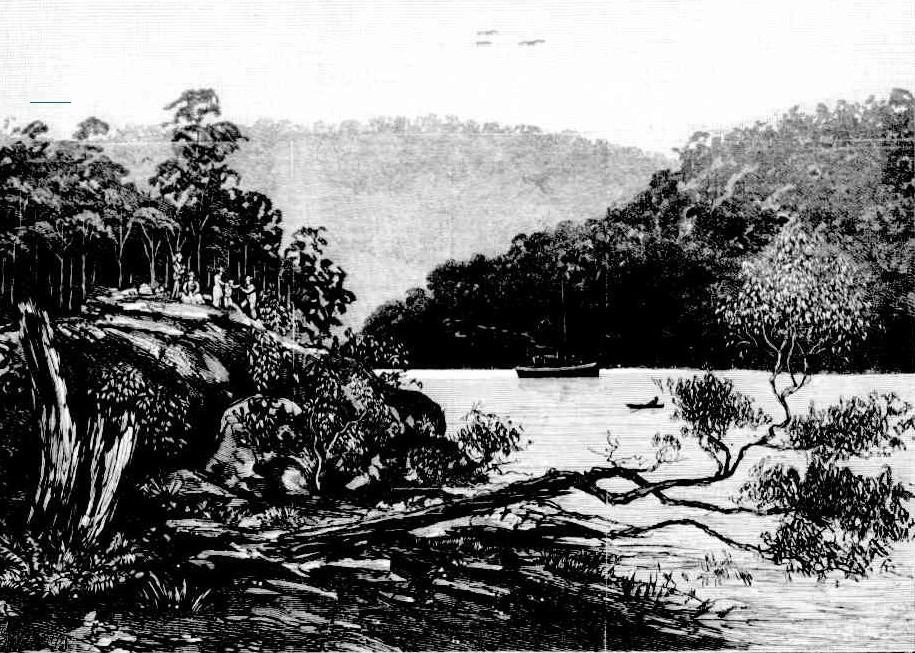
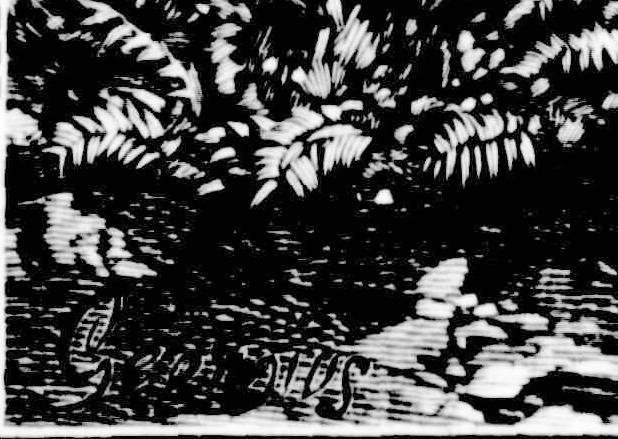
Enlarged section - lower left-hand side, of woodcut's artist
Similar signature on:
VIEWS ON THE HAWKESBURY. 1. Bar Island. 2. The Bar and Melvey's. 3. Crumpton's and Entrance to Brerowra Creek. VIEWS ON THE HAWKESBURY. (1888, January 7). The Sydney Mail and New South Wales Advertiser (NSW : 1871 - 1912), p. 21. Retrieved fromhttp://nla.gov.au/nla.news-article164357419
A VETERAN ARTIST. DEATH OF MR. J. C. HOYTE.
By the death of Mr. John Clark Hoyte, which occurred at his residence, 141 Avenue-Road, Mosman, on Friday morning, the art world of Sydney loses one of its oldest identities. Mr. Hoyte was born in England in 1835, and received his early artistic training there, but some years of his early manhood were spent in the West Indies. Returning to England about 1860, Mr. Hoyte married, and shortly afterwards decided to go out t0 New Zealand, where some time after his arrival he joined the teaching staff of the Auckland Grammar School.
It was about this time that Mr. Hoyte's artistic work began to bring him into prominence. It was not long before he occupied a leading position in New Zealand art circles, and it is as a portrayer of the scenic beauties of the Dominion that he will be long remembered. Right up to the time of his death his work found keen appreciation there. About 1877 Mr. Hoyte left New Zealand, and settled in Sydney.
He was one of the founders and the first president of the Royal Art Society, among those associated with him at the time being Mr. A. J. Daplyn, the present secretary of the society. Of late years Mr. Hoyte had been but little before the Sydney art public. He was one of the old school, and found it difficult to adopt his ideas to the conventions of the newer artistic cult. The deceased has left a widow and two married daughters (one daughter having died some years ago), and several grandchildren and great-grandchildren. A VETERAN ARTIST. (1913, February 25). The Sydney Morning Herald (NSW : 1842 - 1954), p. 8. Retrieved from http://nla.gov.au/nla.news-article15400595
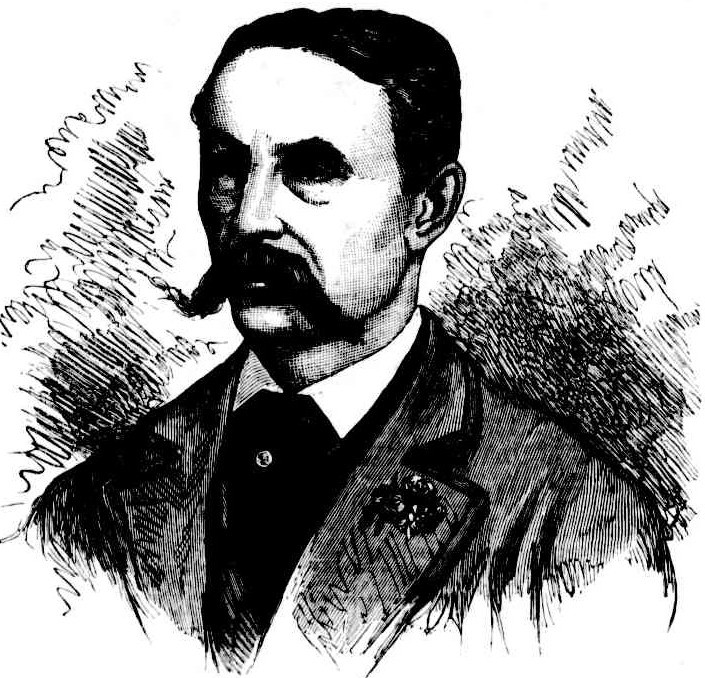 THE VICE-PRESIDENT, JOHN C. HOYTE, ESQ.
THE VICE-PRESIDENT, JOHN C. HOYTE, ESQ.
Mr. Hoyte is an Englishman, born in London,1837. He was sent out in 1856 by the firm of Denoon and Co., to Demorara, as bookkeeper and head overseer on their estate, but after three years' residence, on account of ill health, he returned to England, and came out to Auckland in 1860. He remained there 16 years, being for some, time engaged as second master in the Church of England Grammar School, and as a private tutor. He was also an officer in H.M. Customs.
In 1869 he determined to devote himself to art solely, and was appointed secretary to the Auckland Society of Artists, which post he retained till his departure for Dunedin in 1875. He was also about the same time elected as a member of the Academy of Arts, Melbourne. In Dunedin he was a member of the council of the Dunedin School of Arts; after three years residence there he left Kew Zealand and came to Sydney. In July, 1880, a society was established here, the promoters being Messrs. A. and G. Collingridge, and at the general meeting for election of officers, etc, Mr. Hoyte was unanimously elected president. This office he held for one year, and used his utmost endeavours to promote the welfare of the society, but feeling that his being a comparative stranger in the colony might prove detrimental to the society, he resigned in favour of the Hon. E. Combes, being appointed vice-president for the current year, which office he now fills most satisfactorily.
The art society with which these gentlemen are associated, is gaining public confidence and esteem, and we gladly welcome it as one of the permanent institutions of New South Wales. THE VICE-PRESIDENT, JOHN C. HOYTE, ESQ. (1882, January 7). Australian Town and Country Journal (Sydney, NSW : 1870 - 1907), p. 17. Retrieved from http://nla.gov.au/nla.news-article70964090
Bilgola
There are more than a few sketches, paintings and photographs charting this little beach bay change from a grove filled with cabbage palms to a lace you'd definitely want to live
Bilgola – Ure Smith friends with Watt (pilot)
Kookaburra Club camping there from 1913:
KOOKABURRA MOTOR-CYCLE CLUB.
This club has made an important move recently by securing a site for a permanent clubhouse at Newport, where 7 ½ acres of land have been purchased by the camping section at Bilgola, having easy access to the beach. The property purchased is described as picturesque, and possessing many attractive features for those motor-cyclists who have a leaning towards Nature, and its extent will permit of its being made particularly valuable in the future. It is intended to erect a bungalow club-house at once, the building having two rooms and a kitchen, as well as wide verandahs on each side for 'sleeping out.' In addition there will be a smoke room, separated from the main building, in a position where Nature has already almost provided a room. The dining-room and outdoor kitchen are also to be situated a little distance away from the club house, in a beautiful palm grove, close beside the banks of a creek of pure, freshwater. Besides these buildings, the plans include these of a garage with, a suitable; work bench to permit of members overhauling their motorcycle engines on wet days. The club-house will no doubt be the rendezvous of the Kookaburras during the Summer months. The Kookaburra Club's committee has decided, on account of the bad state of the roads, to make a centre to which the majority of club runs will be hel'. The plan selected, has not been divulged at present, but it is stated it offers facilities for football, cricket, or other outdoor games, as well as motorcycle frolics; and two out of every month's week-end runs are to be to it. The other runs will include a week-end tour and a visit to such old motor-cycling haunts as Windsor, Appin, Springwood, etc.-
The migration of Kookaburras from their present Summer quarters is promised for April 13 and once again the birds find themselves connected with mystic 13. It has frequently been commented on how this club flirts with the supposedly unlucky number. The club will hold the opening run of its touring season on April 19 and 20.
ON TOUR. Messrs. A. G. Biden and R. Readford are away at present on a holiday, at Oberon. They rode up on their motor-cycles, and report having found a 'teaser' of a new hill on the way up. At present they are enjoying great relaxation among the rabbits and other game.
A NEW MOTOR-CYCLE CLUB.
At a meeting held on Wednesday evening, a new motor-cycle club, called the Britannia, was formed successfully, about 25 members being enrolled. Mr. A. A. Levi was appointed Hon. secretary, and Mr. d. A. Zink Hon. treasurer/ both pro 'tern. A further meeting is to be -held on Wednesday evening at the Volunteer Hotel, George-street, when other office bearers will be elected. The club's opening run is to take place to-day, leaving the Glaciarium for Newport via Manly at 9.30 a.m. KOOKABURRA MOTOR-CYCLE CLUB. (1913, April 6).Sunday Times (Sydney, NSW : 1895 - 1930), p. 21. Retrieved from http://nla.gov.au/nla.news-article126462062

Bilgola Headland, Newport, 1921 / Sydney Ure Smith - Image No.: a7065001, courtesy the State Library of NSW
Signed on plate 'S. Ure S., March 1921' and below it in pencil 'Sydney Ure Smith'.
Below plate to right written in pencil: 'It was here that Colonel Oswald Watt met his death. Drawn from Col Watt's seaside residence 'Bilgola' when I was staying a weekend with him - a few months prior to his death'.
Caught in the Undertow. COLONEL OSWALD WATT DROWNED.SYDNEY, Sunday. Colonel Oswald Watt, late of the Australian Flying Corps, and of the firm of Gilchrist, Watt, and Sanderson, lost his life in the surf at Bilgola Beach (a little beach a mile north of Newport) on Saturday morning, through being caught in the undertow. Caught in the Undertow. (1921, May 23). Examiner(Launceston, Tas. : 1900 - 1954), p. 6 Edition: DAILY. Retrieved fromhttp://nla.gov.au/nla.news-article51126044
The sale of Bilgola, at Pittwater, formerly the residence of the late Colonel Oswald Watt, which will take place on December 8, ought to attract much attention. The land, which comprises some very attractive week-end sites, issituated beyond Newport, and before reaching Palm Beach. 'HAPPENINGS OF IMPORTANCE IN REAL ESTATE WORLD. H. (1921, November 27). Sunday Times (Sydney, NSW : 1895 - 1930), p. 10. Retrieved from http://nla.gov.au/nla.news-article123244094
GOVERNOR AT ART EXHIBITION.
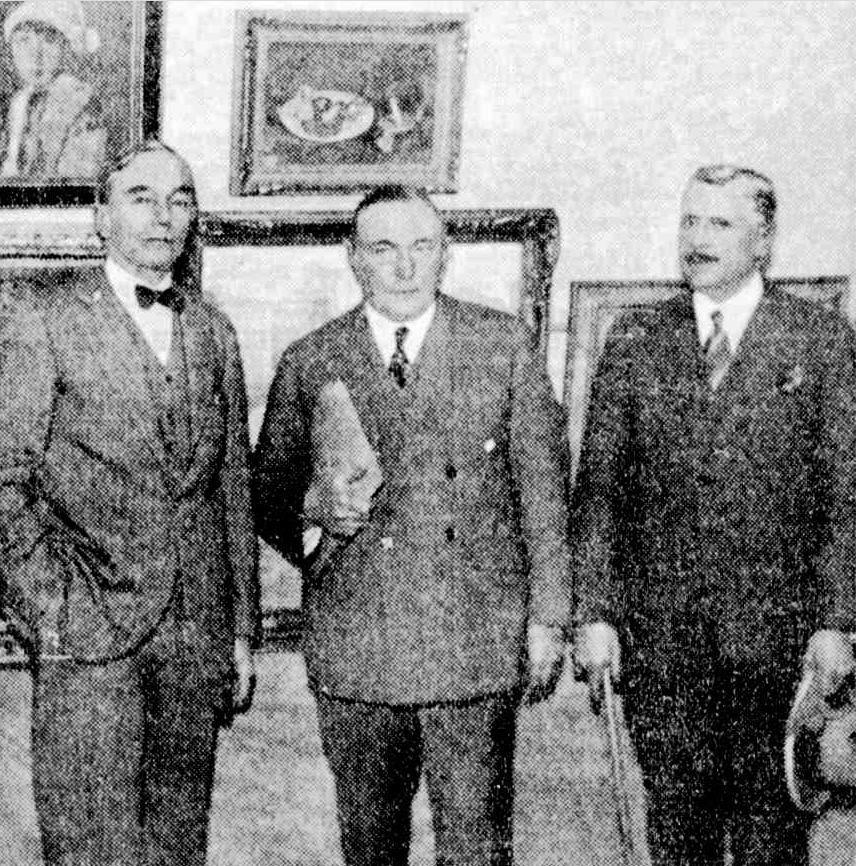
from left: Sir Philip Game, Mr. S. Ure Smith, president of the Society of Artists, and Sir John Longstaff. GOVERNOR AT ART EXHIBITION. (1931, September 7). The Sydney Morning Herald (NSW : 1842 - 1954), p. 12. Retrieved from http://nla.gov.au/nla.news-article28037765
Careel Bay and Clareville
Robert Johnson
Painter of ' Palm Beach to Barrenjoey, 'The Picture Selected as the Supplement to the' Sydney Mail ' Annual .'
ROBERT JOHNSON'S rise to prominence has been unusually rapid. Belonging originally to New Zealand, when not much more than a student he left to join the Anzac forces, first in Egypt and then until the end of the war on the Western Front, from which lie brought back mementoes in the shape of watercolours done behind the lines and one large oil painting of the famous Cloth Hall at Ypres, now included in the official war records kept at Auckland, Wellington, and Dunedin. Some eight or nine years ago he took up residence in New South Wales, and from that time has exhibited with the Society of Artists and smaller group exhibitions. For five or six years he was yet comparatively unknown beyond the small circle of art enthusiasts, since he occupied only his leisure in painting. His cognoscenti, however, had their eye on this promising young painter, and when he had once decided to devote himself entirely to an artist's career his reputation was quickly established, and with an ever widening public. His first one-man show at the Grosvenor galleries in Sydney in the latter half of 1927 had most gratifying results; practically all the pictures were sold out in the first two or three days, one example belonging to the National Gallery of New South Wales, the other to Lady Stonehaven. His second one-man show1 the same galleries a year later, equally successful the point of view of sales, marked a distinct advance in the standard of accomplishment. He was hailed on every hand as 'the coming Streeton,' and his position among the first half-dozen painters in oils of Australian landscape was secured beyond question.
Since that time his work has gained still more in breadth and sureness. There is every reason to deduce from the steady consistency of his development hitherto that he will maintain and improve upon his own standard, and that along the line he has marked out for himself he will go from strength to strength.
ROBERT JOHNSON.
THOUGH he included some very agreeable still-life compositions in his exhibition last year, Robert Johnson has revealed himself so far as primarily a painter of landscape and of the harbour and the coast. In landscape he seems equally attracted by the wild grandeur. of rocky hillsides, by the gentler beauty of rolling pastures and of fruitful farmlands with homesteads and cattle, and by the domestic charm of the countryside on the fringe of the metropolis. Turning to the harbour he seeks for preference those smiling reaches and unspoiled foreshores not sullied by the city's touch. His treatment of the gum-tree, one may say, breaks down Heysen's monopoly. Like Gruner, he has been fascinated by problems of landscape-painting against the light. He is, of course, a pure realist, not over-much concerned with theories and the latest dicta of the pundits. His aim is first and foremost to transfer to his canvas the scene as it appears to him, expressing to the full its natural beauty, but playing no tricks of heightening or distortion to make a striking pattern. And the genuineness and sincerity of feeling in his painting is always apparent, conspicuously free as it is from all suspicion of being worked up in the studio from slight sketches and memoranda made on the spot. His pictures are rounded harmonies in which there is successful elimination of unnecessary detail; there are clarity and definition, but no hardness. His colour is full, yet mellow, avoiding on the one hand stridency and on the other anaemia or a muddy dullness. Particularly admirable in many cases are his distances; and he knows how to paint water as translucent. IN the example of his work reproduced for the supplement to the 'Sydney Mail' Annual Johnson's special characteristics are shown to advantage. This noble prospect, looking from the rocks and sandy scrub of Palm Beach heights beyond Barrenjoey Lighthouse and Lion Island to the further shores' of Broken Bay, is one on which the eye loves to dwell. The artist in his presentation of it has captured no small proportion of its glamour. BEATRICE TILDESLEY. Robert Johnson. (
1929, October 9).
Sydney Mail (NSW : 1912 - 1938), p. 9. Retrieved from
http://nla.gov.au/nla.news-article160392391
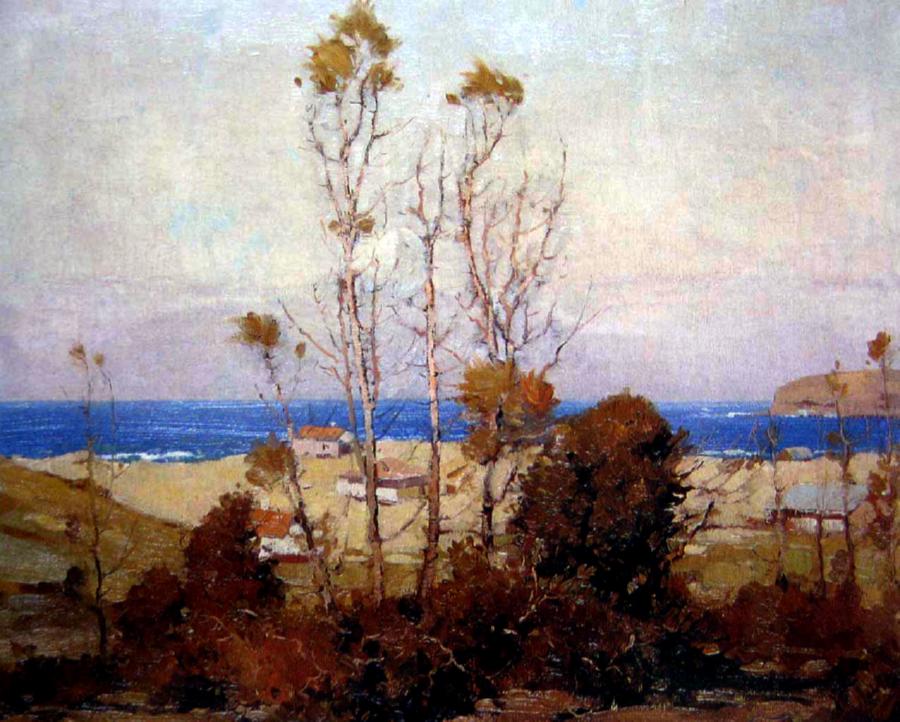
'Mona Vale Trees' - Robert Johnson
Three Art Exhibitions in Sydney
Landscapes by (Robert Johnson
It is easy to understand why Mr. Johnson has quickly won such popularity among picture-buyers' in Sydney. There in little doubt that the exhibition of his oil paintings, nearly forty in number, now opening at the Grosvenor Galleries will be as successful as his first one-man show, held there last year, when practically all the pictures were sold out in the first few days.
THIS artist is freely lipped as the coming Streeton. And those who make that claim for him have much to support their view. It was Streeton who first, as a painter, really discovered Sydney Harbour. There are pictures of Middle Harbour in tin's collection that are entirely individual, and yet call to mind Streeton. They are not as brilliant in colour as many of that artist's harbour scenes, but the deeply glowing blue of the water, with no rawness in the tone, helps the suggestion. On the other hand, Mr. Johnson runs Heysen pretty close in his paintings of gum-tree boles and foliage. But he is no copyist of Heysen, any more than of Streeton. Altogether one would have small hesitation in placing him in the first half-dozen Australian landscape painters in oil. Mr. Johnson's rise to the prominent position he now holds has been almost meteoric. In New Zealand, where he was born, he had already painted landscapes and figure compositions before the war, which removed him to far distant scenes. On his return from France he came to settle in Sydney, but did not at once devote himself exclusively to an artistic career. It is on his paintings of New South Wales landscapes during the last two years- or so that his reputation mainly rests, though he demonstrates by two charming still-life studies in the present exhibition that he can paint other subjects. He is a realistic painter, and, like Streeton, not over-much concerned with theories or novel methods of presentment and technique. Painting landscape always in the open air, he finds a subject which attracts him, and be sets out to convey upon canvas the pleasure he has felt in it himself. There is an impression of complete sincerity given by all his work, and in his best examples a seeming effortlessness because of their success. He has a notable mastery in rendering the effects of reflected light in shadows, as, for example, in the bare stony heap which balances the moss - grown rocks of one of the Middle Harbour pictures, entitled 'Rocky Foreshores.' The same picture provides an illustration of the fact that this artist never scamps his foreground . or leaves the less significant portions of his landscape meaningless and indeterminate. Like some of the other harbour and Pittwater scenes, it shows, too, his ability to give the effect of translucence to water to the shadow of a steeply rising shore. Another beautiful example of his capacity in this direction is the picture called 'At Castlecrag,' looking across to the heights of Mosman opposite. Here the blue water lies under a deep shadow -.beneath the further, cliff, above, which there is a stretch of- pale blue sky with hazy clouds. lying on the horizon, and against this background there stands out boldly in front 1o the right a; tree. and pile of stones. Equally beautiful is 'Middle Harbour.' ' 'Trees at Mona Vale,' painted against the light, like 'Ermington,' a view in the district towards Eastwood, contains not only a conspicuously fine, handling,. . of a white gum tree-trunk seen against a' pale blue sky, but is remarkable for its rendering of reflected light, iii shadow. 'Sunshine and Shadow,' with glimpses of houses between straight-up. tree-trunks, is a successful painting of a quite different effect of light. Amid the variety of other subjects, one pauses with pleasure at the picture of the old cottage, with later additions and an iron roof replacing its original shingle, entitled 'The Eighties,' and at 'Milking Times,' where the cattle are collecting round the farmstead. The biggest picture in the exhibition is the spacious 'Valley of the Hawkesbury. 'This could already have been disposed of several times over at the very beginning of the exhibition. The artist, has also painted a fine view of the 'Valley of the Wollondilly,' looking down from a height upon the winding stream. 'Flame Tree' is a delightful small picture, showing the tree on the left next to a cottage behind a tumbledown fence, through which white fowls are straying.
: 'MOUNTAIN PASTURES,' By Robert Johnson.
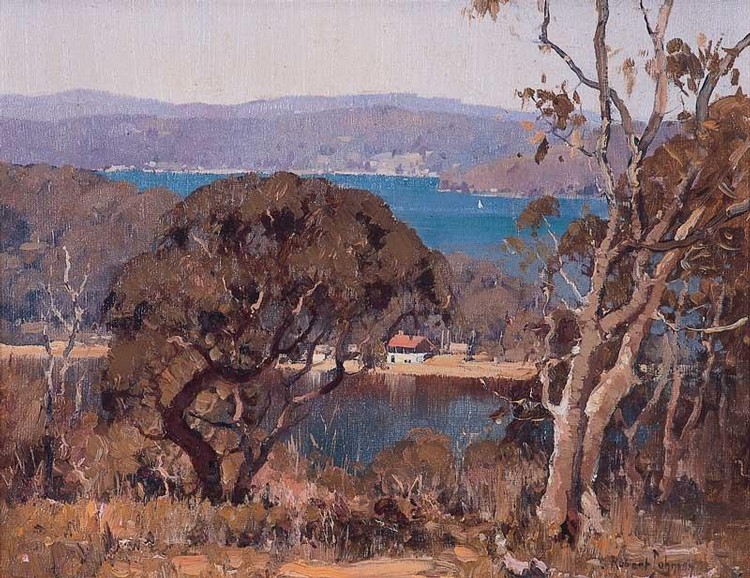
Pittwater - Painted in 1927, Robert Johnson
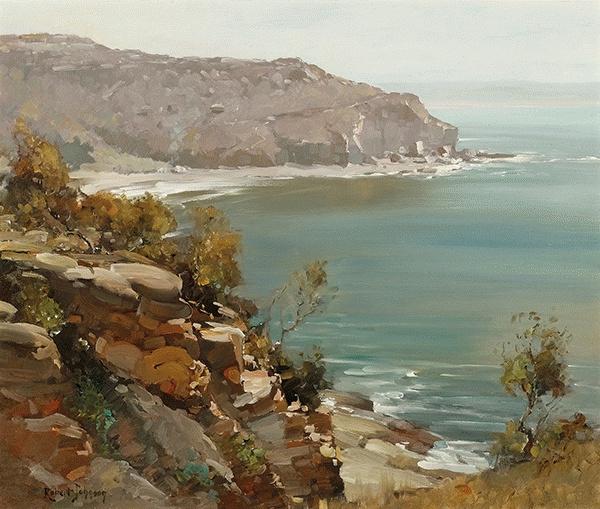
Whale Beach - circa 1927, Robert Johnson
Robert Johnson's holiday home 'Ashlar', Clareville, Pittwater, New South Wales, ca.1938. Courtesy National Library of Australia. Image No.: nla.obj-144083149-1
Robert Johnson, 'Lake Narrambeen'
Robert H Johnson, North of Avalon
Artist Accused Of Murder
David Little, 58, was charged at a special sitting of the Manly Court yesterday with having murdered his wife, Ada Adeline Little, at their home at Taylor’s Point, Avalon.
Mr M J D Austin, S.M , remanded Little to the Central Court on August 27. Little was refused bail, and was taken to Long Bay Gaol. Police described Little as an invalid pensioner. Little, an artist, frequently sold oil paintings for substantial amounts
'TREETOPS" FIND
Earlier yesterday police went to the Littles' home, Treetops, a small galvanised iron and wooden house, on a ¡Aide above Taylor's Point
They found Mrs Little's tody there. She had been battered to death with a wooden mallet
The head had five wounds. A tea towel was clutched in Mrs. Little’s hands
Yesterday morning Little walked to Messrs Strahan and Blackwell in Hudson Road. They telephoned Narrabeen police station after he had a conversation with them
Detective Sergent Garlick and Detective Besnard arrested Little.
He told the detectives that he had been nnrricd for 22 years. The couple had no children
Before moving to Treetops, the couple lived in Palm Grove Road, Avalon Previously they lived on a farm in the Lower Burragorang Valley. Artist Accused Of Murder (1951, August 19). The Sunday Herald (Sydney, NSW : 1949 - 1953), p. 3. Retrieved from http://nla.gov.au/nla.news-article18495947
Elaine Haxton
Sydney Artist lives In Boathouse
Life in a boat house is a mixture of the primitive and the luxurious for versatile Sydney artist, Elaine Haxton , who is holding an exhibition of her recent work at a Melbourne gallery. Completely isolated, her home is built out over the water at Pittwater, just south of Broken Bay, and is far below the nearest road. It takes 20 minutes to walk along the bush track that leads to the main road and bus route at Paradise Beach. There are no telephone, no delivery service and no postman. "Mail," said Miss Haxton, "often takes four days or more to come less than 30 miles from Sydney." She shops by dinghy and rows across Pitt-water to the tiny village of Clareville to collect her mail or strolls along a bush track to Avaion. At low tide she can take a short cut across the rocks to the beaches at either side. The boathouse has a hot water service and refrigeration, a private swimming pool and great, wide doors that open over the sea to let the sunlight straight into Miss Haxton's studio. With curtains and furnishings especially designed by Frances Burke, the converted boat house, although unusual, has become an extremely comfortable home.
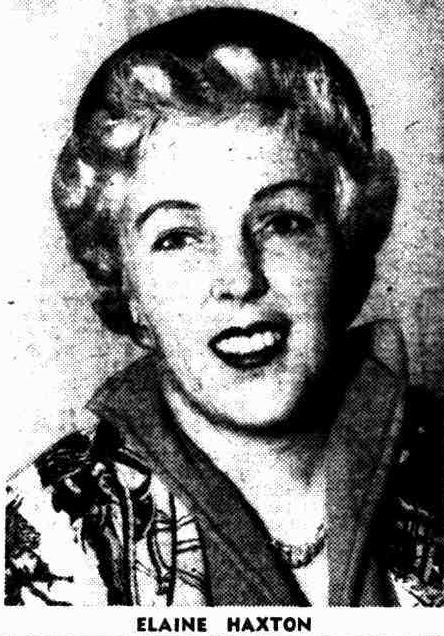 Although Miss Haxton is fond of dogs she has no pet to tie her to her home. She has always travelled wherever she wished and likes to combine her painting trips with the thrill of seeing new countries. Her most recent trip was to Italy, where she found both the art and the people "exciting." Other favorite countries are Mexico, which she visited not long ago, France and England. She has lived in New York and has painted in most parts of the world. Her work Is hung in the National Galleries both in Sydney and Melbourne, at the Metropolitan Museum in New York and in private collections in England, the United States and Italy.
Although Miss Haxton is fond of dogs she has no pet to tie her to her home. She has always travelled wherever she wished and likes to combine her painting trips with the thrill of seeing new countries. Her most recent trip was to Italy, where she found both the art and the people "exciting." Other favorite countries are Mexico, which she visited not long ago, France and England. She has lived in New York and has painted in most parts of the world. Her work Is hung in the National Galleries both in Sydney and Melbourne, at the Metropolitan Museum in New York and in private collections in England, the United States and Italy.
ILLUSTRATIONS .
During her last visit to England Miss Haxton was commissioned by the P. and O. Steamship Company to design their four sets of playing cards — the packs typifying England, Australia, India and China. She also designed the children's menus creating the story of the P. and O. pups and their tour around the world with a ship's cat to help to interest the children in their food. "Everyone," she said, "seems to write letters to me on the backs of these menus. It is one job I will never be allowed to forget." Among the many books she has illustrated are Margaret Lord's work on interior decorating and the two books on flower arrangement compiled by Sydney socialite Mrs. Gregory Blaxland.
PRIZE MURALS
Miss Haxton is also a popular illustrator of children's books and her name is familiar to most readers of Australian magazines, for she does numerous illustrations for short stories and articles. Miss Haxton won the Sulman prize for the intriguing farmyard murals she designed for the Coq D'Or restaurant in Sydney. Mural work was, for some time, her favorite medium and quite a lot of her work has been done for city restaurants. The main difficulty with mural work is. she said, its temporary nature. Walls, particularly in restaurants, must be frequently repainted and often an artist's work is distorted by the painter's efforts to retouch the design. HOME TOWN Soon after their arrival in Melbourne last week. Miss Haxton and her mother, Mrs David Haxton drove up to Ballarat to see the painting which, in 1941, won the Crouch prize for her. She was most impressed by the Ballarat Gallery and the number of recent English paintings it contains. She admired too, the glorious antique furniture which has been presented to the Gallery from old homes in the district. Although Miss Haxton was born in Ballarat, her family left the township when she was far too young to remember or to make comparisons when she revisited her birthplace.
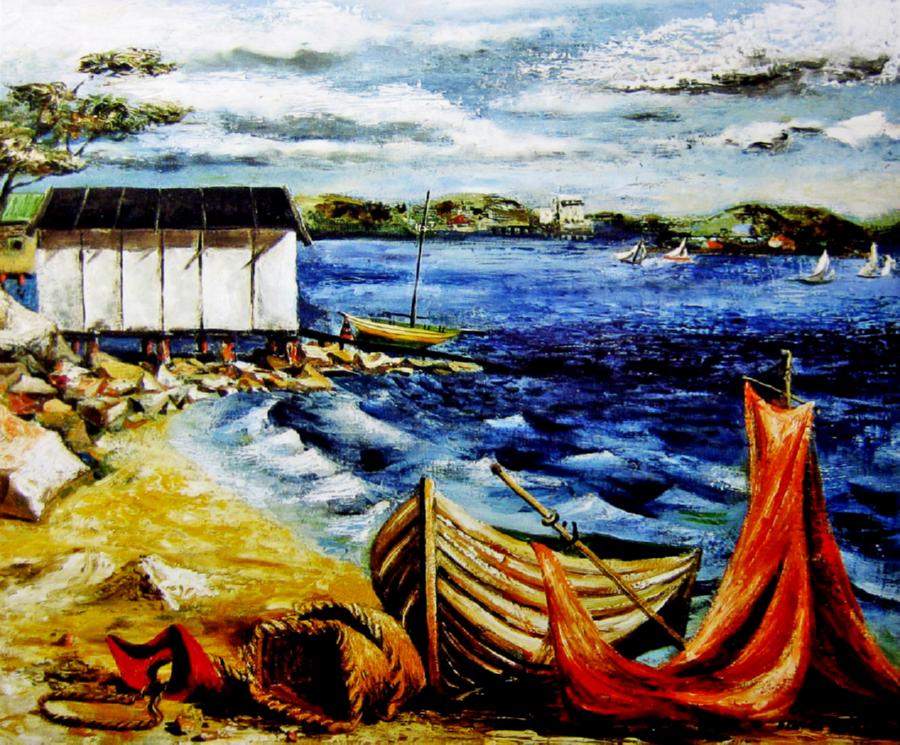
Pittwater, 1949 Oil on board, 50 x 60 cm - Visit previous page on Elaine Haxton HERE 1950 Wynne Finalist for Elaine Haxton - King Tide
Whale Beach
Above: [Livintonia Australis ] Whale Beach, Pitt Water, N.S.W. by A. J. Vogan (Arthur James), 1859-1948, photographer. [ca. 1910 - ca. 1915] - courtesy State Library of Victoria - Image No.: 0_306842 - Below - camping on Whale Beach 1930's
ART EXHIBITIONS.
MR. W. LISTER-LISTER.
Each year, as regularly as Easter, Mr. W. Lister-Lister's art show comes round. For some time now, Anthony Horderns' - Gallery has been the locale. There, the public may see 48 examples of oils and water-colour of the kind which, in earlier times, made Mr. Lister Lister well known in the art world, and finally raised him to the eminence of president bf the Royal Art Society. The wheel of taste has spun; and the faithful artist's offerings no longer look so vivid or original as they once did. But visitors who take the trouble to examine these pictures closely will find a number of excellences behind a sober, rather unvaried -exterior. To take canvas No. 1, on the catalogue, as an ambitious example, there is genuine delicacy of perception in the re-presentation of foliage bending over a stretch of calm water. The detail is set forth with loving care, obviously by one who has ob-served nature keenly over a long, artistically laborious life. The whole canvas takes on r» cool, flat, soothing quality, as of finely-worked tapestry. In a few instances, there are flashes of geniality, not to say gaiety; and in these Mr. Lister-Lister hos achieved the high points of his exhibition. "The Cloud Shadow" leads the way. Small in dimensions, this canvas reproduces an effect of florid, radiant sky, which catches and holds attention. Other pleasant oils-for in the oil section practically the whole interest of the exhibition is concentrated-are "Bilgola Beach," "The Rock-Bound Coast," "The Coast Near Whale Beach," and "Mount Kembla, South Coast."
The exhibition will be opened this afternoon by Mr. B. J. Waterhouse. ART EXHIBITIONS. MR. W. LISTER-LISTER. (1936, April 2). The Sydney Morning Herald (NSW : 1842 - 1954), p. 6. Retrieved from http://nla.gov.au/nla.news-article27991498
ST. GEORGE ART SOCIETY.
The exhibition of pictures by members of the St. George Art Society in Barters' how windows, Hurstville, Is of considrabk-local interest, most of the subjects are many well known beauty spots. It will come as a surprise to many of us that how so much beauty at our very fingertips. ..."Whale Beach" by A. J. Dowd calls for special mention. Here the artist has rendered a coastal subject In water colour, using prismatic colours in a manner remlnescent of Cezanne—pure blues and greens in the sea and a gum tree with a bright pink trunk, sink Into the general scheme, producing a general overall effect almost neutral.ST. GEORGE ART SOCIETY. (1947, September 26). The St George Call (Kogarah, NSW : 1904 - 1957), p. 1. Retrieved fromhttp://nla.gov.au/nla.news-article233610437
Visiting artist is a former Queenslander
INTERESTING visitor is artist Ainnie Wienholt — a former Queenslander who, after winning a New South Wales travelling scholarship during the war went to the United States to further her studies and continue her artistic career.
THE only daughter of the late Mr. Arnold Wienholt and of Mrs. Ivan Lewis, formerly of Whale Beach, New South Wales, but now of Palm Beach, New South Wales, Miss Wienholt has come out chiefly to visit her mother. From the little she had seen of Australian art, in Sydney, she said when interviewed she thought the American was more representational. Her own art is chiefly graphic. Whether, a young artist would find greater opportunities in the United States or in England would, she considered depend wholly upon the individual. Miss Wienholt, who in private life is Mrs. M. Takashig, lives in New York. She is accompanied on her present trip to Queensland by her infant daughter, Janet. After a visit to her old home at Kalbar, where her parents lived for many years, the visitor is now spending a day or two with her uncle and aunt, Mr, and Mrs. H. L. Kent, at Graceville. Woman's Interest (
1951, March 12).
Brisbane Telegraph (Qld. : 1948 - 1954), p. 17 (LAST RACE). Retrieved from
http://nla.gov.au/nla.news-article212779657
MRS. ANNE WIENHOLT TAKASHIGE, of New York, with her daughter, JANET, sorts out some of her etchings and engravings at the home of her mother, Mrs. Ivan Lewis, of Whale Beach. Formerly Sydney artist Anne Wienholt, she is spending a painting holiday in Sydney. Artists' Out-Of-Town Homes (1951, February 4). The Sunday Herald (Sydney, NSW : 1949 - 1953), p. 12. Retrieved from http://nla.gov.au/nla.news-article18498795
Art
The Students' Union has decided to purchase one of the paintings entered in the recent Art Exhibition. The exhibition was held recently on the northern side of the balcony in the University Union, and featured displays of paintings, sketches and photographs. Three sculptures were also submitted, but were not exhibited. The Art Director, Mr. Tomaszewski, stated that the likelihood of theft had persuaded him not to display the sculptures. Reporting to Students' Union Council at their last meeting, Mr. Tomaszewski said, "The exhibition was of a standard better than I anticipated." He went on to state that entries had been rather sparse, and attributed this to the short notice of four weeks given for entries. The adjudicator of the photographic section, Mr. Taure^ said that "the photographs were quite .bearable." while the judges of the paintings said that "the art work was very good . . . some people knew how to hold the brush." Discussing the paintings, Mr. Harant stated at the Council meeting his opinion was "the standard was not worthy of awarding any prizes.'' 1 He later said, "Ï don't think any of the paintings should be purchased for display in the Union or Students' Union." Council decided, however. to purchase a painting, and also agreed to the Art Director's suggestion that a similar competition should be held in 1964. He advised Council to publicise the exhibition two or three months in advance by displaying posters. Council accepted Mr. Tomaszewski's report and congratulated him for his efforts. Twelve paintings will be selected from those exhibited here, and will be included in a travelling exhibition around Aiistralia. The prizes were awarded as follows:— Section 1: Oil or Water Colour. (a i Representat i o n a 1 : Mr. D. L. Turner—"Moore Park." (Adjudicated by Mr. Georee Finey.) (b) Non - representational: Alex Popov—"Fallen Rocks, Whale Beach," and Karl Romandi—"Experience of Perisher Valley."...Art (
1963, July 26).
Tharunka(Kensington, NSW : 1953 - 2010), p. 5. Retrieved from
http://nla.gov.au/nla.news-article230411545
Palm Beach
Palm Beach has attracted the pens, pencils and paints of Artists since these first came here. Prior to these sketchers making 'visible maps' of this place, as seen in the Pittwater Estuary Art. These Artists were preceded by Sacred Artists:
ABORIGINAL ART
NEW DISCOVERIES
Rock Carvings at Palm Beach
(By W. M, Sherrie)
In recent years there have been discovered from time to time some rather remarkable examples of the artistic bent and capacity of the 'coastal tribes of blacks which held possession of the eastern shores of Australia before the advent of white melt. As a general thing the art of the blacks seemed to find expression almost entirely in the form of drawings of fish, with an occasional variation towards men, native animals, or birds, such as the kangaroo or the emu. The "Art Gallery" chosen by the blacks in this connection was certainly durable. As a general thing they made their drawings on large fiat-faced rocks. ; Most of the carvings to be found in the vicinity of Sydney have been recorded by Mr. Campbell, engineer and surveyor, but lately a couple of new and altogether excellent drawings have been discovered at Palm Beach, Pittwater, some few miles beyond Newport.
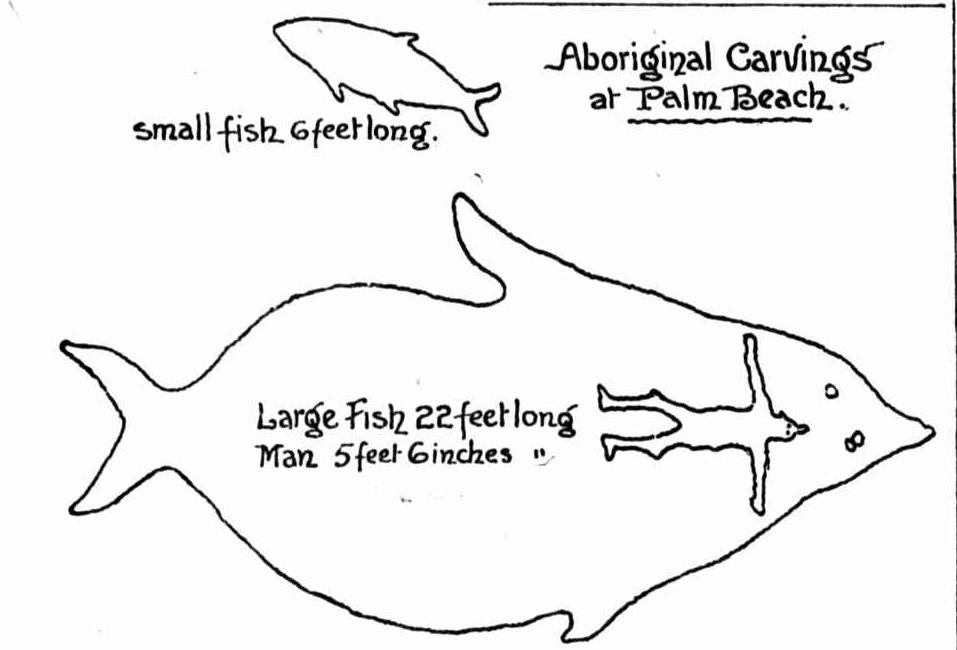
The discoverers in this case were H. A. Wilshire, the Sydney architect, and Mr. Booth, of Palm Beach. Though presumably the work of some aboriginal artist who lived in bygone centuries, the drawings show a clear and well-preserved outline. They have been cut on a very large fiat rock en the top of the hill between Sand Point, Pittwater, and Cabbage Tree Boat' Harbor, Palm Beach, near Barranjoey. The drawings represent two kinds of fish— one being apparently a groper and the other a shark. One is 22ft. long, and the other just 6ft. Within the first is the figure of a man of medium height. Whether the tribe to which the artist belonged had any knowledge of the legend of Jonah and the Whale, and intended the inclusion of the human figure within that of a largo fish to illustrate that legend, Is a matter which may be left to conjecture. The probability is that the drawing of the man in that position was due to considerations of convenience.
The Hawkesbury sandstones, by reason of their comparative softness, offered exceptional facilities to the coastal tribes to display their art. At all events there are many of these drawings in the Port Jackson and Hawkesbury districts. Mr. Wilshire regards the one hero depicted as an exceptionally good outline, and of better shape than any yet recorded. These drawings might he considered clever, in the matter of skilful portrayal of the creatures depicted, even if they had been done with suitable implements. When it is remembered, however, that the work must have been done with the most primitive of stone implements, it will be realised that infinite patience and labor, as well as some considerable artistic ability, must have been brought to bear. In this case a very ' line, clear, and unmistakably expressive outline has been traced of the fish forms in the solid rock. There is nothing to denote the age of these carvings, but it may be surmised to be very great. In all probability they were made many centuries ago. They were discovered by Mr. Wilshire and Mr. Booth in August. Some of the stone excavated in this locality, it may be mentioned, is of very fine quality and beautifully marked, the coloration generally being pink, reddish brown, and grey. The stripes of color stand out as clearly as if hand-painted, and present a very pretty and artistic effect when used for house-walls. The drawings, being the concrete and enduring expression of the artistic ideals and aspirations of a tribe of human beings now extinct, possess both personal and historic interest, if not value; and it is the intention of Mr. Wilshire to have the carvings fenced in and protected.The drawing of the carvings here presented was made by Mr. Wilshire.
Palm Beach, 1875 (?) by George F. (aka F. Halstead) Halstead
Watercolour heightened with bodycolour, 32.5 x 63.5 cm
George F. (aka F. Halstead) Halstead (Working 1860s-80s) Australia, courtesy Fine Australian Paintings, Sotheby's, Sydney.
George F Halsted was a watercolour artist, active in the Sydney area in the latter half of the nineteenth century. Works signed by 'F Halsted' of the same period are believed to be those of George F Halsted. Halsted exhibited with the Art Society of New South Wales from its first exhibition in 1880. His work is represented in the Mitchell Library.
The portrait of a young girl and the view of a forty.gun frigate of Malta reflects great credit of their artist, Mr. G. F. Halstead. ....Mr. G. F. Halstead, artist, contributes two splendid pictures, being views of this Sydney Harbour from the Free Public Library, and of Rushcutter's Bay from Darling Point. They are very promising specimens of art, and well worthy the notice of connoisseurs. N.S.W. ACADEMY OF ART EXHIBITION. (1873, April 16). Empire (Sydney, NSW : 1850 - 1875), p. 3. Retrieved from http://nla.gov.au/nla.news-article63229338
Arthur Streeton, another of that changing it all innovative group, was lauded and applauded for his Palm Beach works (see above) - but it is the ladies associated with spending the 'season' at Palm Beach, as well as year round residents, who extended the canvas to print works that may be worn or featured woodcuts, like those of Mitty Brown's mother - Mrs Ailsa Allen:
Ailsa Allan's lithograph 'Pittwater' from 1937, Courtesy State Library of NSW
Ailsa Allan was among those artists led by Margaret Preston, Thea Proctor and Adelaide Perry who were central to the promulgation of modernism in Sydney in the inter-war years, through their wood and lino-block prints. Her work emphasised design, surface patterning, flattened forms and decorative detail, typical of Sydney modernism at the time.
Born in Sydney, daughter of Maria Graeme Connon and Robert Gordon Craig, a Sydney surgeon and one of those for whom
'Pill Hill', Palm Beach was named, due to the amount of doctors who bought blocks of land and built homes there early on - this term has been applied to the houses on Pacific road at Palm Beach - where the Craig home,'The Pink House' stands still. The hill opposite, Sunrise Hill, was once dubbed 'Spinsters Hill' due to the amount of single women, all professionals and many the first in their fields, purchasing blocks of land and building holiday homes there.
MISS Thea Proctor, the artist, is spending a week with Mrs. Gordon Craig, at Palm Beach. She left her paints and crayons behind, but at the last minute could not resist slipping in her pencils to do some drawing. IN THE NEWS (
1930, January 13).
The Sun (Sydney, NSW : 1910 - 1954), p. 17 (FINAL EXTRA). Retrieved from
http://nla.gov.au/nla.news-article226023899
NOTED SURGEON.
Dr. R. Gordon Craig's Death
MUNIFICENT GIFTS.
Dr. Robert Gordon Craig, one of the most distinguished of Australian surgeons, and a noted figure in the medical world, died early yesterday morning at his station, Ulinda, Binnaway, where he was on a visit when he was taken ill.
Dr. Craig crowned a brilliant career with munificent gifts to the University of Sydney, of which he was a graduate, for the advancement of medical education and of research work in the treatment of diseases. To him the University and medical students, and through them the community, owe an incalculable debt for his public-spirited benefactions and services.
DR. GORDON CRAIG.
The board of directors of the Royal Prince Alfred Hospital, on the retirement of Dr Craig last year as an honorary urological surgeon, placed on record its deep and lasting appreciation of the eminent and untiring ser-vices rendered by him to that institution over a long period of years.
Dr Craig was born in Ayrshire, Scotland, on May 24, 1870, and was the eldest son of Captain Robert Craig, who settled in Sydney in 1878. Educated at the Sydney Grammar School, and later at George Watson's College Edinburgh, he entered the University of Sydney in 1888 and graduated MB, Ch M in 1894. During a distinguished academic career, he gained the John Harris scholarship, 1893, and won the University gold medal awarded to the student who exhibited the greatest proficiency at the MB examination (1894). He was elected as honorary assistant surgeon to the Royal Prince Alfred Hospital in 1901. Relinquishing general practice in 1908, he removed to Macquarie-street where he practised as a surgeon until the end of 1930 After a serious illness in that year, he retired from active practice and went to live on the station property Ulinda.
He served during the war as Lieut-colonel in charge of the Australian hospital ship Karoola.
GIFTS TO UNIVERSITY.
During practically the whole of his medical career he had been in some degree associated with the work of the Royal Prince Alfred Hospital He was a resident medical officer of the hospital for one year, before entering private practice at King-street, Newtown. In 1911 he became honorary surgeon, a position which he held continuously until January 1926 On hi- own suggestion it was then decided that he should take over the post of urological surgeon To this branch of surgery he subsequently devoted himself entirely In his hospital work until his retirement In May last year His personal knowledge of this branch of surgery of which he was one of the pioneers in Australia, was widely acknowledged He was then elected an honorary consulting urological surgeon Dr Craig thus held important positions at the hospital for more than 30 years He gave his services unstintingly to build up the urological department at the Royal Prince Alfred Hospital, and also, by his own bequest, founded a Fellowship in Urology at the University of Sydney, to enable selected graduates from that seat of learning to attain to special knowledge In this subject He also acted as honorary urologist to the Royal Alexandra Hospital for Children.
He conferred a great benefit on medical education by gifts to the University of Sydney for the advancement of education and re-search work in the treatment of genito-urinary diseases Included in his gifts to the University was his own private laboratory, fully equipped. This has proved of the greatest service.
In 1928, Dr Craig gave £10 000 to the University of Sydney supplementary to his previous gift of £4300 for research work in urology This was apart from the gift of his private laboratory The significance of these benefactions was that it served to bring into closer association in a common humanitarian aim university medical schools and hospitals These gifts, and others on a generous scale, were practical proof of Dr Craig's faith in the value of research In subjects of which he himself was a master In 1926 he gave to the University £300 to cover the cost of establishing that year a post-graduate fellow-ship In urology and further sums in succeeding years totalling £20 000.
Dr Craig was a distinctive figure at a number of medical congresses and allied assemblages The annual congress of the International Society of Neurology at Madrid last year elected Dr Craig, among other prominent medical men to the Australasian section of that body One of the foundation Fellows of the Royal Australasian College of Surgeons and a member of the council of that body, he was nominated as a representative of the University of Sydney at the third Imperial Hygiene Congress in London in 1927, and took the opportunity, while abroad to make a comprehensive study of hospital organisation on behalf of the Royal Prince Alfred Hospital He was for some years on the council of the New South Wales branch of the British Medical Association being elected president in 1917 He was one of the 25 surgeons in Australia and New Zealand who were made honorary Fellows of the American College of Surgeons in 1924.
Dr Craig's munificence in the humanitarian cause of healing is his most enduring memorial.
NOTABLE OPERATION
A few years ago. Dr Craig was the central figure in an operation which was unique because of Its unusual setting A youth had been accidentally shot while hunting for rabbits Tile bullet entered his back, and a desperate fight for his life followed He was so weak that it was impossible to carry him up the rough tracks of the country in which the accident occurred, and an operation had to be performed in a primitive little cottage at the bottom of the rugged Burragorang Valley Specialists were hastily summoned and it was to Dr Craig that the task of performing the delicate operation was entrusted, without the facilities of the ordinary operating-room The youth's life was saved.
He won his "blue" at the University as a long-distance runner Dr Craig devoted much of his leisure time to golf, being a member of Bonnie Doon in its early days, and later of the Australian Golf Club. For many years he was a prominent yachtsman, and owned and raced successfully many craft of different classes as a member of the R S Y S , the Prince Alfred Yacht Club, and the Sydney Amateur Sailing Club. He was an active Rotarian, and acted in an honorary capacity on many public committees and was a member of the Australian and University clubs.
Dr Craig is survived by Mrs. Craig, who before her marriage, was Miss Connon, of New Zealand, and two daughters-Ailsa wife of Dr R K Lee Brown of Sydney, and Helen, wife of Dr J F Chambers, of Melbourne Dr F Brown Craig, of Macquarie-street, and Mr. J B Craig, a director of Prescott, Ltd, are brothers, and Mrs. A Davidson of Sydney, and Mrs. H C Hamand, of Devon, England, sisters of Dr Craig. NOTED SURGEON. (
1931, September 3).
The Sydney Morning Herald (NSW : 1842 - 1954), p. 10. Retrieved from
http://nla.gov.au/nla.news-article16809295
Ailsa earned an economics degree from Sydney University. Her first husband, Dr Lee Brown, a surgeon in partnership with her father and a keen aviator, died in 1934 when he crashed his plane; their daughter, Mitty Lee Brown , was born on October 22nd 1922 in San Francisco.
LEE-BROWN--CRAIG.—September 3, 1921 at San Francisco, Robert Kingsbury Lee-Brown, son of Dr. and Mrs. Lee-Brown, Graystanes, Vaucluse, to Ailsa, elder daughter of Dr. and Mrs. Gordon Craig, The Crossways, Centennial Park. Family Notices (1921, November 26). The Sydney Morning Herald (NSW : 1842 - 1954), p. 12. Retrieved from http://nla.gov.au/nla.news-article15986259
The marriage took place in San Francisco last month of Miss Ailsa Craig, daughter of Dr. and Mrs. Gordon Craig, of Sydney, and Dr. H. K. Leo Brown, son of Dr. Lee Brown, of Sydney. Dr. Lee Brown, Junr., has joined the California University, and will undertake special research work. SOCIAL GOSSIP (
1921, November 6).
The Sun (Sydney, NSW : 1910 - 1954), p. 18. Retrieved from
http://nla.gov.au/nla.news-article223486262
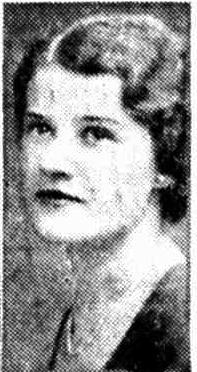
A Farewell Party.
To say good-bye to Mrs. MacCallum before her departure for Europe, Mrs. MacLaurin and Mrs. Gordon Craig gave an at home in the drawing-room of the Queen's Club yesterday afternoon. Beautiful pink roses made an effective decoration. The guests included Lady and Miss Fairfax, Mrs. Harvey. Mrs. T. R. Bavin. Mrs. Ralph Worrsll. Mrs. Cecil Purser, Mrs. Andrew F. Davidson, Miss Jaxvie Hood, Mrs. Reginald Davles, Mrs. Sinclair Gillies, Mrs. Lightoller, Mrs. M. MacCallum, Mrs. Dodos, Mrs. Bullmore, Mrs. Julius, Miss Curnow, Mrs. Richardson-Clark, Mrs. R. K. Lee Brown, and Miss David. Lady Cullen and Lady David, who are both absent from Sydney, were unable to be present. For Women (
1924, November 29).
Evening News (Sydney, NSW : 1869 - 1931), p. 8. Retrieved from
http://nla.gov.au/nla.news-article119970313
A Flying Thrill
HAD a great thrill during the week when I went out to Mascot, met Major de Havilland, and was taken for a flight over the city by the gallant major himself. The first person I struck upon relanding (I think that's the term) was Madge Lewis, who is piling up her hours of "solo" work with constant practice and bids fair to be an excellent flier. From Major de Havilland I learned that two of the most enthusiastic pupils at Mascot are Dr. and Mrs. Lee Brown (she was Ailsa Craig, you know), and both bid fair to become good pilots. SOCIAL SIDELIGHTS (1932, April 3). The Sun (Sydney, NSW : 1910 - 1954), p. 24. Retrieved from http://nla.gov.au/nla.news-article229884784
From 1927 to 1932 Ailsa studied with Thea Proctor and Adelaide Perry at Julian Ashton 's Sydney Art School and contributed to the student magazine, Undergrowth.
Her work was exhibited with the Society of Artists in the late 1920s and early 1930s.
The boat house. 1931.
Linocut, printed in black ink, from one block.Impression 4/50: Sydney Harbour scene of a boat house with dinghys inside, palm trees and a man carrying oars.. Held in the collection of thhe National Gallery of Australia
MOST of the well-known women painters of all the States will be represented at an interesting exhibition, arranged by the Women Artists of Australia, which is to be held during July at the Education Buildings. Mrs. A. Stephens and Miss Myrtle Innes, are the organising secretaries, and the committee includes Misses Ailsa Lee-Brown, Juanita Job, and Valerie Lazarus. ALL FOR A GOOD CAUSE (
1934, June 3). The Sun (Sydney, NSW : 1910 - 1954), p. 22. Retrieved from
http://nla.gov.au/nla.news-article229214540
In 1935 Ailsa married, for the second time, her flying teacher
G.U. (Scotty) Allan, a flying ace, and thereafter signed her work 'Ailsa Allan’. They lived in Brisbane for two years (1935-36), then returned to Sydney and set up house at Palm Beach.
A FLYING honeymoon has been planned by Mr. and Mrs. G. U. ('Scotty') Allan, who were married at Ulinda station, Binnaway, last Saturday. Mrs. Allan was formerly Mrs. Ailsa Lee Brown, daughter of the late Dr. Gordon Craig, and Mrs. Craig at whose home the quiet ceremony took place. A frock of daffodil-yellow was her choice for the wedding, and she was attended by her sister, Mrs. J. Chambers of Melbourne. Of Social Interest (
1935, June 26).
Sydney Mail (NSW : 1912 - 1938), p. 23. Retrieved from
http://nla.gov.au/nla.news-article166109416
Air-minded Honeymooners
AN interesting wedding took place at Binnaway last Saturday. The bride was Mrs. Ailsa Lee Brown, widow of the late Dr. Lee Brown, who was killed in an aeroplane smash last year. The bridegroom was Mr. G. U. Allan, better known as "Scotty," who pilots a Quantas Empire plane on the Brisbane Singapore route.
Mrs. Allan is the daughter of the late Dr. Gordon Craig and Mrs. Craig, and she chose her old home, Ulinda Station, Binnaway, as a setting for the ceremony. She wore a fur coat over a daffodil yellow frock and a soft felt hat. The bride's sister, Mrs. J. Chambers, of Melbourne, was matron of honor, and Mr. A. Baird, chief engineer of Quantas-Empire Airways, was best man.
After the ceremony, the bride and bridegroom motored to Tamworth, from whence they left on a honeymoon that will be spent flying. Mrs. Allan, too, has an A. flying- license.WOMAN'S POINT OF VIEW Off the Sheep's Backs (
1935, June 28).
The Land (Sydney, NSW : 1911 - 1954), p. 19. Retrieved from
http://nla.gov.au/nla.news-article116275426
In 1938 Proctor praised her wood engravings, reproducing two of them to accompany her article 'Modern Art in Sydney’ (whic some state was simply a justification of the Contempory Art Society). Ailsa Allan, she said, had begun wood engraving 'three years ago’ and by then had produced 'hardly more than a dozen, so that her technique as yet shows some weakness. Wood engraving is a branch of art in which technique is of great importance, but still not as important as the idea expressed … she has an original vision. Engraved lines in the modern woodcut are not used merely to give tone, but … to assist the general rhythm of the design, and Mrs. Allan has this strong feeling of rhythm. “Open, Please”, is an example of the importance of the idea. Of what value is an assured technique if it is only camouflage for a barren mind?'
Thea at Palm Beach, in her friend's mother's home:
FROM HERE AND THERE
MISS Thea Proctor, the artist, is spending a week with Mrs. Gordon Craig, at Palm Beach. She left her paints and crayons behind, but at the last minute could not resist slipping in her pencils to do some drawing. IN THE NEWS (1930, January 13). The Sun (Sydney, NSW : 1910 - 1954), p. 17 (FINAL EXTRA). Retrieved from http://nla.gov.au/nla.news-article226023899
Her linocuts were reproduced in Manuscripts in the early 1930s, including Waiting 1933 (man at dance waiting for partner), issue 4 (February 1933, p.19: ill. Sydney by Design [ SBD ], 32) and The Mother 1934, published in issue 8 (1934), National Gallery of Australia (ill. Butler SBD , 14).
She abandoned linocuts in favour of wood engravings in 1936, making several in the latter years of the decade. - AUSTRALIAN ETCHINGS & ENGRAVINGS 1880s – 1930s FROM THE GALLERY’S COLLECTION, NSW Art Gallery and Design and Art Australia Online Ailsa Allan webpage.
Ailsa died on February 9th, 1943, when on her way home from a coast watching duty during WWII.
Second Red Cross Appeal Day
Beach Wraps Sold Well.
MRS. ALAN COPELAND was justifiably proud that the two dozen beach wraps she made for the Palm Beach, Whale Beach, Avalon, stall sold early in the morning. "They could have sold twice as many," she said. For Women. UNUSUAL MOUNTS: CHRISTENING (
1940, December 7).
The Sydney Morning Herald (NSW : 1842 - 1954), , p. 9. Retrieved from
http://nla.gov.au/nla.news-article27949201
Roy de Maistre
The contrast between the first Artists here and a man like Roy de Maistre further state the development of Australian, and Pittwater, Artists.
Roy De Maistre CBE (27 March 1894 – 1 March 1968) was an Australian artist of international fame. He is renowned in Australian art for his early experimentation with "colour-music", and is recognised as the first Australian artist to use pure abstraction. His later works were painted in a figurative style generally influenced by Cubism. His Stations of the Cross series hangs in Westminster Cathedral and works of his are hung in the Tate Gallery, London and in the Art Gallery of New South Wales, Sydney.
He went by the name of Leroy Leveson Laurent Joseph De Maistre, but had been born as Leroy Livingstone de Mestre at Bowral, New South Wales on 27 March 1894 into a home of high social standing in the then Colony of New South Wales. He was the youngest son of Etienne Livingstone de Mestre (1832–1916), the thoroughbred racehorse trainer of the first two Melbourne Cup winners; and the grandson of Prosper de Mestre (1789–1844) a prominent Sydney businessman from 1818 to 1844.
De Maistre was educated, together with his brothers and sisters, by tutors and governesses at the family home near Sutton Forest. In 1913 Roy was sent to Sydney to continue his music and art studies. He studied the violin and viola at the New South Wales State Conservatorium of Music, including playing the viola in the Sydney Orchestra. He studied painting at the Royal Art Society of New South Wales under Antonio Dattilo-Rubbo who encouraged interest in Post-Impressionism, alongside fellow students Norah Simpson, Grace Cossington Smith and Roland Wakelin. He produced works inspired by reproductions of European post-impressionists, such as van Gogh, Gauguin and Cézanne. He then studied under Norman Carter and also at Julian Ashton's Sydney Art School.
In November 1916, as Roi de Mestre, he first exhibited, showing Impressionist paintings concerned with the effects of light.
In 1917 he met Dr Charles Gordon Moffit from the Kenmore Hospital at Goulburn, with whom he was to work devising a "colour treatment" for shell-shocked soldiers by putting them in rooms painted in soothing colour combinations.
De Maistre developed an interest in "colour-music", his theory of colour harmonisation based on the relationship between colours of the spectrum and notes of the musical scale. With his ordered, analytical mind, he applied the theory of music to his painting. He worked with Adrian Verbrugghen, and then Roland Wakelin to devise a "colour-music" theory. In 1919 he held a joint exhibition with Wakelin titled Colour in Art to expound his theories. In this (at the time controversial) art exhibition the musician-turned-painter had chosen colours to harmonise like the notes in music. The exhibition showcased 'colour orchestration', an experiment on the interrelation between different hues on the colour spectrum and notes on the musical scale. For example, the note A was matched with the colour red.[4] The only existing example of this experiment is Rhythmic composition in yellow green minor (1919), which visualises music slowly unravel through the flow of colours. This "colour-music" exhibition became part of Australia's art-folklore as "pictures you could whistle". Influenced by earlier exponents of "colour-music" theory in Europe and America, this exhibition has since been identified as the earliest experiment in pure abstractionism in Australia. His colour charts, showing musical notes corresponding to different hues, are now owned by the Art Gallery of New South Wales, with "colour music" gaining a permanent place in Australian art history.
de Maistre was also interested in interior decoration and the manner in which the colours within a room could impact upon the human psyche. While exhibiting traditional pieces of fine art in the Colour in Art exhibition, he also included a 'Colour Organisation in Interior Decoration' segment. In this part of the exhibition, de Maistre displayed domestic interiors based on his 'colour music'. Discs and scales to help home-owners integrate colour music into their own homes were made available for purchase. In 1924, this colour harmonising chart was further developed by Grace Brothers and placed for sale in their stores.
After 1919 de Maistre virtually abandoned colour-music and abstraction, though in London in 1934 he reworked some of those same ideas. His paintings of 1921–22 are experiments in impersonal, unemotional tonalism, and from the 1930s he turned to a more recognisably figurative style of work generally influenced by Cubism.
In 1922 he had his first painting purchased by the Art Gallery of New South Wales, Still Life.
In 1923 he went to Europe on a travelling Art Scholarship by the Sydney Society of Artists. He spent three years abroad, studying in London, and in France in Paris and Saint-Jean-de-Luz, where he created Sea piece, St Jean de Luz (1925), a landscape painting featured a mild semblance of his earlier practice with colour and abstraction. He also visited Italy, Spain, Belgium, and the Netherlands. In 1924, while abroad, he patented the "De Maistre Colour Harmonising Chart", which was produced and marketed by Grace Brothers, a Sydney department store.
On returning to Sydney, he held one-man shows (1926 & 1928); contributed to annual exhibitions; conducted classes in modern art to private pupils from his studio in Burdekin House, Macquarie Street, Sydney; and organized in his house an exhibition of modern interior design (1929). From his family's prominent position in society, he helped to make modern art fashionable in Sydney in the late 1920s, or at least as fashionable as it could be. The anti-modernist criticism he received following his first one-man exhibition in Sydney convinced him that his art could not flourish in Australia.
Roy de Maistre, Woman with parasol at Palm Beach, 1927 held by and courtesy of the Art Gallery of NSW
Among Painters.
Sydney's newest art alliance, 'A Group of Modern Painters,' which 'is registering its first kick at the Grosvenor Galleries, is showing work by George Lambert, A.R.A., Thea Proctor, John D. Moore, Margaret Preston, Roland Wakelin, Roi de Mostre, Elioth Gruner, Kenneth MacQueen, and Vida Lahey. Mr. Hugh McCrae tells me: 'Prejudices of- taste and education are bound to come in the way of any just- decision as to the .merit of this adventure; .particularly when an adherent trips and strikes an attitude, which is serious, without being dignified. Only a few of the exhibitors have evolved pictures of original conception; while the majority, responding to the influence of the European modernist cult, offer glimpses of nature, cut into slices . . . like sandwiches .. . . dropped in paraffin paper. 'When Roland Wakelin paints a yellow jug, No. 10, quite bent under the weight of his sincerity (?),' says Mr. McCrae, 'I feel certain that he makes it both crooked and yellow, out of politeness towards the critic, so as to give him grounds for something sensible to say. This whim for courtesy is noticeable even by his behaviour towards still-life models, where ho has given- up his chair to a beer bottle. Roi de Mestre's 'Palm Beach' has dramatic qualities but his 'Indian Rug' made my last hairs stiffen at the approach. Elioth Gruner's view of Bathurst is meagre in perspective, and I only understand the foreground. Thea Proctor draws grandly, with assurance, and signs of plentiful reserve. From the Notebook of a "Sunday Times" Man (
1926, December 5).
Sunday Times (Sydney, NSW : 1895 - 1930), p. 4. Retrieved from
http://nla.gov.au/nla.news-article128135288 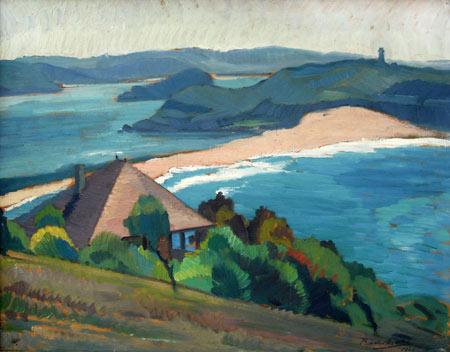
Roy de Maistre,
Landscape at Palm Beach, 1926
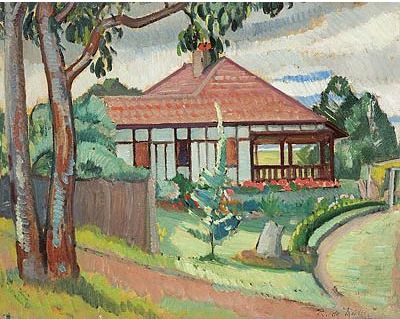
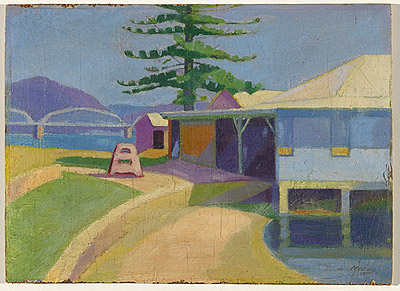
Roy de Maistre,
Palm Beach house, (Illustration) 1927 Roy de Maistre,
Dangar Island (Colour Sketch)
In March 1930 he left Australia to live permanently in London. He held one-man shows at the Beaux Arts Gallery, London (1930); in the studio of his colleague Francis Bacon (1930); at Bernheim Jeune, Paris (1932); Mayor Gallery, London (1934); and at Calmann Gallery, London (1938). His work was also illustrated in several editions of Herbert Read's influential book Art Now. In 1931–32 he returned to Saint-Jean-de-Luz. In 1932–34 he visited Compiègne. In 1934 he conducted a painting school with Martin Block. In 1936 he set up studio at 13 Eccleston Street, Westminster.
In 1936 De Maistre met the 18-years-younger novelist Patrick White. The two men never became lovers, but firm friends. In Patrick White's own words "He became what I most needed, an intellectual and aesthetic mentor". They had many similarities. They were both homosexual; they both felt like outsiders in their own families (for example De Maistre's family disapproved of his painting and described it as 'horrible'); as a result they both had ambivalent feelings about their families and backgrounds, yet both maintained close and lifelong links with their families, particularly their mothers. They also both appreciated the benefits of social standing and connections; and Christian symbolism and biblical themes are common in both artists' work. Patrick White dedicated his first novel Happy Valley (1939) to de Maistre, and acknowledged de Maistre's influence on his writing. He even went to Saint-Jean-de-Luz during the writing of the novel under encouragement from de Maistre. In 1947 De Maistre's painting Figure in a Garden (The Aunt) (1945) was used as the cover for the first edition of Patrick White's The Aunt's Story. Patrick White also bought many of de Maistre's paintings for himself. In 1974 Patrick White gave all his paintings by de Maistre to the Art Gallery of New South Wales. [5]
Mr. de Maistre allows us to look into a fellow 'colourist" - Grace Cossington Smith, who also frequented Pittwater while developing her voice in imagery.
Grace Cossington Smith
Although not a Pittwater resident Artist Gace certainly grew her craft here and was clearly a habitue of our environs, many of her fellow 'Colourists' creating works here. Grace was born near the water, had access to bush and water at Turramurra, and access to Pittwater down Mona vale Road - which was also a subject in one painting the lady did.
SMITH.—April 20, at Cossington Neutral Bay, the wife of Ernest Augustus Smith, of a daughter. Family Notices (1892, May 2). The Sydney Morning Herald (NSW : 1842 - 1954), p. 4. Retrieved from http://nla.gov.au/nla.news-article13862661
Bay View [sic] Pier, 1943
Oil on board, 49 x 41 cm, courtesy Fine Australian Paintings, Sotheby's, Melbourne.
View from Pittwater
Oil on board, 28 x 30 cm, courtesy Australian & International Paintings, Lawsons, Sydney.
Sea Coming in 1945
Oil on composition board, 34.5 x 40 cm, courtesy Fine Australian and European Paintings, Sotheby's, Melbourne.
PROFESSOR RADCLIFFE BROWN will open an exhibition of pictures by Miss Grace Cossington Smith at the Grosvenor Galleries to-morrow afternoon, when Brigadier-General Anderson will also speak. Miss Smith is a memberof the Turramurra Wall-Painters' Union, a story of which appears on page 1 of "The Women's Supplement." Social Interests (
1928, July 22).
The Sun (Sydney, NSW : 1910 - 1954), p. 31. Retrieved from
http://nla.gov.au/nla.news-article222167147
A curious article that underlines the late 1920's passion and sponsorship and spread of Art:
The Wall Painters of Turramurra
Vice-Royalty at the Paint-box
ABOUT eighteen months ago fifteen girls, who were all fond of drawing, but who had never (with one exception) done any serious work before, decided to meet every Thursday afternoon in the garden at "Ball Green," Turrnmurra; the home of General and Mrs. A. T. Anderson, and draw each other. After a few weeks when everyone was tired of saying, "Do I really look like that?" 'and the messages from various fathers and brothers became too insulting, the girls decided to give up portrait painting and ‘tackle something on a larger scale'. So the Turramurra Wall Painters' Union came into existence, and with Gaugin as its example, and Mrs. Anderson as its leader, the members accomplished the first wall frescoes (apart from painted ceilings' or friezes) to be done in Australia.
The original members were Miss Elaine de Chair, daughter of the Governor, and Lady de Chair, Miss Ailsa Cullen, daughter of Sir William and Lady Cullen; Miss Bethra Anderson, daughter of General and Mrs. Anderson; Misses Gwen and Jean Ramsay, Claire and Jean Macpherson (Sir John Macpherson's two daughters, now in England), Olga Bruche, (General Bruche's daughter, now in India), Mrs.. Eric Campbell, Mrs. Norman Cowper (daughter of Mr. and Mrs. Hugh Mc-Crae), Miss Betty Lindner (who is on her way to England), Mrs. Badham-Jackson, Miss Rose McCrae, Miss Marian Russell, and Miss Grace Cossington-Smith, who held an exhibition of her work at the Grosvenor Galleries recently, and is now one of the leading members of the recently-formed new Sydney group.
Distinguished visitors who came to see the pictures were always asked to paint in this way. Lady de Chair did a landscape panel, and Miss de Chair, St. George. The dragon was painted by Miss Ailsa Cullen; and Captain Curtis, military secretary to Lord Stonehaven, was responsible for the serpent in the dragon's mouth; The Hon. Ava and Ariel Baird, daughters of the Governor-General and Lady Stonehaven, painted a snowdrop and a crocus respectively, it and Mrs. T. R. Bavin tried her ability on a palm tree. Miss Shirley Bavin contented herself with palm fronds.
The girls commenced work one Thursday in the spring, when the squat little two-roomed shed, 'crouching beside the gum trees, which they were to paint, 'was filled with flickering sunshine, and the scent of the last violets and the first roses came in through the broken windows. Scaffoldings were erected in front of each panel, with two ladders, three tables, and towers of chairs, modelled on the Three Bear system , —Big chair, Little chair, and Tiny chair — one on top of the other. In the middle of the room, on a bench, was a box full of brushes, with long handles and short handles, and square points and round ones. There were a few wooden palettes and some china ones, but for the most part soup plates and saucers were used, and beer bottles full of turpentine were scattered about everywhere.
The paints used were riot of the aristocratic kind; there were no subtle distinctions in colors. Instead of choosing between rose madder, vermillion, dragon's blood or desert lover, the girls used either dark red or else red, and on some shelves there were masses of bottles marked "light blue"' or "brown" or "orange."
The artists naturally give a great deal of attention to overalls; perhaps they feel that if the overall doesn't make the artist, what does? So Honey wore pink gingham, while Betty chose a pale blue shepherd's smock;'. Olga's green overall was covered with cow's jumping over innumerable moons, and Gwen had "Where are you going to, my pretty maid?" printed in red, all over her Victorian pinafore. In fact, the Wall Painters, sitting at lunch under the apple trees in the orchard, looked like a bed of Darwin tulips.
As for the paintings themselves, they were even gayer than the artists. Here a white horse, drank (foolishly) of sea froth. There, magnolias dipped over waves of limpid chrysophrase, or saffron crocus stippled a hillside, where honey-colored men and; women lived a life as mysterious as the exotic leaves about them. There were, too, a-winged Saint George, a monstrous dragon, ducks, a white goat, a nun, a band of gypsies, a wooden, god, a bulldog, and a black horse straight from the Apocalypse.
There are now 15 painting members and 15 associate members of the union, and their ambition is to paint a church, Two offers have come from country districts, but owing to the impracticability of distance, the girls are hoping that a church will be offered them closer to town. Some idea of the work these girls are doing can be obtained from the accompanying Illustrations. The top picture was painted by the Misses Jean and Gwen Ramsay, and is done from a design of Gaugin's. These two artists are now doing their own original designs for a bedroom, showing Incidents in the lives of the first Australian settlers With Misses Ailsa Cullen, Bethra Anderson and Betty Chisholm they are studying with Mr. Roi de Mestre.
The color scheme of the central picture is carried out in tones of pink, and shows Miss Betty Lindner's idea of the angel and two pilgrims in the fields of heaven.
The lower picture, with Miss Anderson seated on one of the painting tables, shows panels, by Miss Marian Russell, Mrs. Norman Cowper, and Miss Anderson.
An original design by Miss Grace Cossington Smith is on the extreme right.
An Ethel Anderson article on Grace runs below. Ethel Anderson championed Artists - another example being Roland Shakespeare Wakelin, who at one time lived at Dee Why near fellow artists James Muir Auld and Lawson Balfour. Balfour is credited with being one of the first to discover the possibilities of the Dee Why area as a sketching ground. These gentlemen made works of north of this once green and salt-air idyll and all three were proponents of the 'Post-Impressionist plein air painting' this area was well suited to:
WATERCOLOR ARTIST.
Farmer's Art Gallery is aglow at present with the delicate atmosphere and the beautiful tints of Mr. J. Muir Auld's latest collection of watercolor paintings. It comprises a charming lot of local landscapes, that offer ample scope for this artist's rare gifts as an advanced watercolorist.
A gratifying feature of the exhibition is the steady stream of visitors that patronise it daily, among whom are to be noticed not a few buyers and connoisseurs.
Among the pictures that are prominent may be mentioned "Morning, Dee Why," "Beach and Headland, Newport," "A Summer Day," and "Afternoon, South Creek," the two latter marked "sold."
Our photo, of Mr. Auld is by May Moore, Sydney.
MR. J. MUIR AULD.
HAPPY PICTURES.
(BY ETHEL ANDERSON.)
Miss Grace Cossington Smith's pictures (now on exhibition at the Grosvenor Galleries) have the cool elegance of hail, or cherry blossom in a spring shower. They are high pitched and clear, like sheep-bells heard on windy heights. And they are all happy pictures. Miss Cossington Smith seems to paint for no other reason than to express her pleasure in life. And out of this pure joy of hers she is able to make works of art that will reflect her joy, and communicate it to others. For this reason, and because they are full of the artist's own experience, her pictures should please many people who do not care for pictures, but who do care for the beauty of everyday, human experience.
Shelley was sad because the moment of fruitful vision which he called "the spirit of delight" came so rarely. Arthur Clutton Brock has pointed out that the poet Herbert rejoiced when "once more he smelt the dew and rain and relished versing." He quotes, too, Christina Rossotti's saying:
It seems an easy thing
Mayhap one day to sing,
Yet the next day
We cannot sing or say.
With artists, as with poets, the moments of vision, of inspiration, are rare. So that many artists are tempted to exercise their craft without inspiration. But in this exhibition of Miss Cossington Smith's she seems never to have painted except in such moments of creative vision, and her wholly original technique seems to have grown quite naturally out of her efforts to give these moments their adequate expression in paint. The sleeping dog; the aluminium saucepan and green tea-pot, jugs, glass bottles, on the iron tray on the floor; the gullies, airy depths and heights, in the picture called "Bush near the Waterfall," the larder window; growing lilies; drooping, bucolic, pumpkin leaves, have all been painted in such moments of illumination. The spirit of delight is in them.
In these pictures, and in all Miss Cossington Smith's deft and rhythmic compositions, pattern is always rightly resolved Into a just relationship of form with form. And character is never lost in mere design. "White Dahlia"—one white and one maroon-red dahlia in a black jack—is entirely successful in its truth and beauty of form, its suave, alluring colour, and jewel-like quality of pigment. "Trees in Blossom," "Roses in a Bowl," "Morning Glory in a Glass Jug," are also successful pictures. In "Lily Growing in a Field by the Sea," and in the sylvan trespass of wind and sunlight in the landscape seen be-yond the "Bottles on a Window Sill," there Is a slightly literary and tonatic quality. Mr. Roger Fry's latest dictum, however, allows "psychological interest" to plastic art. It appears in these two pictures with the charming irrelevance of clouds, seen in a pond. HAPPY PICTURES. (1928, August 11). The Sydney Morning Herald (NSW : 1842 - 1954), p. 11. Retrieved from http://nla.gov.au/nla.news-article16485913
Grace Cossington Smith
More and more the influence of the modern schools of painting is being seen among Sydney artists. An extremely interesting representative of the advanced group of painters here is Miss Grace Cossington Smith, whose first "one-man" show is now being held at the Grosvenor Galleries.
MISS COSSINGTON SMITH studied in Europe some years ago. Latterly since her return to Australia she has shown with the Society of Artists and the Water-colour Institute, and also at the small exhibitions of still-life modernist paintings, to which Lambert has contributed, held at the Grosvenor Galleries. The present exhibition of her work is com-posed of nearly 40 oil paintings and nine water-colours of still-life, landscapes, and interior and figure pictures. Glancing round one's first impression is of lightness and gaiety. This artist, along with her vivid colour sense and feeling for design, has obviously a joy in the life about her. Take, for instance, the oil painting "Krinkly Konks Sleeping." Here we have a picture to delight dog-lovers— a bulldog, puckery-faced like all his tribe, curled up on a pink rug and mauve cushion. As in most of her work the artist has treated her design with breadth and simplicity, leading the spectator by just sufficient indications to share her impression. The effect, as well as being a satisfying composition, is wonderfully true. One realises the contented sigh with which the animal has sunk to rest, and also that, like every other dog, however profound his slumber he will open an eye at the slightest sound. Kinkly Konks is as much of a personality as any successfully drawn dog in literature, such as the youthful mature fox-terrier in Denis Mackail's "The Flower Show" or the liquid-eyed spaniel in Gals-worthy's "The Country House." Or, again, look at "Pumpkin Leaves Drooping." These bright green umbrella shapes are unmistakable; but the imagination of the artist, giving them universality, makes them transcend what they appear to ordinary folk. Look, too, at '"The Exeter Road, from Curtis's Corner." It is a grey, fur-rowed road bordered with green, flanked on one side by slanting telegraph posts and on the other by leaning trees. But it is also the complete suburban and country road we all know and that we wish, as we hump along it, to bring to the notice of the Main Roads Board.
The faculty Miss Cossington Smith possesses of expressing movement comes out in this picture and in another one of a road, the water-colour entitled "The Eastern Road, Turramurra." where the vegetation snatches at you as you whizz down the hill to breast the further slope; and also in the oil painting "Trees in Rain and Wind," where the two trees of different greens against the dirty grey sky make you feel the force of the stormy gust. The largest painting, "The Gully," is a strong and beautiful design, full of the feeling of the bush down in the hollows. It has a hint of sub-tropical undergrowth, though it was painted not far from Sydney. On this picture a visitor from Melbourne was very emphatic: "It should certainly he bought by the N.S.W. Gallery; it would be visited with pleasure whenever the trip over from Melbourne was made." There are many other beautiful compositions of flowers, among which must be mentioned "Christmas Lilies Growing," where the white flowers and their green stems are seen against the horizontal grey slats of the fence; the unnumbered "Australian Fire Wheel," with red-striped blossoms and brilliant, green leaves in glass jars against a white-draped background; and "Convolvuli," a very decorative pattern. And there is humour in "Choir Boy," a regular little imp putting on with his surplice the superficial saintliness that the human boy is accustomed to wear in such circum-stances, as in "Boys Drawing," showing in the foreground two boys in class-room desks, smug and interested and with the laborious twist of effort and concentration, and in the background other small boys off the chain. "People," too, is an absolute expression of a church interior, congregation, pews, and choir; while the water-colour "Harvest Festival" is full of thanks-giving and Sunday clothes.
MISS COSSINGTON SMITH has a talent for naming her pictures unusually. "Things on an Iron Tray on the Floor," a rather uncomfortable picture, is a truth-fully comprehensive description and "People," above described, is eminently expressive; while the lovely water-colour "Morning Glory in a Glass Jug" is admirably suited by its title. The smaller water colours, mostly soberer in tone than the other work, are drawn with meticulous detail. It is as if in these finely-finished little pictures the artist had set out to prove that she can draw indeed, though she considers that in other instances the spectator should be willing to collaborate intelligently. "Wamberal Lake, No. 1," with the cliff, and "Wamberal Lake, No. 2," with the skeleton tree and the wiggly telegraph pole against the pink sunset sky and the curves of water, supply enough to the imagination. A word about framing. Many artists have their fancies in this direction. Heysen prefers his water-colours to be framed in heavy, old-fashioned gilt, as if they were oils; while in J. Salvana's recent exhibition oil paintings had a broad white mount, almost as if they were water-colours. Miss Cossington Smith has had nearly all her pictures, oils, and water-colours framed in white. A few have narrow, brightly-coloured frames. This idea of framing adds to the effect of lightness and freshness in the paintings themselves. —BEATRICE TILDESLEY. Grace Cossington Smith (
1928, August 1).
Sydney Mail (NSW : 1912 - 1938), p. 32. Retrieved from
http://nla.gov.au/nla.news-article158402591
SOME interesting colored drawings of the Bridge in its various stages will be included in Miss Grace Cossington Smith's exhibition of drawings in chalk and colored pencils, to be opened by Mrs. A. T. Anderson in the Macquarie Galleries, Bllgh-street, on March 2. Sir HughPoynter will also speak at the opening. Topics for Women (
1932, February 26).
The Sun (Sydney, NSW : 1910 - 1954), p. 15 (FINAL EXTRA). Retrieved from
http://nla.gov.au/nla.news-article230524370
NEW MOVEMENT IN ART.
Miss Grace Cossington Smith's Exhibition.
An exhibition of pictures by Miss Grace Cossington Smith was opened yesterday at the Macquarie Galleries, Bligh-street, by Mrs A. T. Anderson, of Turramurra, in the presence of a large gathering. The catalogue, which contained 38 exhibits, consisted chiefly of pastel drawings and water-colours.
Miss Grace Cossington Smith is one of the foremost exponents of the new movement in art which has many followers in England and France, and is making some headway at Turramurra, helped by the energetic advocacy of Mrs A T. Anderson. The artist whose drawings are now on view at the Macquarie Galleries, if estimated by her best work, reveals qualities of draughtsmanship and design that go a long way towards compensating for her disregard of perspective values and faithfulness in representing form and colour. Her drawings in pastel of "The Bridge Curve" and "A Bridge Pillar" convey most forcefully a dominant impression of the weight and solidity of the structure. These drawings of the bridge and some of the drawings of flowers are the most significant specimens of the artist's work. She handles the difficult medium of pastel very deftly in her flower drawings, which also disclose a notable feeling for graceful design. Half a dozen water-colours, chiefly of flowers, are examples of the artist's skill in handling that medium. Other exhibits are less satisfying. The picture, "Great White Ship at Circular Quay," depicts a notable vessel that recently visited Sydney, resting on a green surface as solid as marble. Landscapes and houses around Turramurra, Bulli Pier, and Thirroul Sands are conceived as subjects of decorative design, and the drawings make no pretence of revealing natural or architectural beauties. But that is the avowed aim of the artist, so those who expect to find beauty reproduced as it is disclosed to normal vision must not be disappointed.
Mrs. A. T. Anderson, in opening the exhibition, said that those who, like Grace Cossington Smith identified themselves with the new movement in art, did not care to reproduce the exterior forms of things. They sought rather to express an individual impression from their own personal viewpoint. Personality was what they sought to express in any artistic work that they created. The new movement in art, as expressed in the work of Miss Grace Cossington Smith, whose pictures had received high commendation when exhibited recently at the new English Art Club and the Bond-street Galleries, was an influence against the rising tide of Communism. It stood for the life of the spirit, and this should be remembered at a time when even young children were taught to deride God and revile religion. NEW MOVEMENT IN ART. (
1932, March 3).
The Sydney Morning Herald (NSW : 1842 - 1954), p. 5. Retrieved from
http://nla.gov.au/nla.news-article16845187
ART SHOW OPENED.
In opening Miss Grace Cossington Smith's exhibition yesterday at the Macquarie Galleries, Brigadier-General A. T. Anderson protested against the attitude which required art to be an exact copy of nature. In poetry, he said, the average man had reached a higher level of understanding. There, at least, people would admit more than a mere statement of fact. He hoped the time would come when a corresponding liberty would be allowed to the art of painting. ART SHOW OPENED. (
1937, July 22).
The Sydney Morning Herald (NSW : 1842 - 1954), p. 4. Retrieved from
http://nla.gov.au/nla.news-article17385845
Miss Grace Cossington Smith
THE exhibition of paintings and drawings by Miss Grace Cossington Smith at the Macquarie Galleries now is the third held by this artist. Her most recent pictures are some lovely wildflower studies, a type of work in which she is especially inter-ested. The wildflowers of Australia she considers excellent subjects because of their clear though subdued and subtle colour-ing and their wonderful design. Miss Cossington Smith said that she has no fixed formula for her work, and believes it essential to approach each subject differently, allowing it to suggest its own treatment. She tries to express the laws of rhythm in Nature, "Sea at Thirroul" being a particularly good example of this idea. "The Ballet," reproduced on this page, was painted during the visit of Spessiva and her company, and is a striking example of her work. Miss Cossington Smith was a student of Senor Rubbo, and later studied in England and Germany. In 1932 she sent pictures to London, where an exhibition was held simultaneously with one in Sydney. She hopes to go abroad again to study contemporary work in England, believing Australian artists should be ready to receive influences from abroad. For all that, she feels our isolation here should have the good effect of permitting us to develop our own distinctive contribution to art. Miss Cossington Smith's exhibition will remain open until August 2. It was opened last week by Brigadier-General A. T. Anderson.
"The Ballet," by Grace Cossington Smith.
Miss Grace Cossington Smith with one of the pictures in her current exhibition.
A COLOURIST'S SHOW.
Grace Cossington Smith's Style.
Grace Cossington Smith's style has under-gone a decided change. As recently as three years ago, the artist was proclaiming her adherence to the post-impressionist movement by painting in metallically brilliant colour. But her present exhibition at the Macquarie Galleries shows her as a colourist of quite another sort. Her hues have a soft glow, a characteristically feminine charm.
This newer manner seems to be truer to her inmost artistic self. Although her pictures, which are all oils, do not achieve a uniform standard, they hit the mark much oftener then they used to do; and at their best they achieve something unique In Australian painting.
Miss Cossington Smith is much more interested in colour than she is In form. Her brush-work Is impetuous. It freely disintegrates natural contours into a series of small planes in order to introduce streaks and dashes of clear, unexpected reds, blues, and yellows. Once the spectator can adjust his viewpoint to this romantic approach to landscape, he will find it stimulating and revealing. For, when seen far off, these spirited canvases suggest the Australian countryside with a peculiar, lively Intensity. One recognises these colour schemes as concentrating into a small space authentic effects of light and colour and contrast which in actual fact would be spread over a widely-scattered vista. The general impression Is the thing, and not the pettifogging details. To this degree, Miss Cossington belongs to the same school as Monet, Sisley, and Pissarro. The work Is varied, and it repays close study. There are attractive figure and still-life pieces, as well as landscape subjects. A COLOURIST'S SHOW. (
1939, November 10).
The Sydney Morning Herald (NSW : 1842 - 1954), p. 6. Retrieved from
http://nla.gov.au/nla.news-article17622640
PICTURES BY GRACE SMITH
BY OUR ART CRITIC.
With "primitive" art the work of Grace Cossington Smith shares an unexpected simplicity, of vision a love of line and order.
Such paintings in her exhibition at the Macquarie Galleries as "Studio Window," "Evening," "Cottage In-terror," and "Figure in the Window" show such artlessness of presentation as to disguise their real architecture. They are felt however with intensity.
Yet there is a contrary undertone, a nervous element which occasionally dominates the mood. Her whole way of expression calls for an inner peace for rich and sparkling joyfulness. Joy is eagerly striven for, but the conscious and almost desperate way in which this quality is sought seems to defeat its purpose.
This underlying restlessness appears in certain passages—clusters of confused shapes and small and un-absorbed forms—in such paintings as "Still Life with Mignonette" and "Gumleaves and Bush Foliage." It is also evident in the forced colours of "Still Life with Waratah."
Moreover although Miss Smith paints in a high key of luminous colour, the quality of mosaic in which yellows predominate, the atmosphere is arctic.
This mixture may seem strange but is an interpretation of the struggles and aspirations of a tempermeant, these paintings are extremely interesting. Does not the fulfilment of a conception also proclaim its limitation and exhaustion?
These paintings have the faculty of stimulating the mind; they gene-rate a certain power. If their articulation is somewhat halting and lacking the easier graces, they do reveal some harmonies and fluctuations of great beauty particularly in the rectangular "Through a Cottage Window," and the rhythmical "Gum Blossom with Jug."
The exhibition will be opened by Miss Thea Proctor at 1.30 pm to-day. PICTURES BY GRACE SMITH (
1945, June 13).
The Sydney Morning Herald (NSW : 1842 - 1954), p. 5. Retrieved from
http://nla.gov.au/nla.news-article17935181
Artist's Sunlit World
Life, reflected in the paintings of Grace Cossington Smith, is a golden morning. By her manipulation of color, light drenches and saturates orchards, permeates lawns and trees, and vibrates with equal brilliance in kitchen and living-room interiors. A door is open wide upon a sunlit, airy world. The first "one-man" exhibition for some two years, by this Sydney artist, who, with Wakelin and de Mestre, was one of the first Australian artists to feel the impact of Cezanne and Van Gogh, is now on view at the Macquarie Galleries. In much of her present work, one is Immediately aware of assimilation of the former's organic structure, as in the "Morning Landscape" and "Golden Morning," and the latter's simple honesty of statement in, for in-stance, "Door into the Back yard," and the small "Interior with Sewing Machine." Although others may be more important, in these last two pictures one especially feels a gaiety of heart. This, as in all her work, is a happy, loving and spontaneous impressionism to which one quickly, if not always lastingly, responds because of her own per-sonal and obvious enjoyment in paint itself. Stress of so much sun how-ever, asks eventual relief in a greener thought in a greener shade, and one wishes a depth into which one may penetrate and enter. Warmth and pleasure, if they are to be keenly felt, experienced and expressed heed the counter-balance of shadow, of pain. But Grace Cossington Smith, in such of her paintings as the shimmering "Orchard in the Morning," which is animated and filled with vitality, and one or two of the small interiors, with a richer color, would voice something of Bonnard's song. "Still Life with Banksia" holds a subtle formality of arrangement beneath its natural appearance. The interesting exhibition will close on September 29.—TATLOCK MILLER. Artist's Sunlit World (
1947, September 17).
The Sun (Sydney, NSW : 1910 - 1954), p. 13 (LATE FINAL EXTRA). Retrieved from
http://nla.gov.au/nla.news-article228969329
Grace C. Smith
Exhibition
BY OUR ART CRITIC.
In the paintings of Grace Cossington Smith at the Macquarie Galleries, art is used as a safety valve.
The emotions thus released impart the force to painting which they have generated.
One finds the most vivid art in painters who are beset with such a chained energy. Whatever their technical accomplishments, their work will have a conviction far in advance of a more conventional expression. One feels almost tempted to say that only such art is worthwhile which springs from an urgency not to be denied.
In the paintings of Grace Cossington Smith there is a discipline and a great simplicity of vision but underneath it all one can feel the throbbing of the dynamo. This throb may change with each mood. Sometimes it will illuminate whole passages in icy lights, as in "Figure in the Window." Then it will flicker into the barest life as in "Dry Bush."
There is a forbidding Arctic exterior which fears the betrayal of the senses in "Still Life". An enforced order, which tries to defy the chaos of the emotions, in "Sitting-room Interior "; a pedantic consciousness of forms born from an original vision in "Vase in the Window"; and a gaunt primitivism which holds the fire of religion and a lyricism which obscurely recalls Blake in "Corner of the Room" and "Kitchen Interior."
But in all there is a strength and a pride which refuses to beguile the beholder. it is a remarkable show, in spite of its graceless, defiant attitude.
The exhibition will be opened by Mr Roland Wakelin at 1.30 p.m. today. Grace C. Smith Exhibition (
1947, September 17).
The Sydney Morning Herald (NSW : 1842 - 1954), p. 9. Retrieved from
http://nla.gov.au/nla.news-article18047663
Old lighthouse cottage now sculptors studio - Art student has lease of ruin on lovely Palm Beach headland for 5'- a week
by BETTY WILKINSON, staff reporter. Pictures by staff photographer Ron Berg.
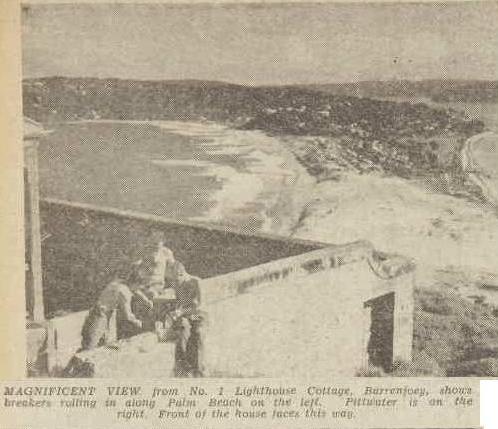 A spirit of adventure and plenty of enterprise have enabled a 26-year-old Sydney sculpture student to solve housing and studio problems by leasing a lighthouse-keepers' abandoned cottage for 5/- a week. The student is Bruen Finey, son of well-known artist George Finey. The house is a six-roomed cottage at Barrenjoey, Palm Beach, N.S.W. For years it has been ravaged by rats during the week and vandals at week-ends.
A spirit of adventure and plenty of enterprise have enabled a 26-year-old Sydney sculpture student to solve housing and studio problems by leasing a lighthouse-keepers' abandoned cottage for 5/- a week. The student is Bruen Finey, son of well-known artist George Finey. The house is a six-roomed cottage at Barrenjoey, Palm Beach, N.S.W. For years it has been ravaged by rats during the week and vandals at week-ends.
ALL that is left of the once snug dwelling is a stone shell with an iron roof.
Bruen, who is at East Sydney Technical College under the Commonwealth Reconstruction Training Scheme, is in his last term and wants somewhere to live and work. He has found in some fellow students equally ardent spirits, who will share the back-breaking job of making the house comfortable and form the nucleus of a small community with the arts as their great common interest.
The idea of taking the house first came to him when he was spending a day at Palm Beach in 1947. Enchanted by the position, more than 300 feet above the Pacific, with a magnificent view in all directions, Bruen was ready to tackle anything to make it his home. His first step was to find out which Government department controlled the house. It proved to be the Department of the Interior.
Barrenjoey headland, once the 400-acre farm of Larkfield, granted to an early settler in 1816, is now Commonwealth land reserved for use by the Army when it is required for defence, but at present administered by the Department.
Young Finey immediately applied for a lease, but it was not until January, 1949, that the transaction was complete, and Bruen received his passport to paradise-an official letter notifying him that he had a five years' lease of No. 1 House, Barrenjoey. Since then he has sweated and toiled week-end by week-end to make the house habitable. To make it so you would need what Bruen has-youth, enthusiasm, an undaunted spirit, and plenty of muscular strength-or a bottomless purse.
From the water's edge he and his friends carry on their shoulders every piece of material used. The only road is a narrow, steep track, strewn with big boulders and cut by deep gutters. It would be impassable for any vehicle except a jeep with a four wheel drive, or a horse and dray, such as the former Lighthouse keepers' furniture was brought in. One glorious day, with the pleasure-seeking Palm Beach week-end crowd forming a background to the hard slogging of the Barrenjoey boys. I joined the working party. David Hain and John Giles, two other members of the group, were with Bruen.
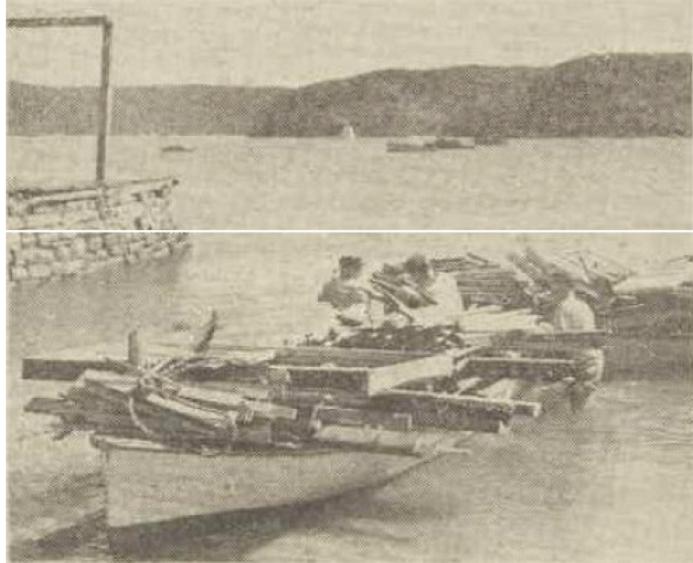 WADING waist-deep into the water, boys bring ashore two launches laden with materials for repairs. Old jetty was once busy scene when Broken Bay was port.
WADING waist-deep into the water, boys bring ashore two launches laden with materials for repairs. Old jetty was once busy scene when Broken Bay was port.
First scene of operations was alongside the golf links. Each lad in turn trundled a barrow, laden with materials, from the roadway to a nearby beach, where two launches were loaded to the Plimsoll line.
Cargo varied from huge doors to chair legs, and included an iron bedstead. It was a job lot the new tenants had picked up from a city hospital, and it had been stripped from an outpatients' section.
Working hard in the sun, the boys aroused the interest and sympathy of Mrs. E. Silverton, who brought from her home beer and biscuits to give them fresh heart.
It was a gesture you would expect from Mrs. Silverton, who remarked: "Well, dear, what I say is a little kindness never hurts you and I can't tell you all the happiness that has come to me because
I've been kind to people."
When I asked Mrs. Silverton how I would address something she asked me to send her she replied: "Just sent it to 'Auntie, Palm Beach.' Everyone here knows me.
"Auntie"' Silverton has a special interest in Barrenjoey, for the house next to Bruen's was once her home. She came from New Zealand, and brought with her some beautiful furniture made of a prized New Zealand wood. Mrs. Silverton and a friend used0 run a tea-room in the house, but they were driven out by snakes, although the business brought in £5 a week.
Snakes have not daunted them, David has already stood on two.
When they were fully loaded the launches chugged off down the bay; io the beach at the foot of Barrenjoey Headland. Bruen stores all his materials in a roomy, ramshackle boatshed near, the old jetty on the Pittwater side.
"Every time we climb to the top we carry something," he said.
First job Bruen did was to fill in the great windows from which even the frames had been taken, and to make a strong door for at least one room so that tools and materials would not "go off."
As everything is on the spacious scale of last century, the shutters for each window measure seven feet by three. That means a lot of carrying and a lot of carpentering. The shutters will be painted yellowand the wooden posts around the long stone-paved verandahs white.
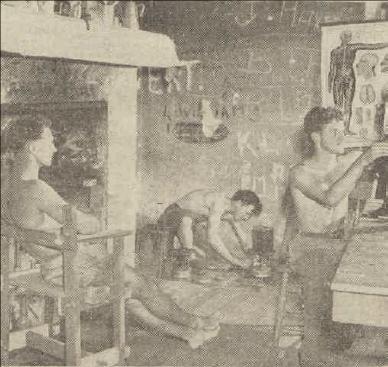 Picture left: HOMEMADE FURNITURE in the kitchen is the work of Bruen. Although primitive, it is solid. Defaced walls are typical of the vandalism in the old house, but the boys are confident that they will restore it in time. Each will have a room to himself.
Picture left: HOMEMADE FURNITURE in the kitchen is the work of Bruen. Although primitive, it is solid. Defaced walls are typical of the vandalism in the old house, but the boys are confident that they will restore it in time. Each will have a room to himself.
Big rooms
On the first floor, which is the level on which the house is entered, are six beautiful big rooms, each with its own fireplace, and a fines hallway, 33 feet long and six feet wide. Old sandstone steps, worn into hollows in the centre, lead down to the kitchen and bathroom, on the floor below. So far the bathroom is still a shambles, and the bath is still on the beach.
Opening from the kitchen is the courtyard, surrounded by a 12ft. wall of solid stone, where the boys “hope to have a vegetable garden," sheltered from the winds that sweep around the solid old house. In this courtyard is a huge well, more than 15ft. deep, which was filled with junk when the boys took over. They had to siphon out the water, then climb in, and remove; all the oddments that had been- thrown in, including galvanised iron pipes and bedsteads.
An eager volunteer loader and unloader on the day of my visit was John Arblaster, grandson of one of the lighthouse-keepers. She recalls settling into the fine six-roomed house. All her furniture, brought from Newcastle, where her husband had been stationed, was landed on the jetty, and taken by horse-drawn lorry up the steep slope.
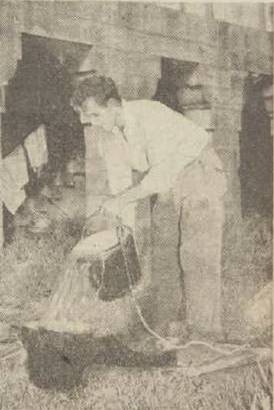 Picture right: WATER SUPPLY for No. 1 House, Barrenjoey, is a huge underground well in the courtyard. David Hain lowers one bucket, fills it, and then pours it into a second one.
Picture right: WATER SUPPLY for No. 1 House, Barrenjoey, is a huge underground well in the courtyard. David Hain lowers one bucket, fills it, and then pours it into a second one.
There was a light on the headland as early as 1855, but it was only lit in rough weather. The first permanent light was established in1868, at a cost of £300 for the tower and £85 for the light. In 1880 the foundation stone was laid of the present splendid tower, which is 38 feet high, and whose beam can be seen 25 miles at sea. It gives four flashes every 20 seconds.
The last of the keepers left the house in 1932, when the present unattended light first operated. In the lighthouse visitors' book there is this rather wistful record: "On the night of 13th August, 1932, no person was on the station for the first time since the light was established in 1868."
Bruen showed us, near his house, the gravestone of George Mulhall, who died at his lighthouse job in1881. His grave bears this message: "All ye that come my grave to see, Prepare in time to follow me, Repent at once without delay, For I in haste was called away."
The jetty, with its solid stone base and old loading gear, is a reminder that from 1843 until 1900 this quiet little spot was the landing stage for a customs house, used as long as Broken Bay ranked as a port.
There is a firm belief among the residents' of Barrenjoey headland that the first big thefts from Bruen's house took place overnight in a well organised raid. One theory is that the thieves lowered their loot on ropes from the cliff to a great flat rock below, where it is possible for a sea-going boat to pull alongside. The thieves left all the nails in neat piles when they stripped it of fixtures.
To the fishermen and their families who live in the shelter of the great cliff, the activities of the Barrenjoey Boys are a source of much interest.
Said Bruen, standing on the huge stone wall of his courtyard, and looking round: "There's only one trouble here-you're working away at some job or other, and you lookup, get lost in a dream, just looking, and looking, and before you know where you are you've wasted ages."
But I doubt if Bruen regards that time as really wasted.
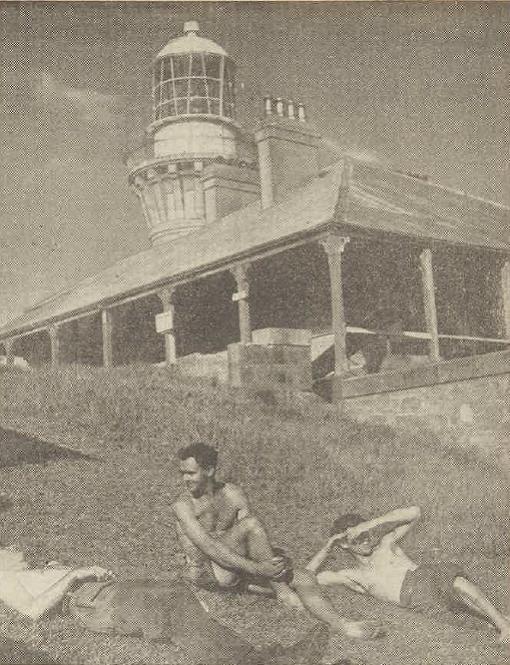 Picture left: WELL-EARNED REST for David Hain, Bruen Finey, and John Giles after carrying materials from the beach to the house they are making livable. It had been stripped by vandals.
Picture left: WELL-EARNED REST for David Hain, Bruen Finey, and John Giles after carrying materials from the beach to the house they are making livable. It had been stripped by vandals.
Old lighthouse cottage now sculptor's studio. (1950, May 20).The Australian Women's Weekly (1933 - 1982), p. 32. Retrieved from http://nla.gov.au/nla.news-article46455535
Bruen Finey seems to have given away sculpture and is well known for making surfboards for Dunlop as well as more boards through is own business ‘Crest Surfboards':
Bruen left the army after 1945 and studied sculpture, funded by an ex-war service grant, and took up working with fibreglass and foam in the 1950s, building chemical vats and shop displays, based in Brookvale where land was cheap and other fibreglass companies were located. He recalled sourcing polyurethane chemicals from a sugar refining company in Waterloo, but couldn’t remember the name. His contract with Dunlop to supply large numbers of boards every week meant hiring itinerant shapers, finishers and polishers. Bruen did all the glassing himself. ‘When the surf was up, no one wanted to work’. Profit was small and output of boards was slow so he decided to develop standard molds and ‘pop-out’ a generic shape. Not surprisingly, this proved a flop as surfers were a ‘fussy breed’ and wanted unique features and characteristics – so decided to sell business to Dunlop, who moved the board making operation to St Mary’s, far from the surf.
Working in Brookvale, on the northern beaches, Bruen remembers Scott Dillon, who sometimes sold him resin, Gordon Woods, a hard working scruffy bloke, Greg McDonagh, who built beautiful boards with clear resin over faultless foam and, or course, Barry Bennett. Bruen rode a large board he made himself although didn’t hang around with surfers who were a ‘close clique’ and didn’t take kindly to outsiders. He mostly surfed around Manly and could take off 40-50 feet outside everyone else and run through the crowd like a tanker. No wonder they cursed him. Big thanks to Bruen for the info and support. Written by Gary Crockett, June 20th, 2011 and retrieved from: http://blogs.hht.net.au/surfcity/?p=2044
DEPARTMENT OF THE INTERIOR LEASE OF COTTAGES NOS 2 and 3 AT BARRENJOEY. Offers closing with the Chief Property Officer Department of the Interior 5 Hickson Road Millers Point at noon on the 1st September 1952 are invited for the lease of the old Lighthouse Cottages Nos 2 and 3 at Barrenjoey for a period of 5 years with an option of renewal. The lease Is terminable at one month s notice without compensation should the premises be required for Commonwealth purposes and subject to the usual conditions Including Insurance of premises and past rent of oil rates and taxes etc by the lessee. The premises ore to be let as they stand and no expense In connection with renovation or repair will be borne by the commonwealth. No offer necessarily accepted WS KENT HUGHES Minister for the Interior . Advertising. (1952, August 23). The Sydney Morning Herald(NSW : 1842 - 1954), p. 17. Retrieved from http://nla.gov.au/nla.news-article18278568
Paintings Of Wesley Penberthy
BY OUR ART CRITIC,
The artist's dream, the poetic idea wafted on to canvas to tell of sweetness and of hope through the moist eyes of nostalgia, is not the ephemeral thing some painters believe it to be. The Venetian school, or the best of the Rococo, though dewy on occasion, is not of such stuff a dreams are made of. They only achieve that effect through the hardcore of reality, of formal strength, and cold deliberation.
These clement are lacking in the work of Wesley Penberthy, at David Jones' Art Gallery. Yet one is only too pleased to see paintings by an artist who is conscious of the fact that poetry exists.
Penberthy is obviously a young painter-young in this trade, any-way. He is also, thank heaven, an enthusiast, feverishly searching for his idiom. This is, perhaps, not the time to tell him that there is no hurry, that he has a lifetime of search in front of him; the enthusiast is rarely a man of patience. Still, his work at present is in rather a dangerous position, for in the matter of taste he is as yet unstable.
When one sees an interest in ElGreco fighting with a desire to be-come the latest member of the pre-Raphaelite brotherhood, something must give-and evil is so often the victor.
Meanwhile, those other loves, Royal Academy portraiture and Norman Lindsay, sit on the fence and watch proceedings.
As a busybody bystander one can only suggest to Penberthy that if he wants to be taken seriously in time to come, he should develop the strain found in such landscapes as "The White Horse," "The Yarra at Hawthorn," "Trees in Pacific Road," "Pittwater," or "Palm Beach From Barrenjoey," and learn to add some substance to it. In his next show, also, one trusts that he will not hang everything that he has ever done.
The exhibition will be opened by Mr. Lindley Evans at 2.30 p.m., to-day.
Paintings Of Wesley Venberthy. (1950, November 2). The Sydney Morning Herald (NSW : 1842 - 1954), p. 5. Retrieved fromhttp://nla.gov.au/nla.news-article18184436
Born in Broken Hill in 1920, Mr. Penberthy studied at Perth Technical College and under the tutorship of Norman Lindsay. He was the first post-war rehabilitation student at the Melbourne National Gallery School. He has exhibited widely since 1940 and has executed several industrial murals. He was awarded the Sulman Prize in 1955.
The Sir John Sulman Prize is one of Australia's longest-running art prizes, having been established in 1936. It is now held concurrently with the Archibald Prize, Australia's best-known art prize, and also with the Wynne Prize, at the Art Gallery of New South Wales (AGNSW),Sydney.
awarded each year for "the best subject/genre painting and/or murals/mural project executed during the two years preceding the [closing] date", and as of 2008 is valued at $20,000. Media may be acrylic, oil, watercolour or mixed media, and applicants must have been resident in Australia for five years.
The definition of the terms as given by the AGNSW is:
A genre painting is normally a composition representing some aspect or aspects of everyday life, and may feature figurative, still-life, interior or figure-in-landscape themes. A subject painting, in contrast to a genre painting, is idealised or dramatised. Typically, a subject painting takes its theme from history, poetry, mythology or religion. In both cases, however, the style may be figurative, representative, abstract or semi-abstract. A mural is a picture that is affixed directly to a wall or ceiling, as part of an architectural and/or decorative scheme
1955 – Wesley Penberthy – Oriental Mural (mural design);
(The Examiner) August 9 2013: HE may be 92 years-old but Yamba artist Wes Penberthy believes he still has many wonderful pieces to create before he hangs up his brushes. Mr Penberthy is without a doubt one of the country's greatest artists, and despite his age still paints every day - sometimes up to 15 hours in a sitting. He has sold paintings for up to $100,000 each. Mr Penberthy was first inspired by art at age five when he saw a portrait of Rembrandt's mother, but it wasn't until he was 15 he began getting serious about his art. …
Jean de Courtenay Isherwood OAM, FRAS, AWI, (1911–2006), was an Australian watercolour and oil painter, and teacher, renowned for her colourful depictions of the Australian countryside. Bborn in Marrickville, Sydney in 1911. At the age of fourteen she won a scholarship to the National Art School at East Sydney Technical College. In the dramatic architectural surroundings which had previously comprised Darlinghurst Gaol, Isherwood learned an appreciation of linear perspective and accurate draughtsmanship which she later applied with great skill to her rural landscapes.
In 1929 she commenced work as a fashion artist with an advertising agency, continuing her studies for a further five years at the National Art School and Royal Art Society as an evening student. She later worked as a freelance artist and illustrator. Isherwood's first exhibited work with the Australian Watercolour Institute in 1934 was a small painting of a building site. From that time she became a frequent exhibitor in major art exhibitions. She was a student of Antonio Dattilo Rubbo.
She became part of Sydney bohemian art scene, and met John Dabron whom she married in 1940. They moved to Springwood in the Blue Mountains and had two children, Josephine and Jacqueline. They divorced in 1948[1] After the divorce, she returned to fashion drawing and illustration to support herself, pursuing her art interests, as she had before, on the weekend. She took up full-time painting in 1952.
From 1961 to 1974, Isherwood taught at the National Art School. This was a period of conflicting views in the teaching of art in Sydney, a time when a disciplinary approach to the skills of perspective, anatomy and design was considered by many of both the teachers and students alike as passé and unnecessary to the creation of works of art, the stylistic vogue in teaching being Abstract Expressionism. Jean Isherwood was one of the several teachers who determinedly maintained the opposite position. An exacting teacher, she stalked her perspective drawing students with a kneadable putty eraser in hand, challenging their skills with arrangements of battered metal rubbish bins, piles of broken chairs and, on rainy days, a dripping sixteen-rib umbrella. It was said of Miss Isherwood that no student escaped her class without being able to draw parallel lines and precise ellipses, freehand.
In 1959 Isherwood travelled around New South Wales by car. From that time onwards, she became primarily a landscape painter, and, through her attachment to the countryside, a major exhibitor in the art competitions held in conjunction with the shows run by the local Agricultural Societies and culminating each year in the Sydney Royal Easter Show with its exhibition attracting hundreds of entrants. From 1950 until her death Isherwood won more than 100 first prizes in various art competitions.
In 1974 Isherwood made a trip to Central Australia. On her return journey, passing through Tamworth, New South Wales, she was struck by the beauty of the countryside of that region and in 1976 purchased a property at Moonbi, where she was to live until 1987 when she moved to Tamworth.
Isherwood, as a child, and like most other Australian children for many years, learnt by heart Dorothea Mackellar's iconic poem, "My Country", in which an Australian explains to an English listener how she is not moved by the gentle landscape of England with soft, dim skies and green lanes, but by the harsh beauty of Australia.
In 1982 Isherwood heard on the radio that a statue was to be erected as a memorial to Dorothea Mackellar at Gunnedah, on Australia Day, 26 January 1983. Isherwood had long had it in mind to create a series of works illustrating the writer's most famous poem. Prompted by the imminent celebration, Isherwood created a series of thirty four watercolour paintings for exhibition in Gunnedah in conjunction with the unveiling of the statue.
From 1946, Isherwood had nineteen exhibitions, of which three were with her daughter, Jaqueline Dabron, in the state capitals of Sydney, Brisbane and Melbourne. A retrospective exhibition was held in the New South Wales regional galleries of Tamworth and Muswellbrook. In 2012, thirty-two of Isherwood's watercolors were featured in Sister Cities, the inaugural exhibition of Gallery Lane Cove on Sydney's north shore. Her portrait of Marjorie Cotton was exhibited in First Ladies: Significant Australian Women 1913-2013 at the National Portrait Gallery in Canberra.
Jean Isherwood died at home, Tamworth, on 6 January 2006, aged 94 years. Her funeral notice requested that those attending should wear bright colours. [4.]
1950 Wynne Finalist Jean Isherwood - Pittwater from Palm Beach
1950 Mosman Art Prize Jean Isherwood Trees, Palm Beach, 1950
Jean De Courtenay Isherwood, Untangling the Nets. Courtesy of David Barsby Auctions © Jean De Courtenay Isherwood or assignee
Marjorie Cotton Isherwood, best known by the name Marjorie Cotton (1913–2003), was the first professionally qualified children's librarian in New South Wales, Australia. She initiated programs that are the basis of services to children in Australian public libraries today. Marjorie pioneered many of the services now associated with children's librarianship in Australia, including weekly story sessions, contact and collaboration with schools, providing material for children in languages other than English and appointing qualified children's librarians.
Her influence reached far beyond the Ku-ring-gai, Newcastle, Randwick and Woollahra libraries in which she worked. She was the first president of the Library Association of Australia Children's Libraries Section in 1953. Marjorie worked with Bess Thomas conducting the first Australian course in Children’s Librarianship at Mosman Municipal Library, which was attended by librarians from four states in 1954.
Jean Isherwood, Portrait of Marjorie Cotton, 1969
oil on canvas (frame: 118.0 x 93.5 cm, support: 102.0 x 75.5 cm) Courtesy National Portrait Gallery
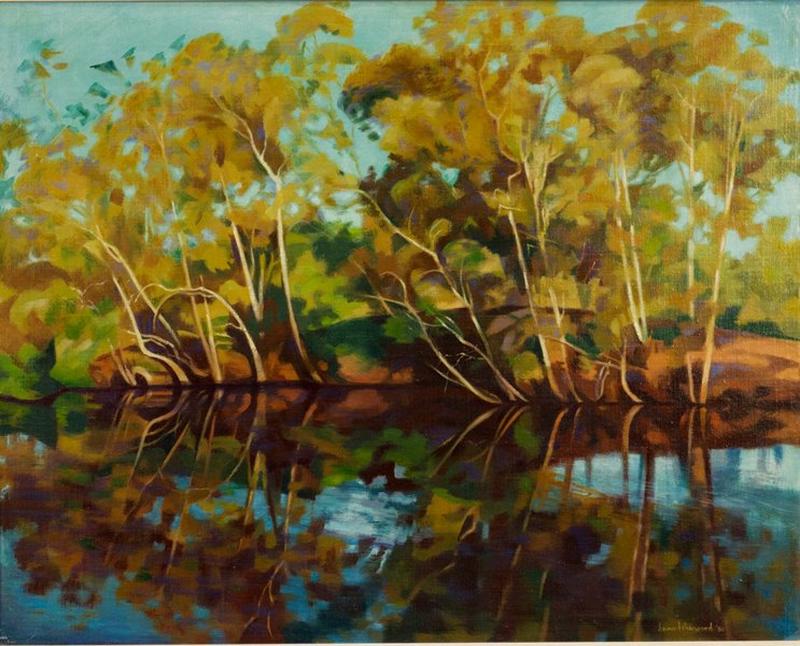
Jean De Courtenay Isherwood, 'Reflections, Wyong Creek,' 1980. Courtesy of David Barsby Auctions © Jean De Courtenay Isherwood or assignee
Katharine Hepburn - VIEW OF THE BARRENJOEY LIGHTHOUSE AND BROKEN BAY, SYDNEY, AUSTRALIA - 1955
The late, great actress Katharine Hepburn liked to paint and when she visited Australia in 1955, apparently liked what she saw. Hepburn, who died in 2003, painted several Australian landscapes, including views of Barrenjoey Lighthouse in Sydney, and a portrait of herself having breakfast in bed in Brisbane.
The art works - mostly watercolours on paper were auctioned by Sotheby's in New York in 2004, with many a lighthouse among
her created works.
Hepburn painted Australia during a 1955 tour with the Old Vic Shakespearean, which took her to Sydney, Melbourne, Brisbane, Adelaide and Perth. One beach scene shows her with the actor Robert Helpmann.
OLD VIC'S SHREW
THE Old Vic Coy. presents The Taming of the Shrew without any psychological subtleties.
They drop, the Induction.
This is often done in the Soviet Union, where this play is very popular, to point an ironical interpretation of the play. According to this interpretation, Katharine does , not become a slave of Petruchib, but, achieving full understanding with him, enters a subtly ironical relationship.The Old Vic would have none of such subtleties, but play the show as a knock down, drag out farce, Katherine Hepburn seems far more comfortable . in this than as Portia, -and Helpmann and the others in the cast give very polished performances. Michael Benthail has used a deal of imagination in the-business introduced and what laughs the play rouses are won by this. This is one of Shakespeare's earliest plays, Written at a stage when he was still infatuated with his gift for words. It is full of tedious witticisms and plays on words. The theme and characterisation, at least as interpreted by' the Old Vic, are so slight as, to fail to compensate for this.
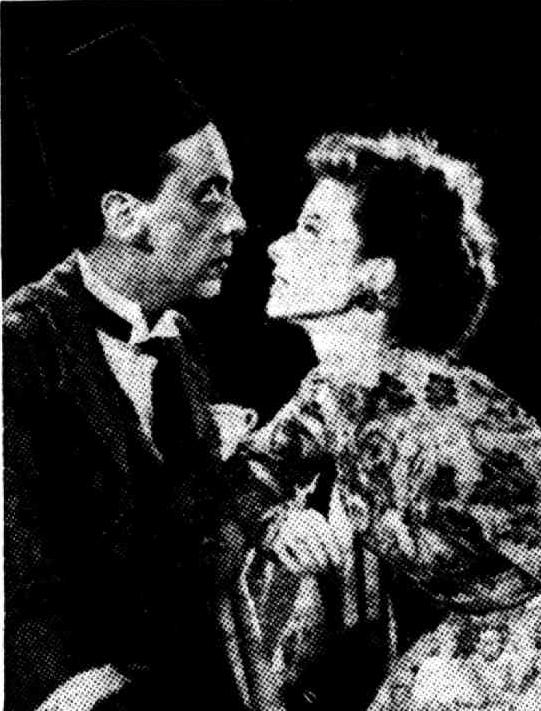
Katharine Hepburn and Robert Helpman in The Millionairess
The post war 1950's Boom of Pittwater Artists: Avalon and the Rise of the Avalon-Mona Vale Artists Community
Alexander Stewart Jolly, Sali Herman, Arthur Murch –this could be a very very long list. Clearly Mr.Lister Lister and then the land sales of Mr. Small opened the valley of Avalon to the eyes of those who may build their homes themselves rather than have them built - just to pursue being able to create new works.
MISS MADGE AUBREY, the English actress, who is appearing in the play, By Candlelight, at the Minerva theatre, paid an unofficial visit to Mr. W. LISTER LISTERS exhibition this morning, and the artist is showing her one of the pictures. entitled "Overlooking Avalon, N.S.W." Miss Aubrey will open (he exhibition to-morrow afternoon at Anthony Hordcrns art gallery, at 3 p.m.
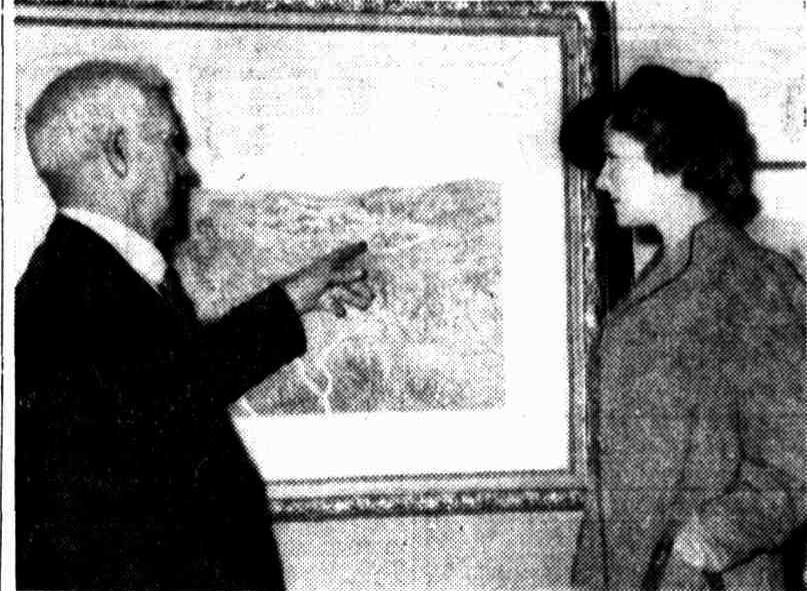
Messrs. H. W. Horning and Co. will have a decidedly good thing to offer, buyers of week-end and holiday sites on Boxing Day, when the Avalon .Beach Estate, north of Newport, will be opened up. The land is right at the beach, providing all the attractions of the surf, and there is a regular motor service to the estate. HAPPENINGS OF IMPORTANCE IN REAL ESTATE WORLD. H (
1921, November 27).
Sunday Times (Sydney, NSW : 1895 - 1930), p. 10. Retrieved from
http://nla.gov.au/nla.news-article123244094
Artists of anther ilk - more thespians:
A PICNIC.
To-day that exquisite spot known as Avalon Beach will be inhabited by actors and actresses from Sybil, all determined to have the picnic of a lifetime. Each armed with their own mug, knife, spoon and fork, they will sit on the grass and eat as only hungry picnickers can eat. Then they will have sports, swim, fish, or play tennis as they feel inclined, and not dream of coming home until the moon rides high in the heavens. You shall hear all about it next week.
ART
Sali Herman
Of that large number of artists who in recent years have exhibited work of a modern, primitive flavor, few seem more sincere than Sali Herman. With many, one feels that, however much they may strive for truth, this for them is not the natural approach. There is in their work a laboring for effects and a self-conscious attack that robs it of spontaneity. If there is a prevailing tendency in Sali Herman s work, it is whimsicality, but over all there remains that real abstraction from deliberate preaching that is intrinsic in real art. The show on view at the Macquarie does leave one with a slight regret that there is riot more variety in subject matter, but perhaps Mr. Herman knows best what he can paint. Certainly, his figure work is disturbing when it occupies anything more than a shadowy subordinate role. Most of his pictures have a Sabbath morning solitude, even when a figure or two Is included, which is due, no doubt, to the overwhelming personality of the buildings themselves, which are obviously, his main concern. These buildings are very nearly modelled in pigment to allow scope for play in texture, to a point that approaches Degas's feeling for flesh. That, and an atmospheric handling of edges, which almost suggests dream castles, are two obvious things that strike the eye; but it is in color that a truly individual vision is most apparent. To describe a palette as innocent is not very informative; but that is the word that best applies. Whether or not it is a good thing, it is certainly startling to think of our choice slums in terms of innocence. Not all of these pictures are successful, but it is a show worth inspection. ART (
1947, July 31). Catholic Weekly (Sydney, NSW : 1942 - 1954), p. 8. Retrieved from
http://nla.gov.au/nla.news-article146603904
One of the first Avalon Beach Art Shows at an Avalon Market Day?:
A site has been purchased by the Avalon Beach sub-branch of the R.S.S. & A.I.L.A. on which a clubhouse will be erected. Opportunities for Business (
1948, June 23).
Construction (Sydney, NSW : 1938 - 1954), , p. 5. Retrieved from
http://nla.gov.au/nla.news-article222879862
Plans for the erection of a new clubhouse at Avalon Beach have been prepared and will go to the Warringah Shire Council for approval. Opportunities for Business (
1948, September 29).
Construction (Sydney, NSW : 1938 - 1954), , p. 6. Retrieved from
http://nla.gov.au/nla.news-article222880569
Up in the Warringah Shire, which has a greater concentration of talent than any place outside The Cross, John O'Brien is organising an art show for the Avalon RSL. His preliminary list of exhibitors looks like a chapter from Who's Who in Australian Art and includes Paul Beadle, Frank MacNamara; Weaver Hawkins and a shoal of others. The show will be held in a big marquee at the Avalon Beach Fair on December 16. SYDNEY DIARY (
1949, November 2). The Sun (Sydney, NSW : 1910 - 1954), p. 17 (LATE FINAL EXTRA). Retrieved from
http://nla.gov.au/nla.news-article229233881
Shrewdest provision for residential qualification that we've come upon lately has been evolved by John O'Brien, honorary director of an exhibition of paintings by Warringah Artists, which will be on show at the RSL Fair at Avalon on December 17.
A Warringah artist is an artist who "habitually lives in Warringah during the weekends and holidays." The definition has dragged in a heap of big names, who paddle, fish or just loaf about between Manly and Palm Beach in their spare time. SYDNEY DIARY (
1949, December 3).
The Sun (Sydney, NSW : 1910 - 1954), p. 5 (FINAL SPORT LAST RACE). Retrieved from
http://nla.gov.au/nla.news-article230742731
Clearly this was an Artists community - an Artists colony by now, and despite being legends to the rest of Australia - all these talented individuals could carry their own water, chop their own wood:
Artists Out-Of-Town Homes
Above: AMERICAN artist, MR. RAYMOND GLASS, sketches his wife in the studio home they have built at Mona Vale. They have two children, RAYMOND Jnr. and BLIGH. Next to art, Mrs. Glass's main interest is cooking and cheese-making. She collected many unusual recipes when living in America and Mexico.
MRS. FRANK MCNAMARA and one of her two sons, TIMOTHY, watches her husband start work on a landscape painting outside their Newport home. Mr. McNamara's book called "Landscape in Watercolour" was published recently. He will take his family on a
tour to England in July.
ARTISTS' wives are not deterred from home-making because their husbands choose to live and work in the solitude of places well away from the city limits.
In the many art "communities" which are growing in districts once considered to be well off the beaten track wives of Sydney artists have made charming and comfortable homes-often in houses which they have helped their husbands to build.
Many, of the wives share their husbands' interests in art and "dabble" in paint themselves. Others have cultivated their own hobbies and crafts.
In the Mona Vale-Avalon art "community" the wives have their own group with definite interests. One is writing a^ book, another designs and prints fabrics, another is an authority on cooking and cheese-making.
MRS. ANNE WIENHOLT TAKASHIGE, of New York, with her daughter, JANET, sorts out some of her etchings and engravings at the home of her mother, Mrs. Ivan Lewis, of Whale Beach. Formerly Sydney artist Anne Wienholt, she is spending a painting holiday in Sydney.
IN the studio at his home at Narrabeen, MR. JOHN ELDERSHAW is at work on a collection of paintings from a recent visit to Central Australia. Mrs. Eldershaw is writing a book on the trip.
Above: MR. and MRS. PAUL H BEADLE and their sons TIMOTHY and ANTHONY live at Narrabeen where Mr. Beadle, a sculptor, has built an outdoor workshop. His wife is always on call to provide cups of tea.
Above Right: MR. and MRS. WEAVER H. HAWKINS are among the oldest members of the Mona Vale art "community." While her husband discusses a new painting Mrs. Hawkins paints the door of their studio.
Above: WINNER of the 1950 Archibald Prize, MR. ARTHUR MURCH, interrupts his painting to advise MRS. MURCH on a lino cut for a fabric she has designed. Their son, JOHN, also takes an interest. Mr. Murch is building additions to their home at Avalon in his spare time. Artists' Out-Of-Town Homes (1951, February 4). The Sunday Herald (Sydney, NSW : 1949 - 1953), p. 12. Retrieved from http://nla.gov.au/nla.news-article18498795
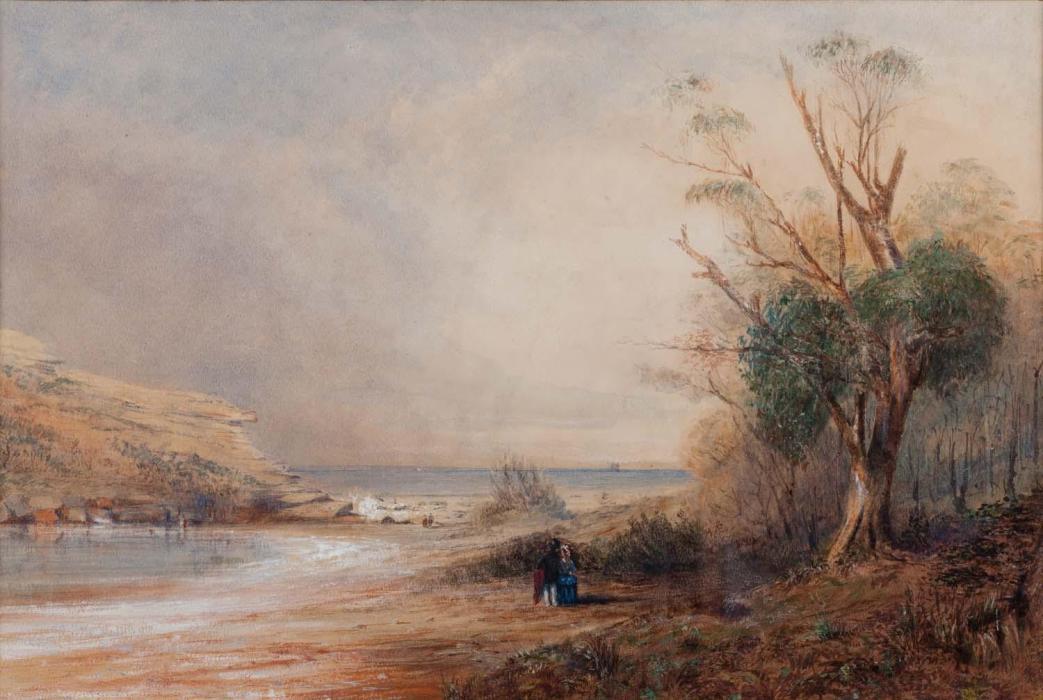
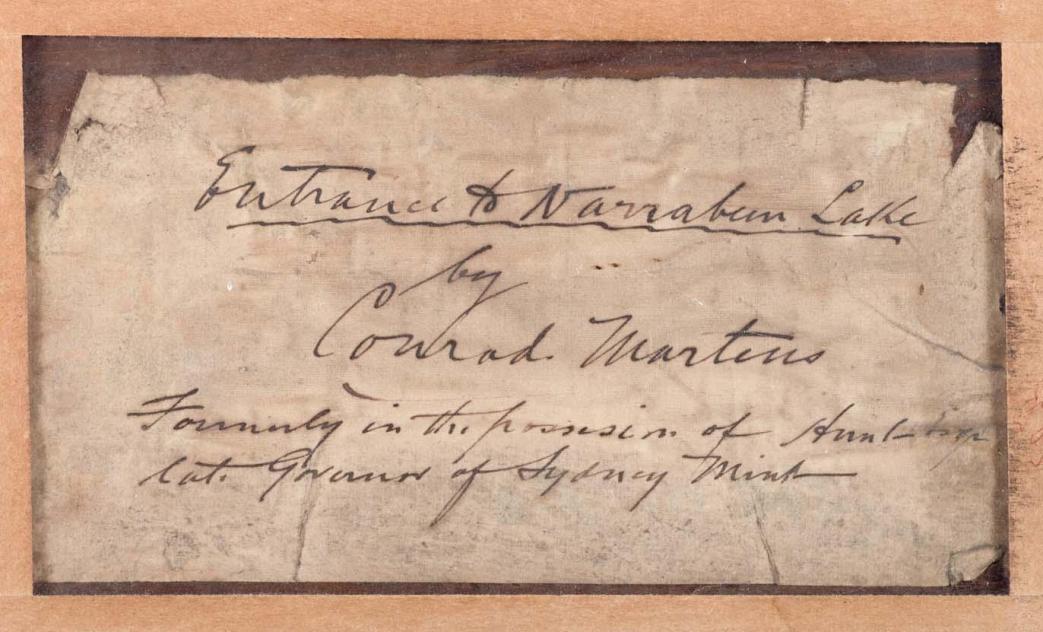
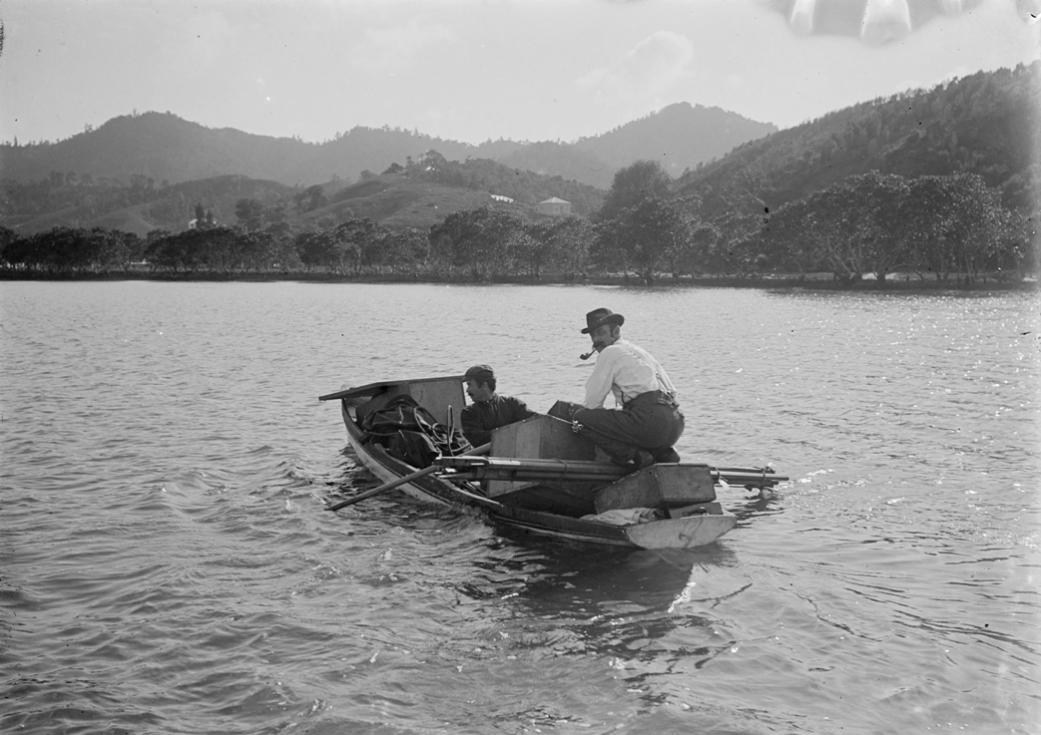
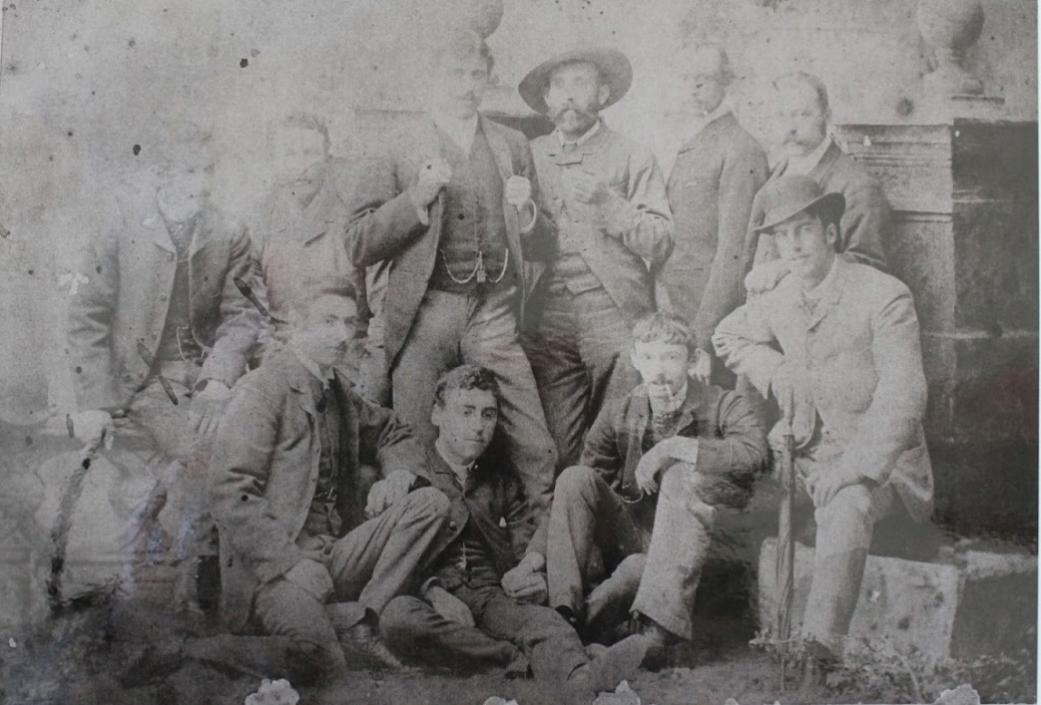
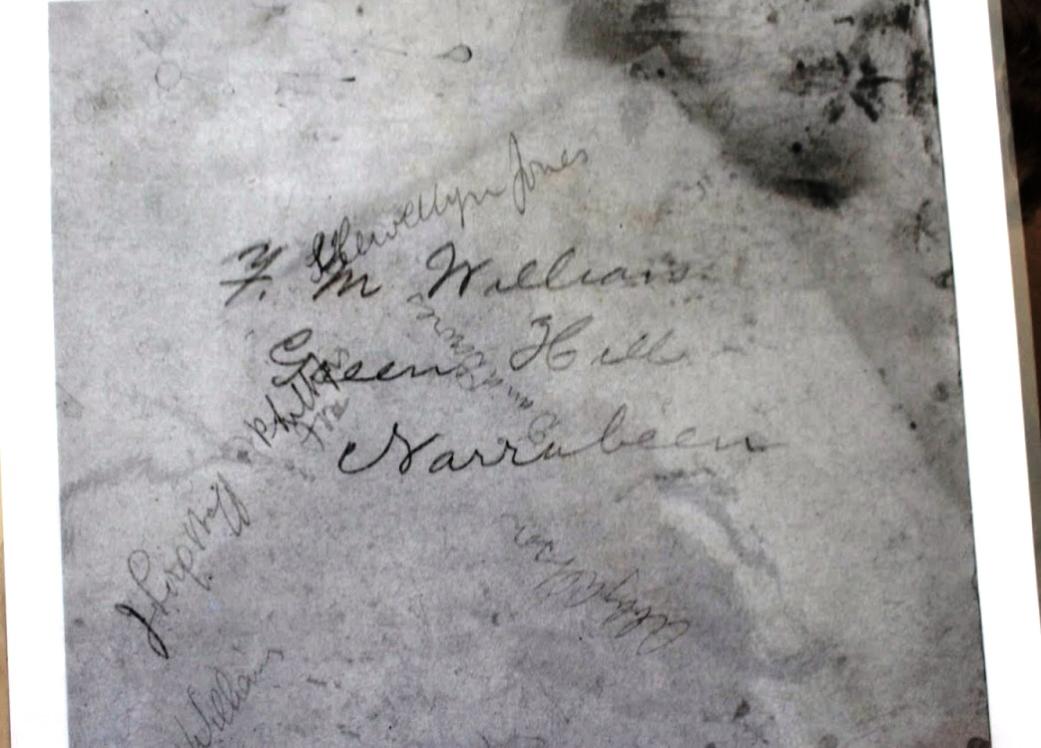
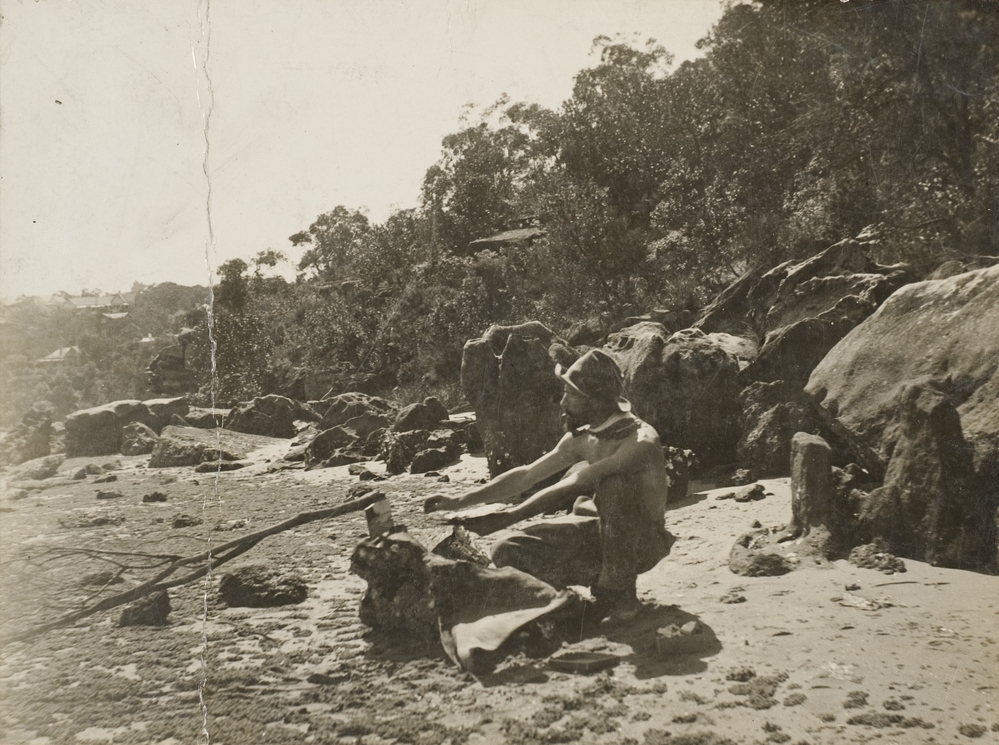
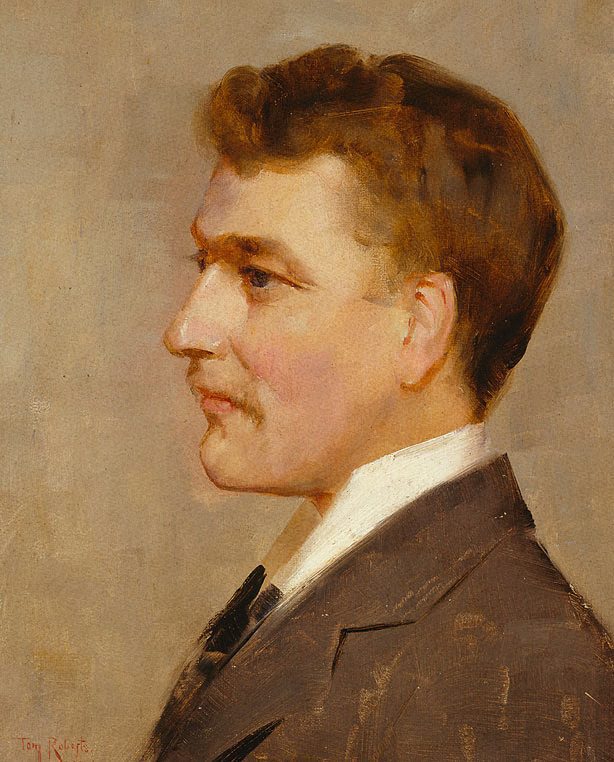
.jpg?timestamp=1499652045559)
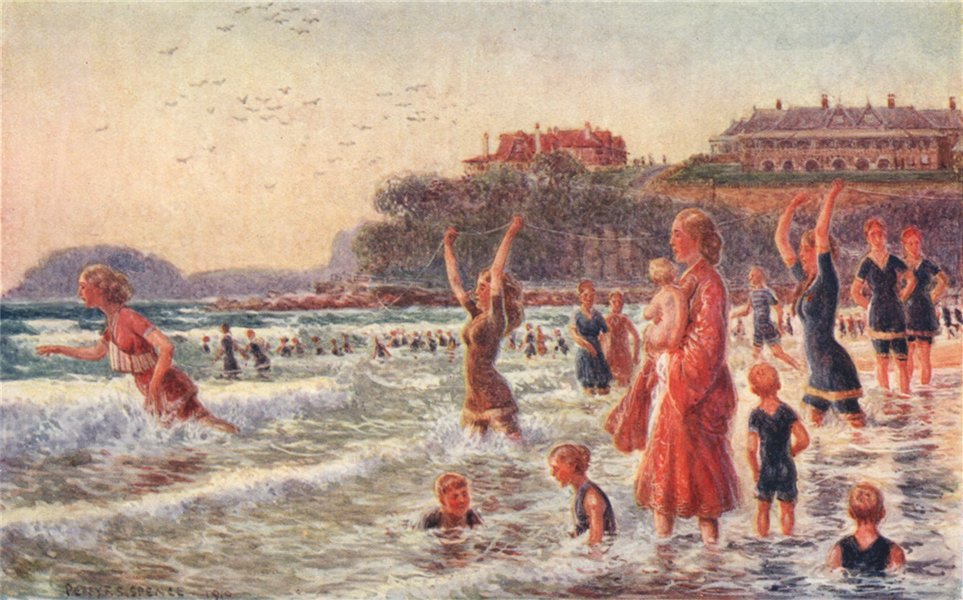
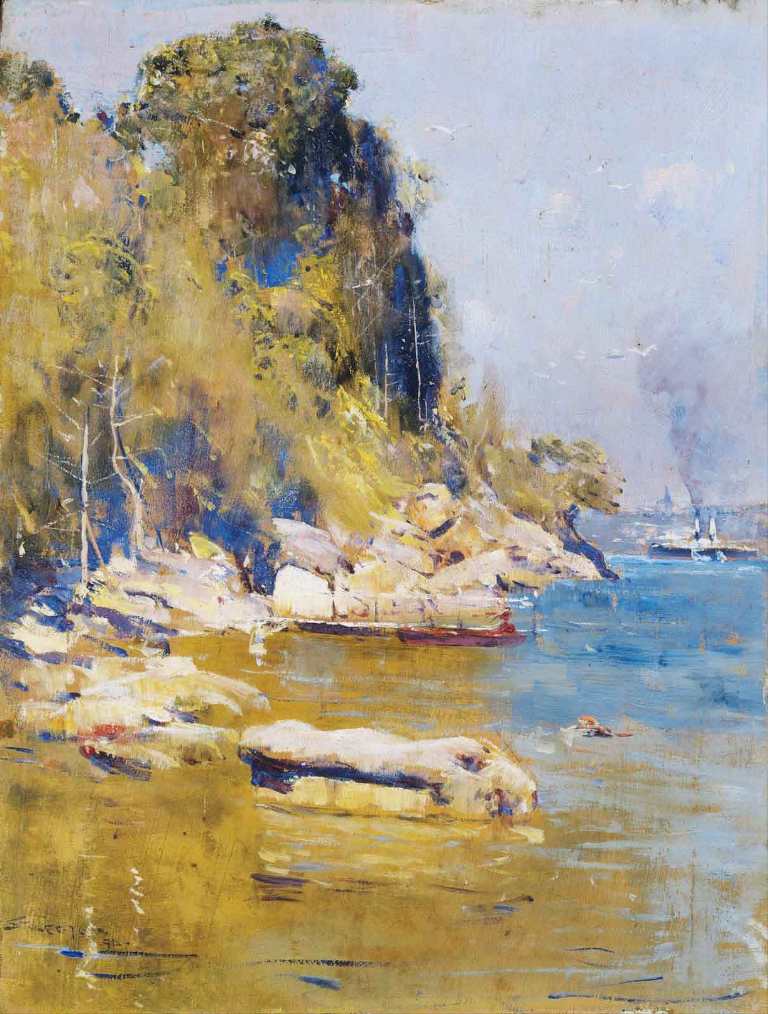
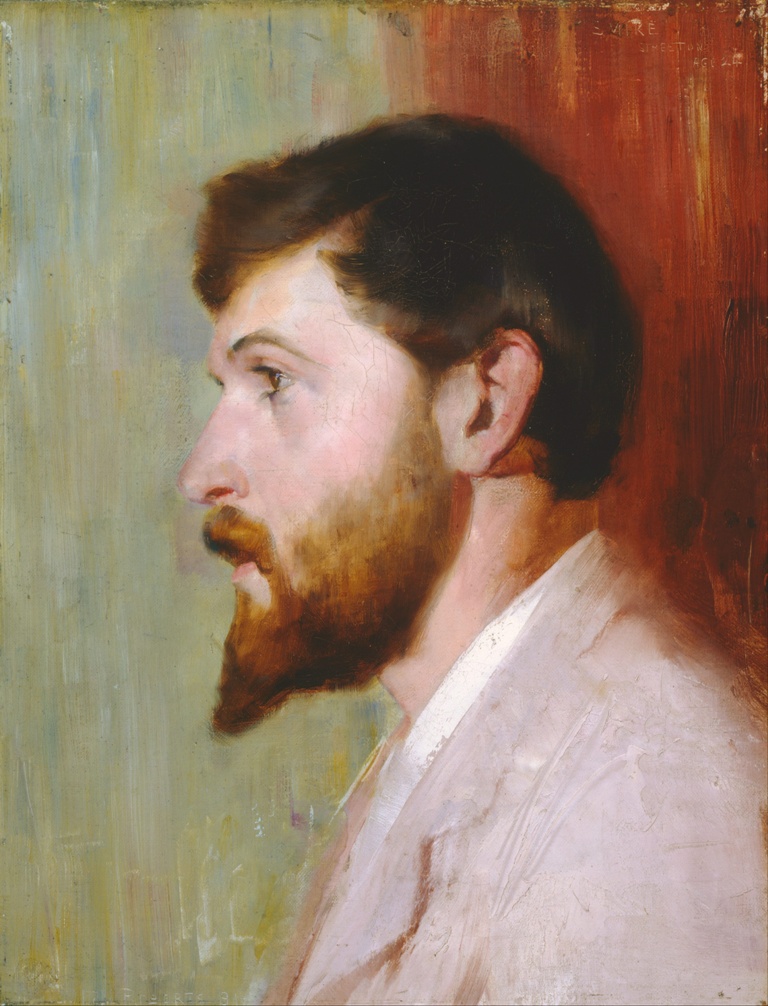




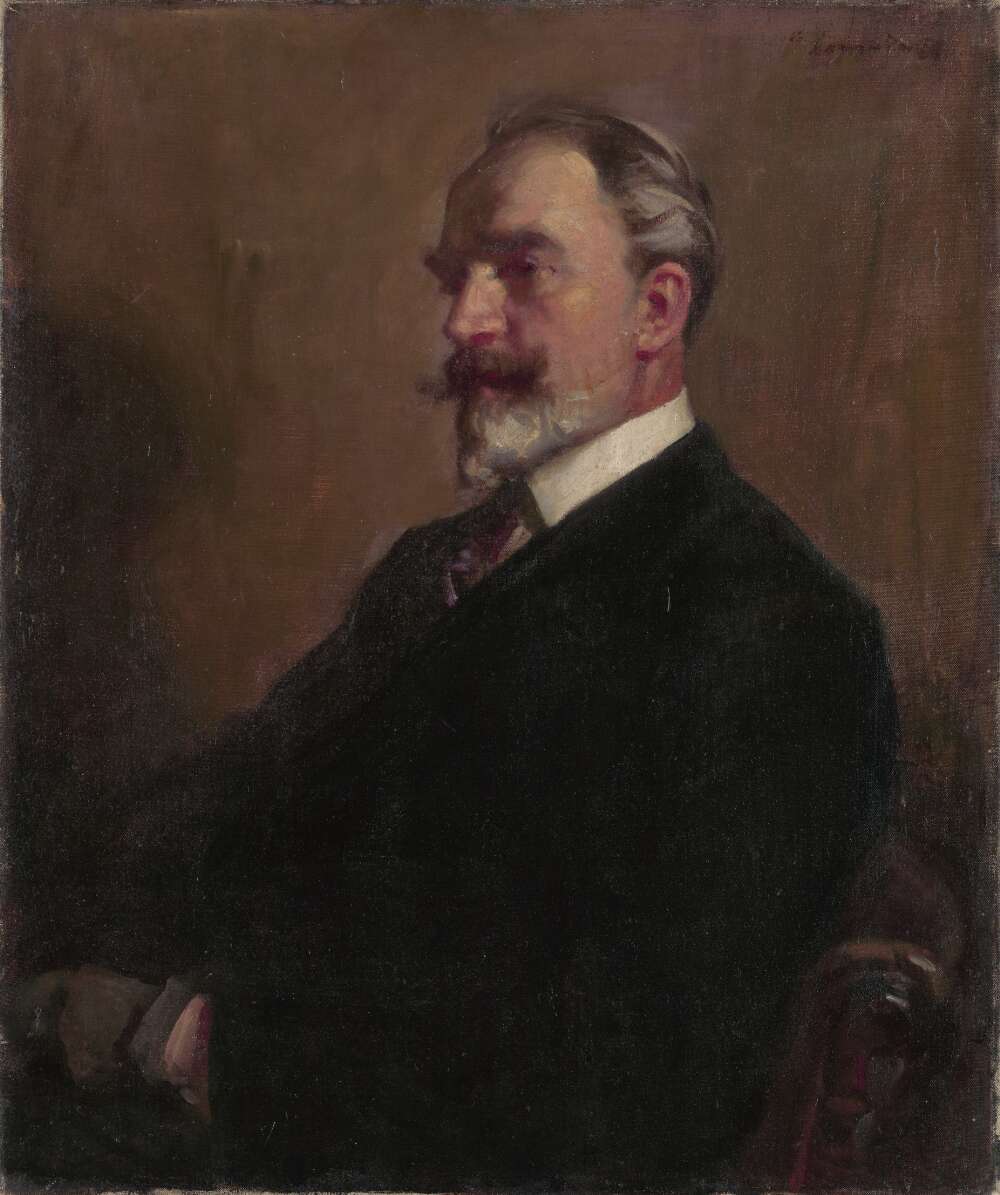
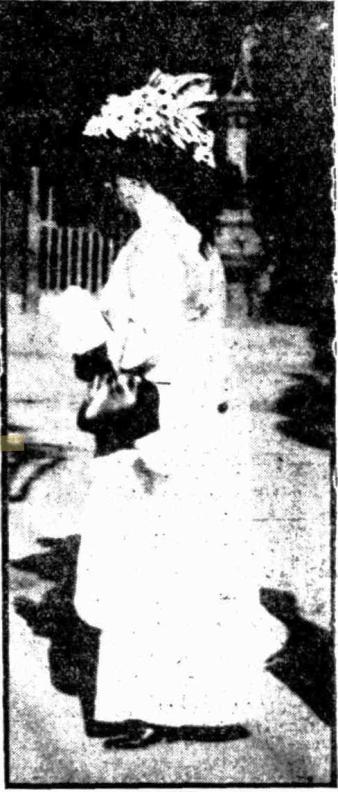
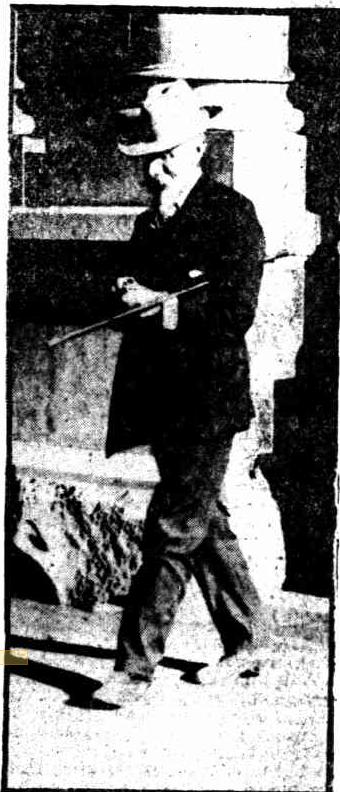
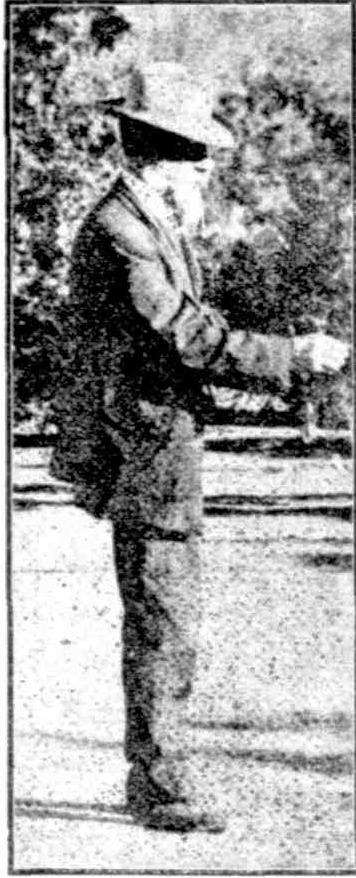
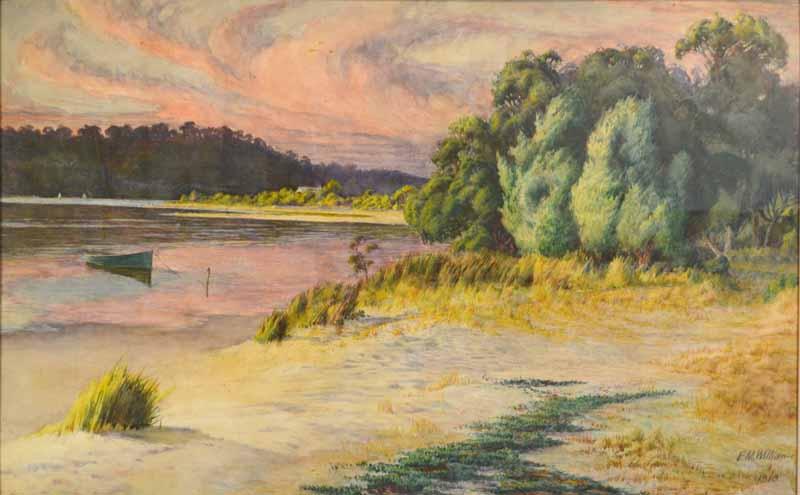
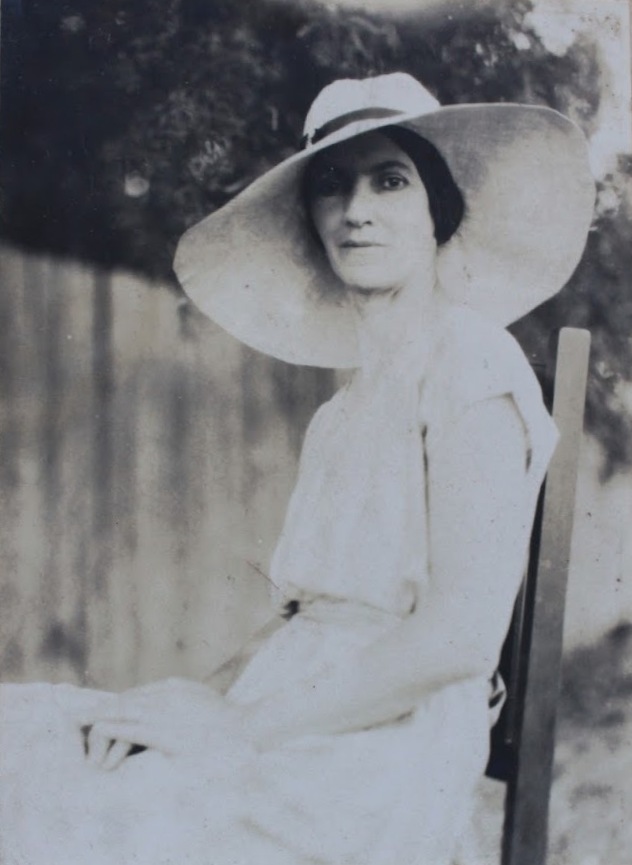
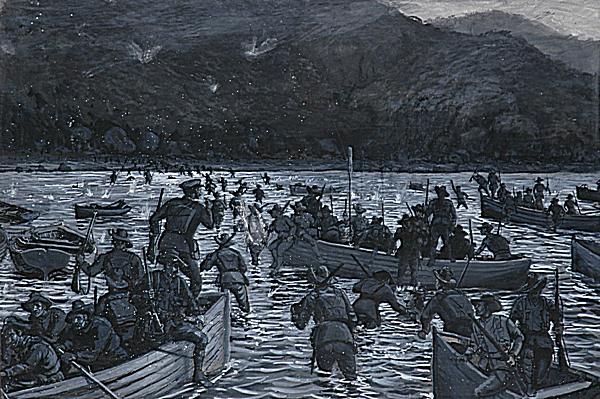
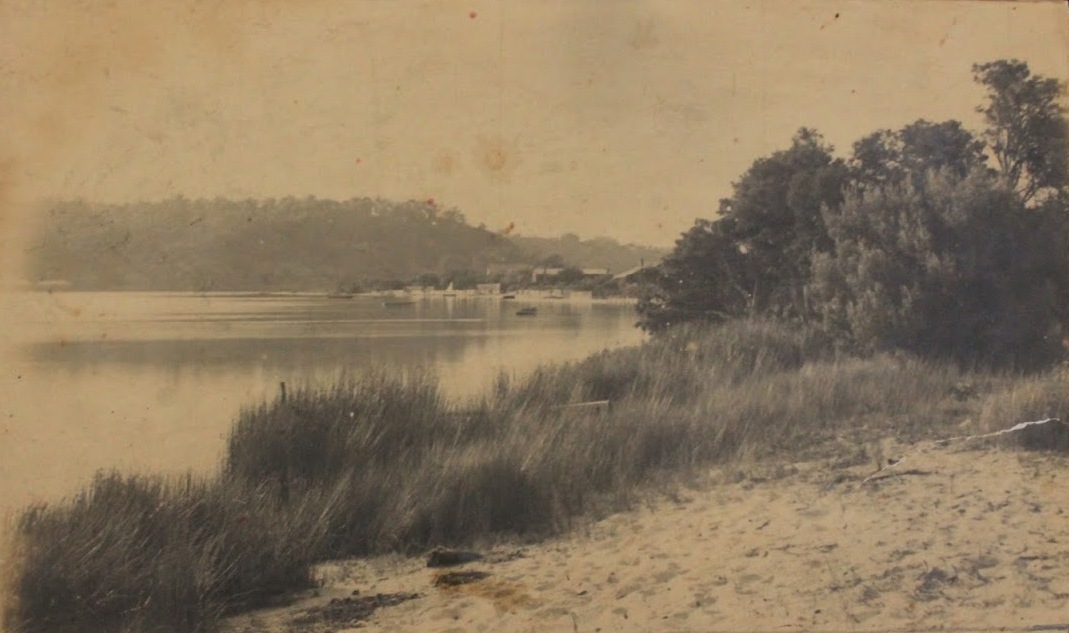

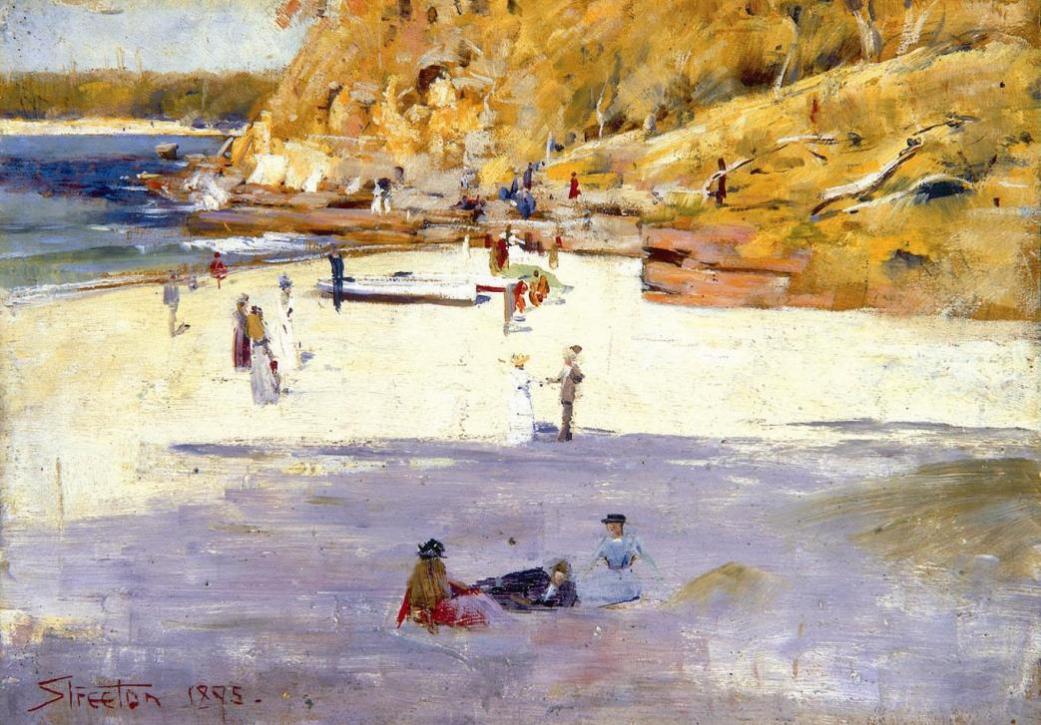

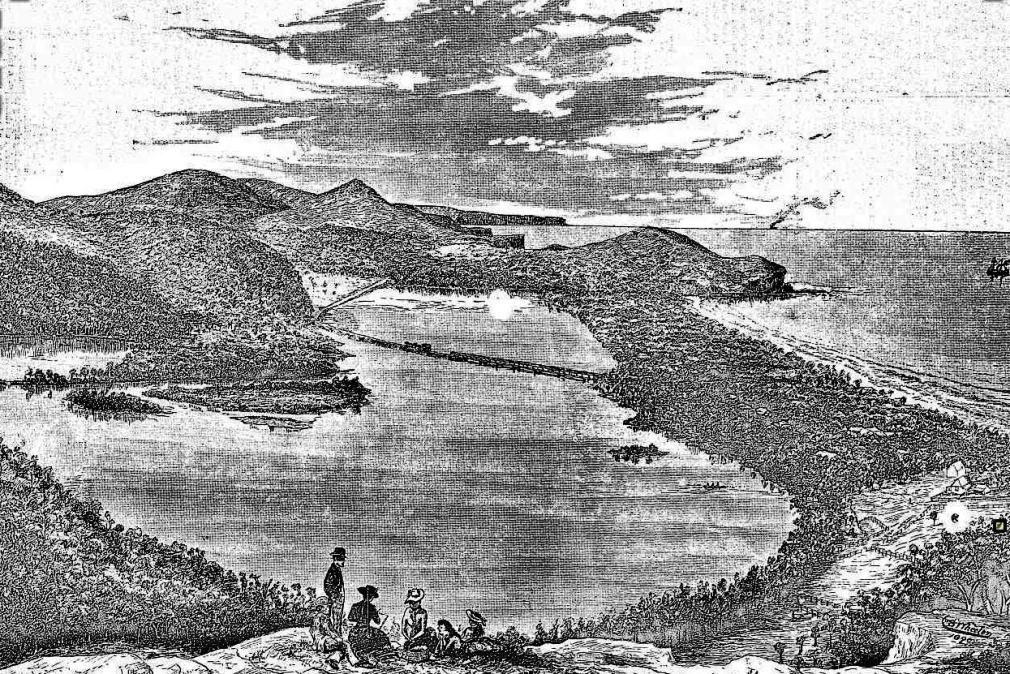
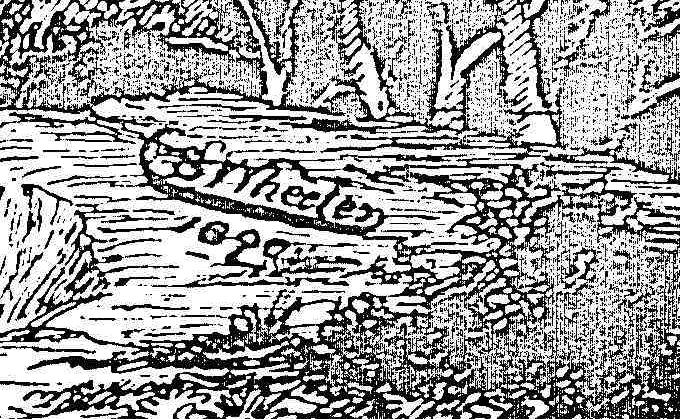
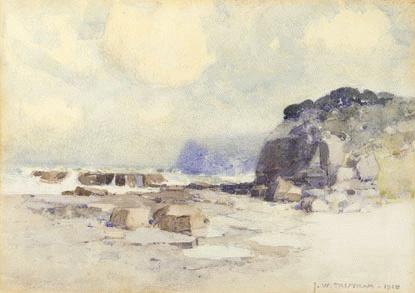
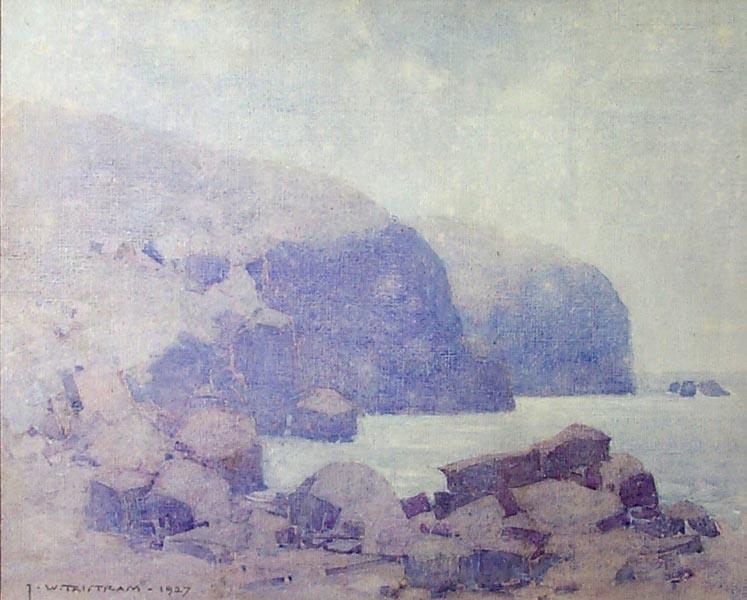
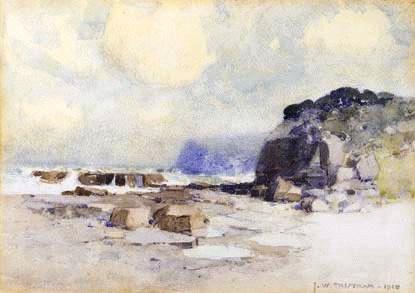
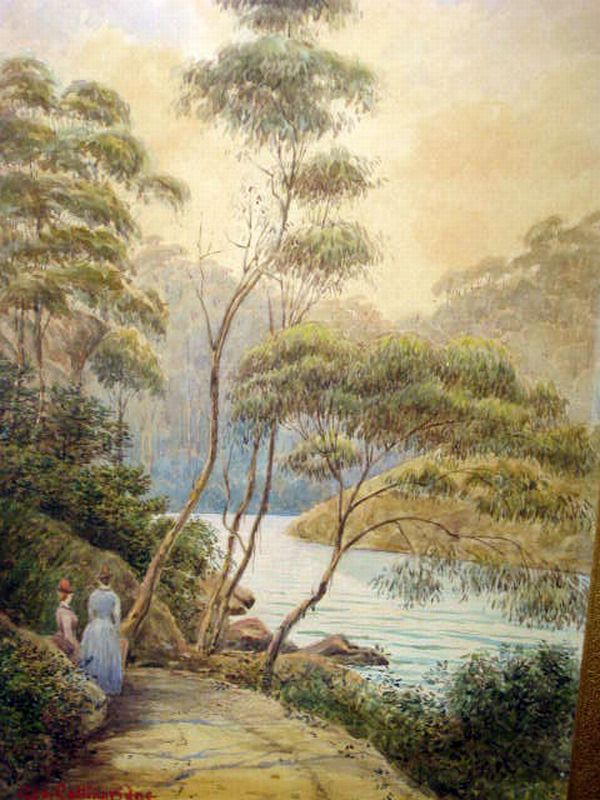
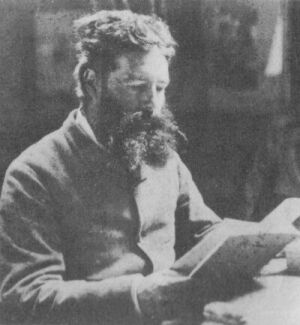 George Collingridge, of the Art Society, N. S. W.
George Collingridge, of the Art Society, N. S. W.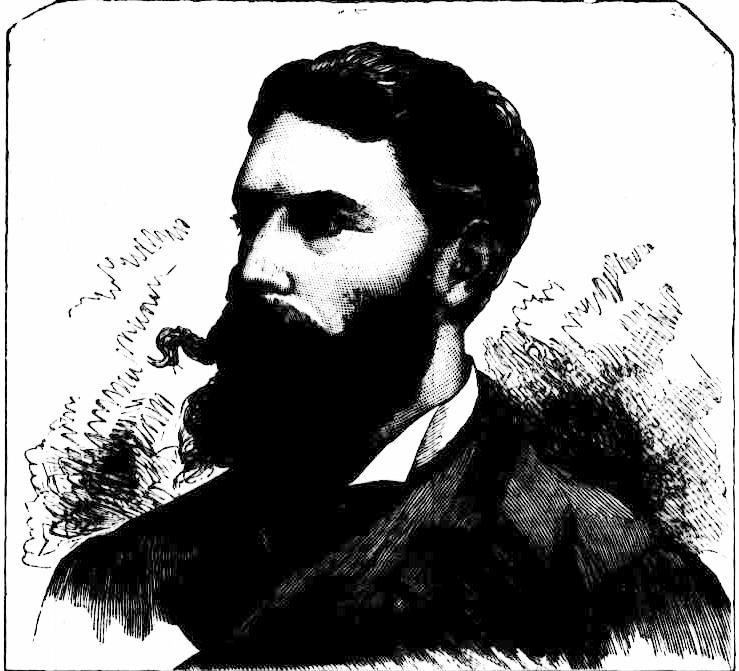
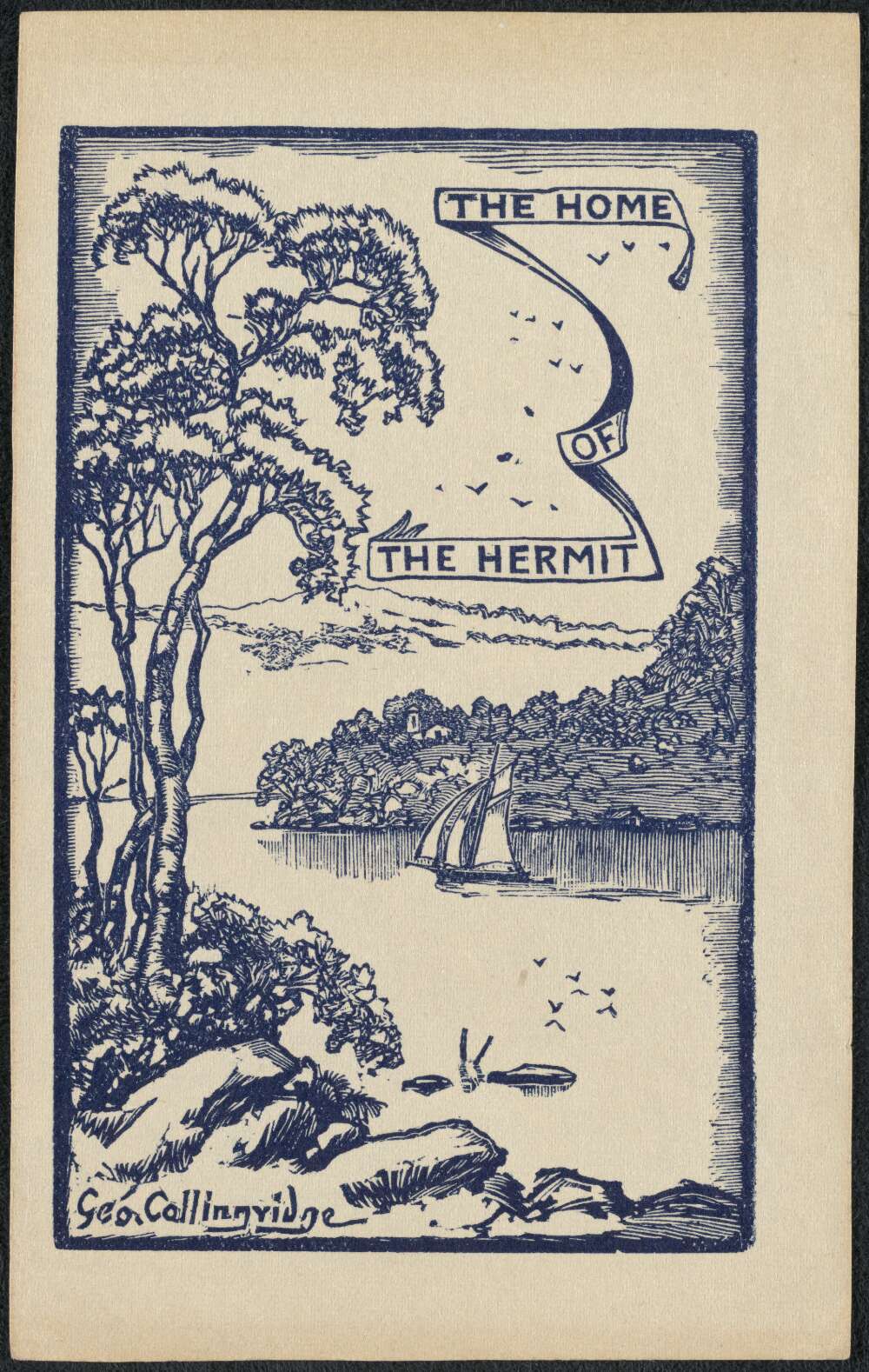
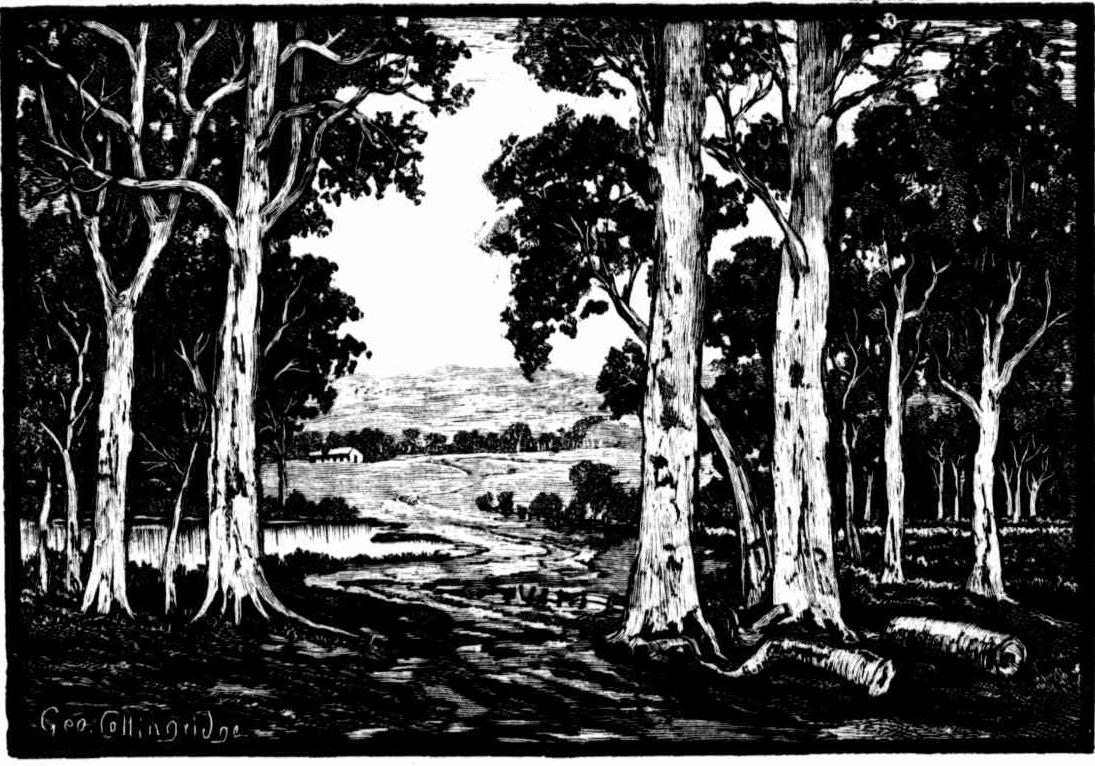
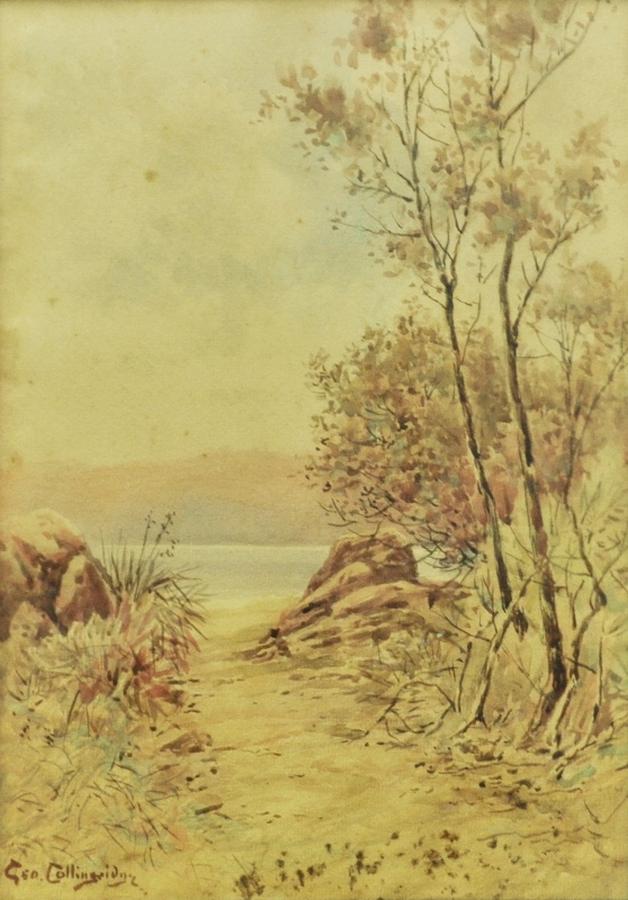
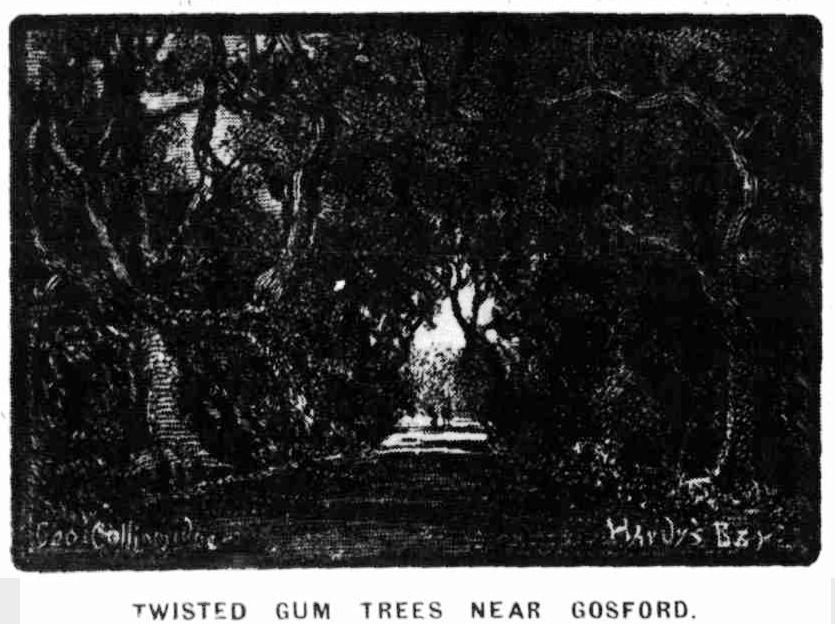

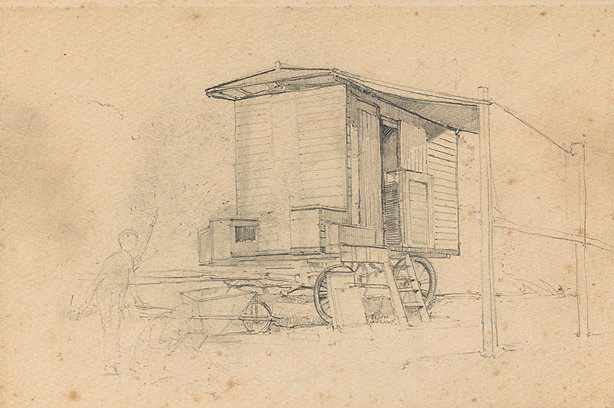
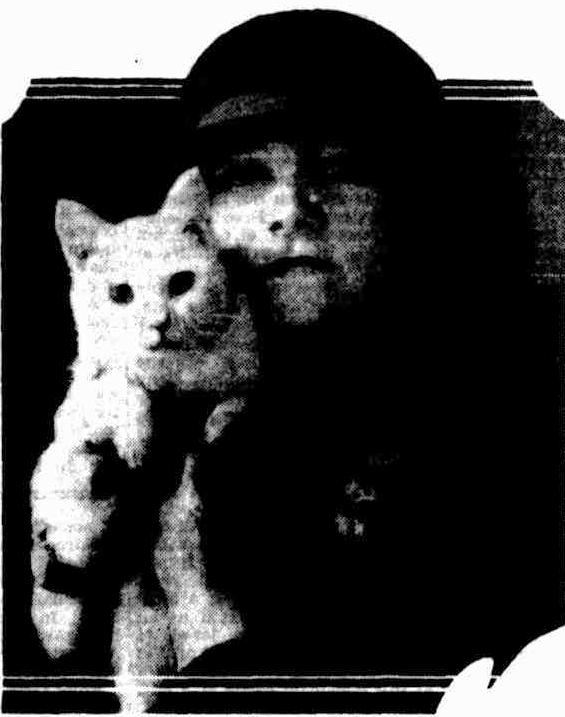
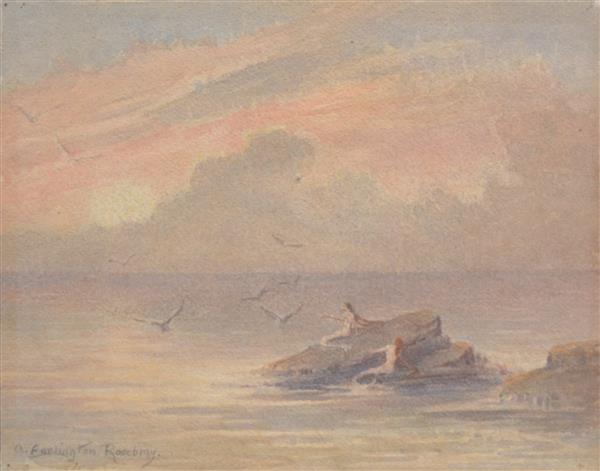
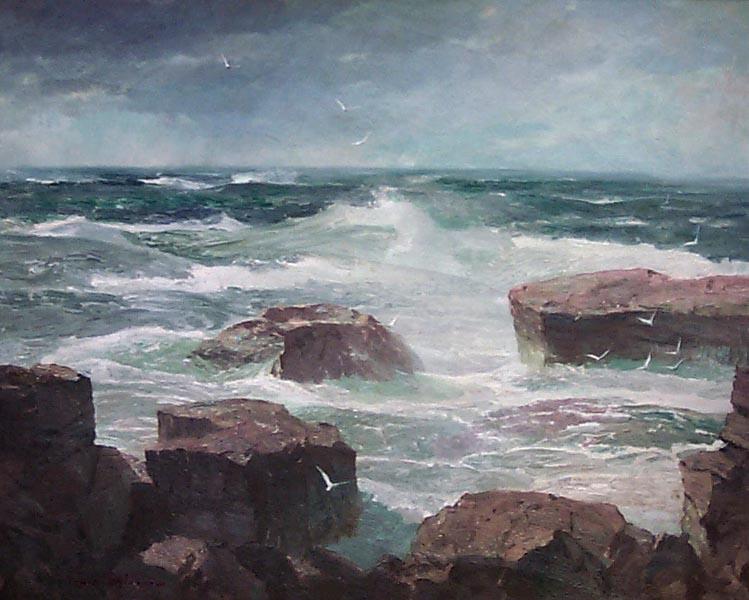
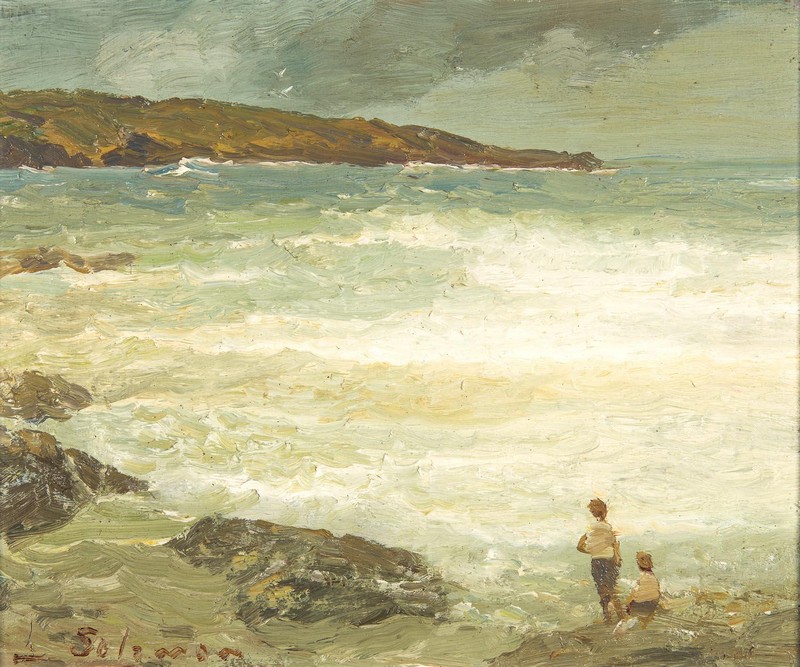
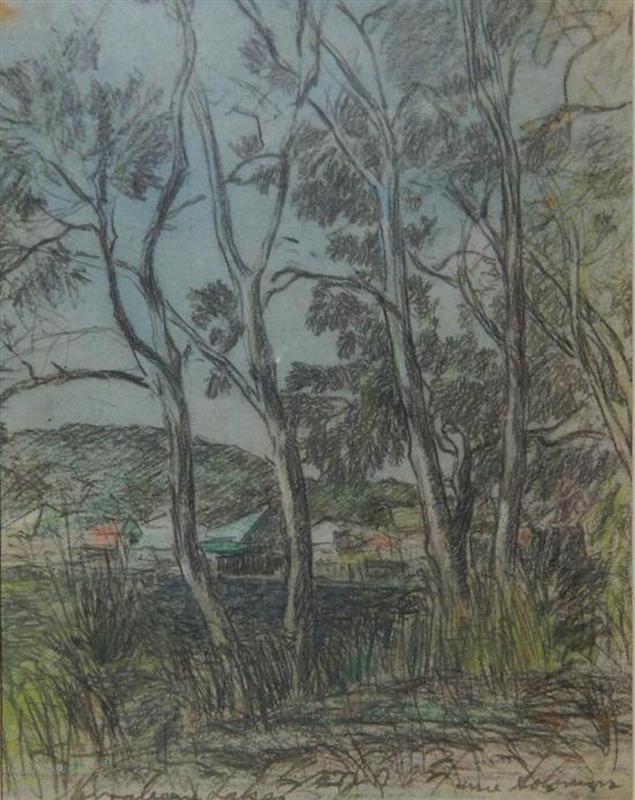
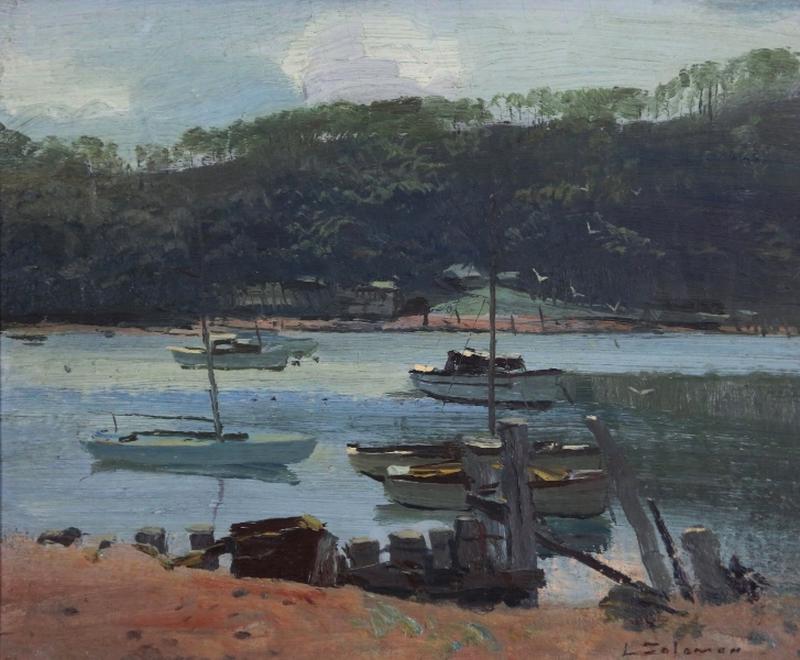
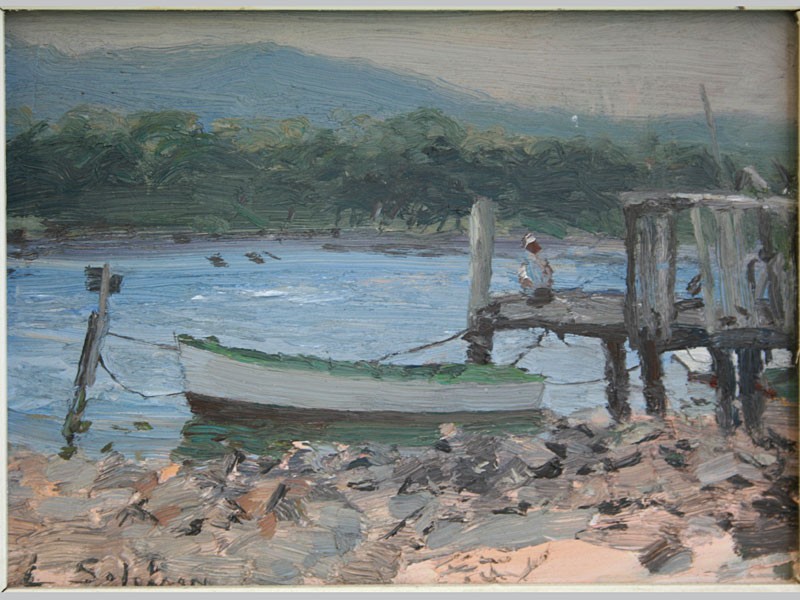
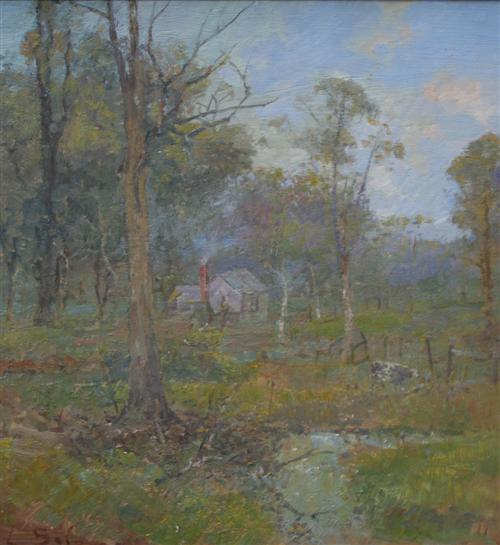
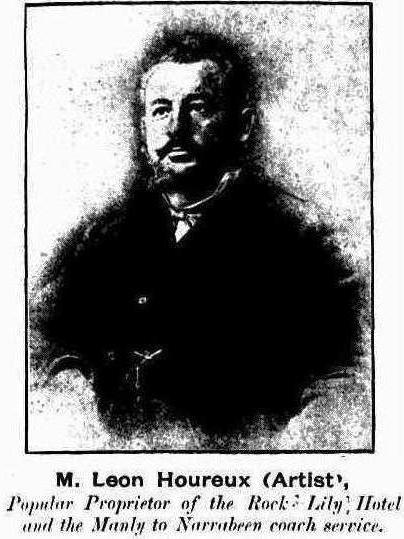
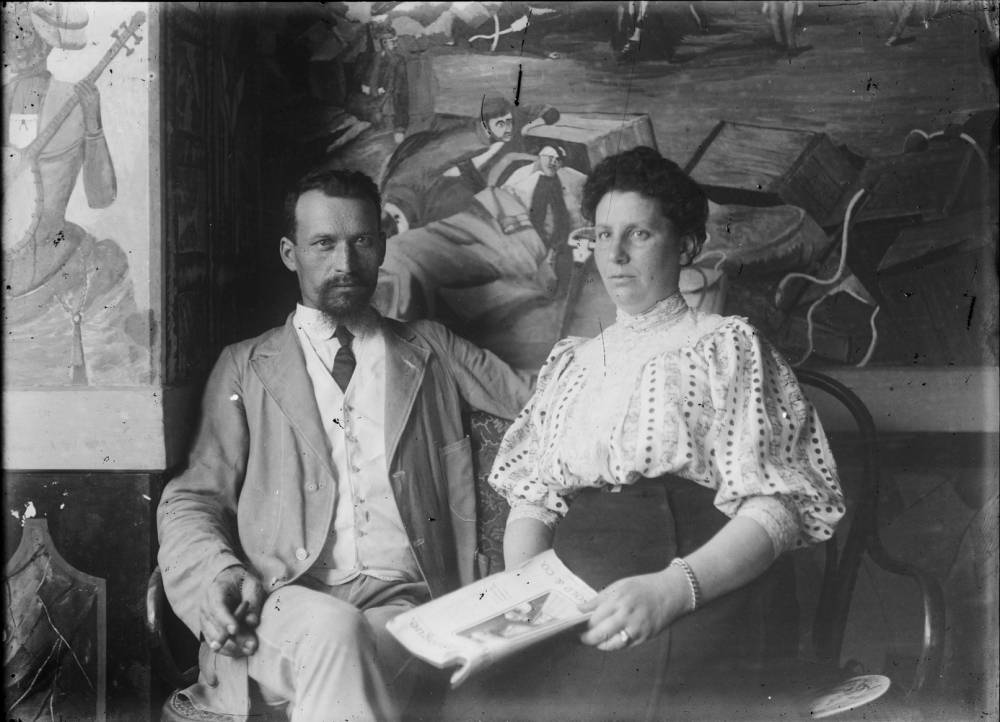
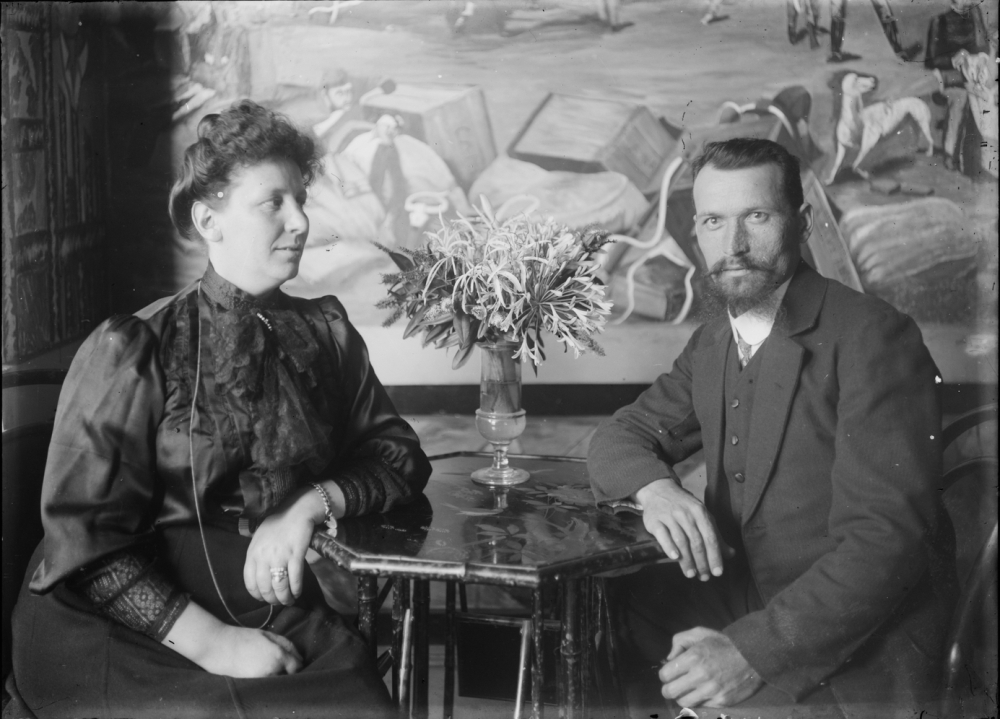
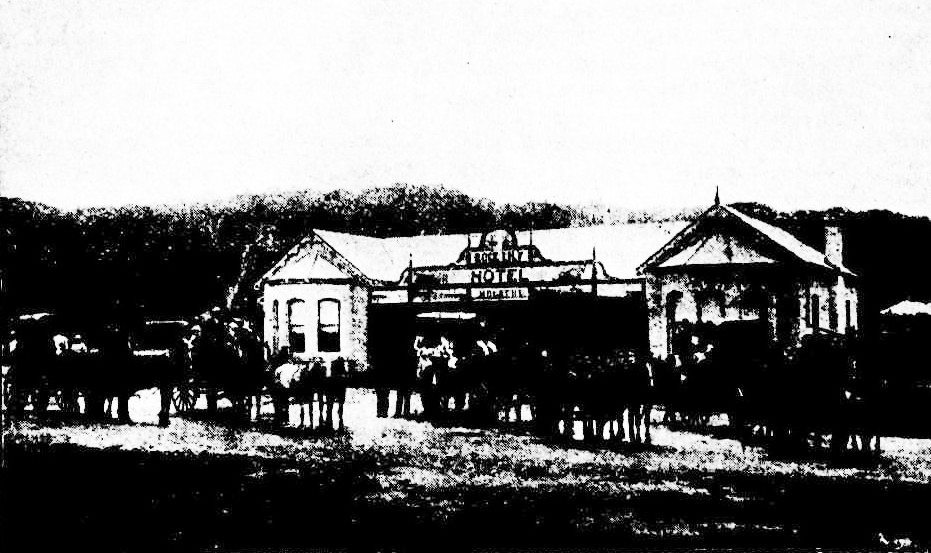
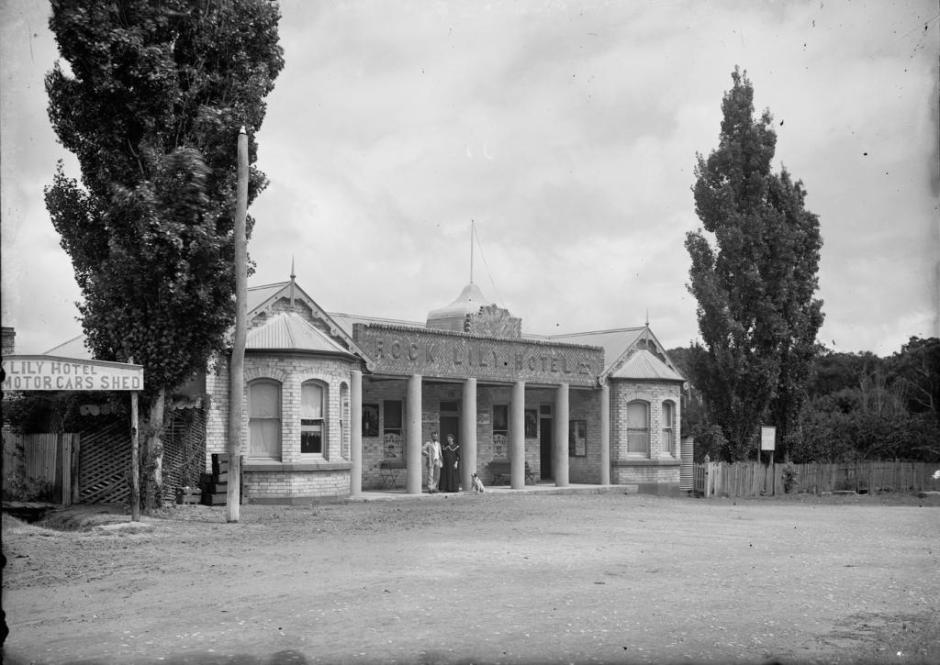
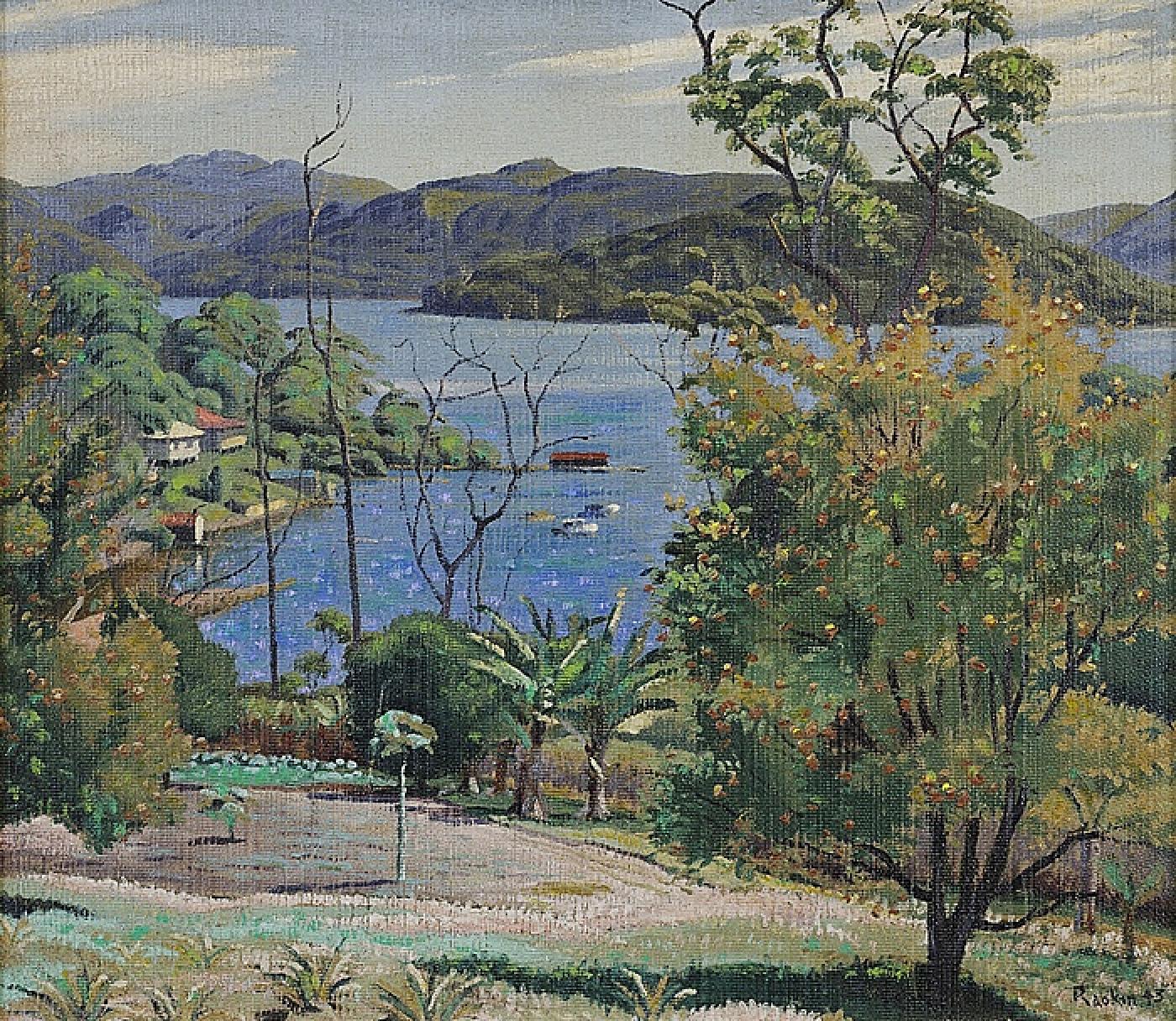
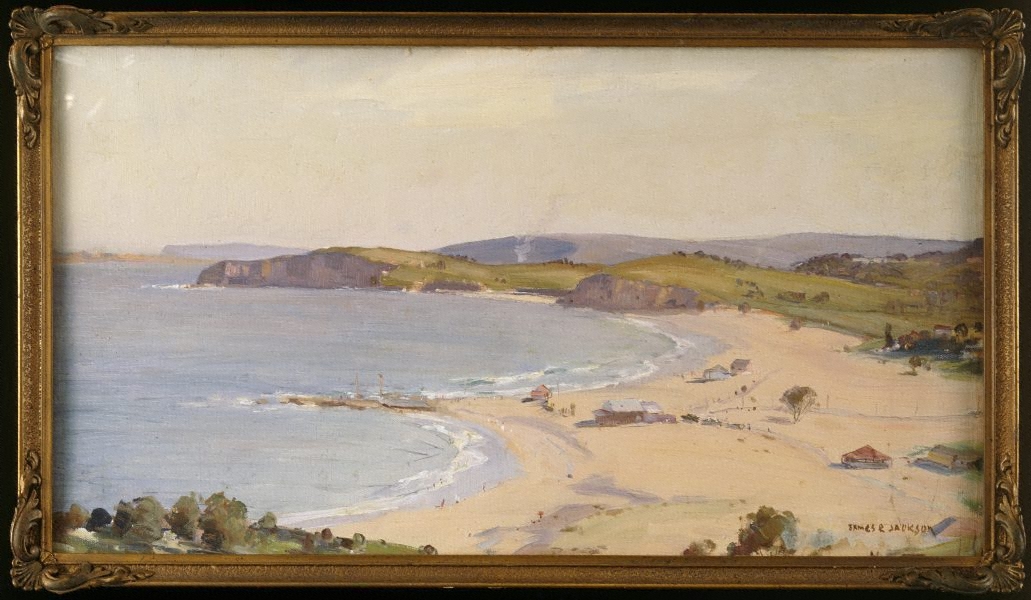
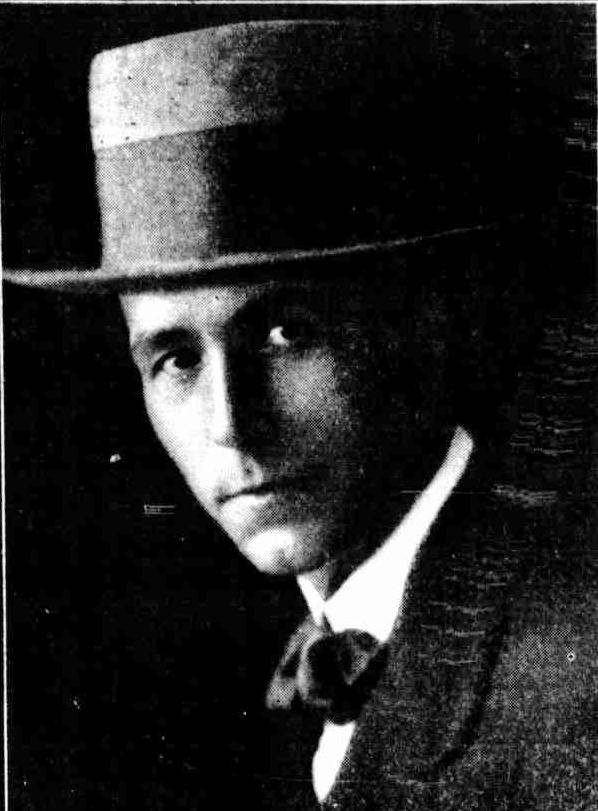

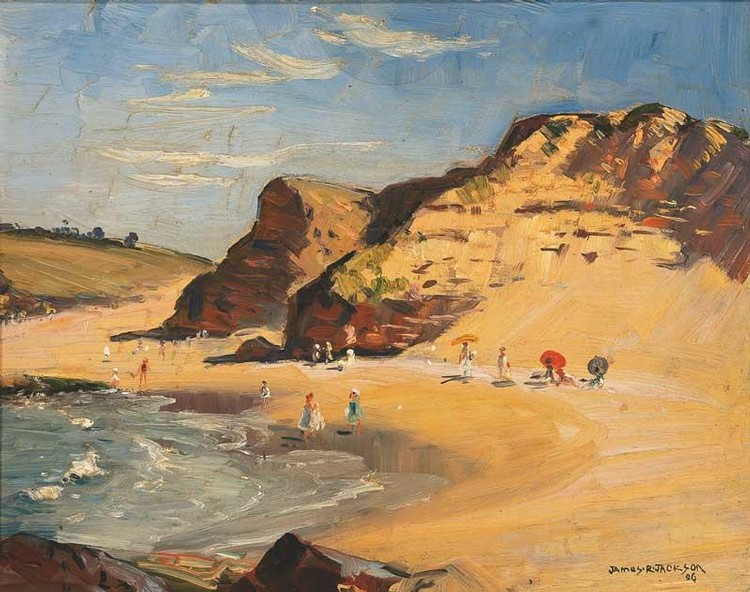
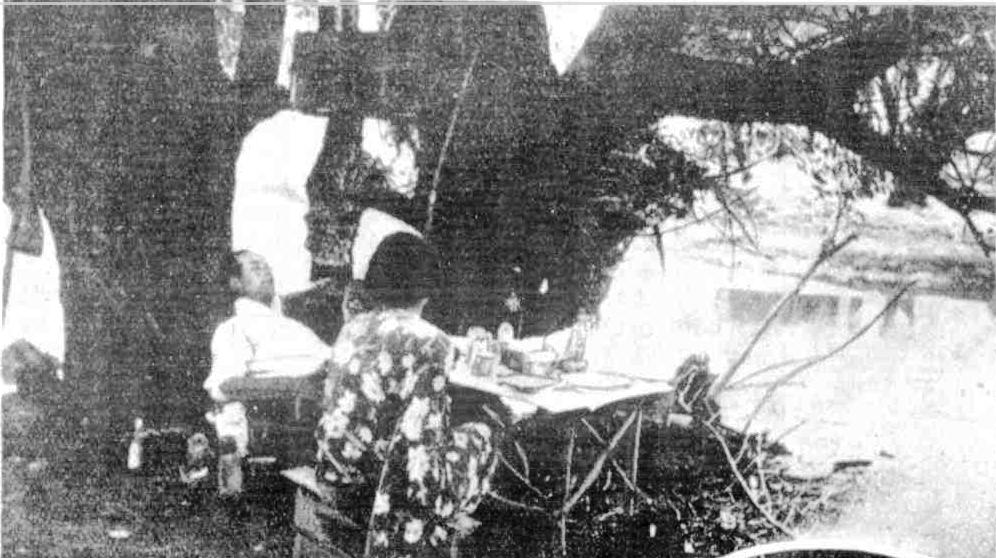

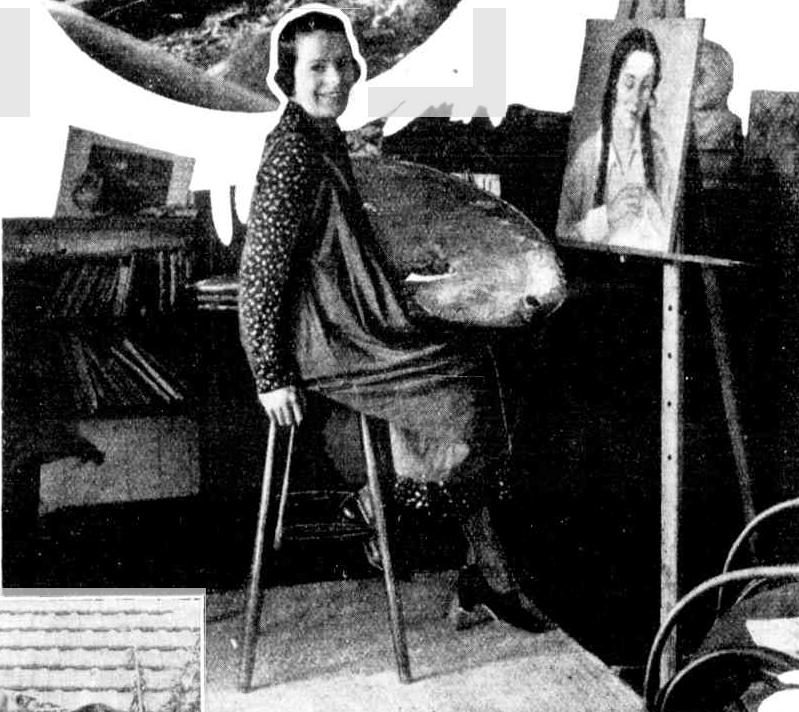
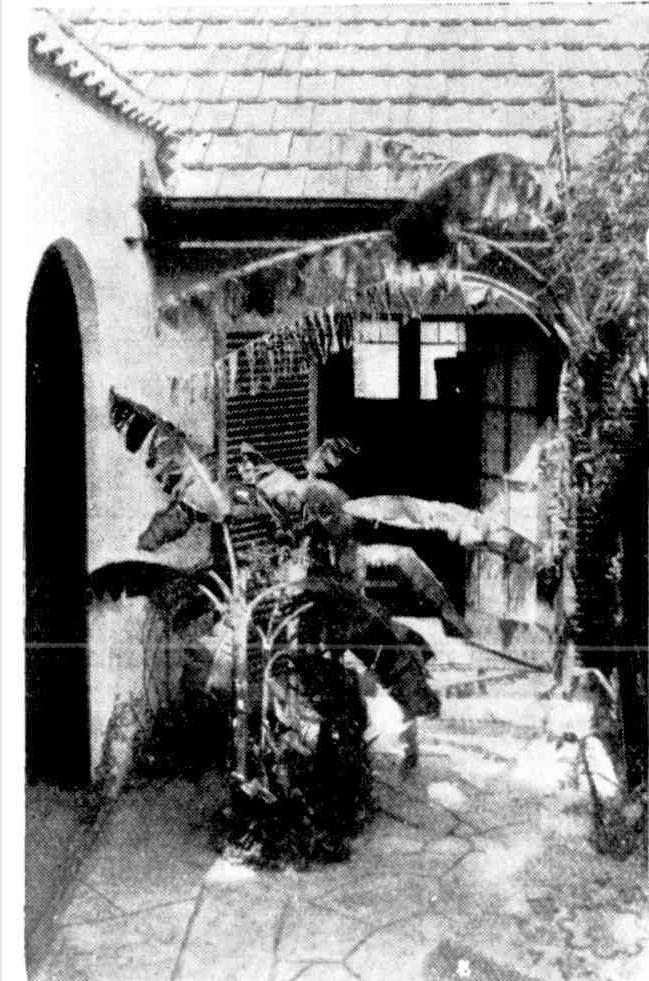
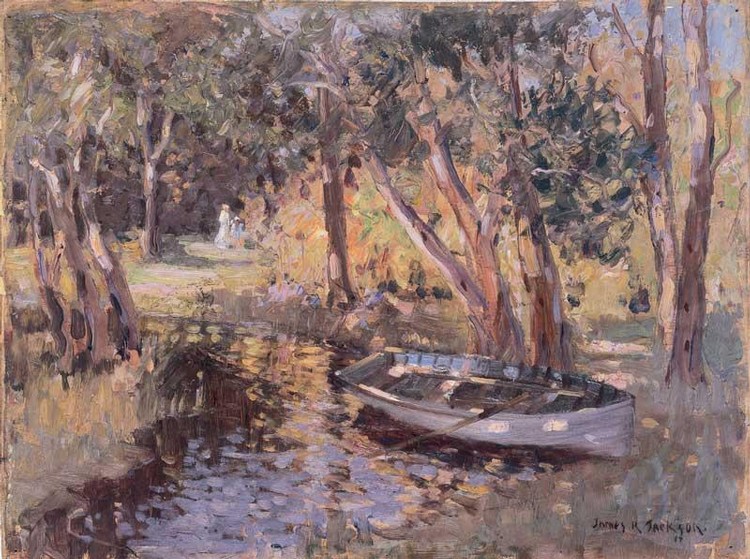
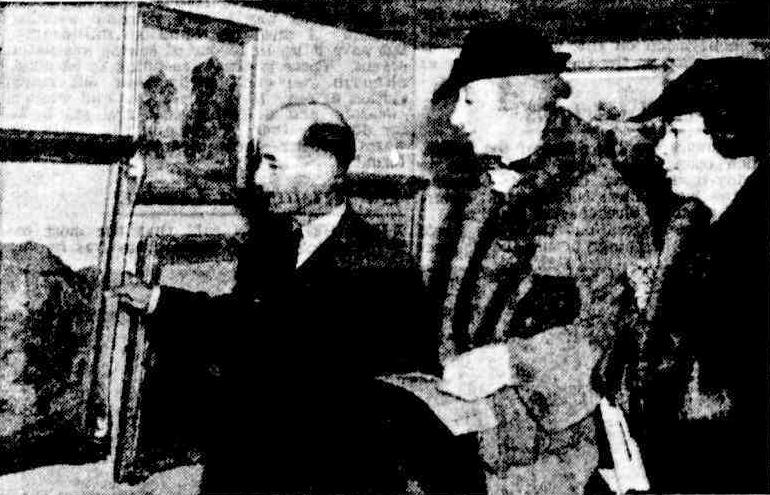
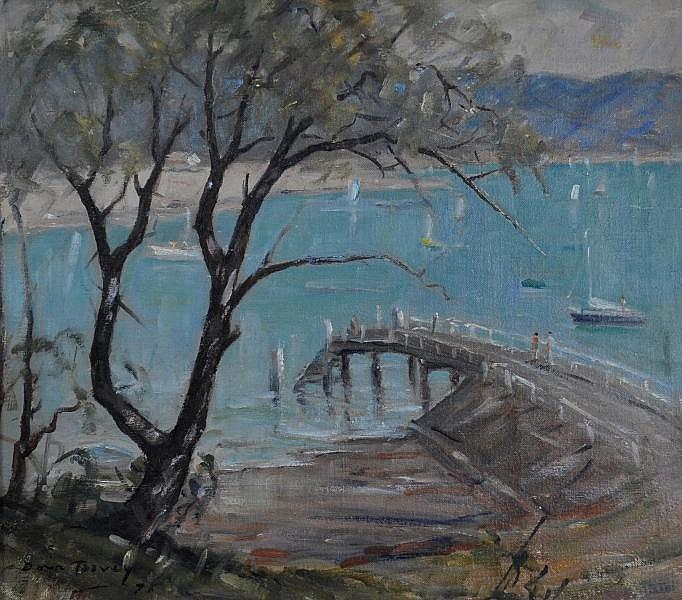
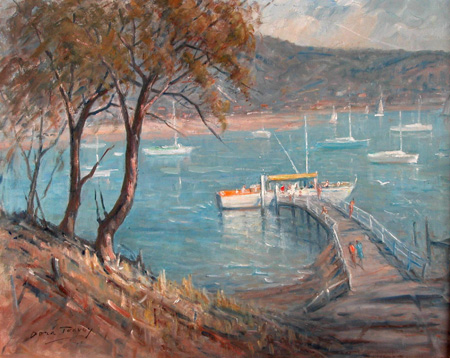
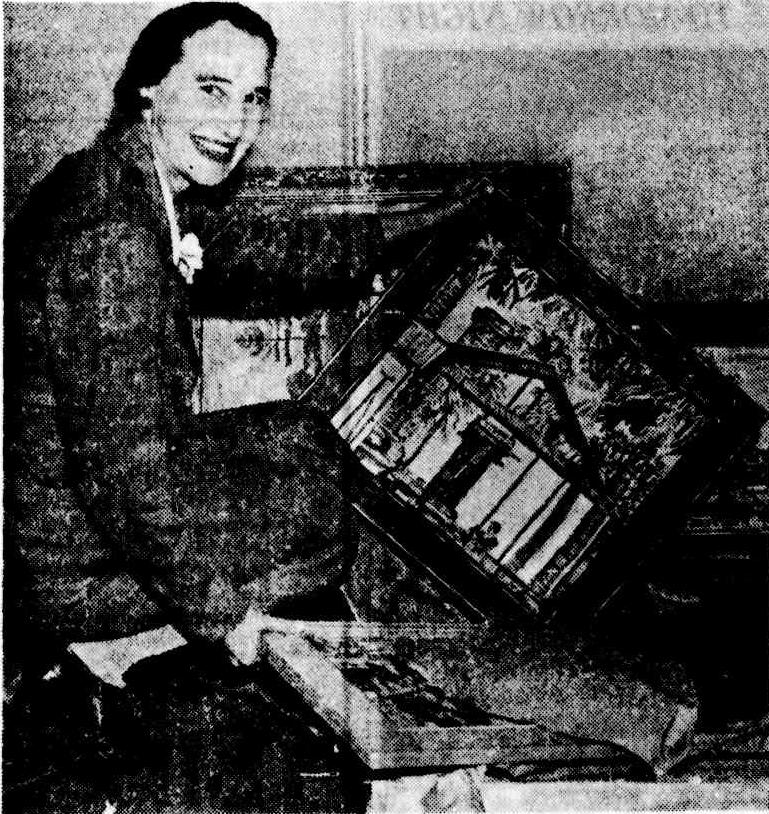

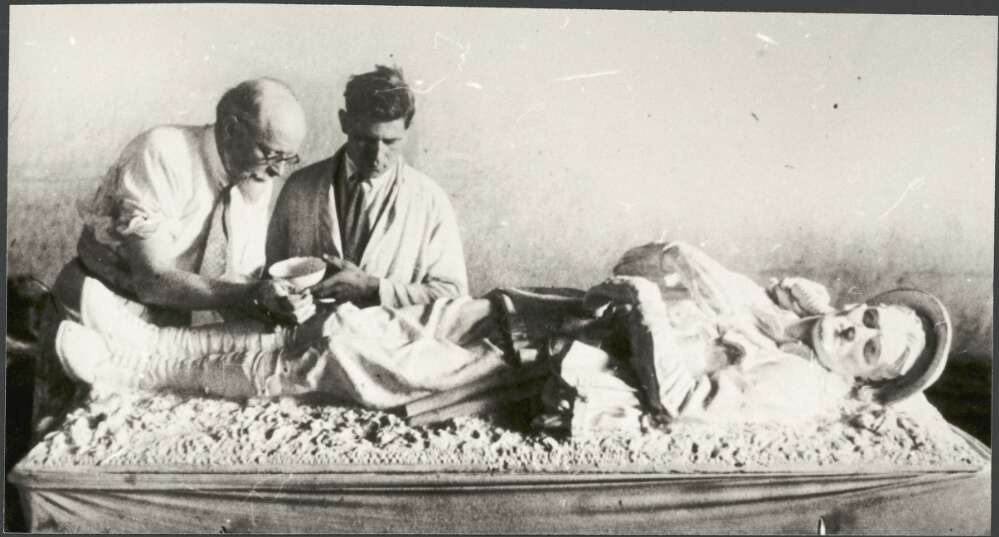
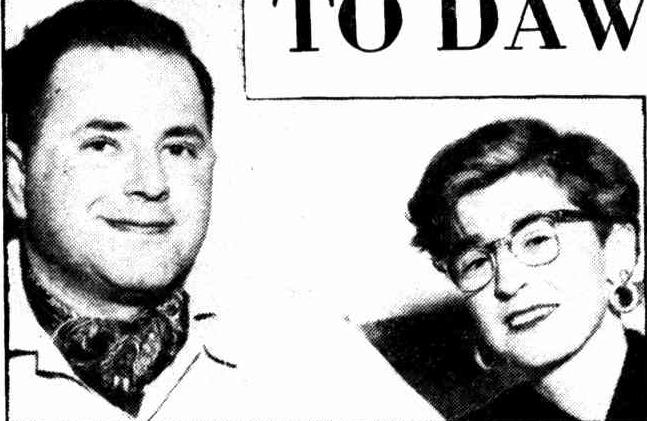
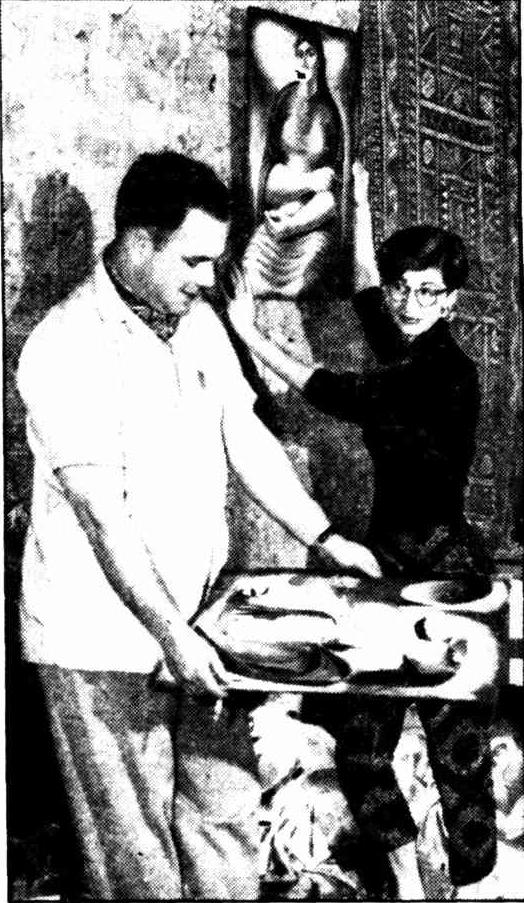

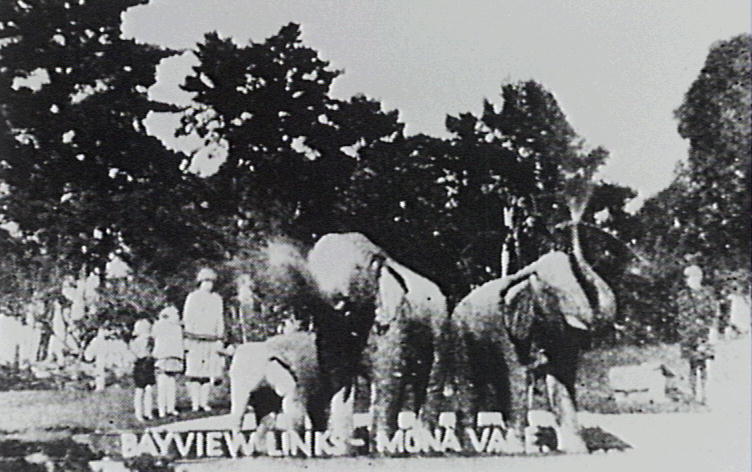
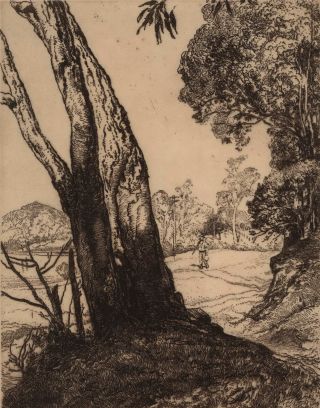

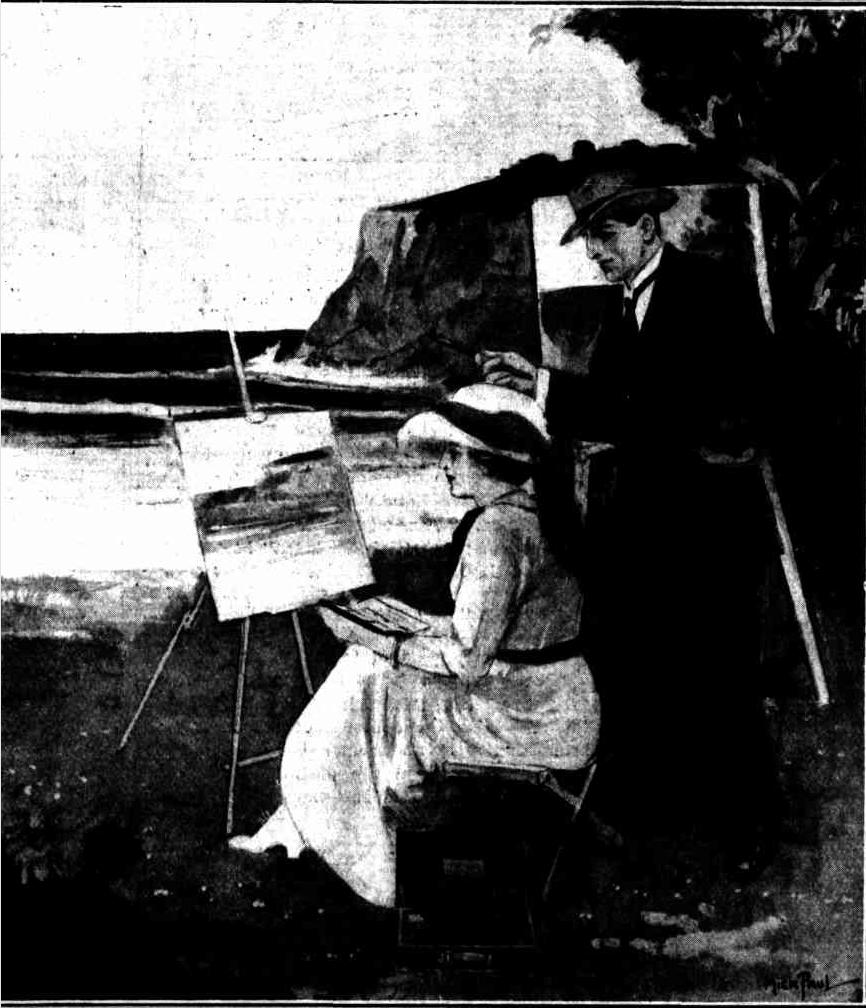
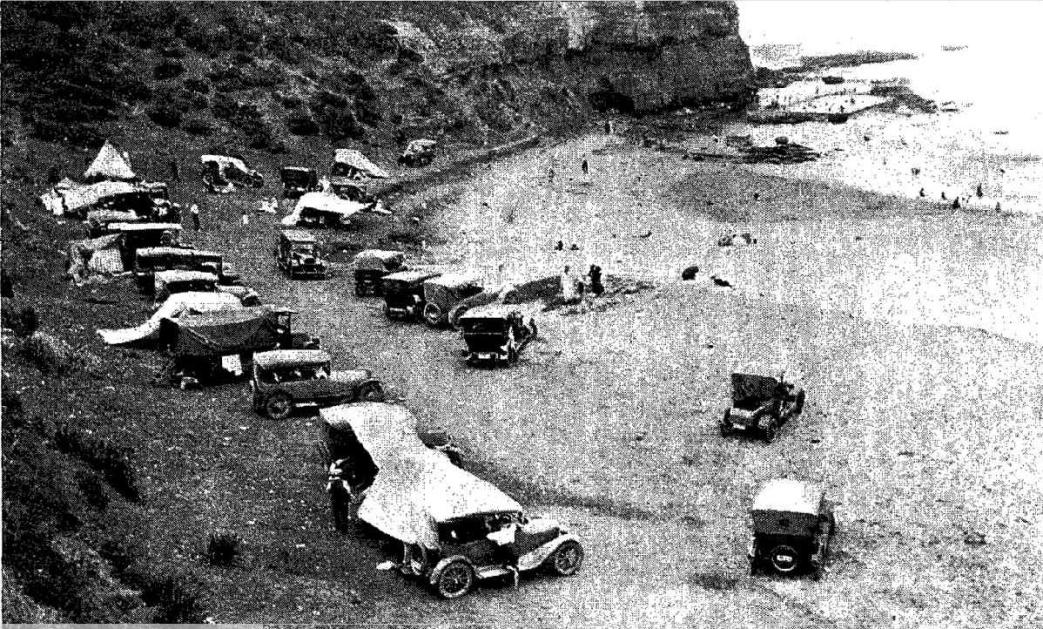
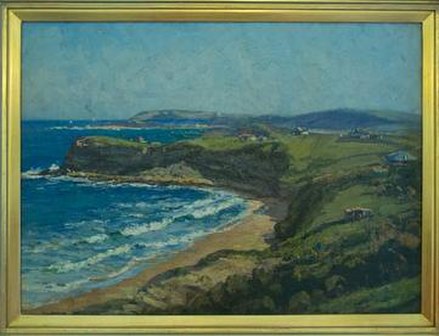
 Sir John William "Will" Ashton OBE, ROI (20 September 1881 – 1 September 1963) was an English-Australian artist and Director of the National Art Gallery of New South Wales from 1937 to 1945. Born on 20 September 1881 in Clifton, York, England, the son of James Ashton, an artist. The Ashtons migrated to Adelaide, South Australia and was educated at Prince Alfred College from 1889-1897. Upon graduating Ashton entered the life of an artist. In 1900 he left for England to work and spent several years from 1902-1903 at the Académie Julian in Paris.
Sir John William "Will" Ashton OBE, ROI (20 September 1881 – 1 September 1963) was an English-Australian artist and Director of the National Art Gallery of New South Wales from 1937 to 1945. Born on 20 September 1881 in Clifton, York, England, the son of James Ashton, an artist. The Ashtons migrated to Adelaide, South Australia and was educated at Prince Alfred College from 1889-1897. Upon graduating Ashton entered the life of an artist. In 1900 he left for England to work and spent several years from 1902-1903 at the Académie Julian in Paris.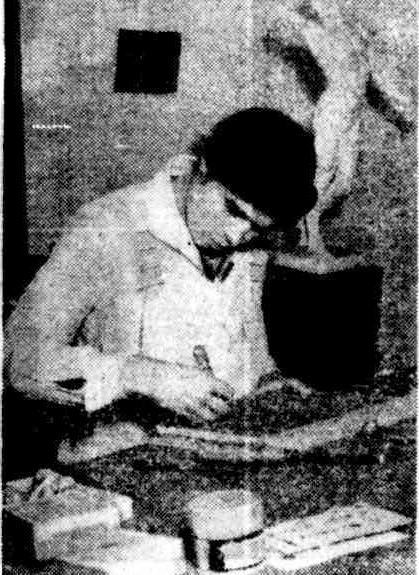
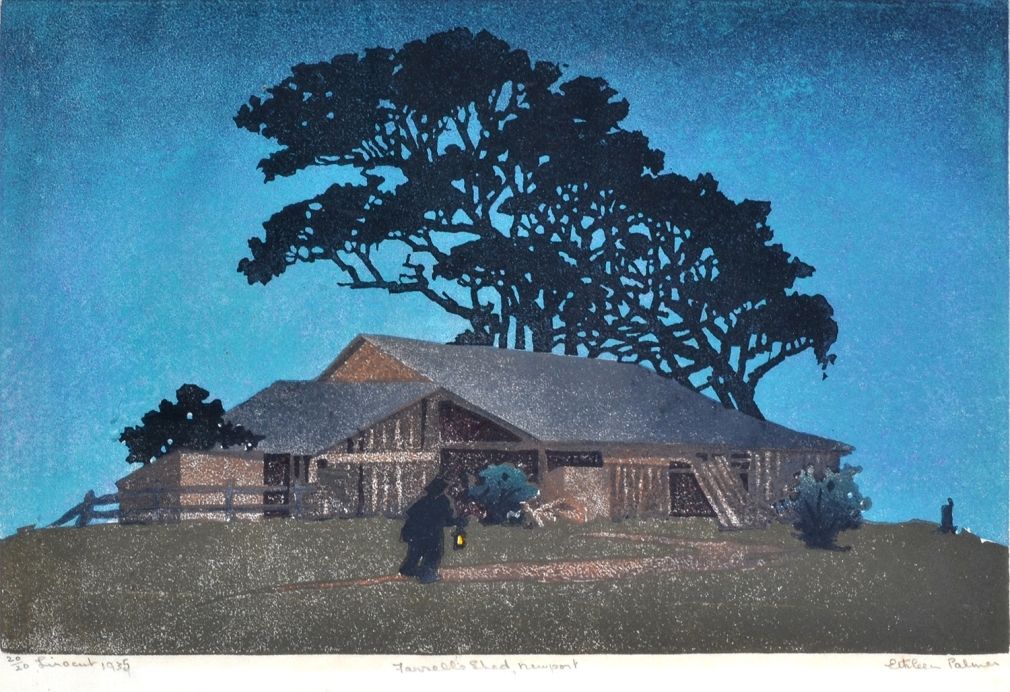
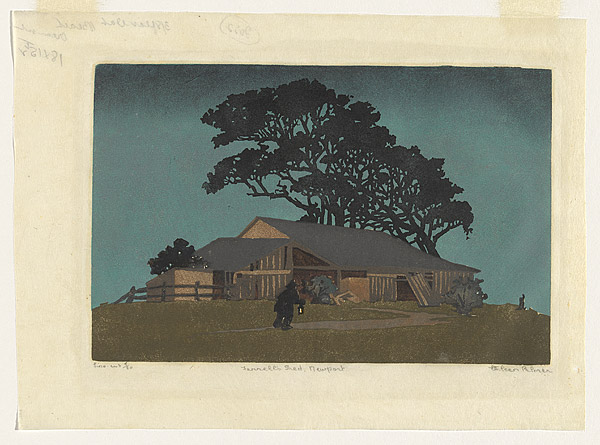
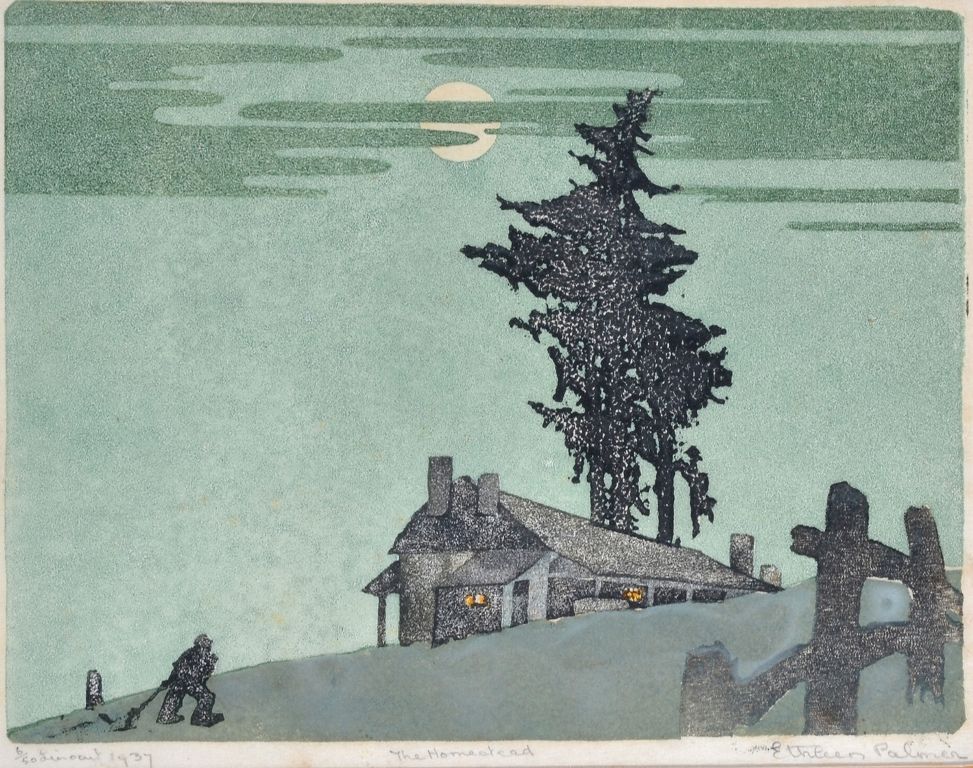
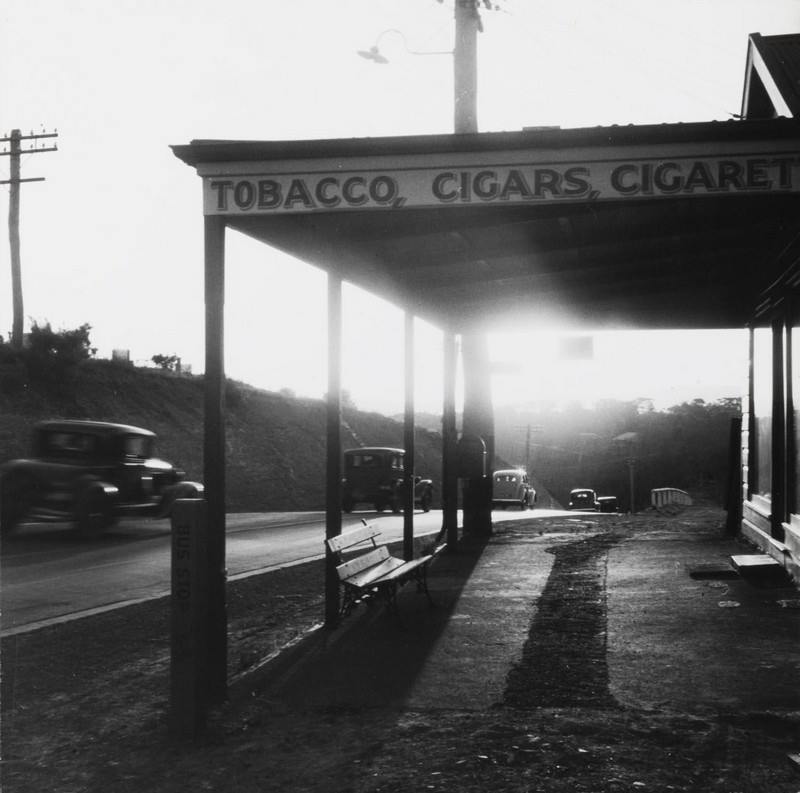
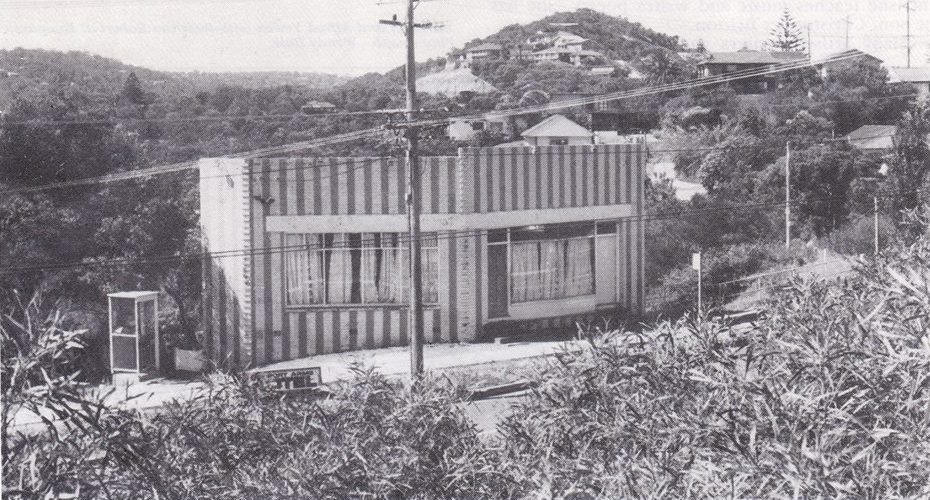
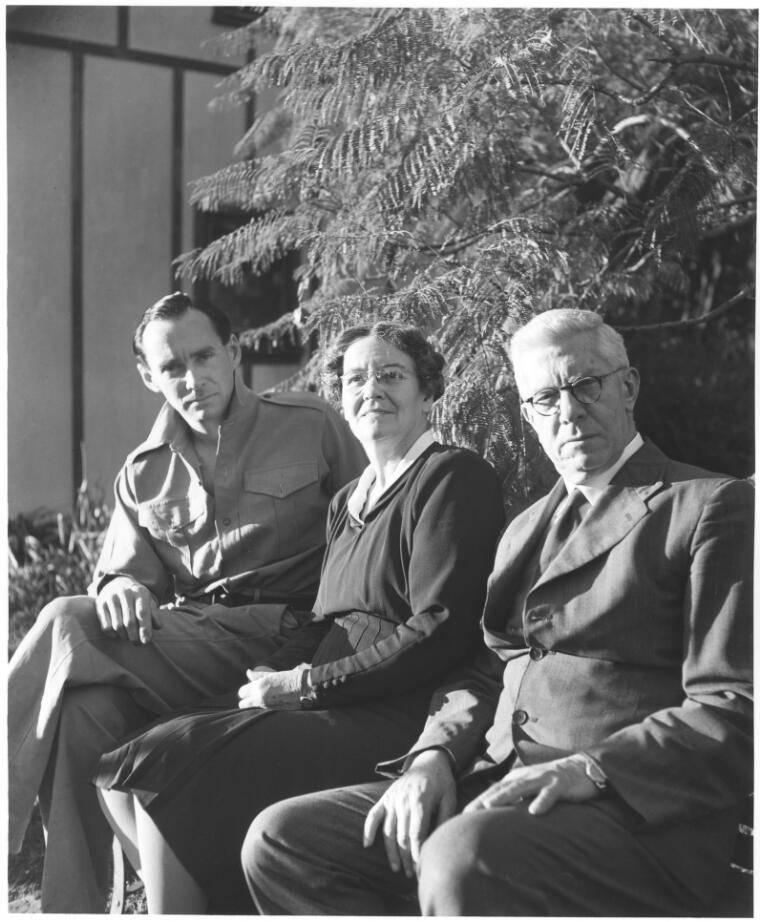


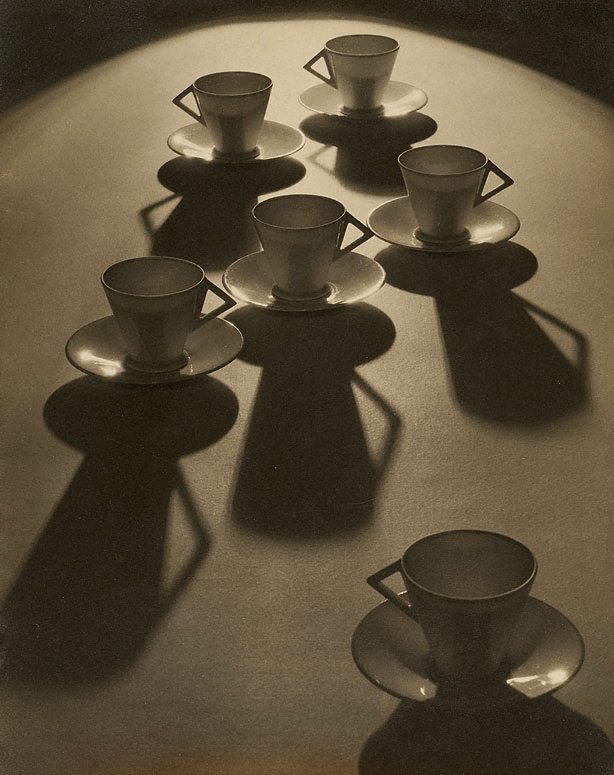
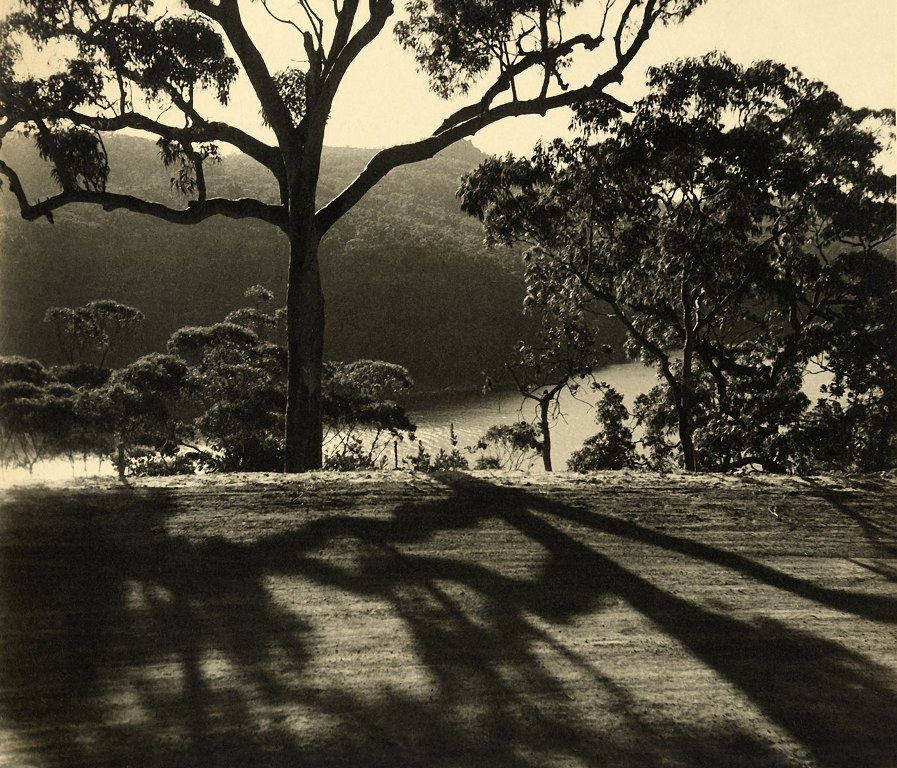
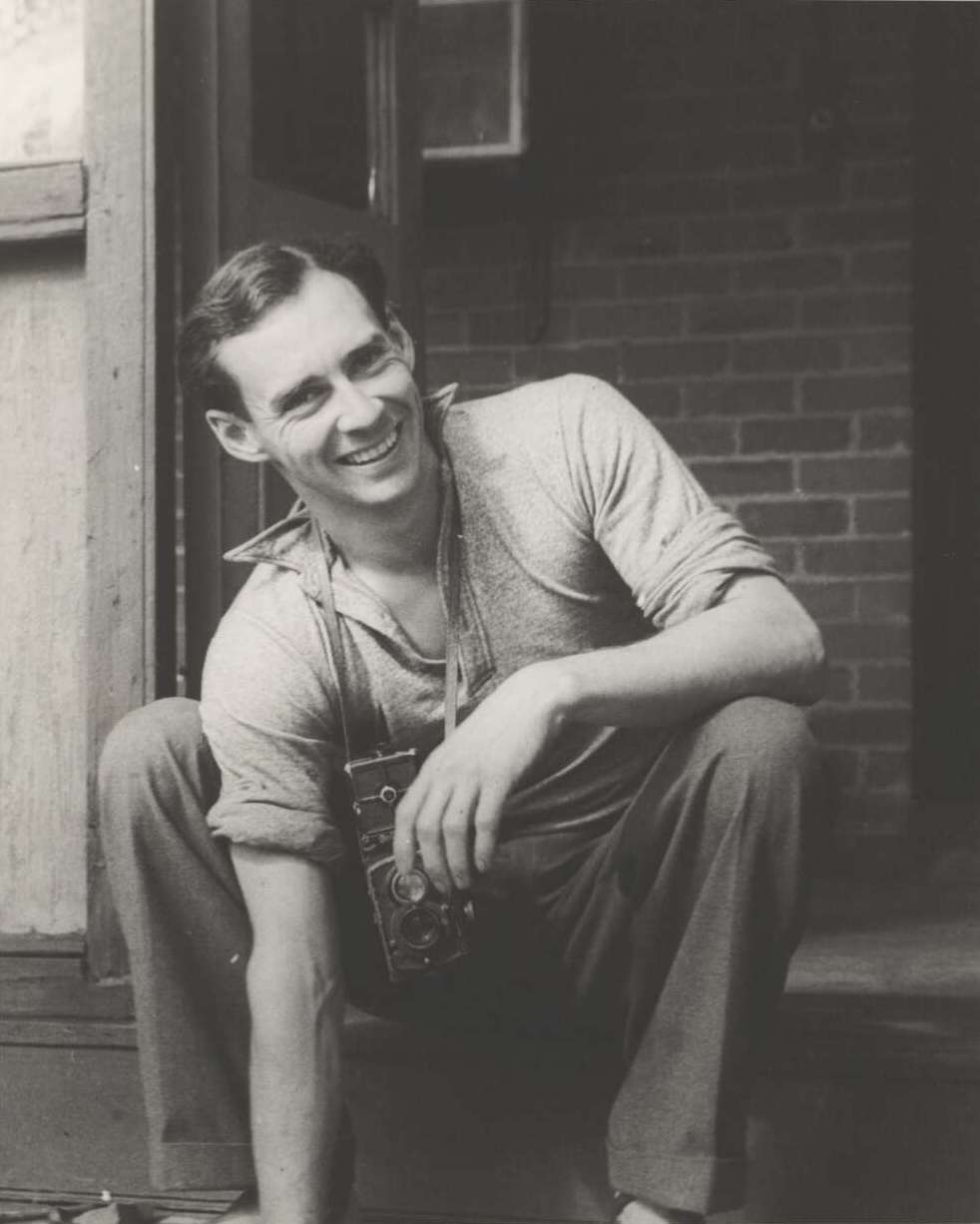
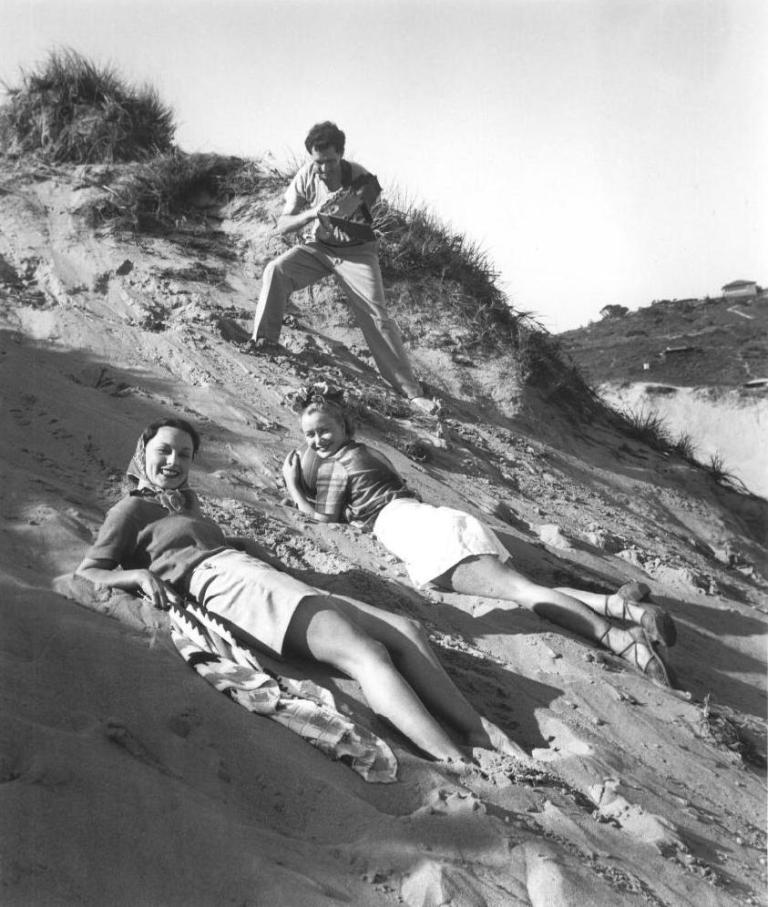
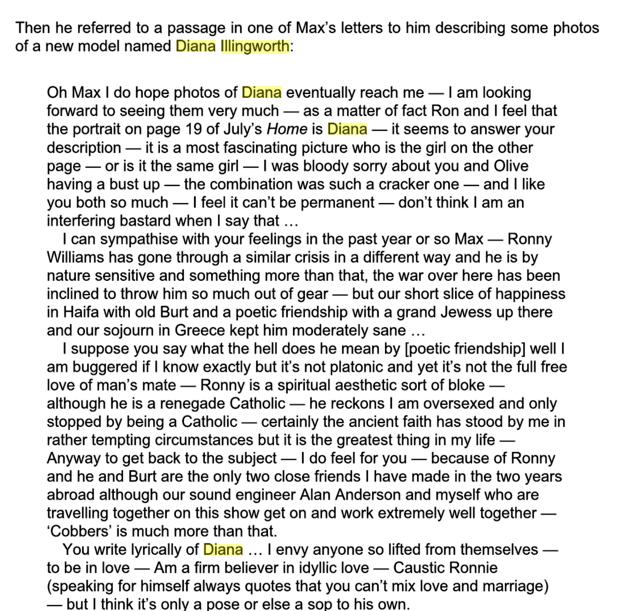
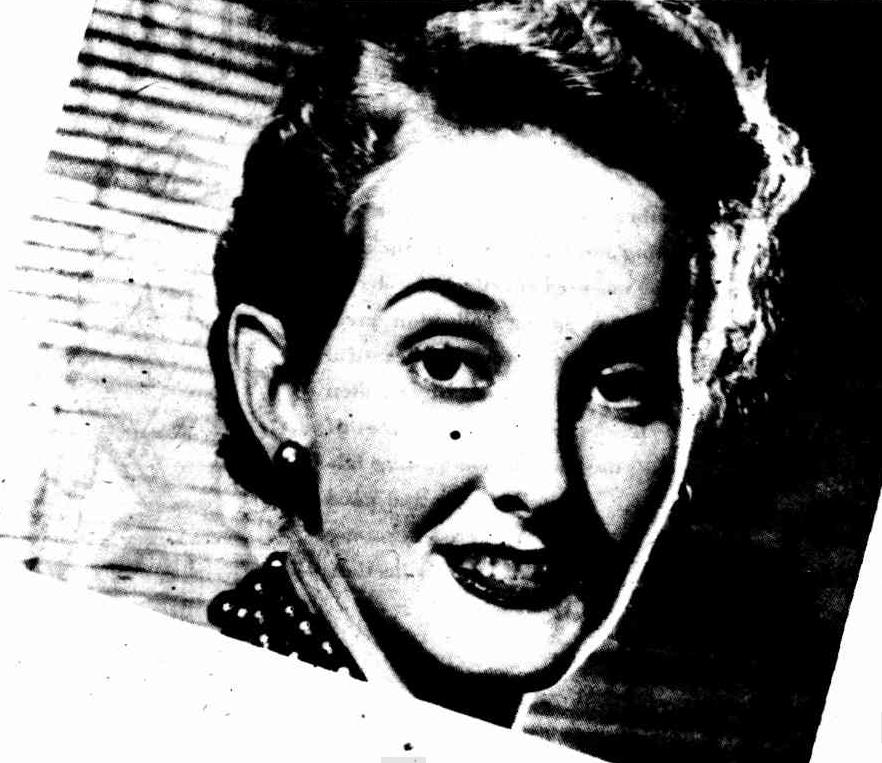
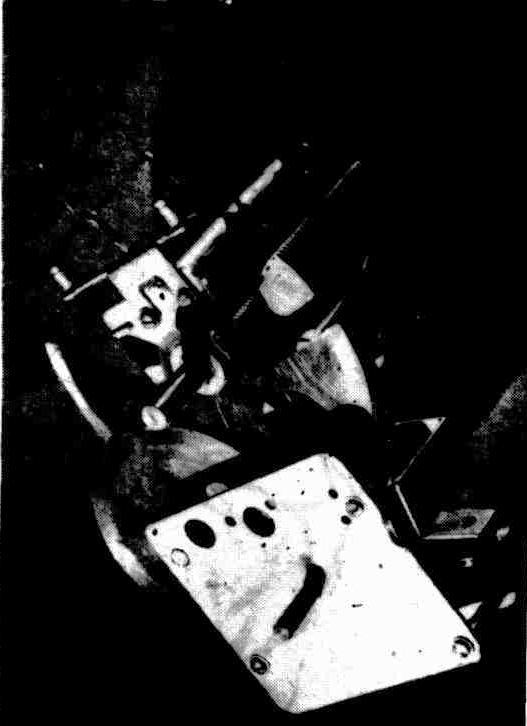
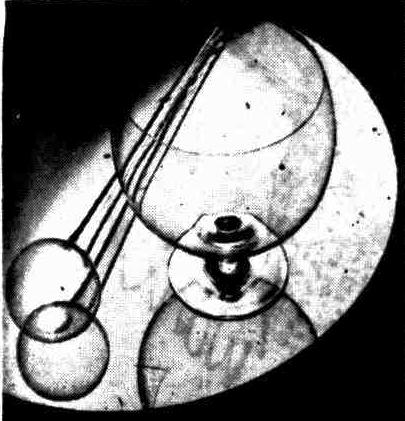

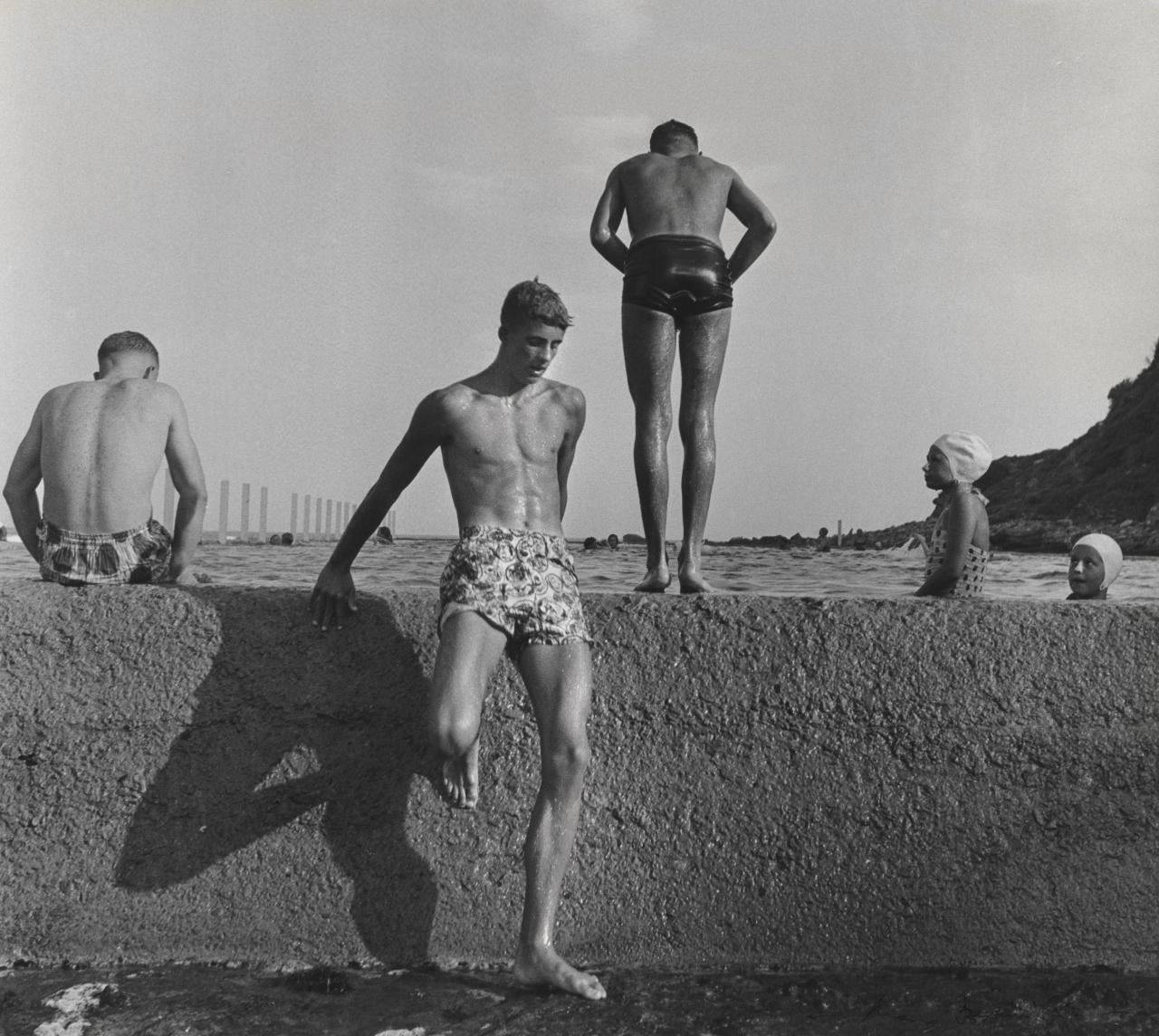

 Percival (Percy) Charles Lindsay (17 September 1870 – 21 September 1952) was an Australian landscape painter, illustrator and cartoonist, born in Creswick, Victoria. Percy was the first child born to Jane Lindsay (née Williams) and Dr Robert Charles Lindsay. His siblings included the well-known artists: Sir Lionel Lindsay, Norman Lindsay, Ruby Lindsay and Sir Daryl Lindsay.
Percival (Percy) Charles Lindsay (17 September 1870 – 21 September 1952) was an Australian landscape painter, illustrator and cartoonist, born in Creswick, Victoria. Percy was the first child born to Jane Lindsay (née Williams) and Dr Robert Charles Lindsay. His siblings included the well-known artists: Sir Lionel Lindsay, Norman Lindsay, Ruby Lindsay and Sir Daryl Lindsay.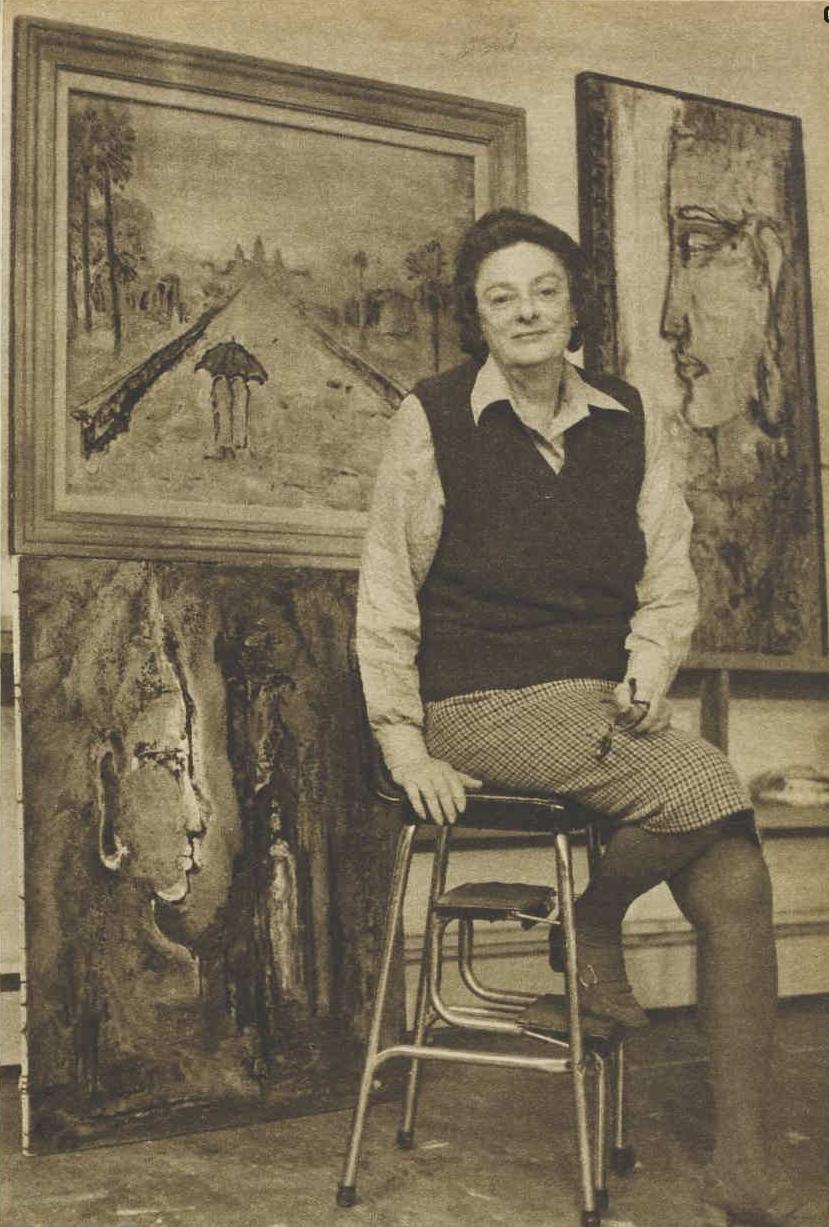


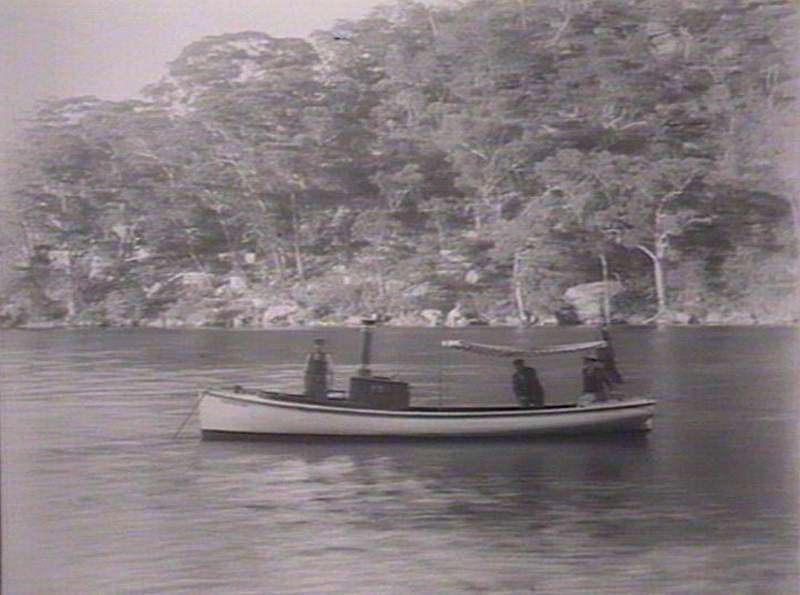




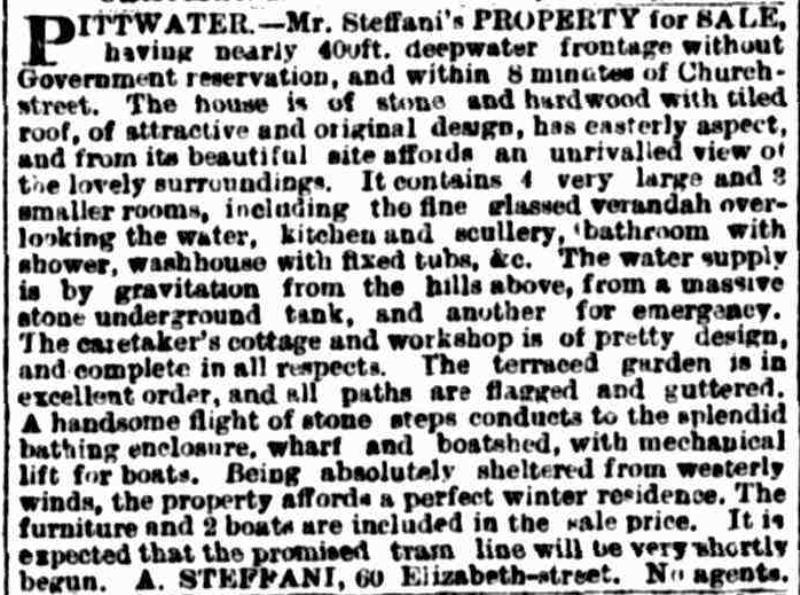
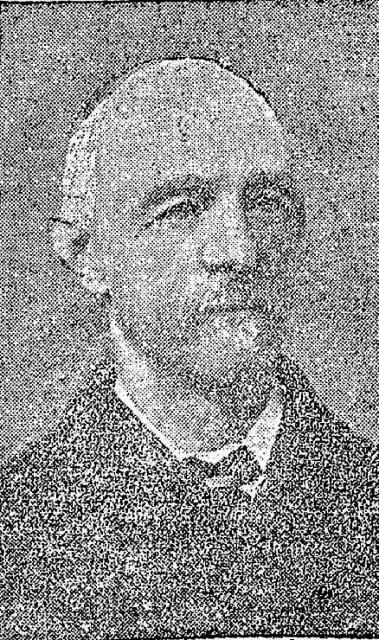
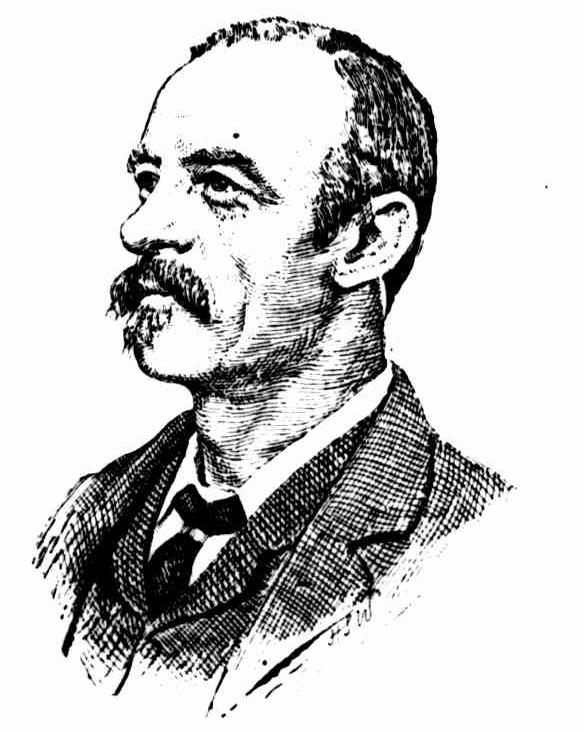
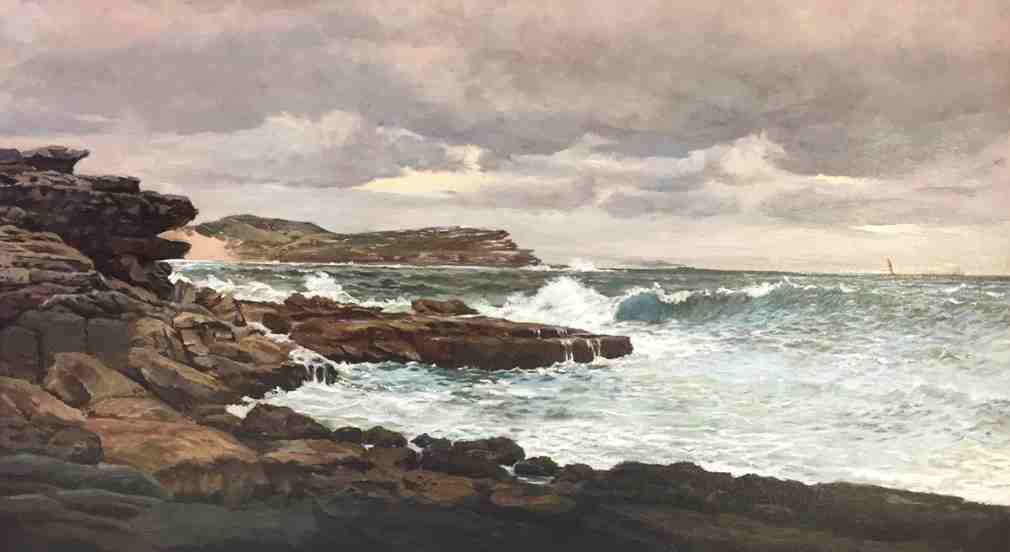

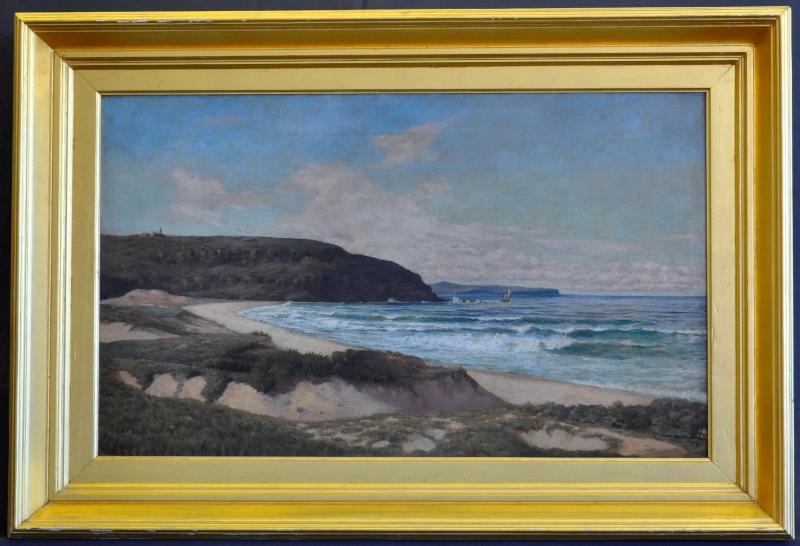
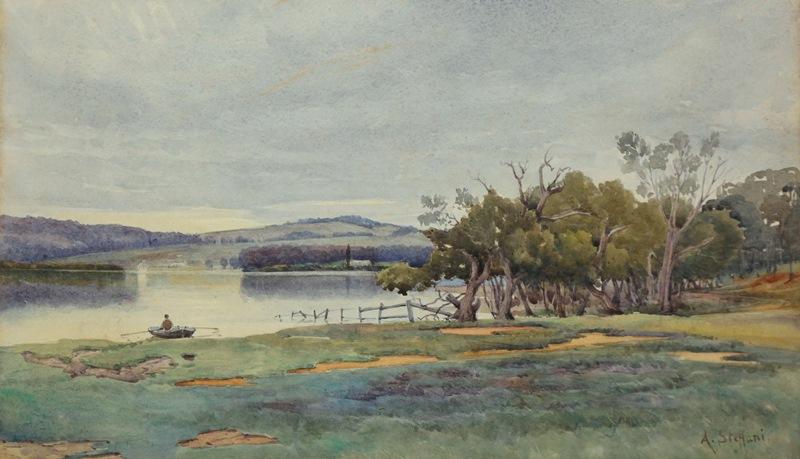
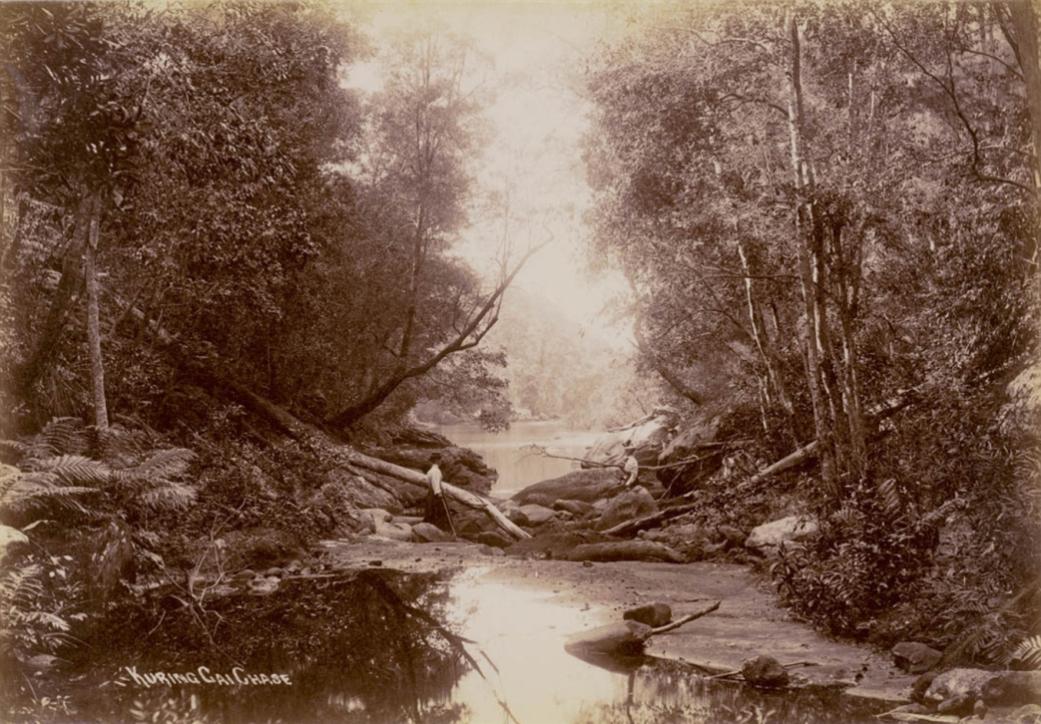
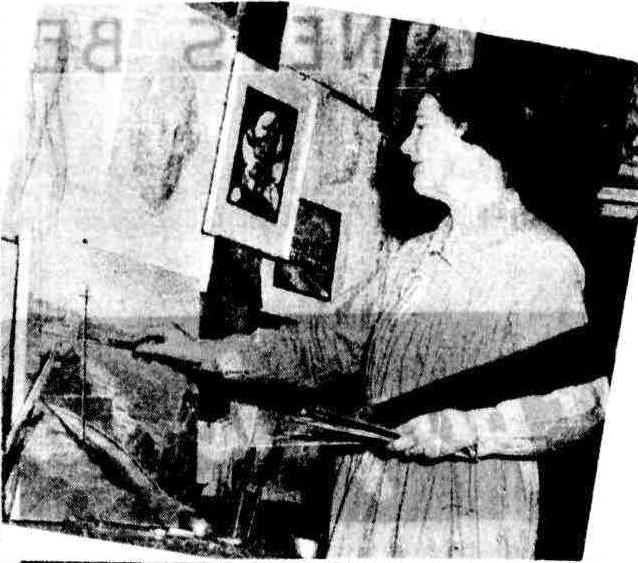
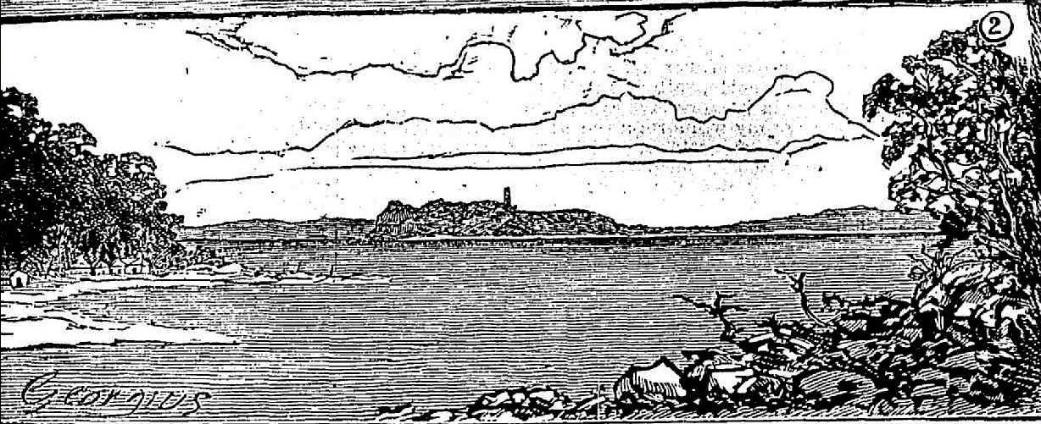


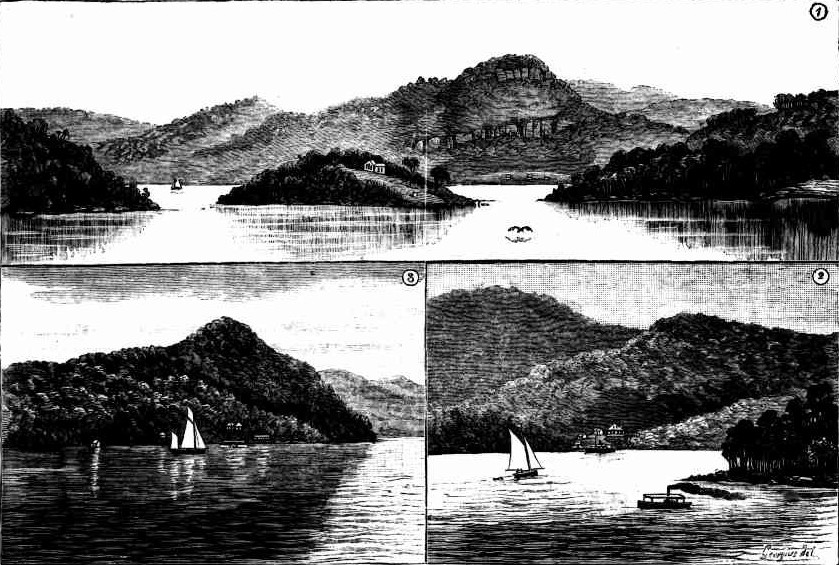
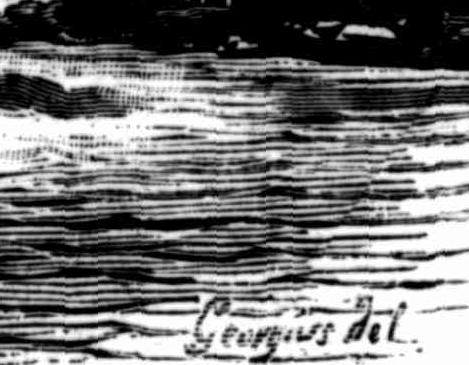
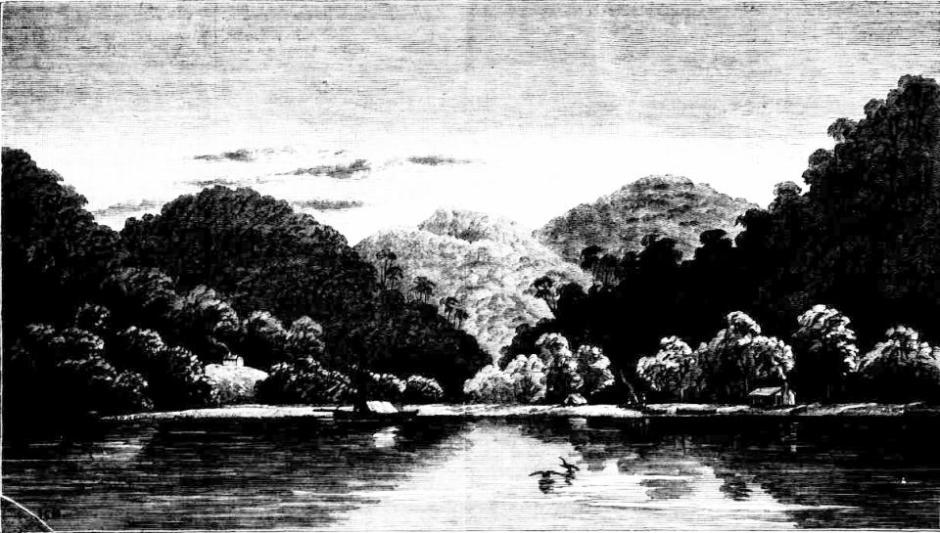
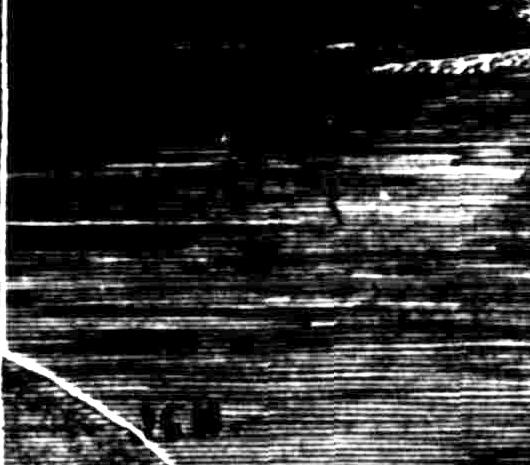
 THE VICE-PRESIDENT, JOHN C. HOYTE, ESQ.
THE VICE-PRESIDENT, JOHN C. HOYTE, ESQ.

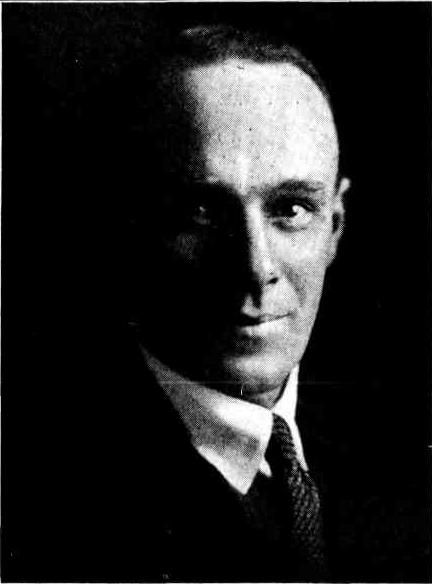



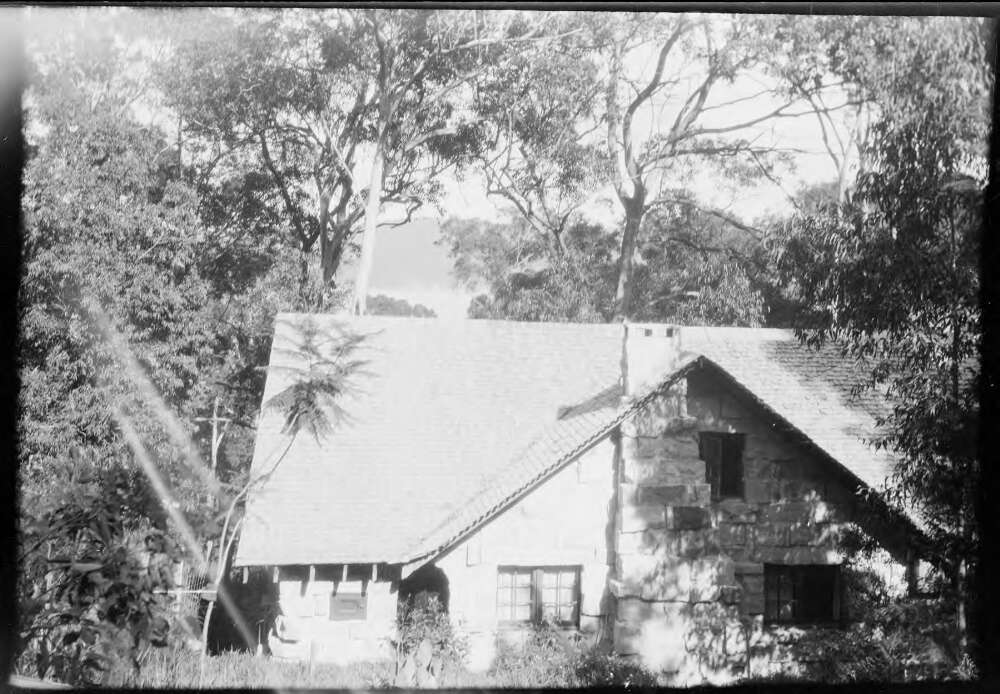
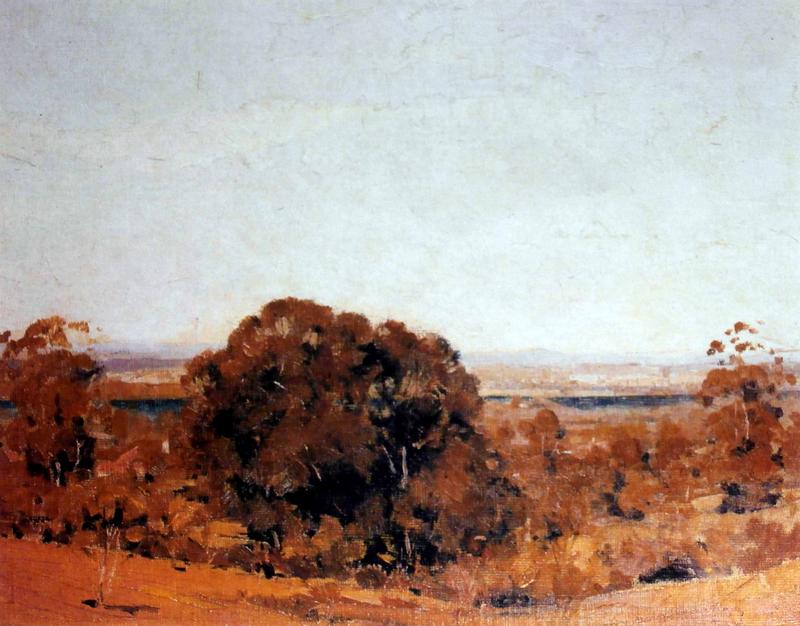
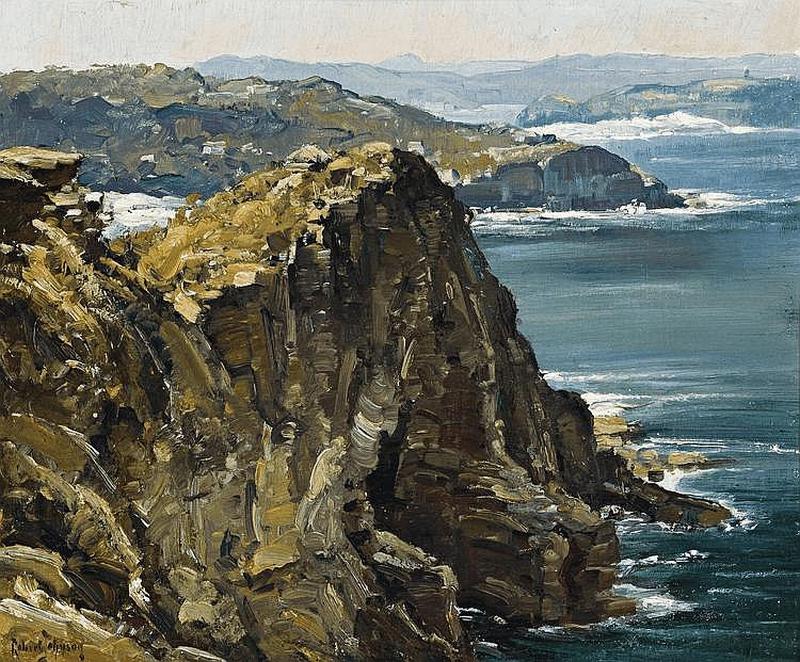
 Although Miss Haxton is fond of dogs she has no pet to tie her to her home. She has always travelled wherever she wished and likes to combine her painting trips with the thrill of seeing new countries. Her most recent trip was to Italy, where she found both the art and the people "exciting." Other favorite countries are Mexico, which she visited not long ago, France and England. She has lived in New York and has painted in most parts of the world. Her work Is hung in the National Galleries both in Sydney and Melbourne, at the Metropolitan Museum in New York and in private collections in England, the United States and Italy.
Although Miss Haxton is fond of dogs she has no pet to tie her to her home. She has always travelled wherever she wished and likes to combine her painting trips with the thrill of seeing new countries. Her most recent trip was to Italy, where she found both the art and the people "exciting." Other favorite countries are Mexico, which she visited not long ago, France and England. She has lived in New York and has painted in most parts of the world. Her work Is hung in the National Galleries both in Sydney and Melbourne, at the Metropolitan Museum in New York and in private collections in England, the United States and Italy. 

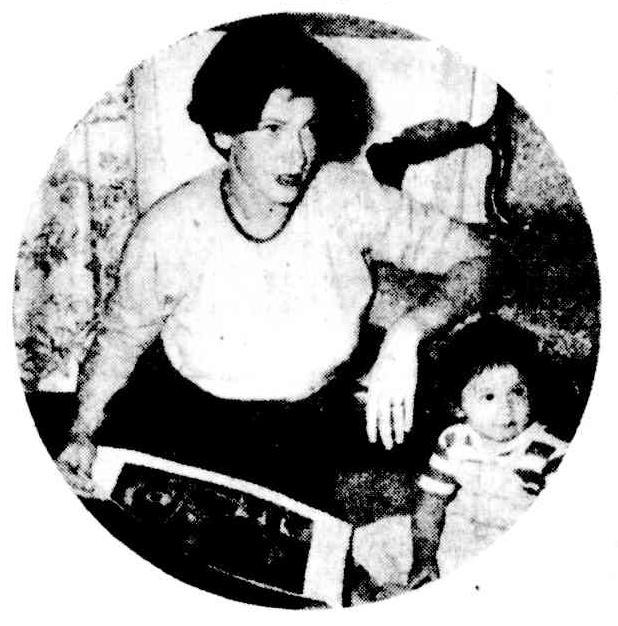

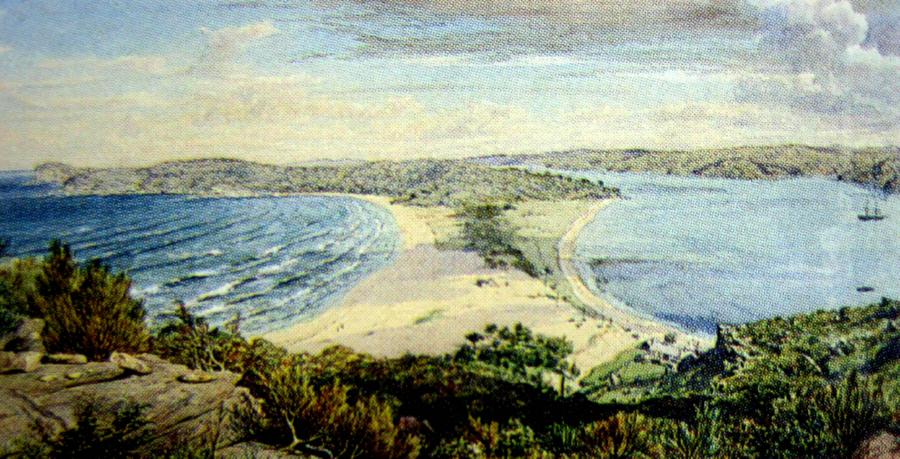

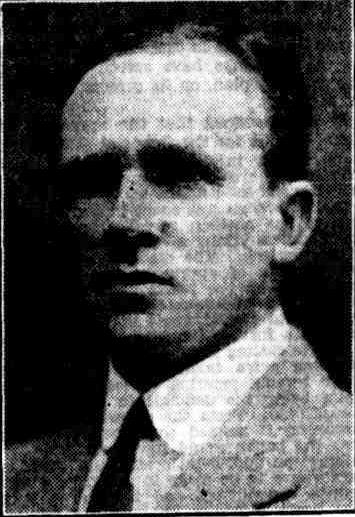

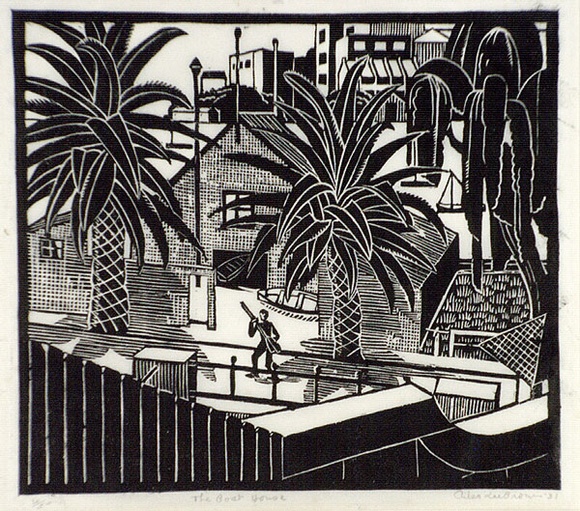
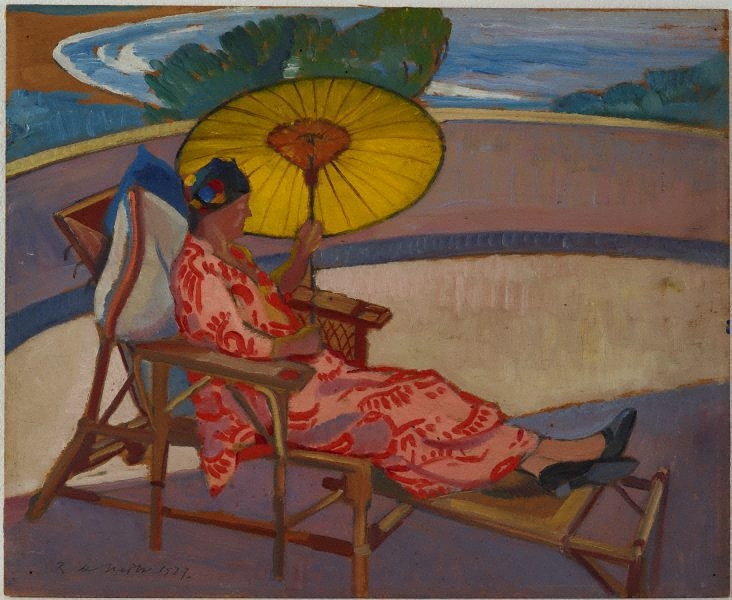



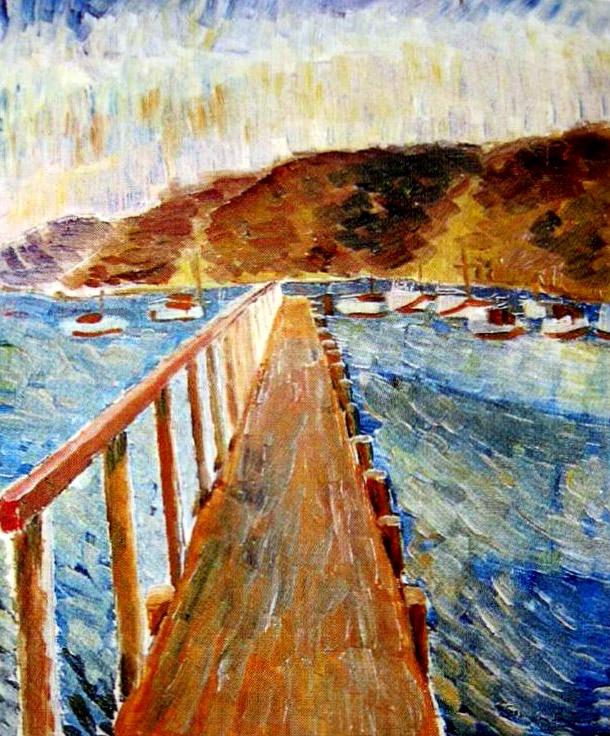
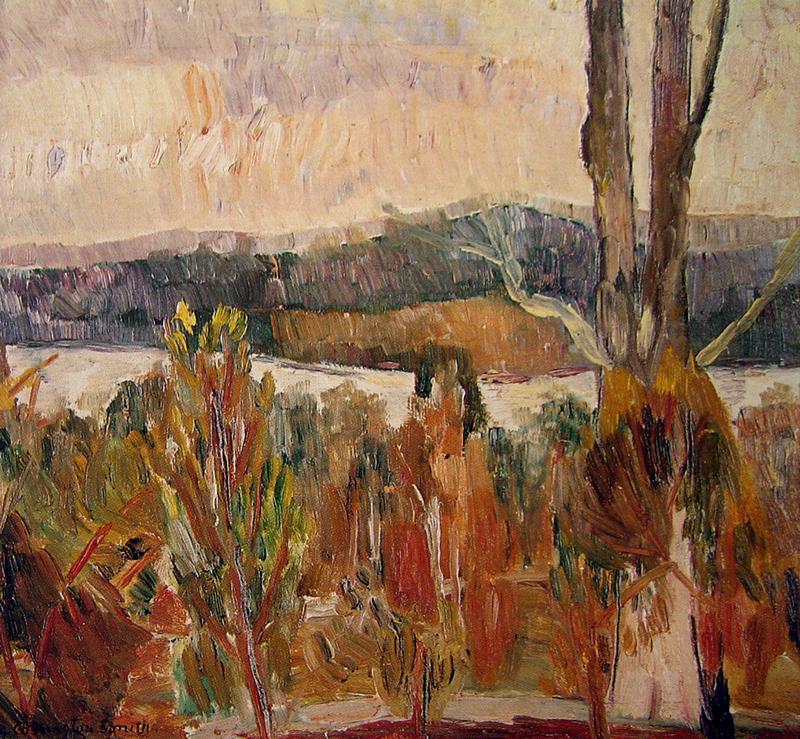
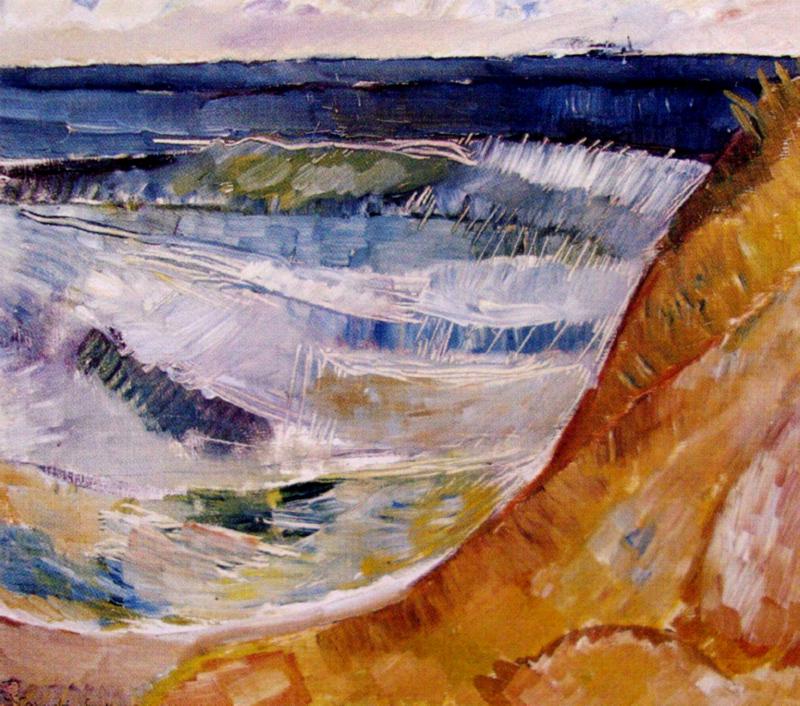
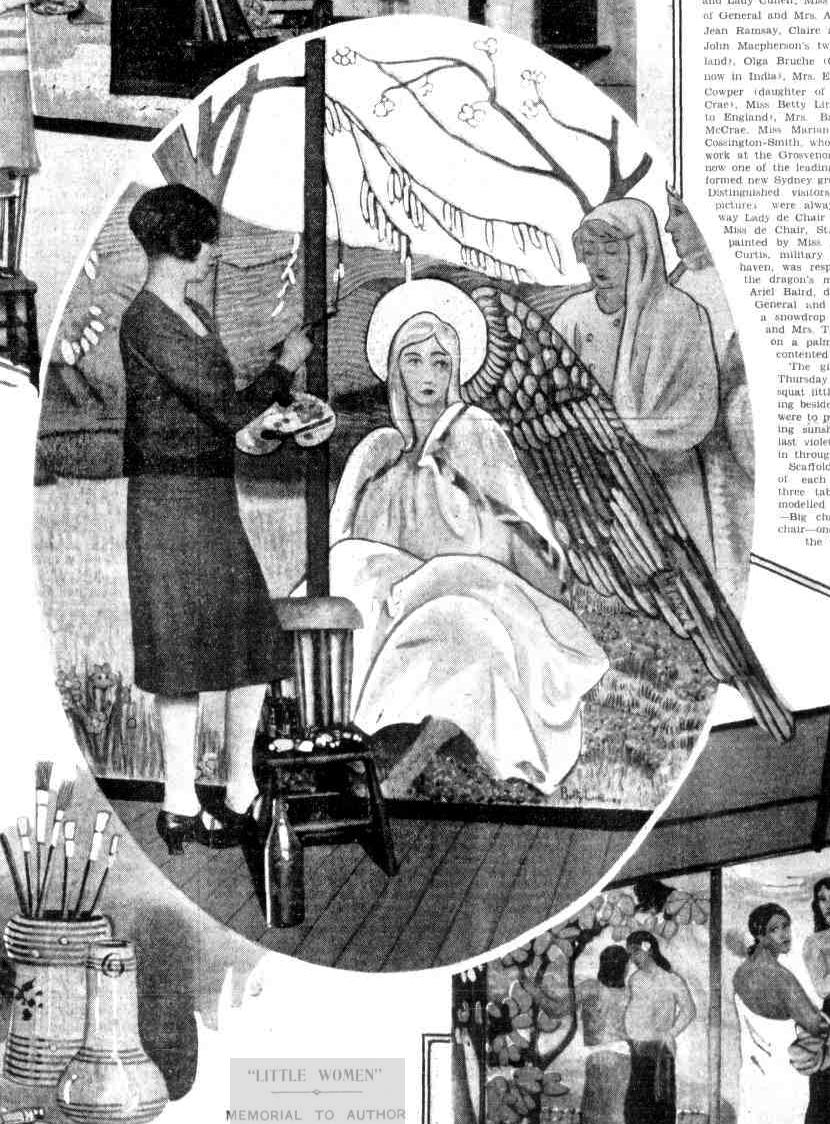
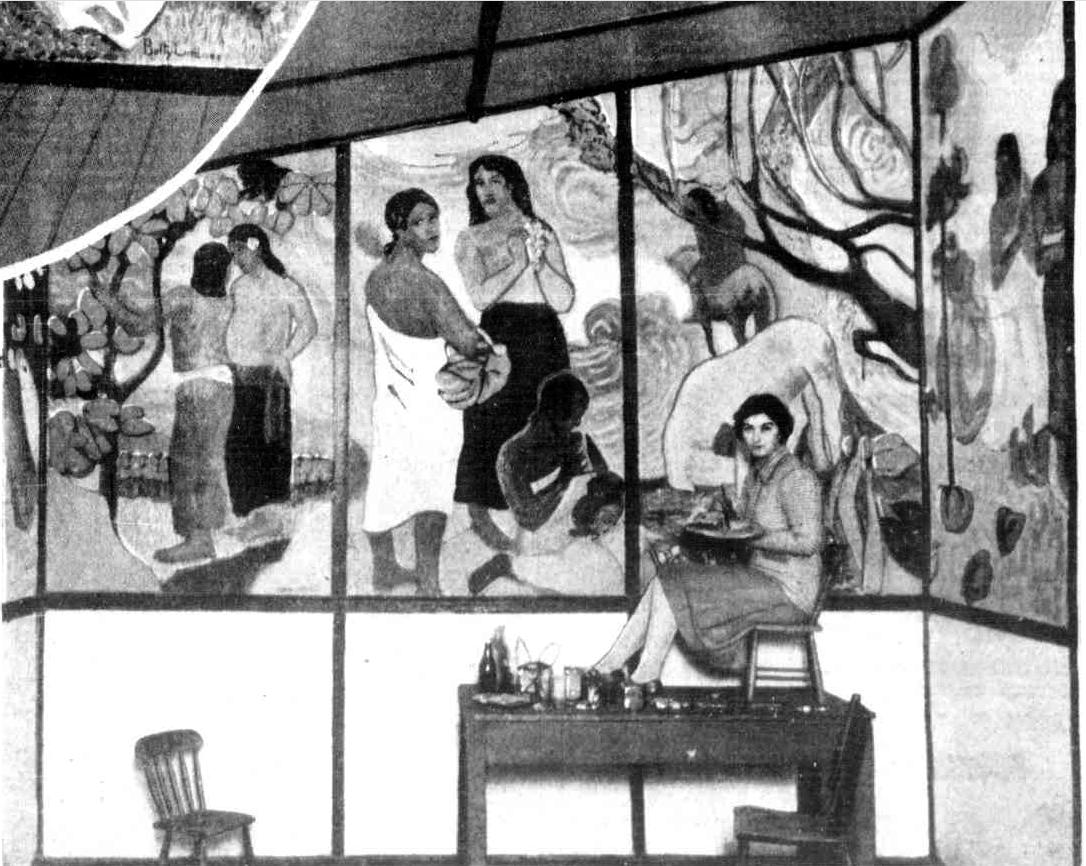
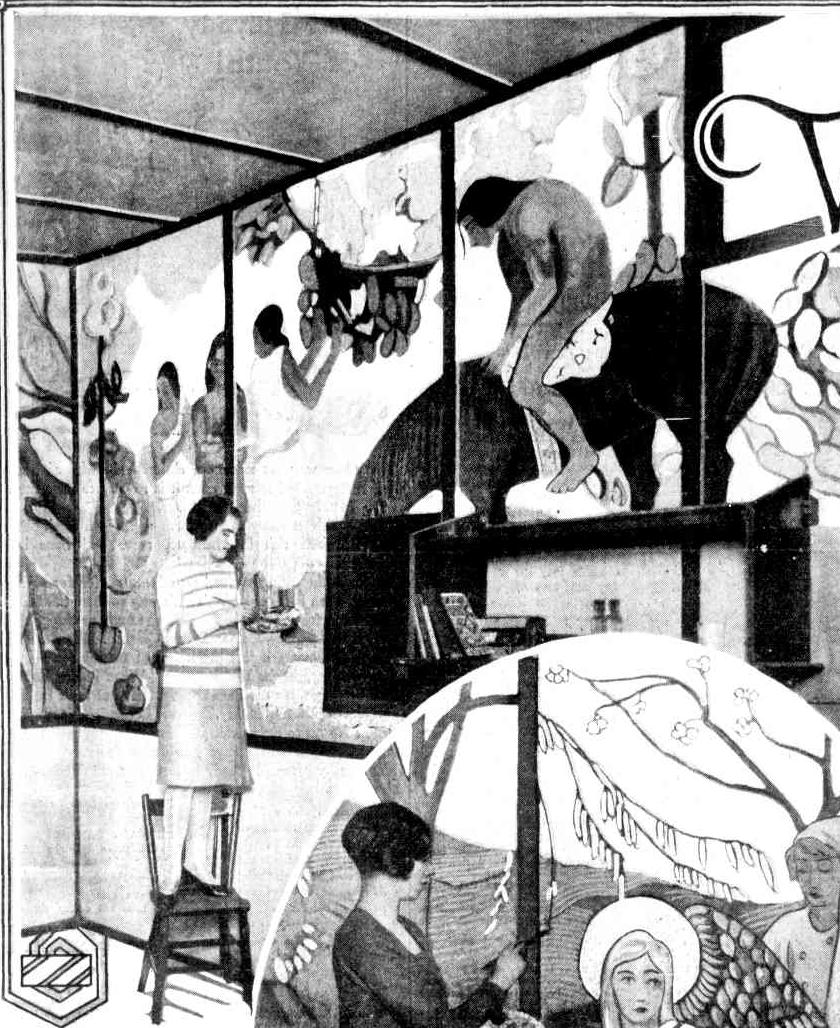
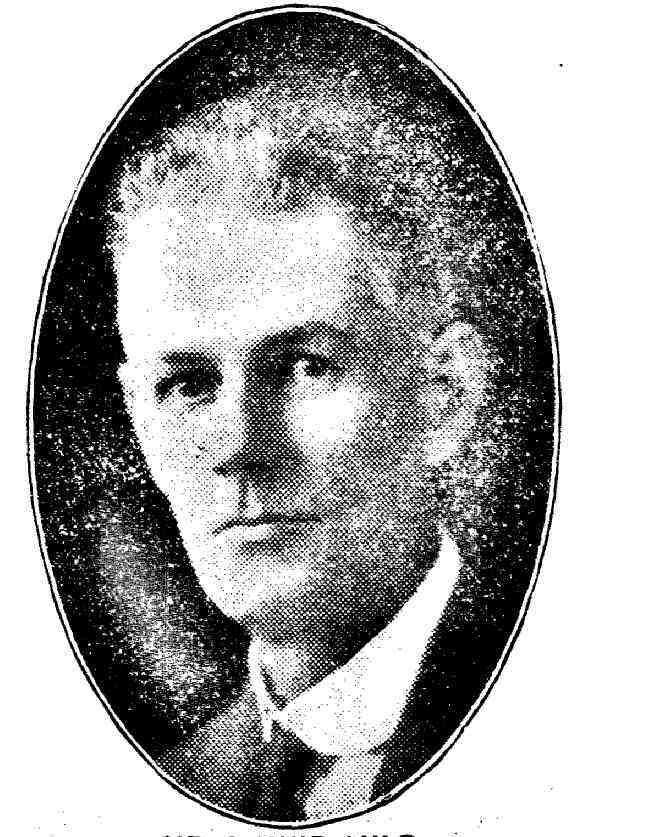
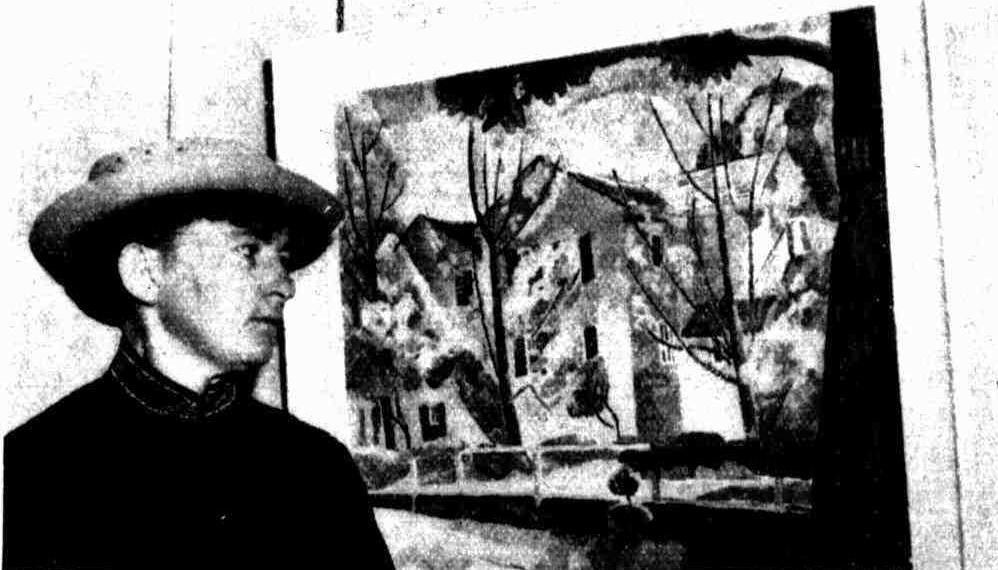
 A spirit of adventure and plenty of enterprise have enabled a 26-year-old Sydney sculpture student to solve housing and studio problems by leasing a lighthouse-keepers' abandoned cottage for 5/- a week. The student is Bruen Finey, son of well-known artist George Finey. The house is a six-roomed cottage at Barrenjoey, Palm Beach, N.S.W. For years it has been ravaged by rats during the week and vandals at week-ends.
A spirit of adventure and plenty of enterprise have enabled a 26-year-old Sydney sculpture student to solve housing and studio problems by leasing a lighthouse-keepers' abandoned cottage for 5/- a week. The student is Bruen Finey, son of well-known artist George Finey. The house is a six-roomed cottage at Barrenjoey, Palm Beach, N.S.W. For years it has been ravaged by rats during the week and vandals at week-ends. WADING waist-deep into the water, boys bring ashore two launches laden with materials for repairs. Old jetty was once busy scene when Broken Bay was port.
WADING waist-deep into the water, boys bring ashore two launches laden with materials for repairs. Old jetty was once busy scene when Broken Bay was port. Picture left: HOMEMADE FURNITURE in the kitchen is the work of Bruen. Although primitive, it is solid. Defaced walls are typical of the vandalism in the old house, but the boys are confident that they will restore it in time. Each will have a room to himself.
Picture left: HOMEMADE FURNITURE in the kitchen is the work of Bruen. Although primitive, it is solid. Defaced walls are typical of the vandalism in the old house, but the boys are confident that they will restore it in time. Each will have a room to himself. Picture right: WATER SUPPLY for No. 1 House, Barrenjoey, is a huge underground well in the courtyard. David Hain lowers one bucket, fills it, and then pours it into a second one.
Picture right: WATER SUPPLY for No. 1 House, Barrenjoey, is a huge underground well in the courtyard. David Hain lowers one bucket, fills it, and then pours it into a second one. Picture left: WELL-EARNED REST for David Hain, Bruen Finey, and John Giles after carrying materials from the beach to the house they are making livable. It had been stripped by vandals.
Picture left: WELL-EARNED REST for David Hain, Bruen Finey, and John Giles after carrying materials from the beach to the house they are making livable. It had been stripped by vandals.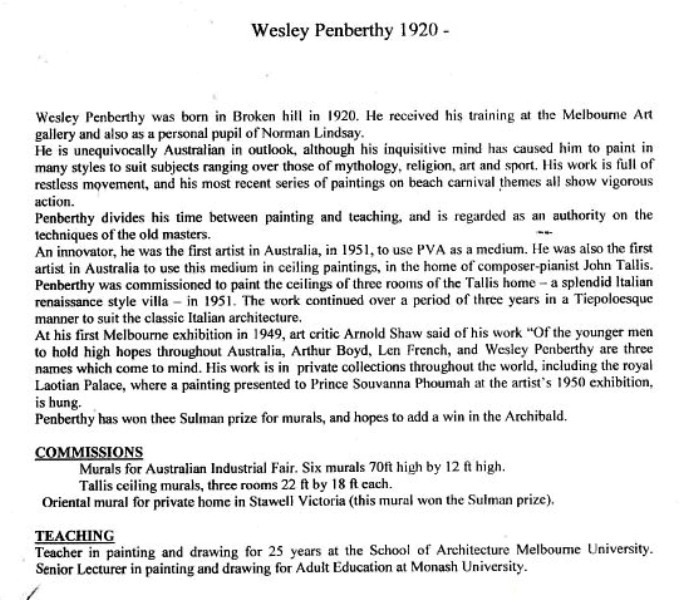
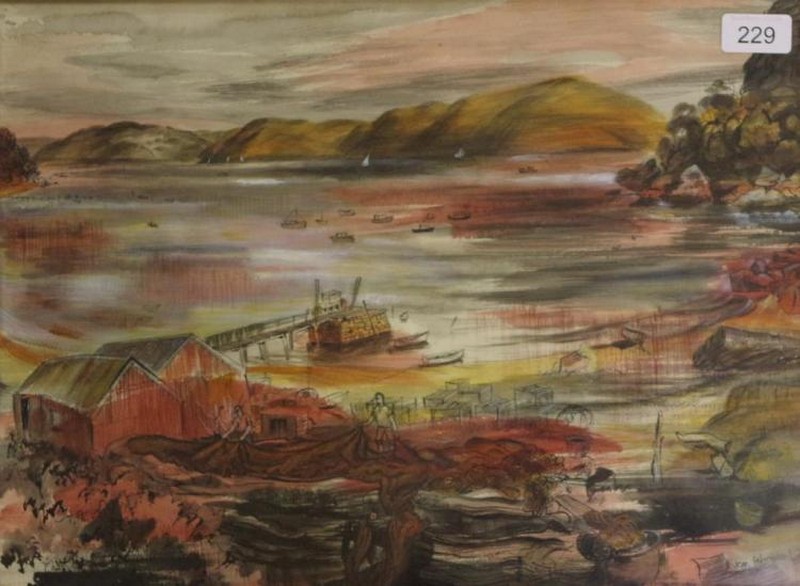
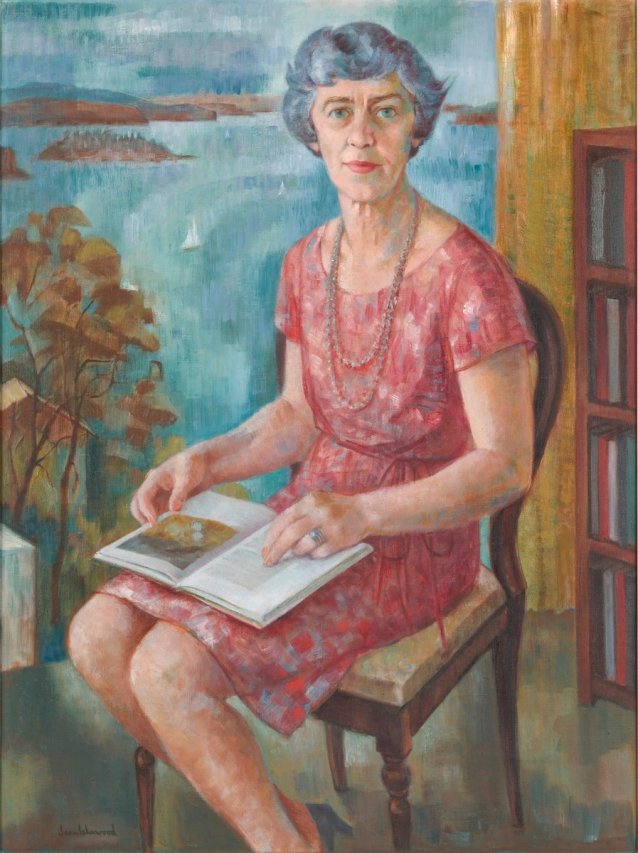

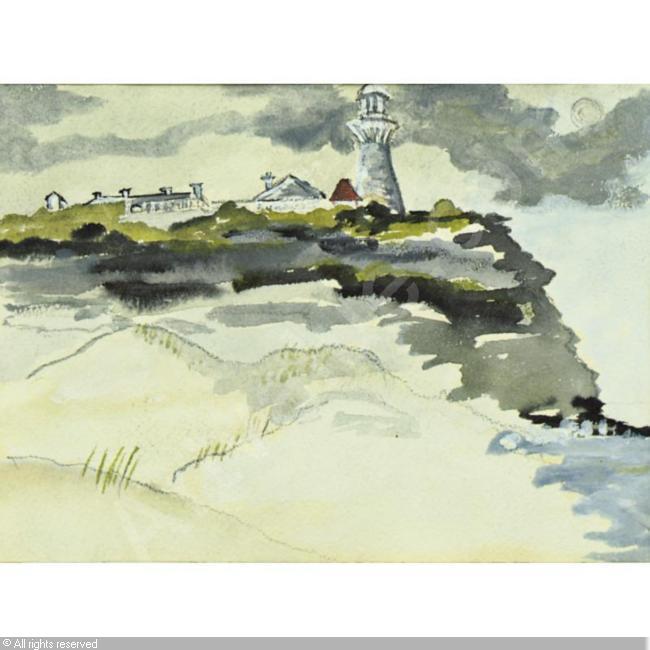
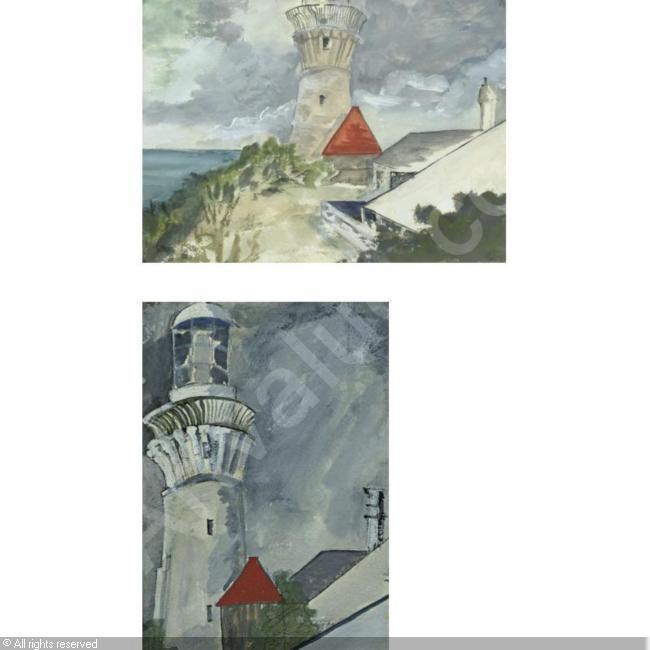


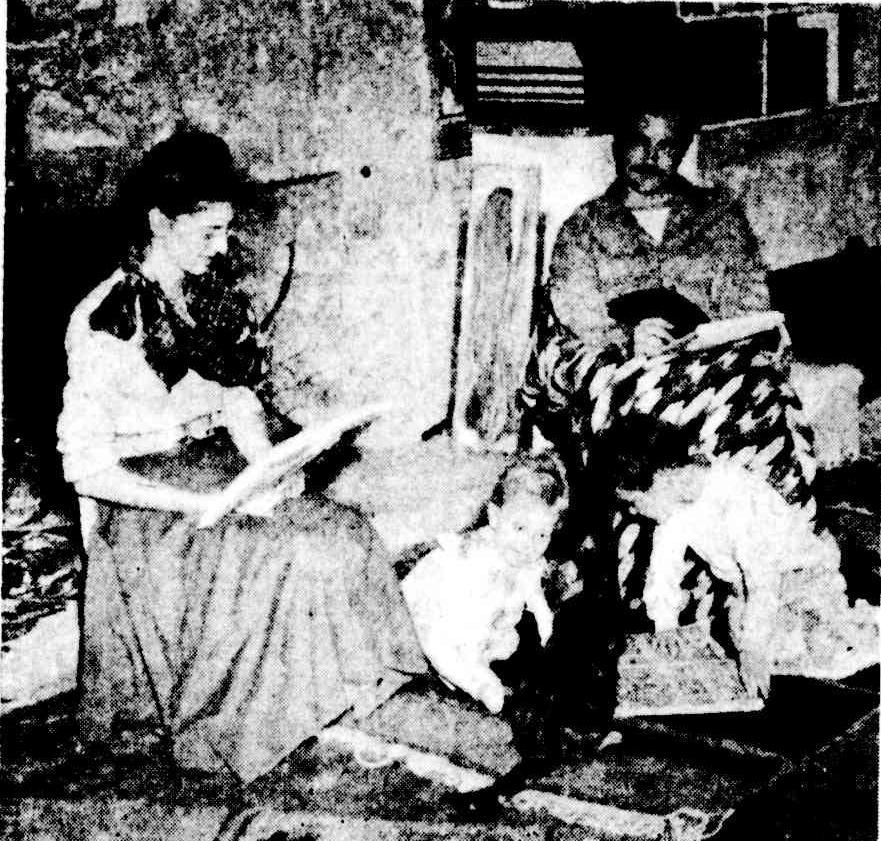
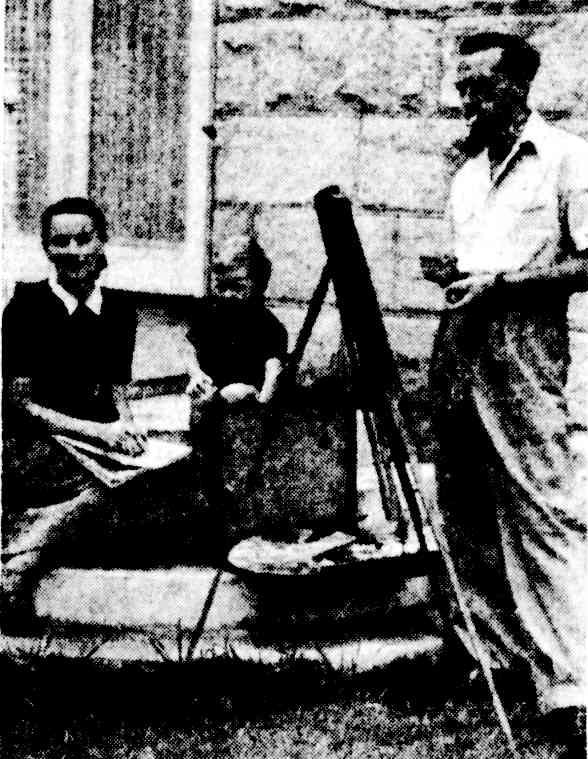

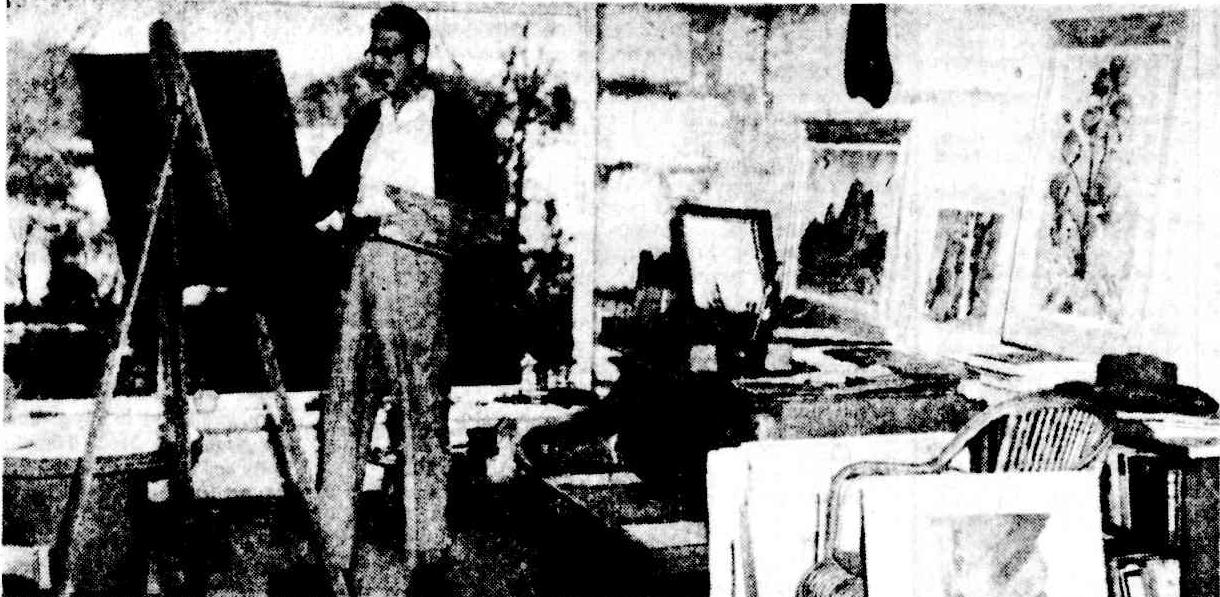
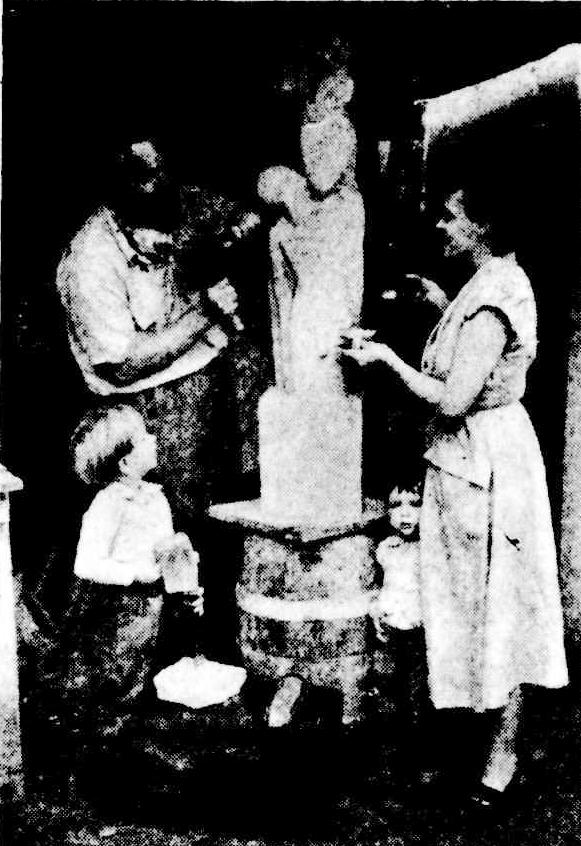
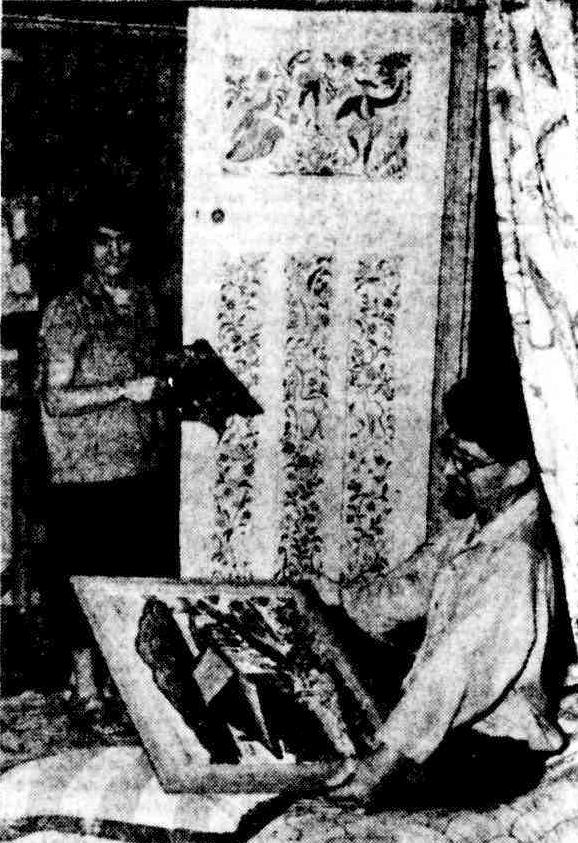
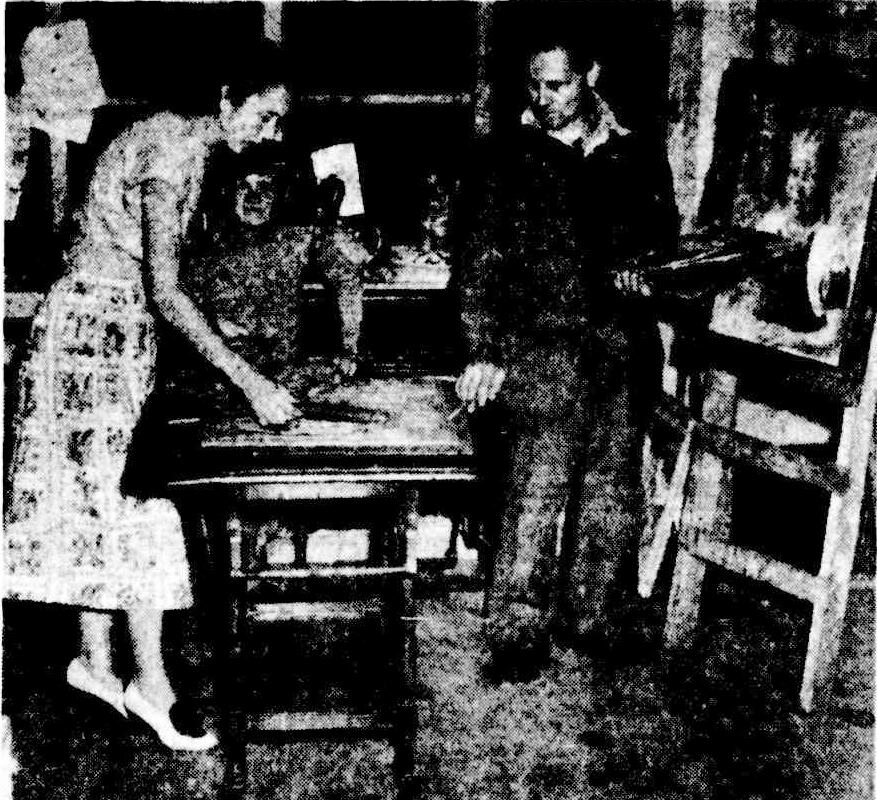
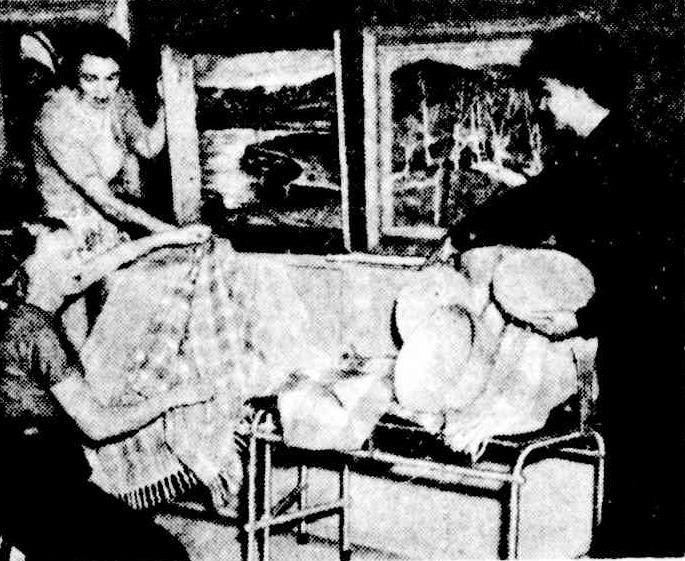
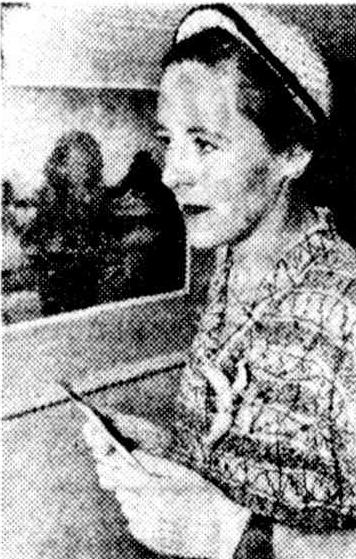
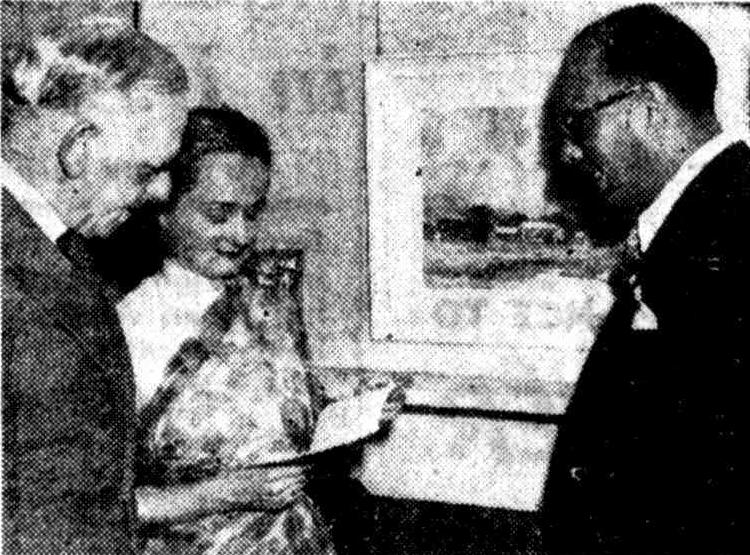
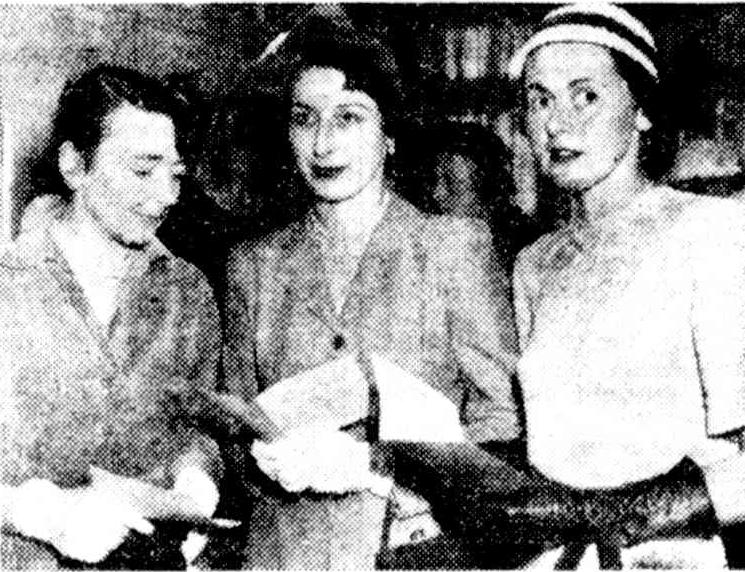

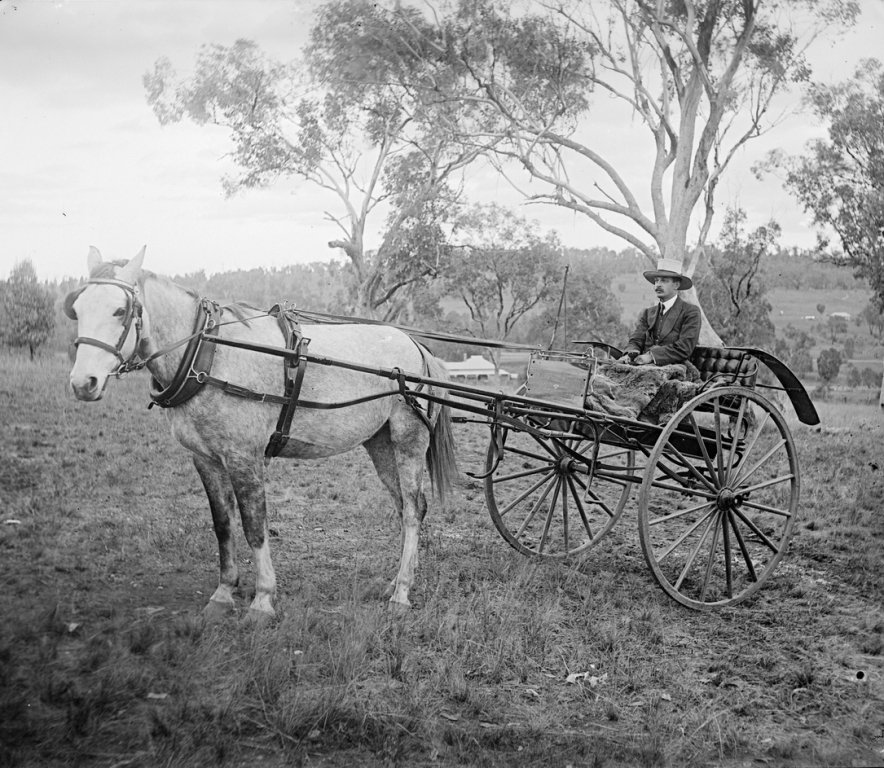
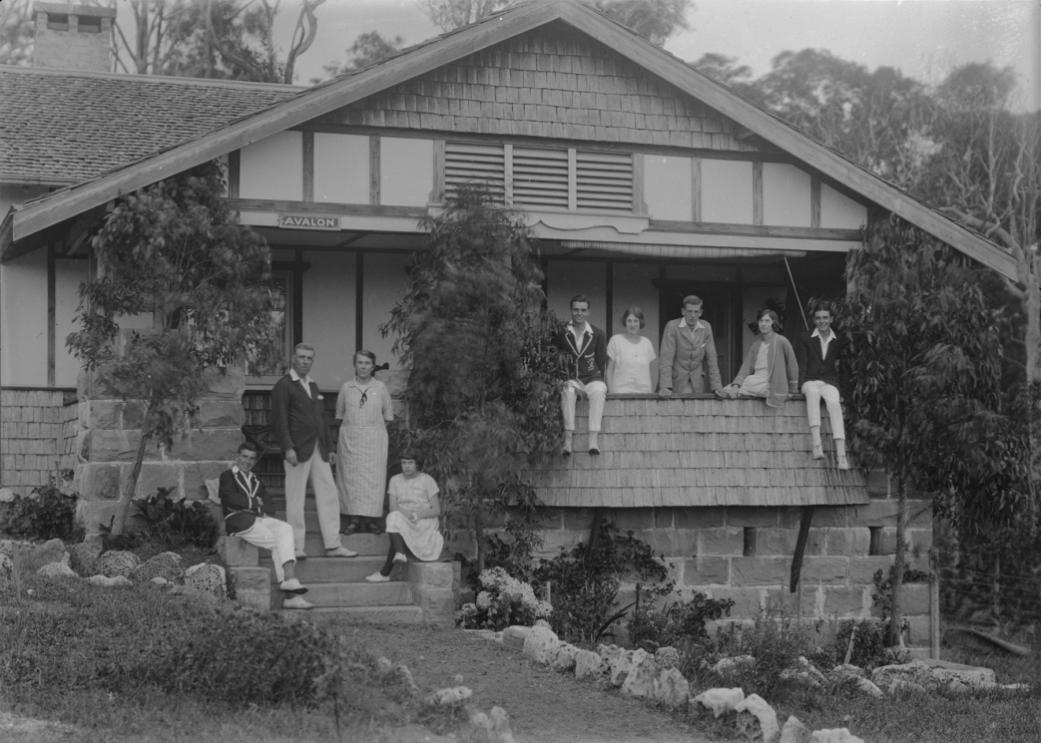
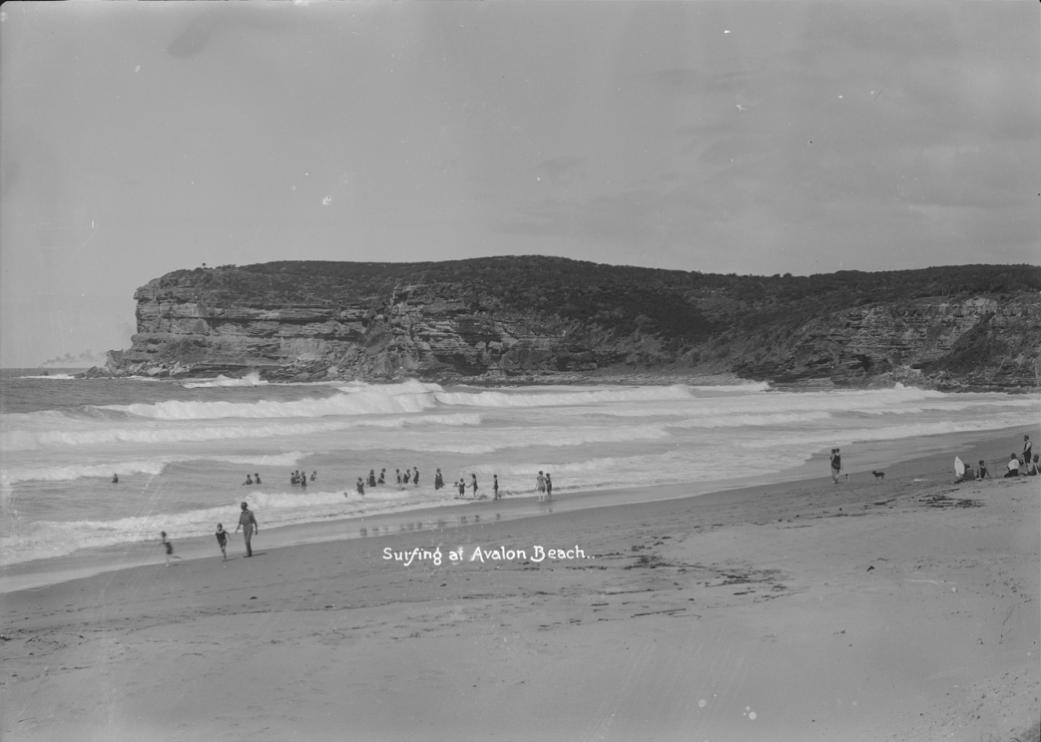
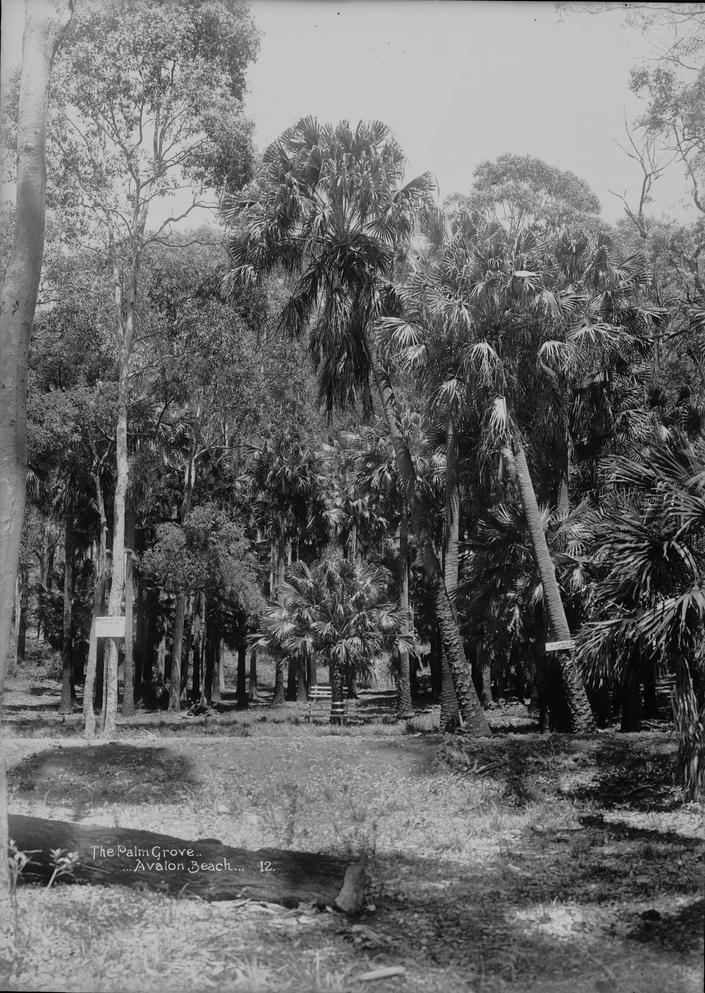
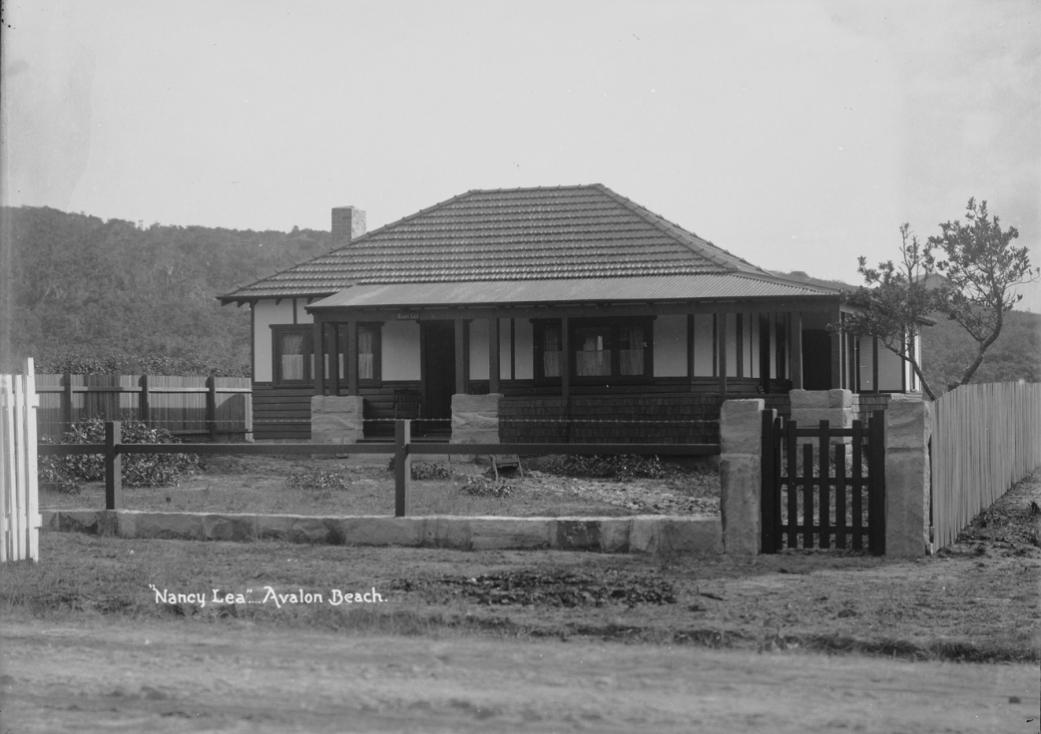
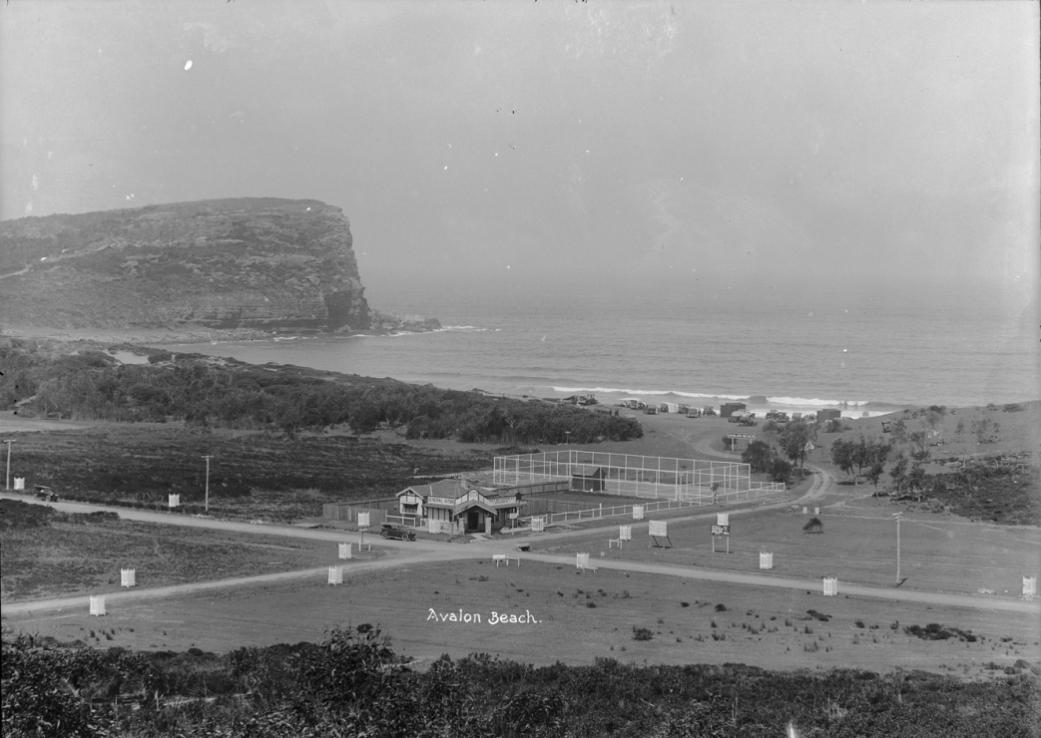
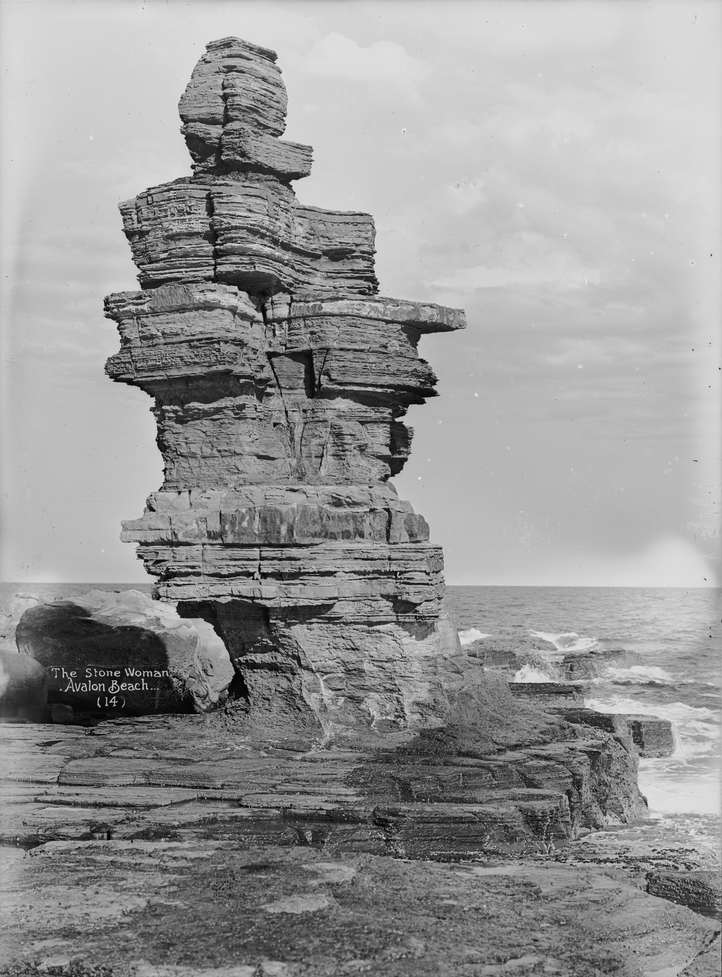
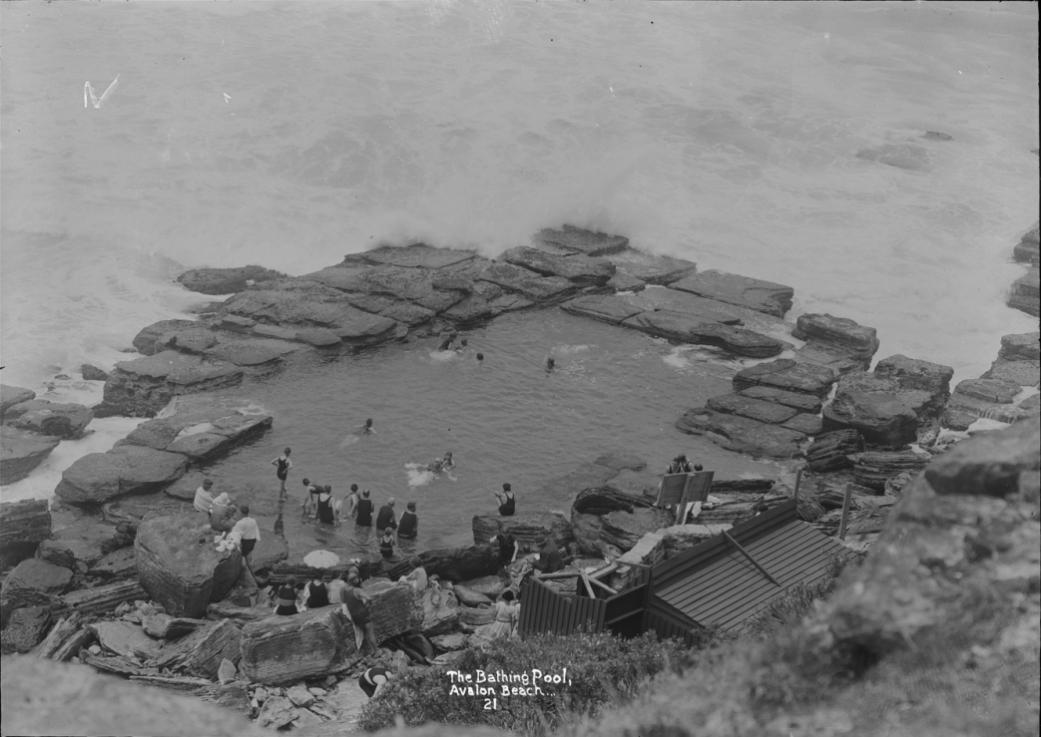
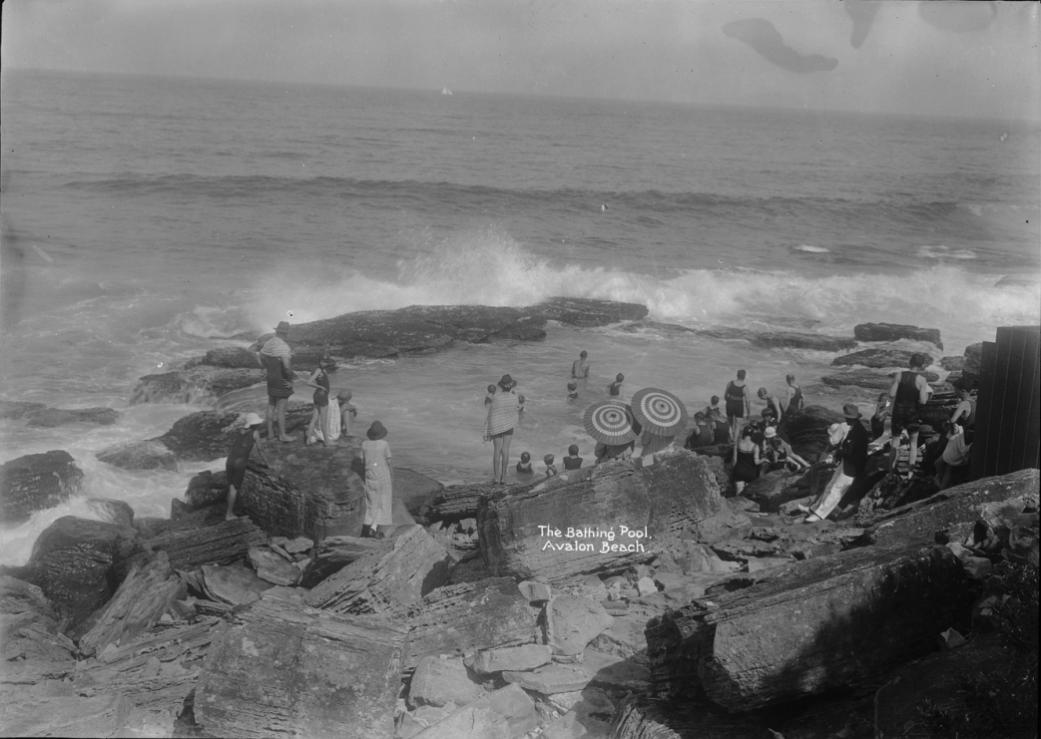
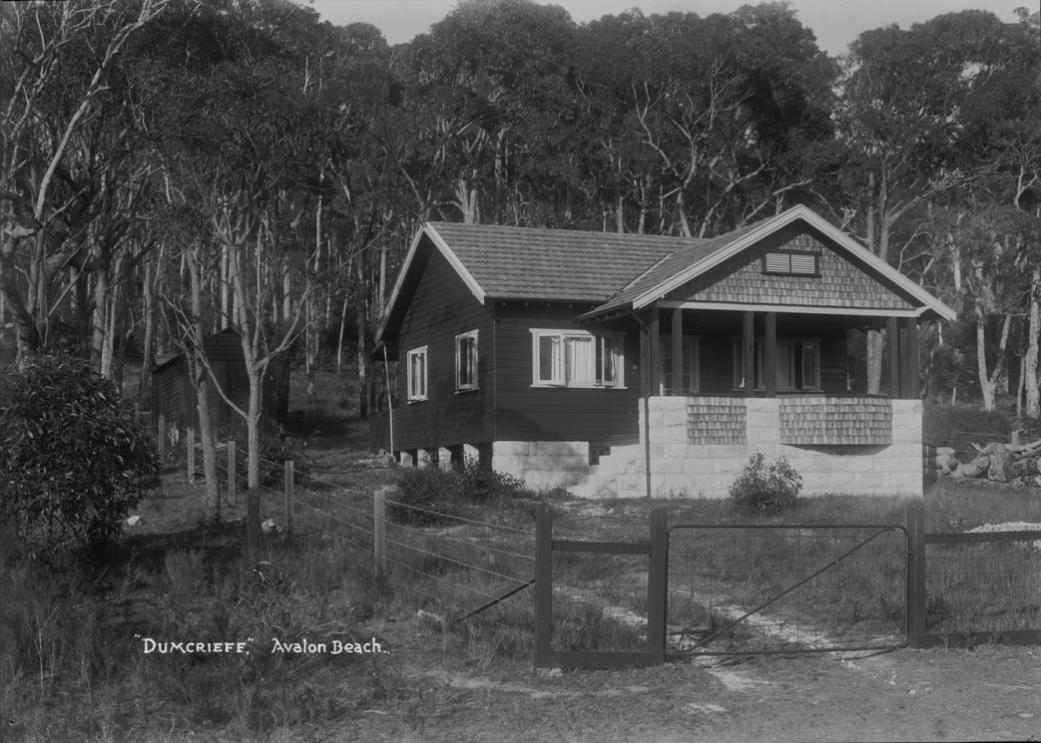
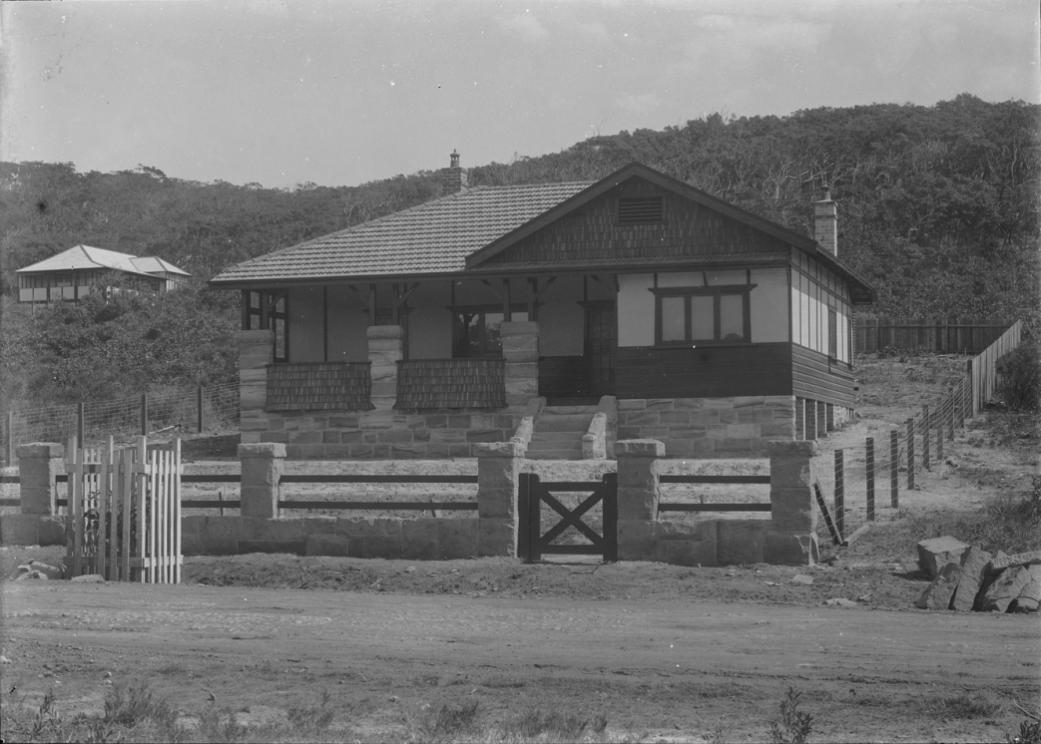
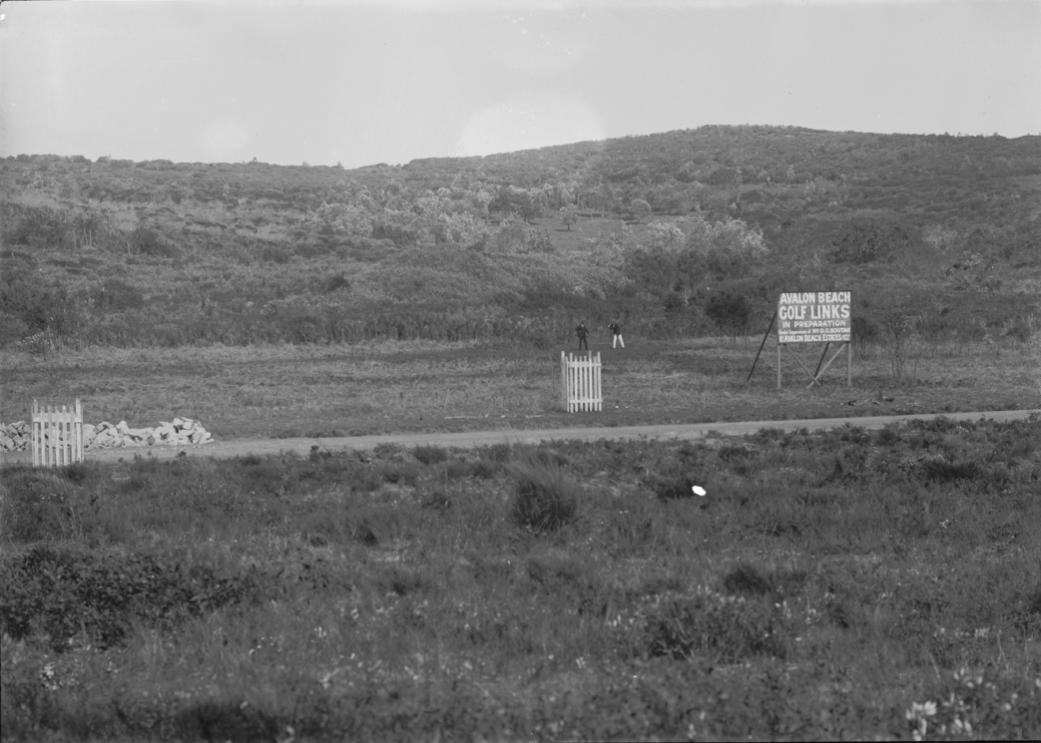
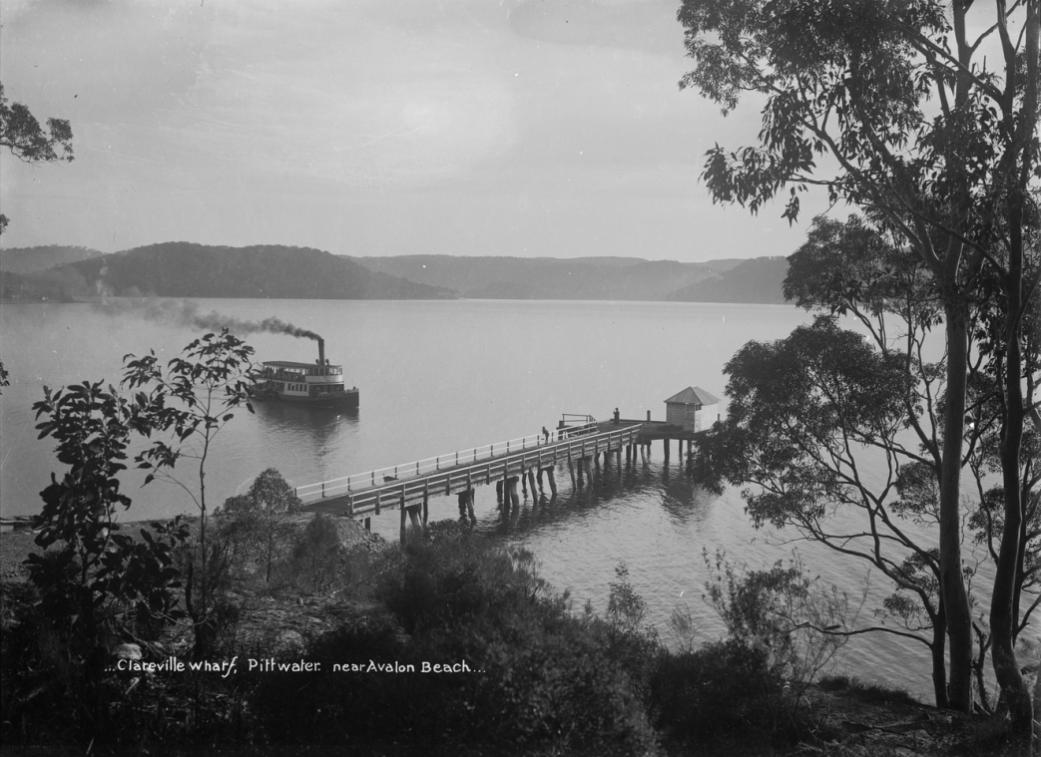
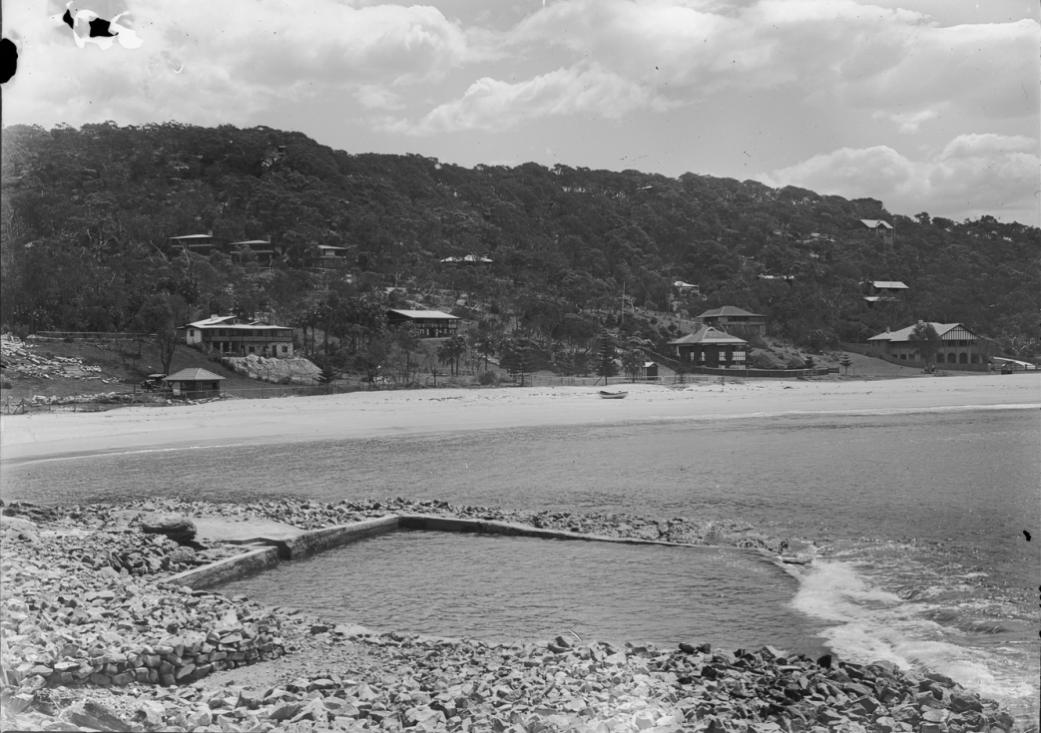
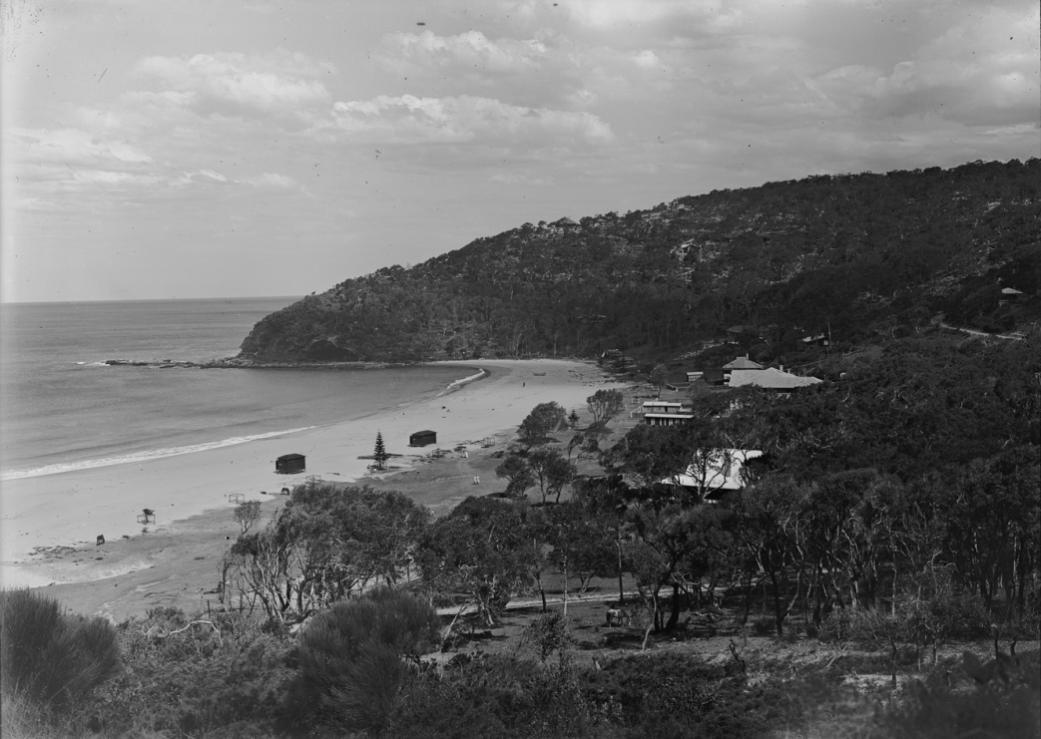
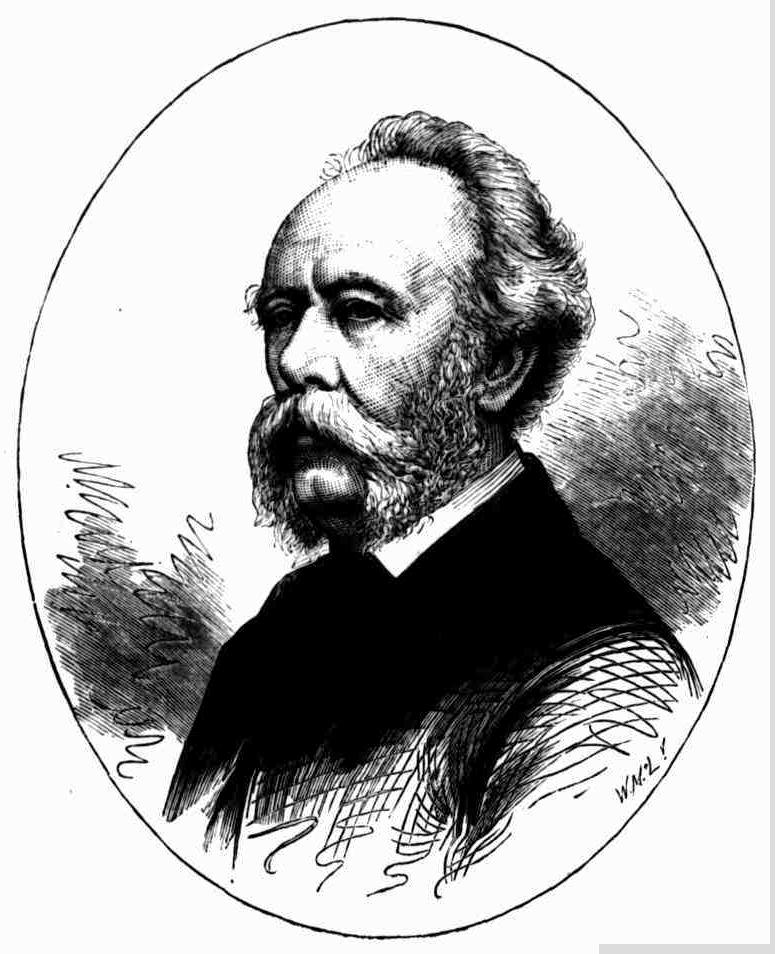
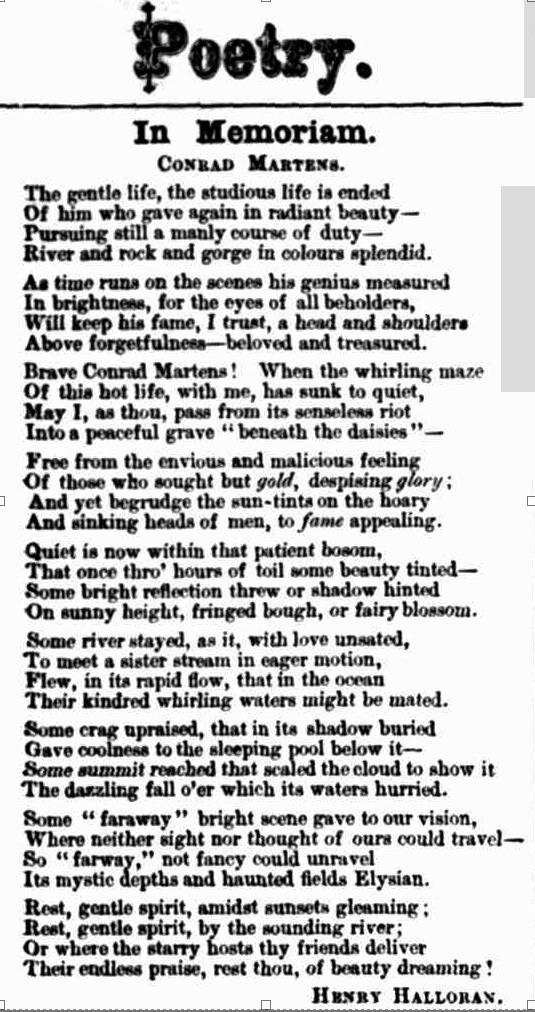
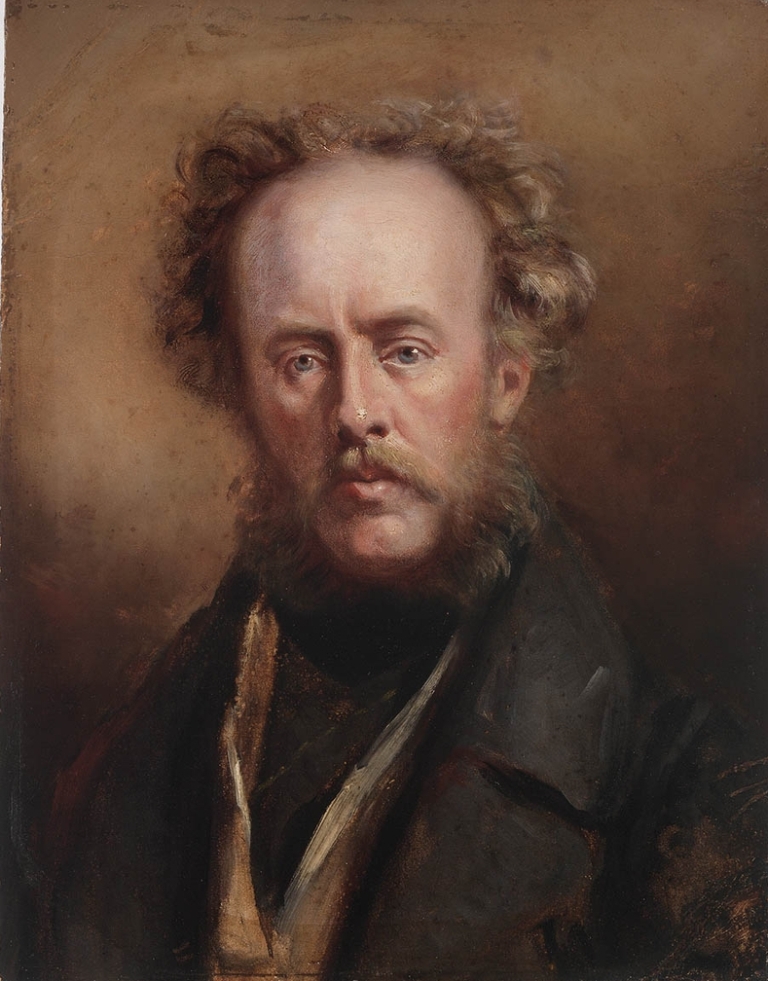
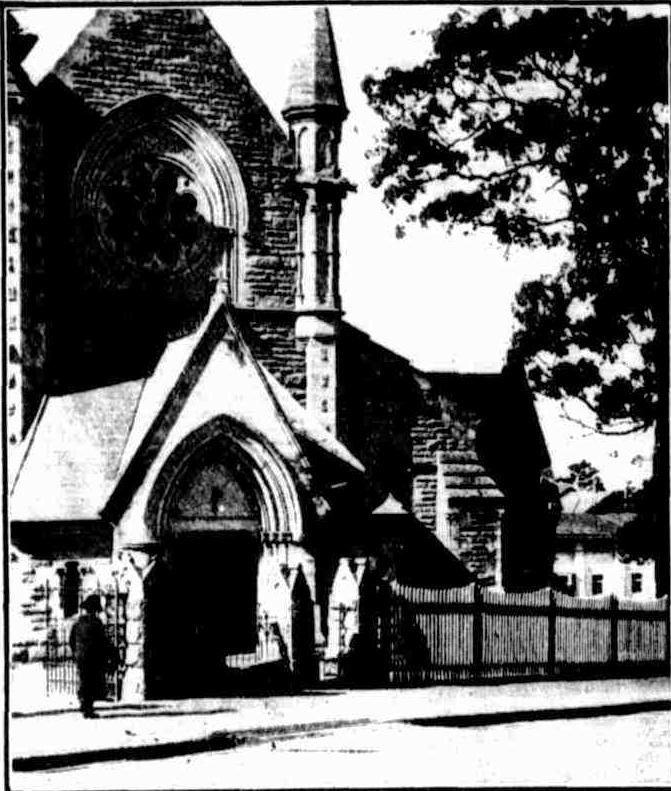
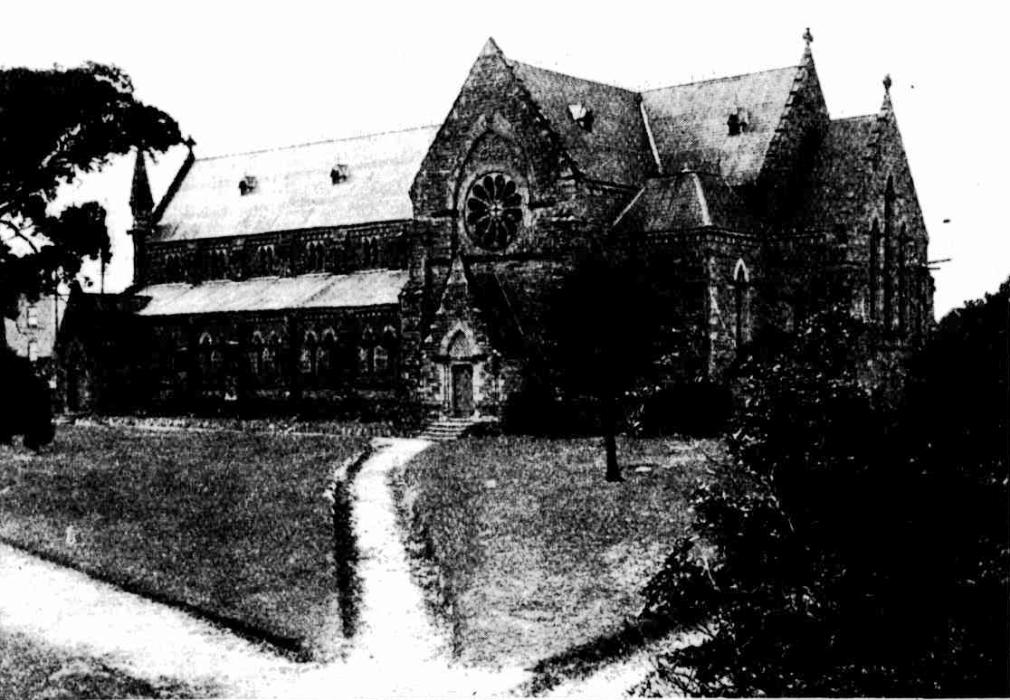
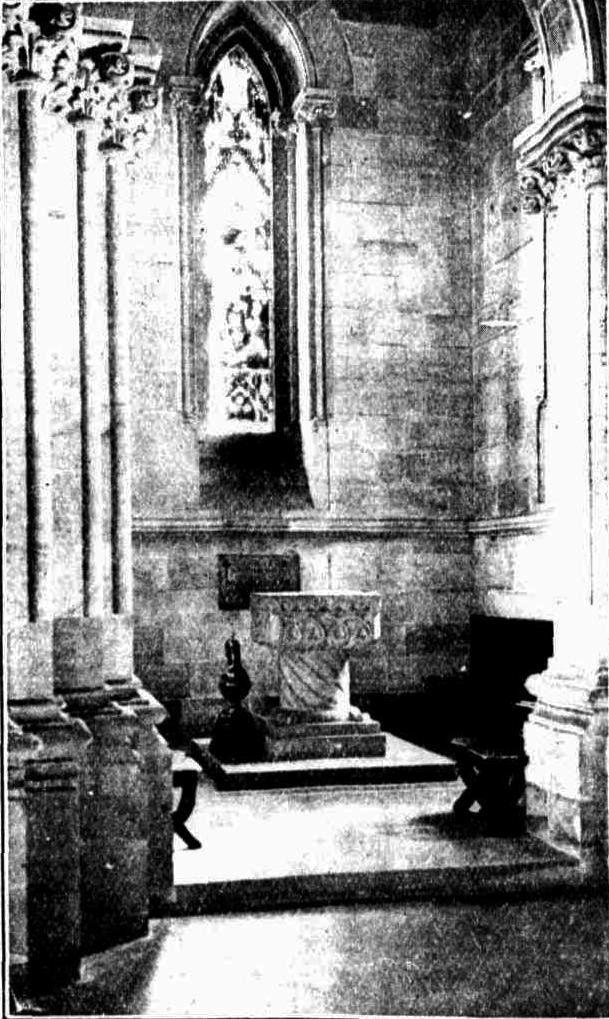
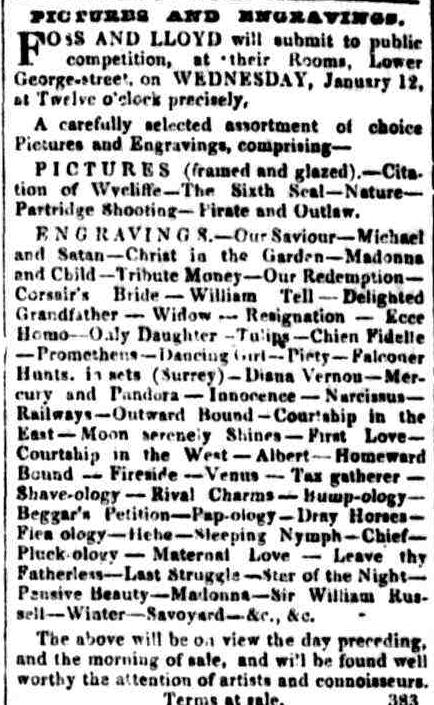
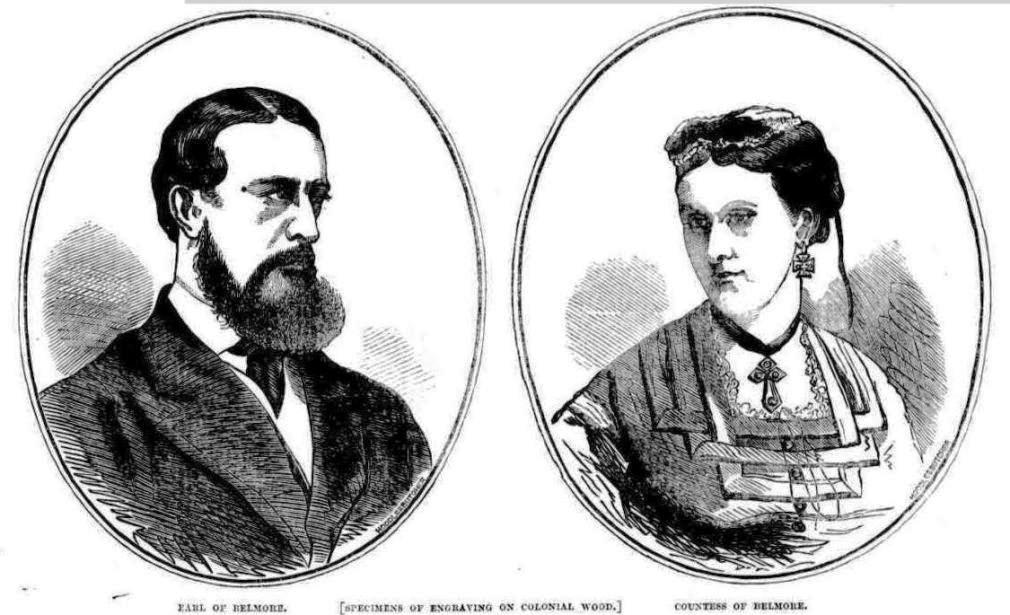
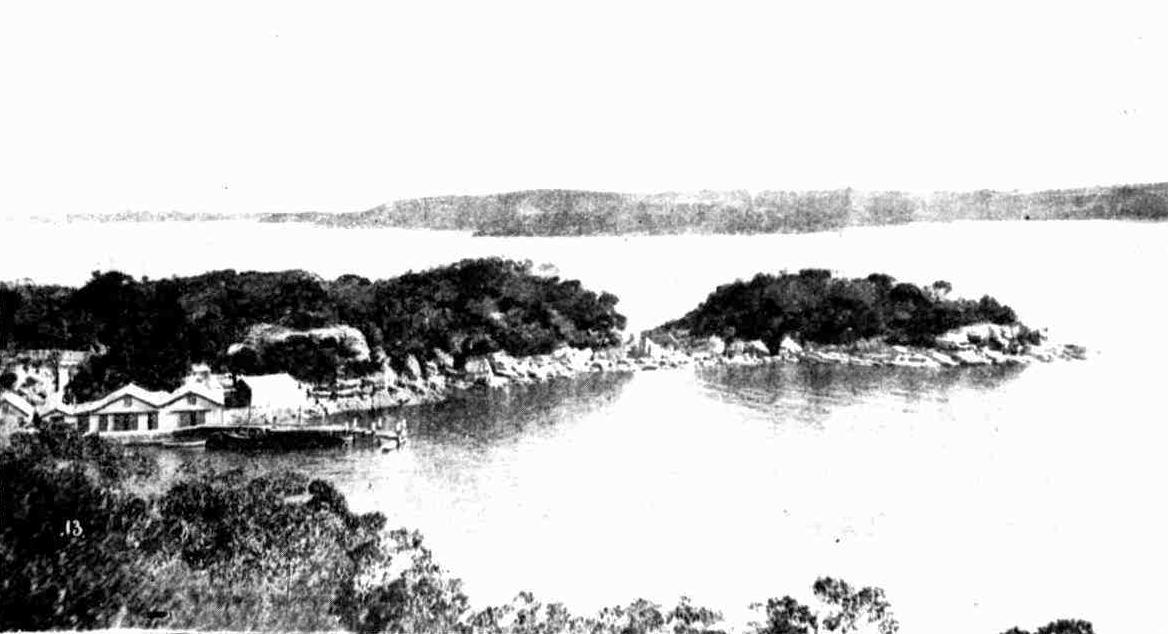
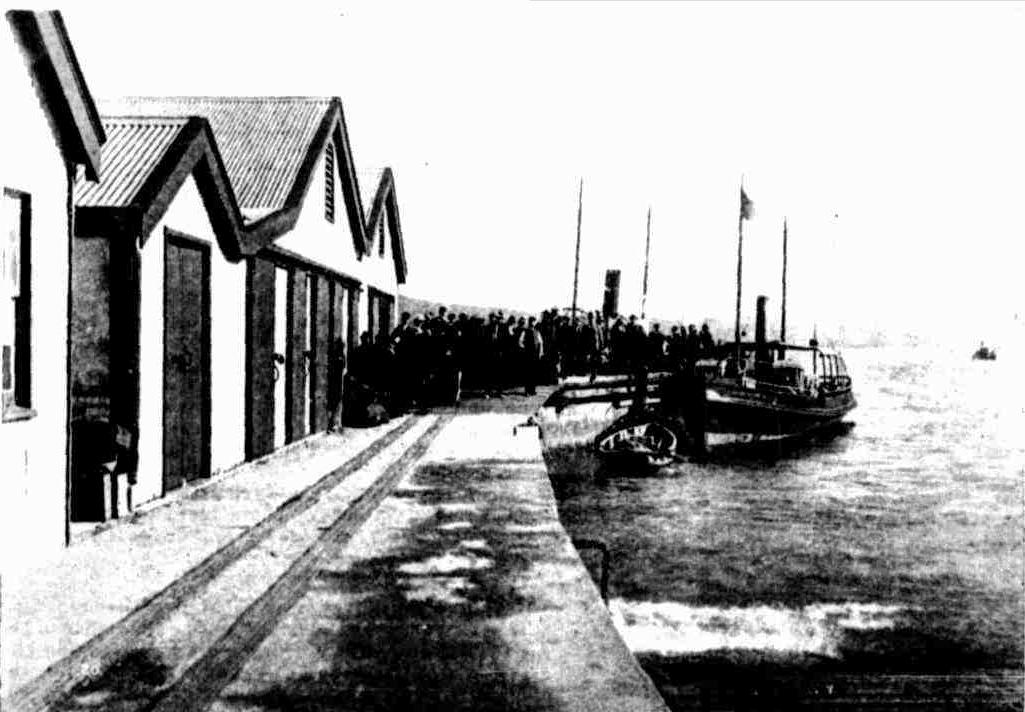
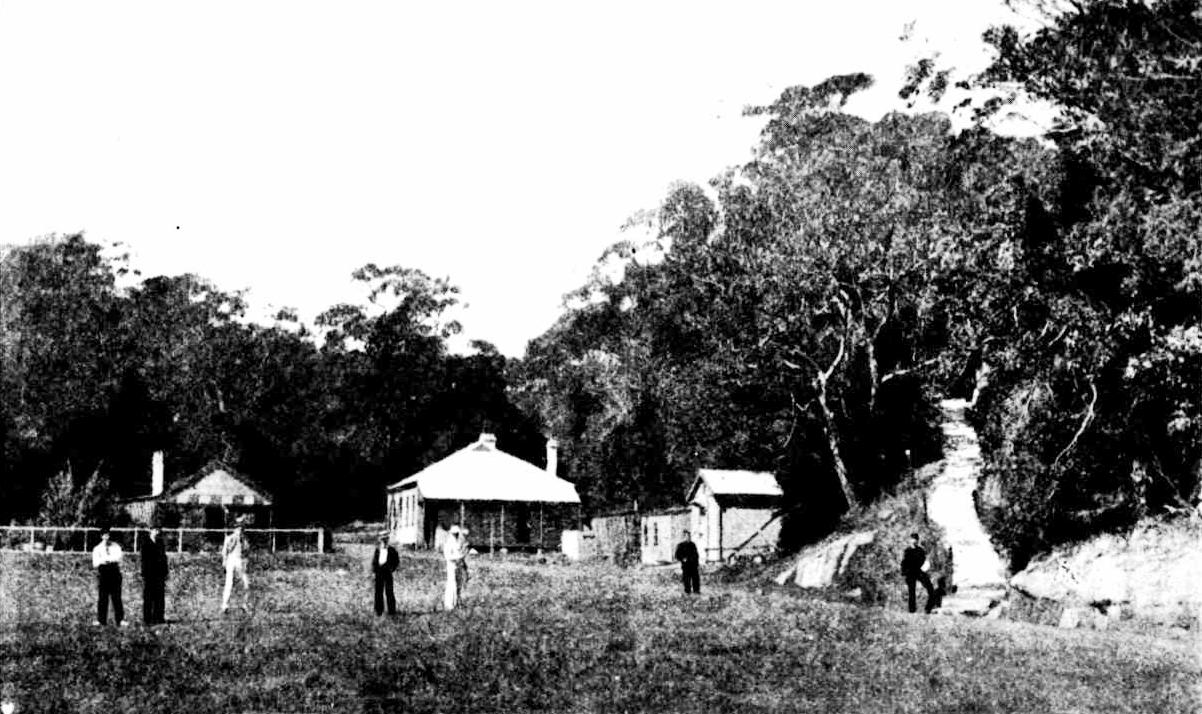
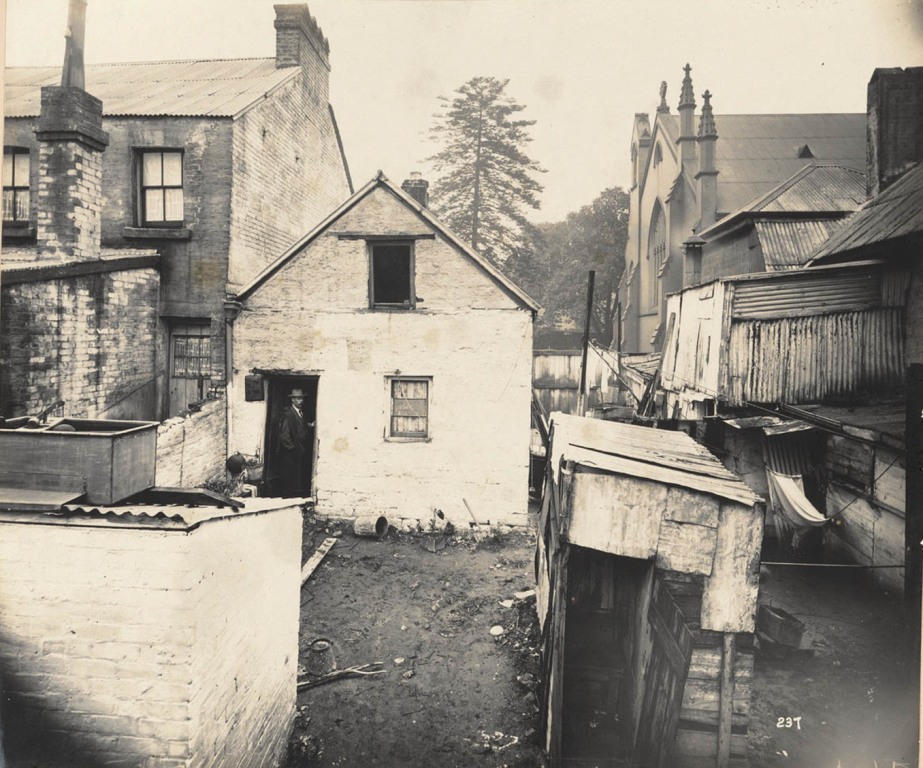
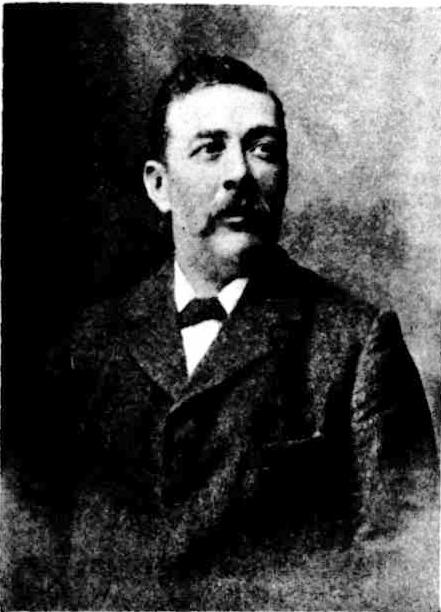
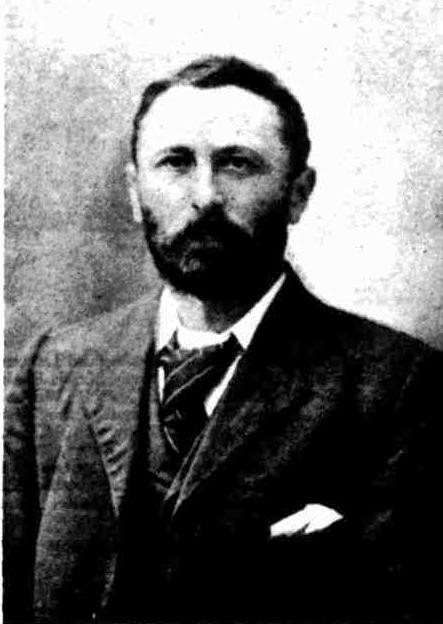
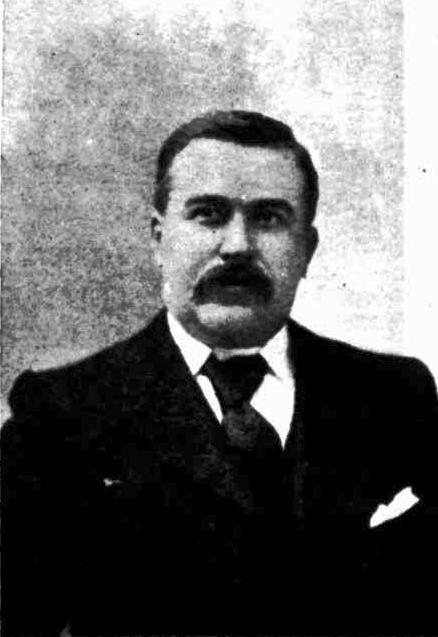
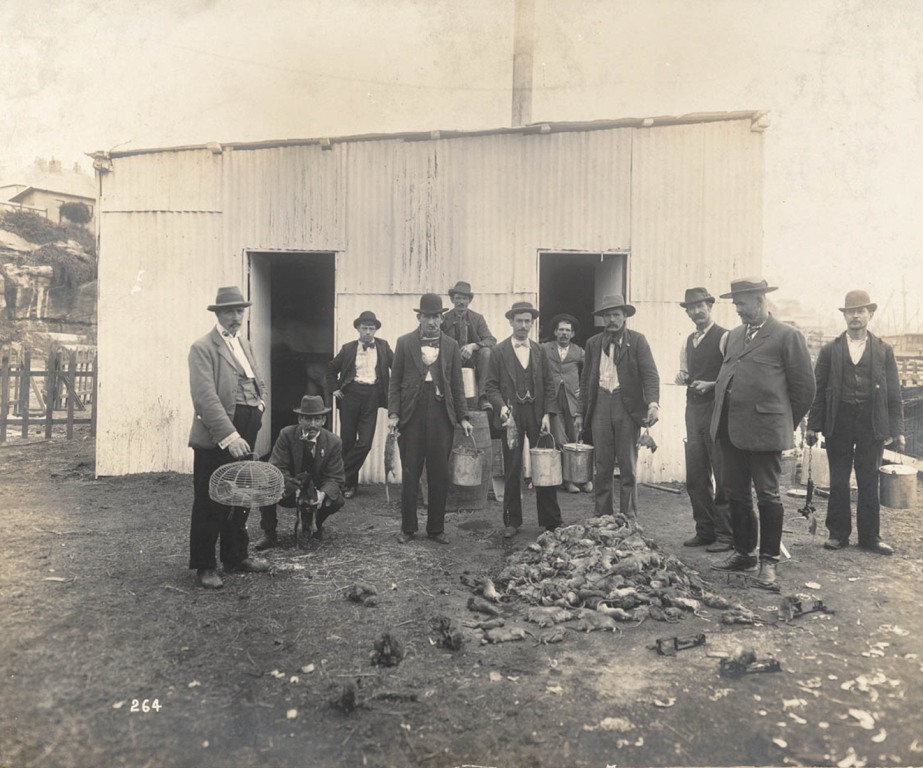
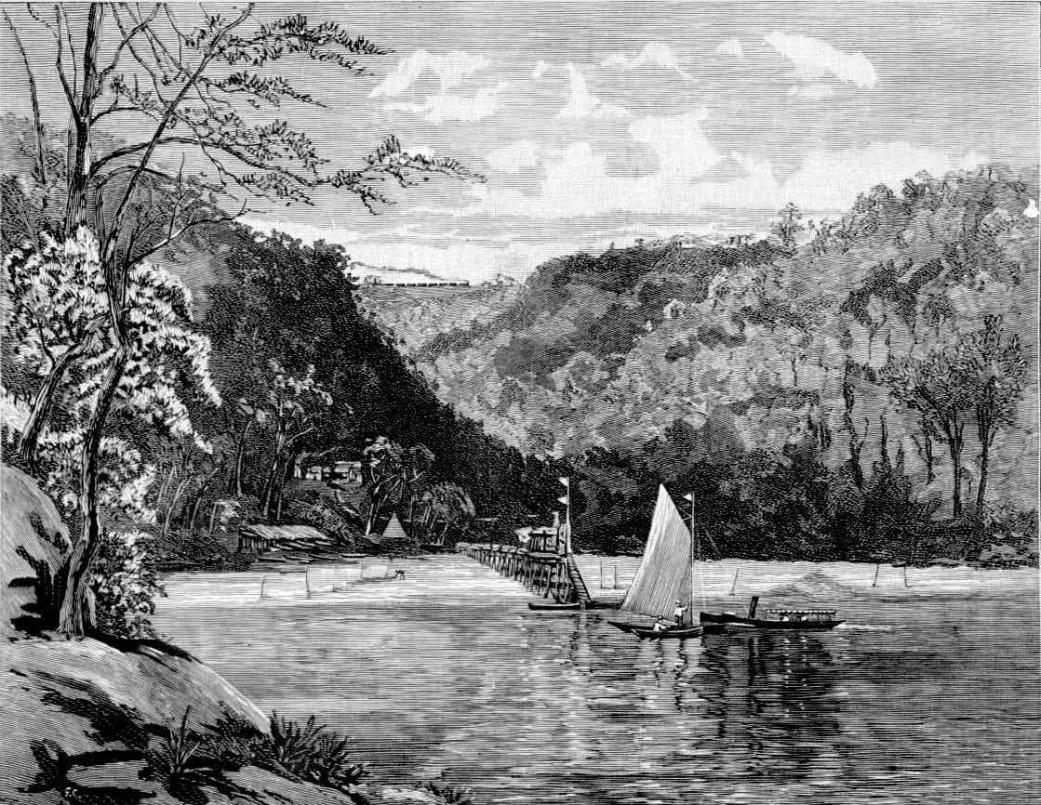
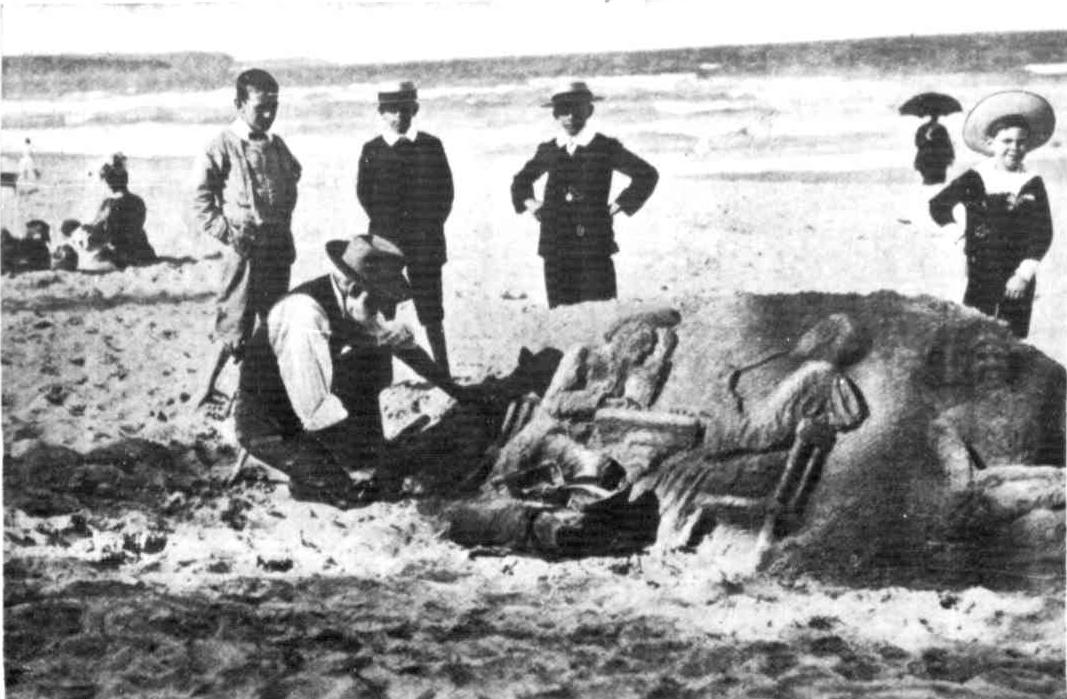
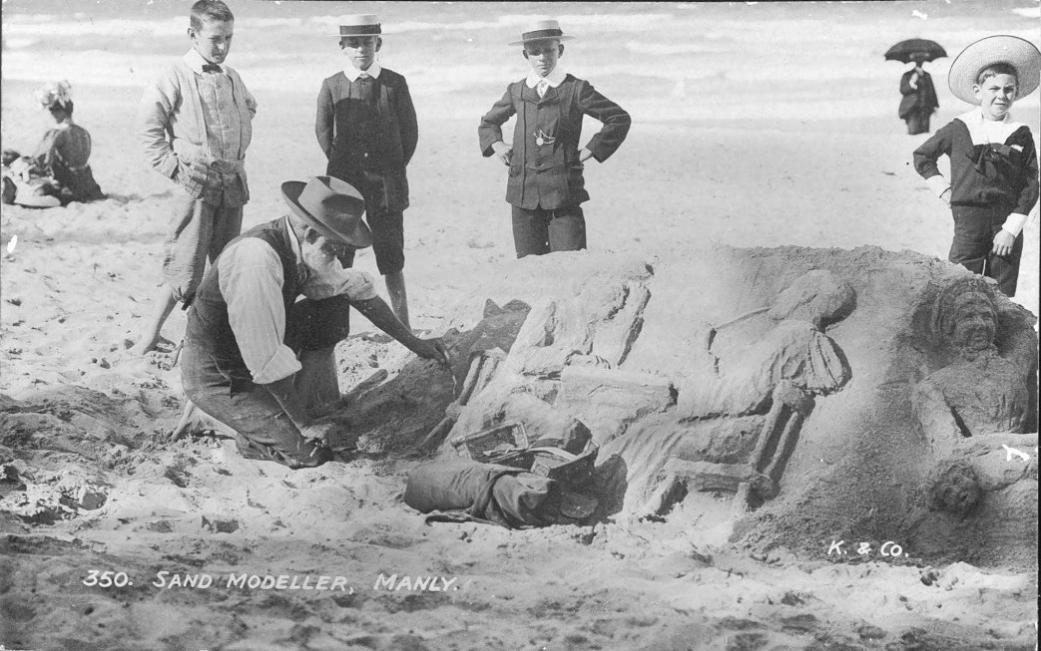
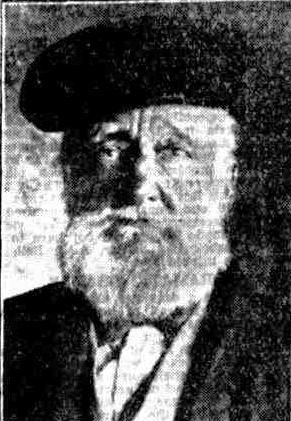 Hale and hearty, with all his faculties bright and alert. Is Captain Page, well known In Manly a few years back as a very clever sand modeller, who recently celebrated his 95th birthday
Hale and hearty, with all his faculties bright and alert. Is Captain Page, well known In Manly a few years back as a very clever sand modeller, who recently celebrated his 95th birthday